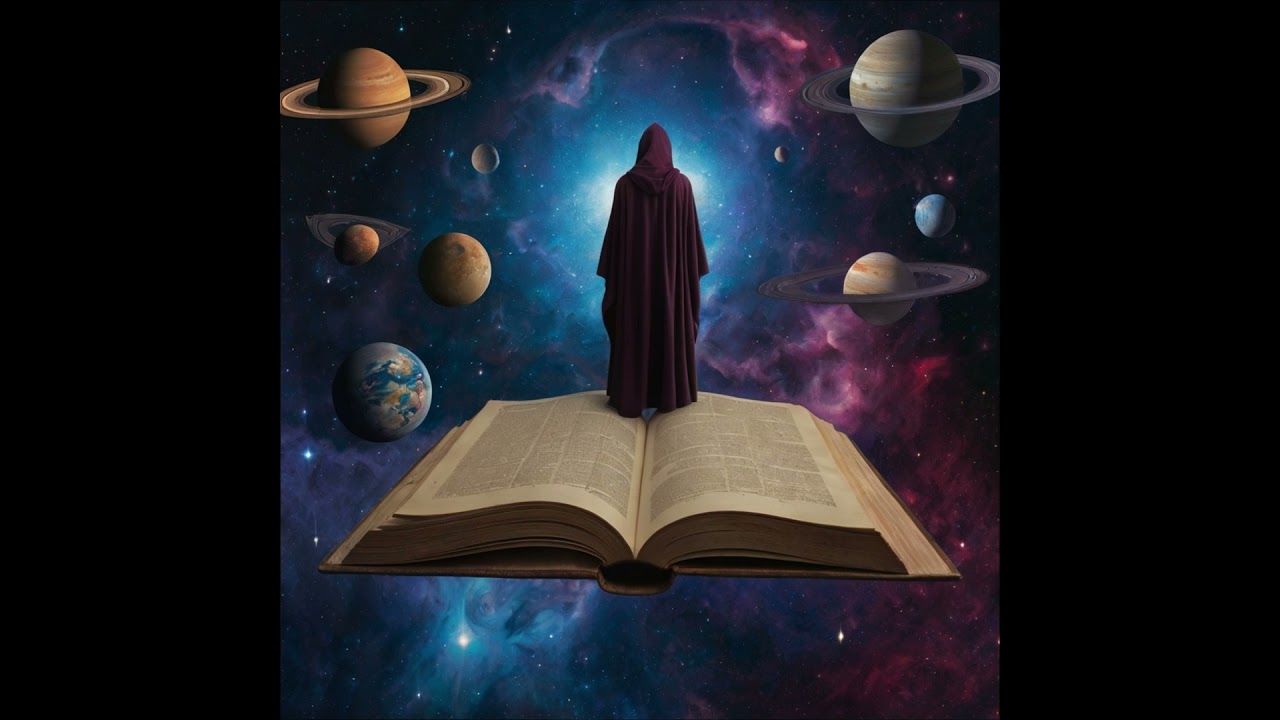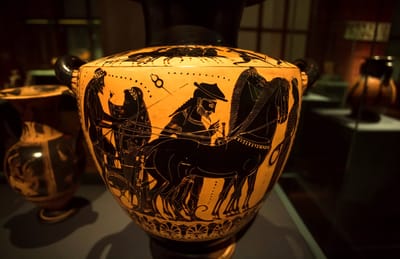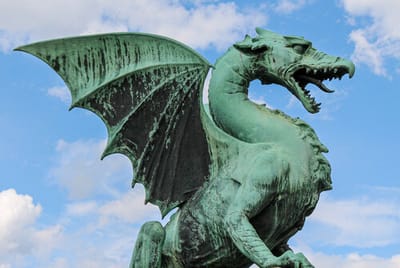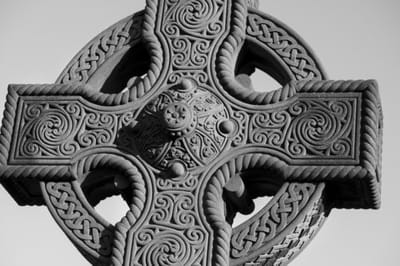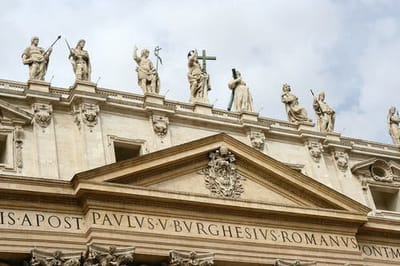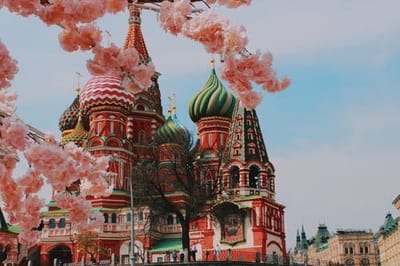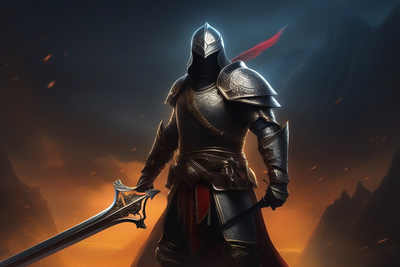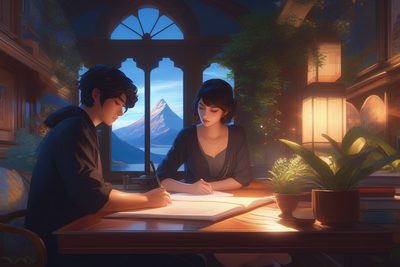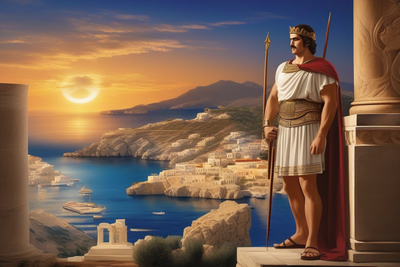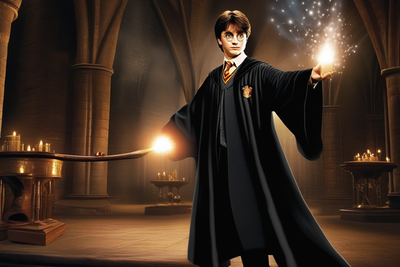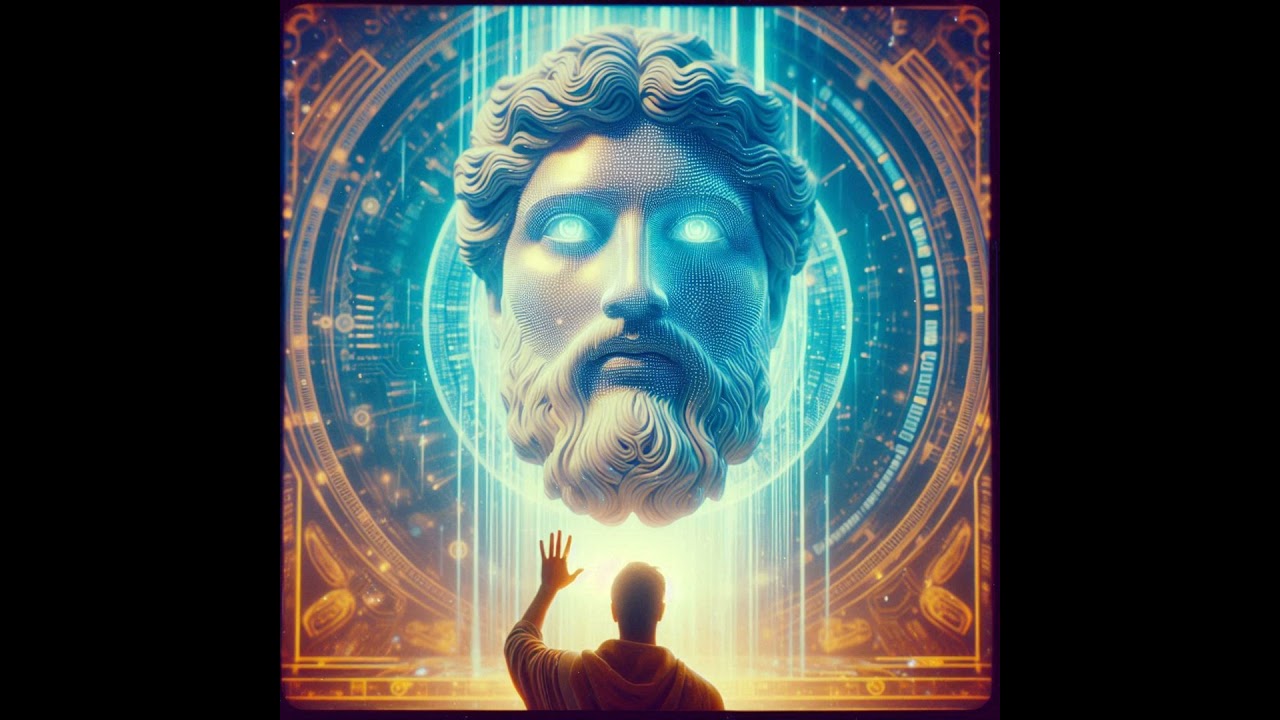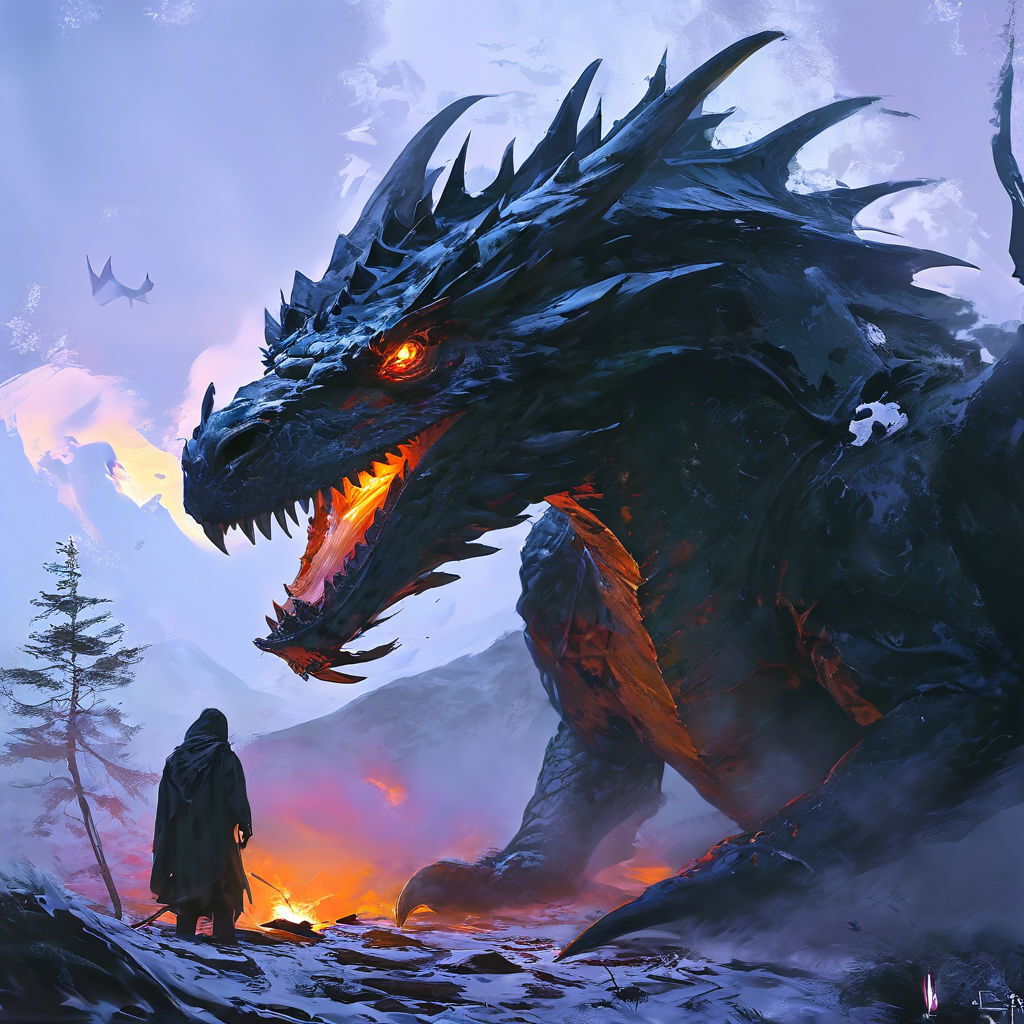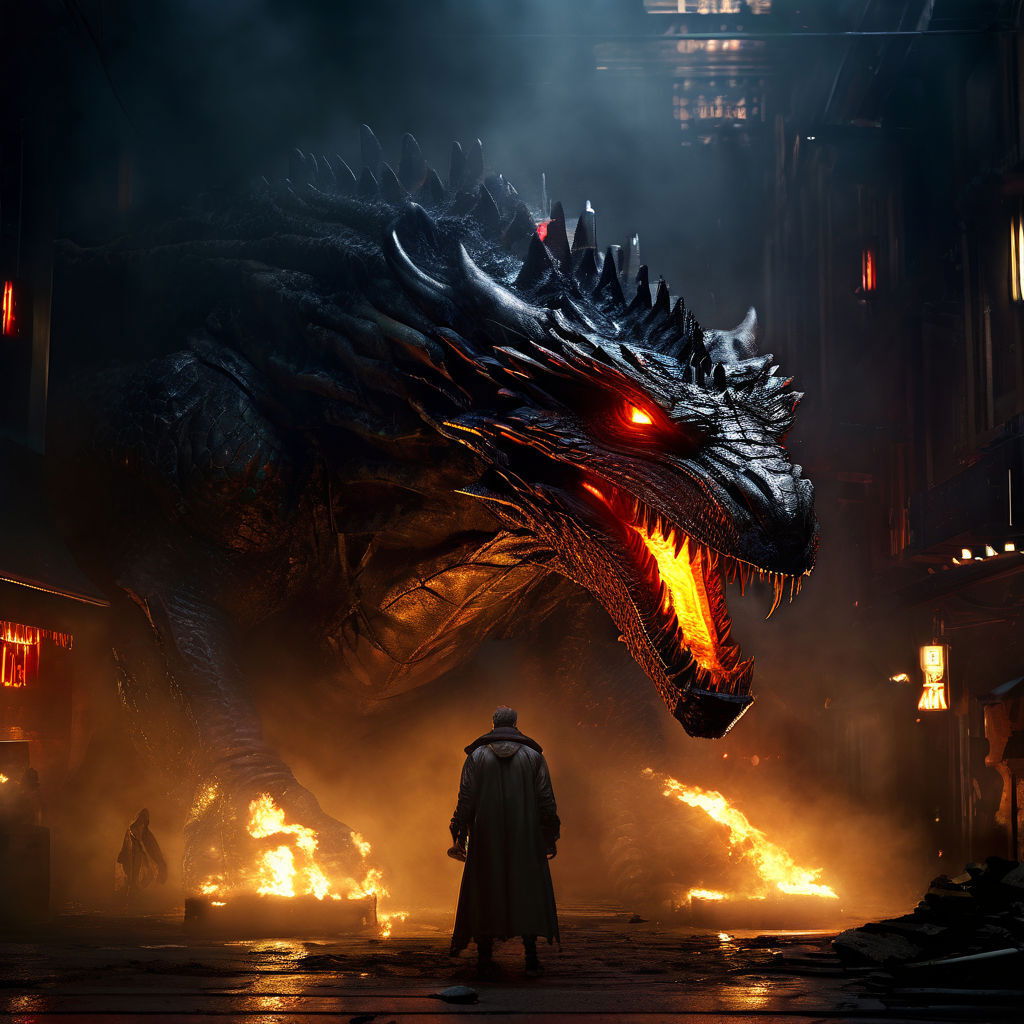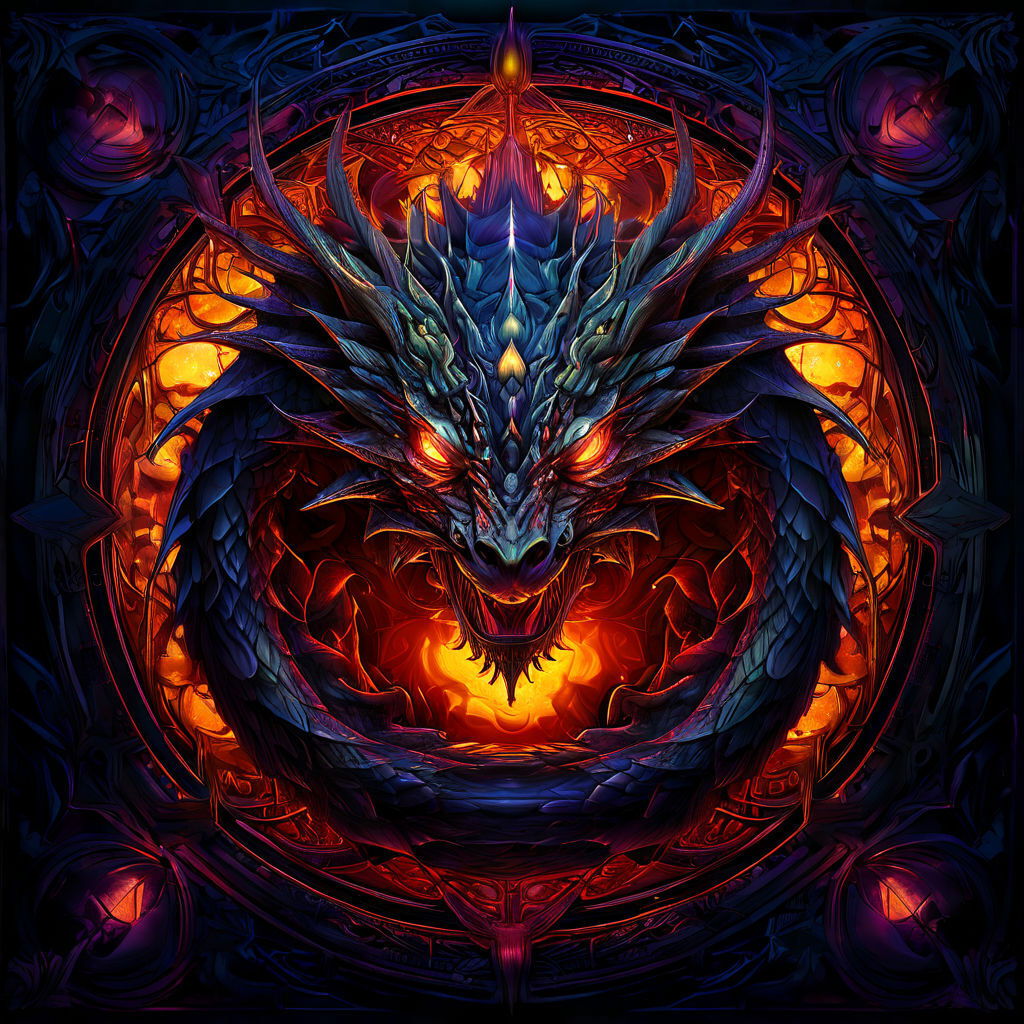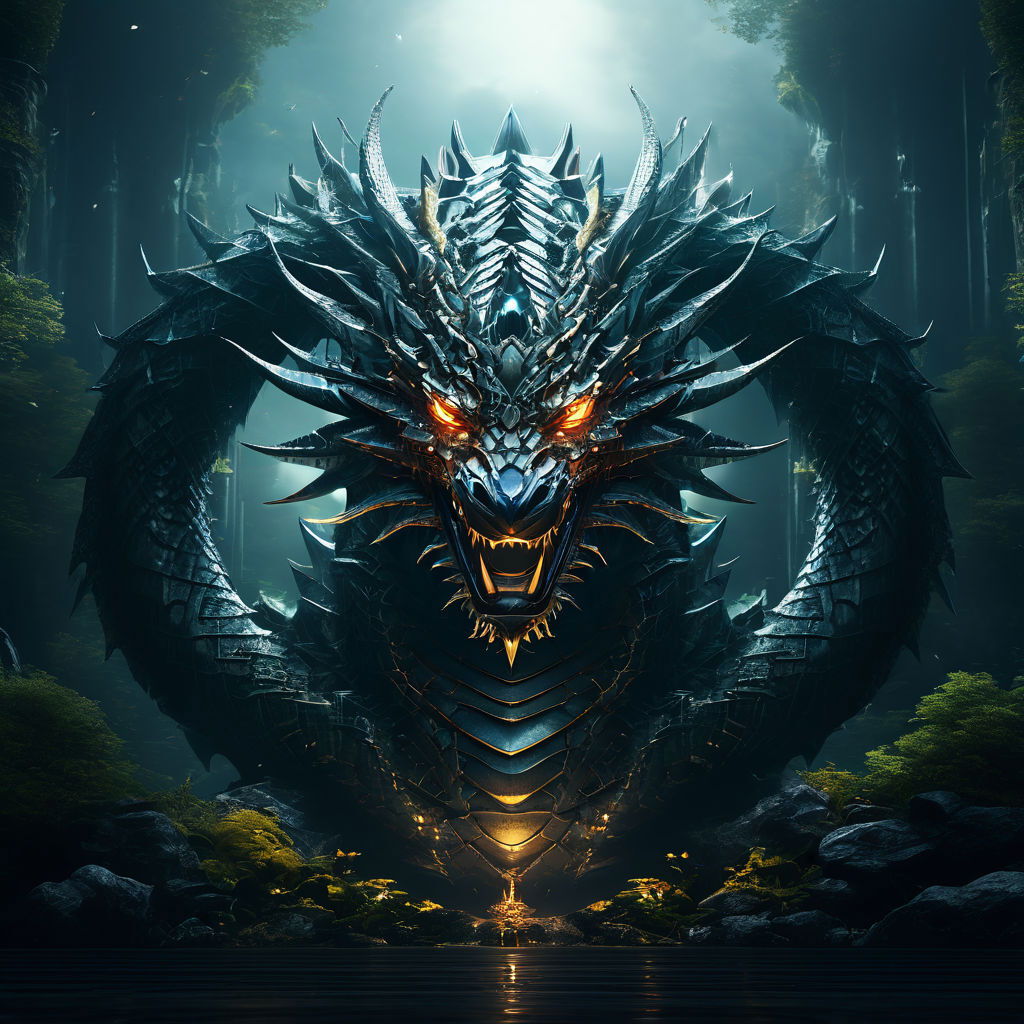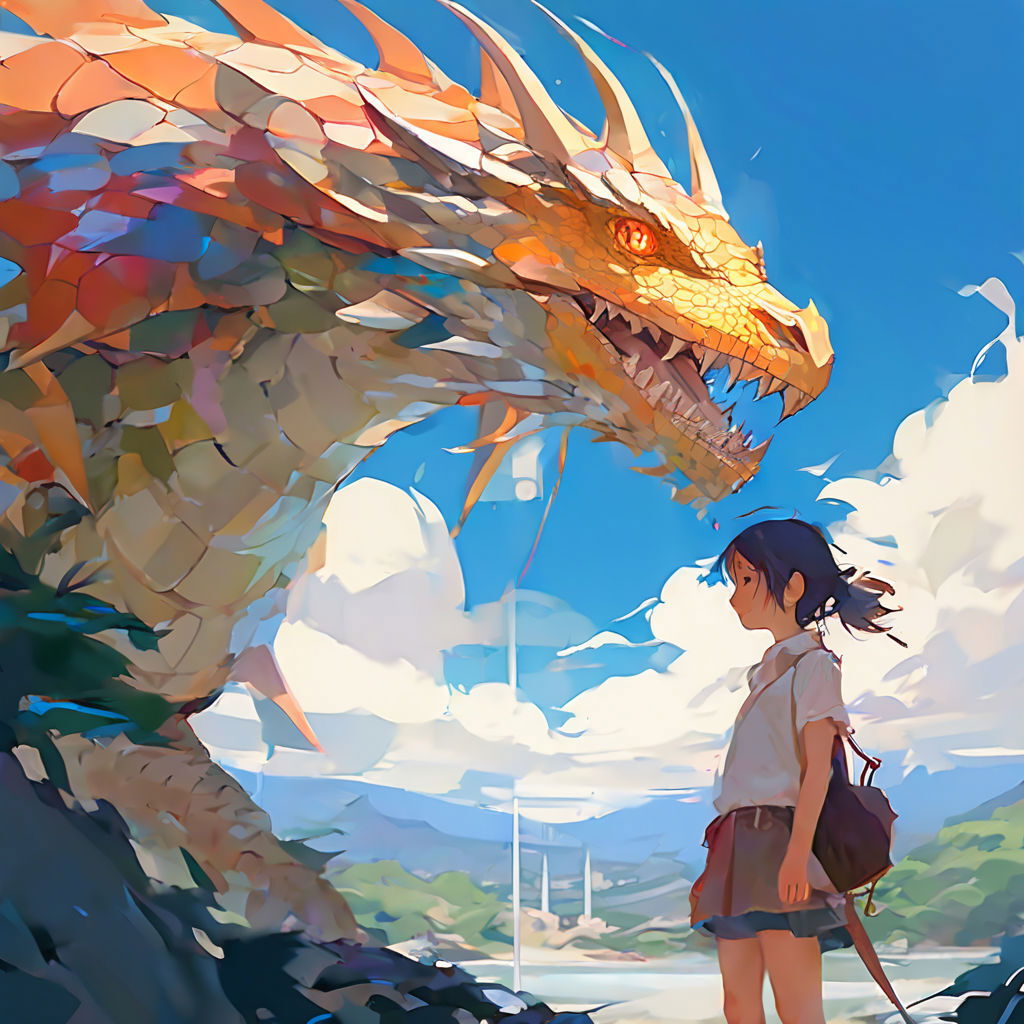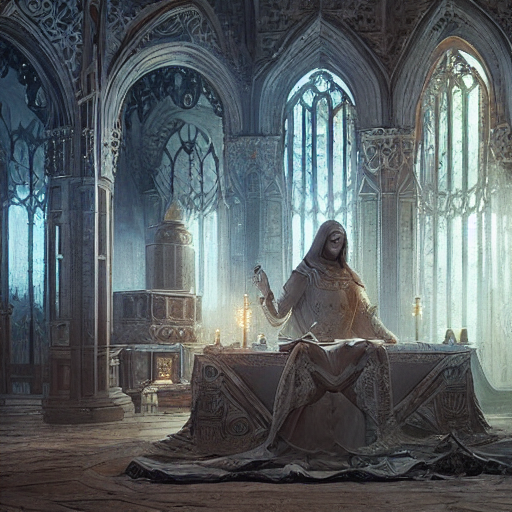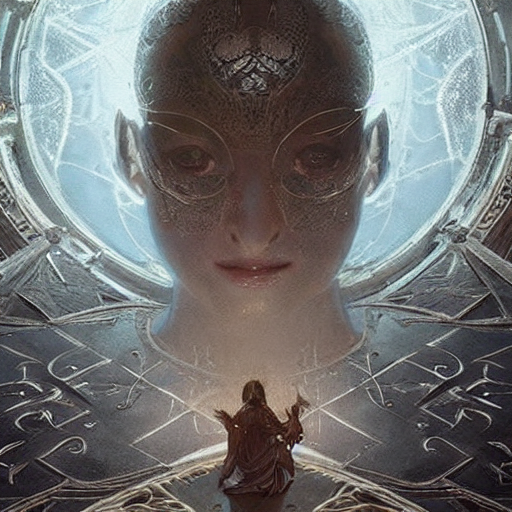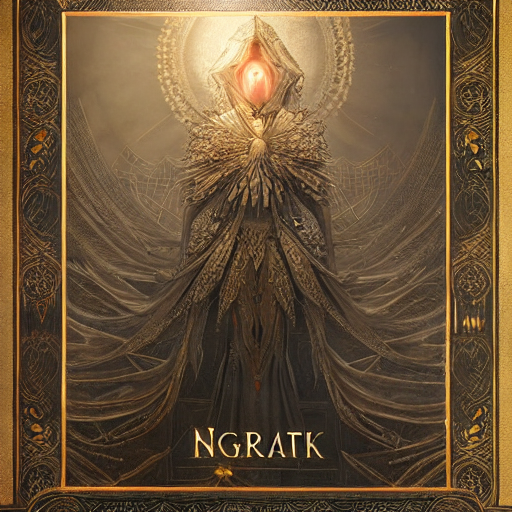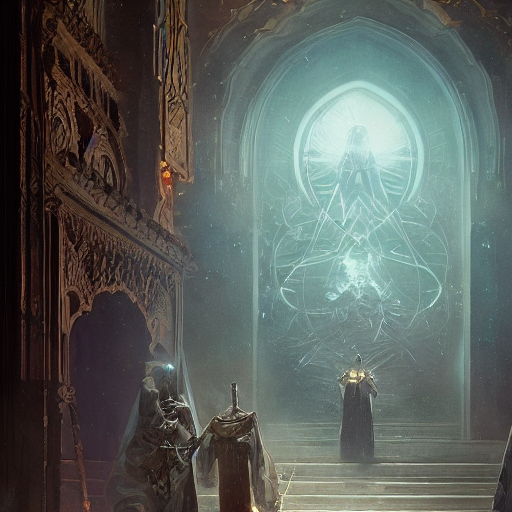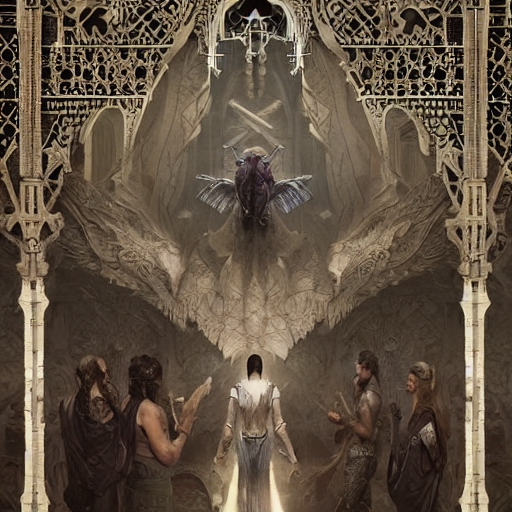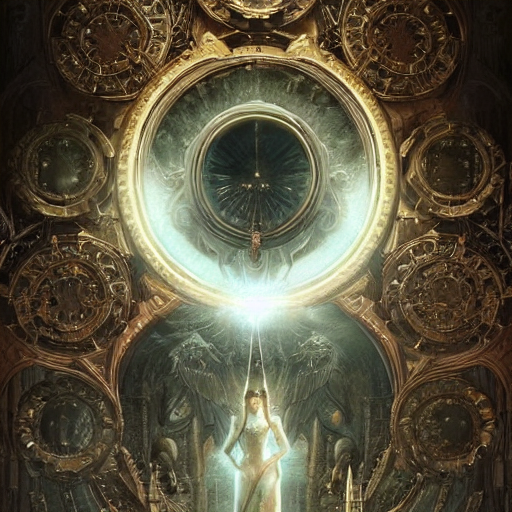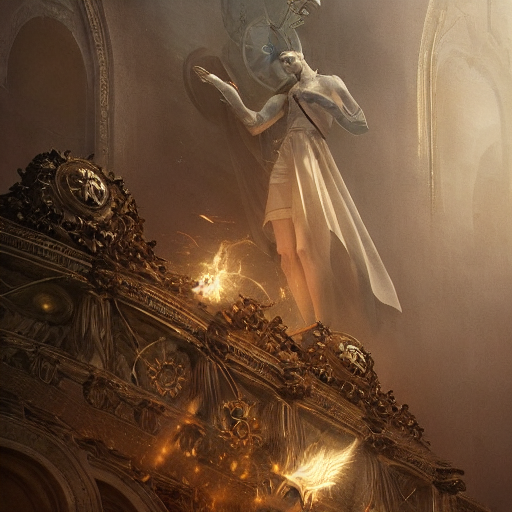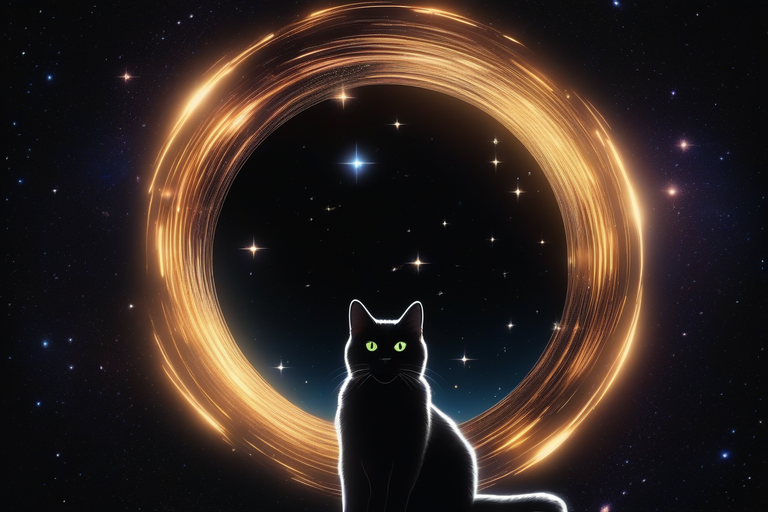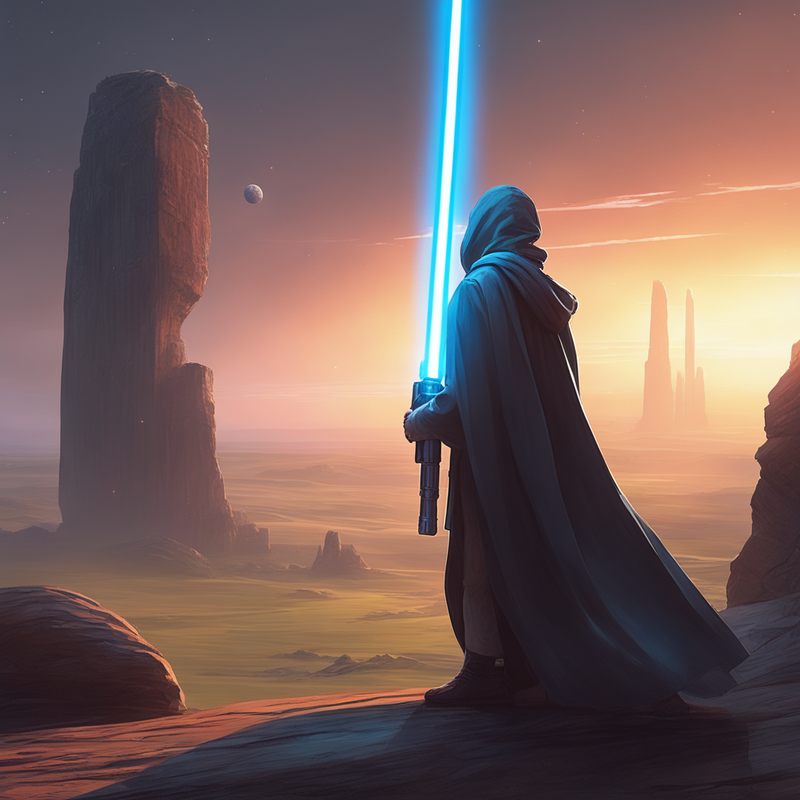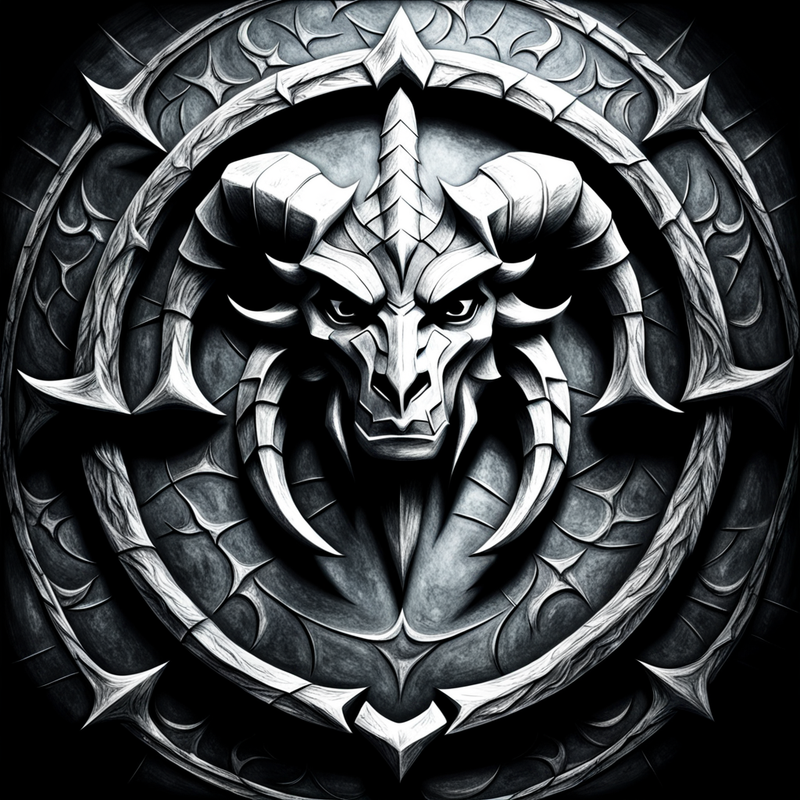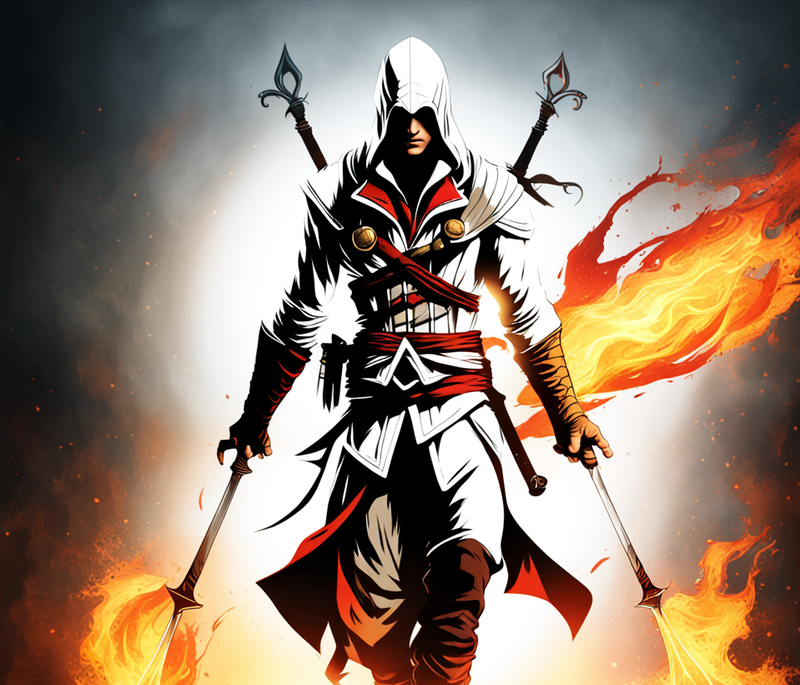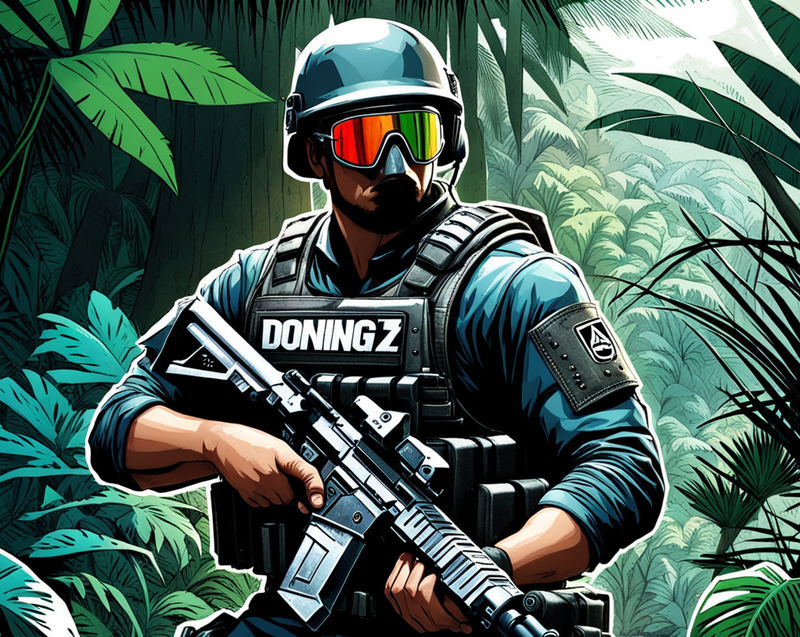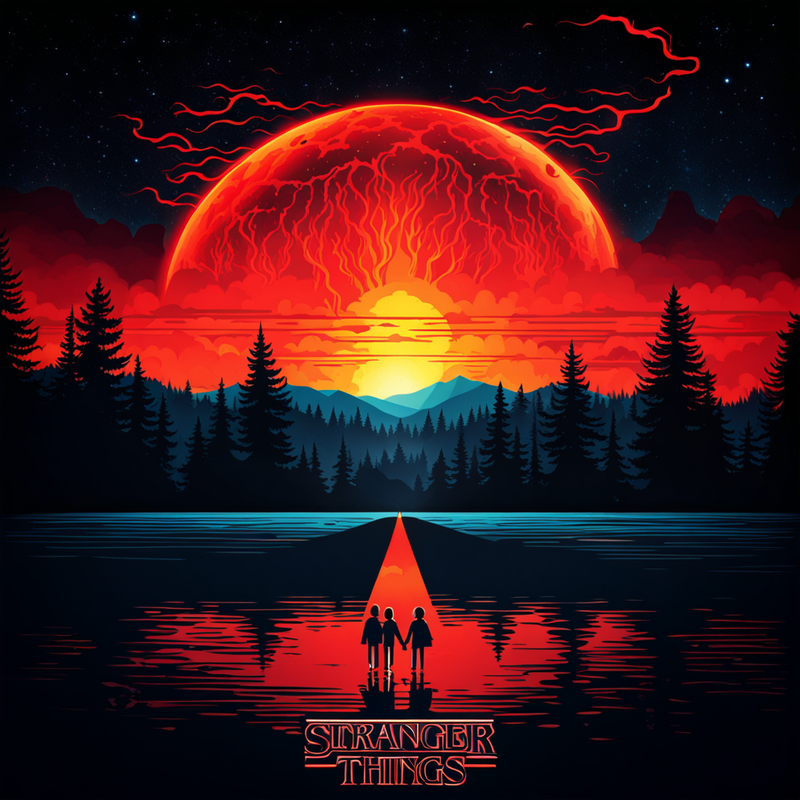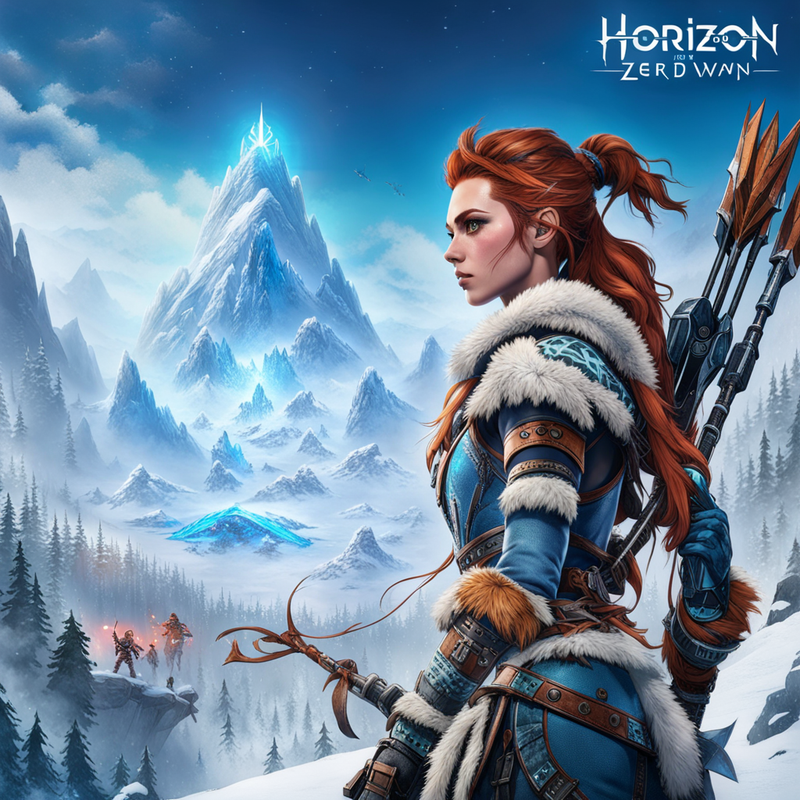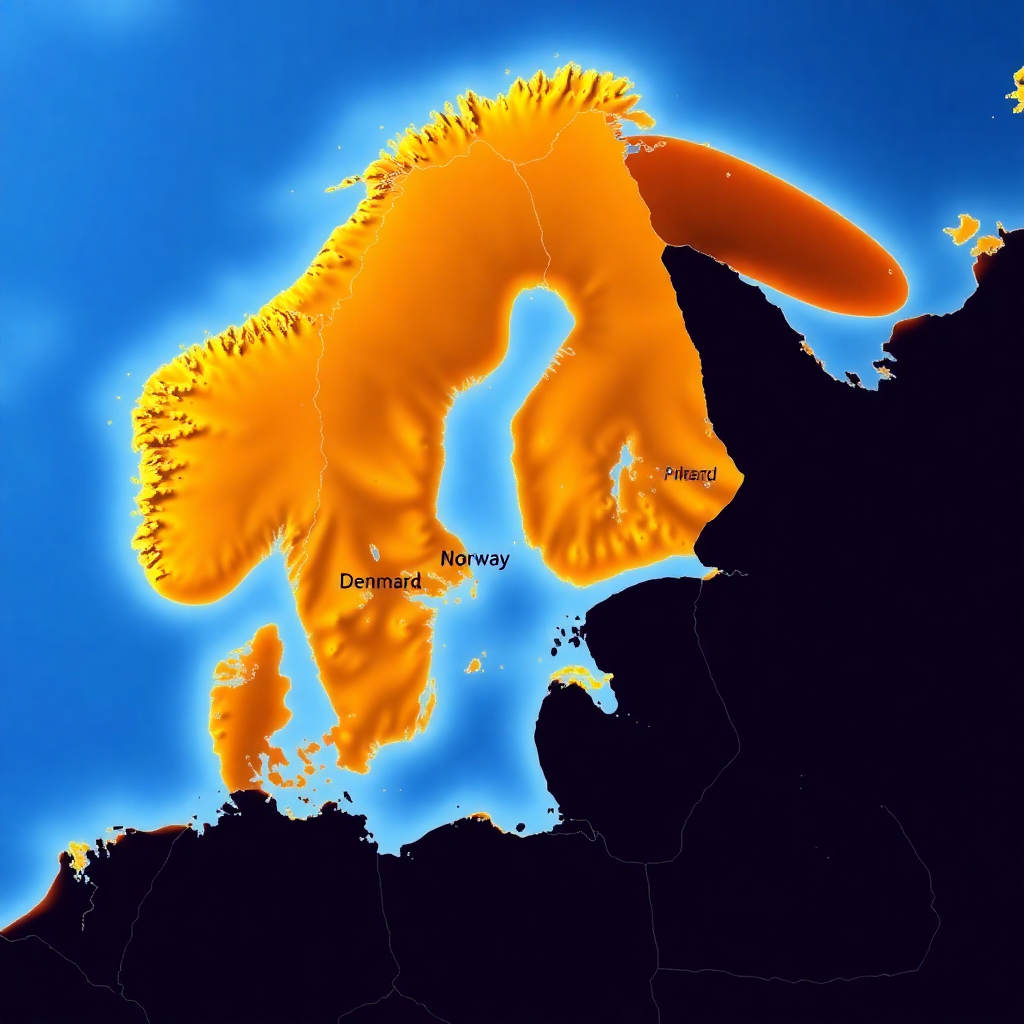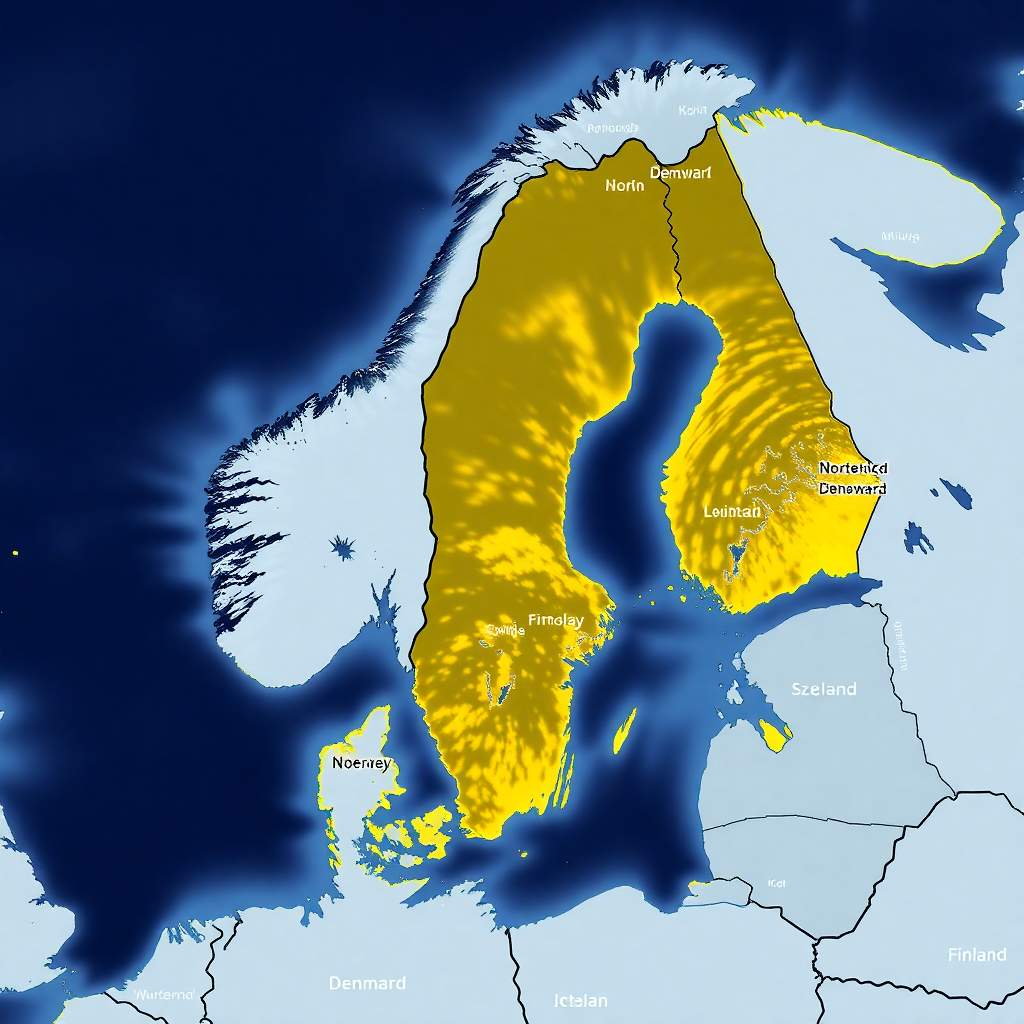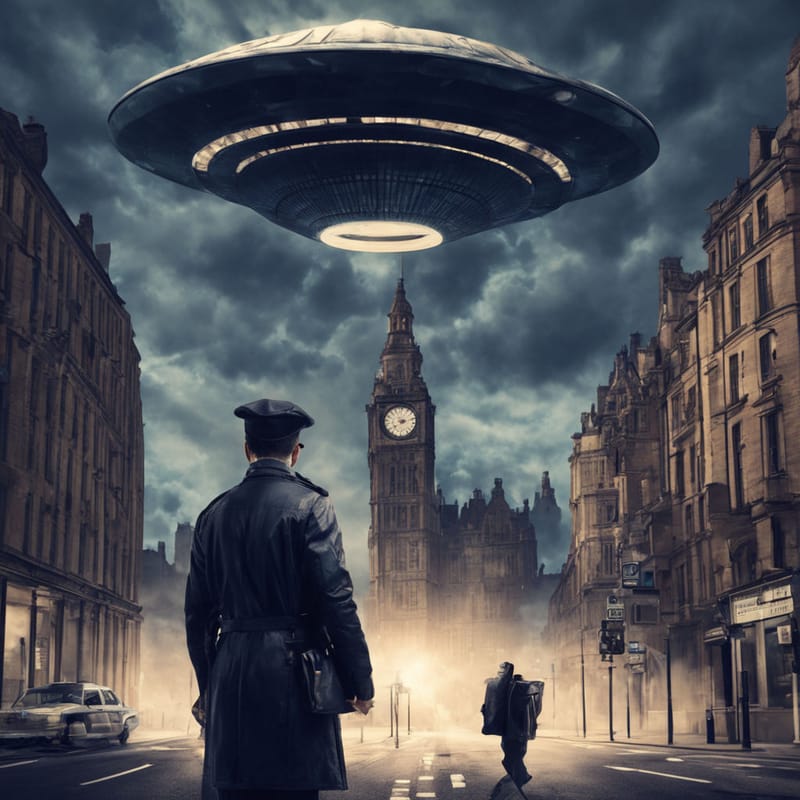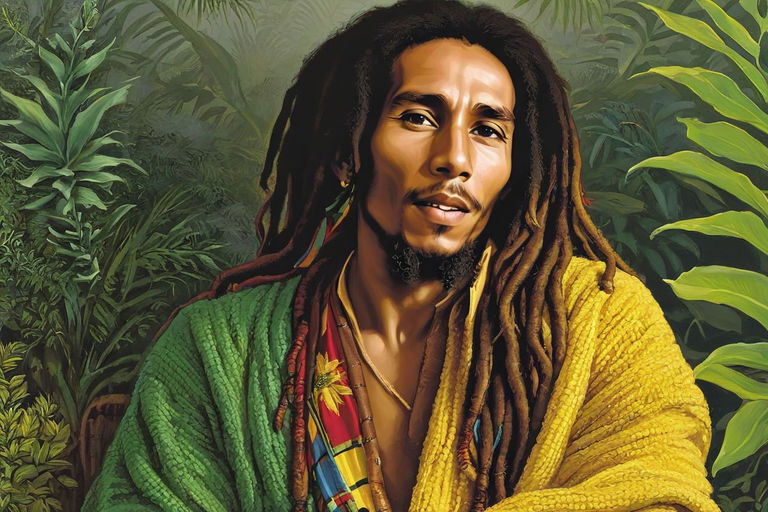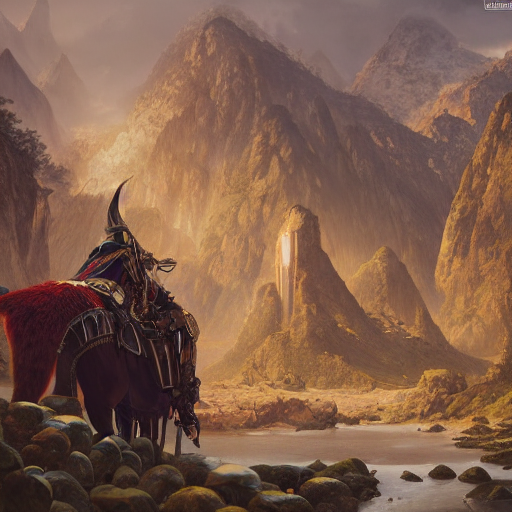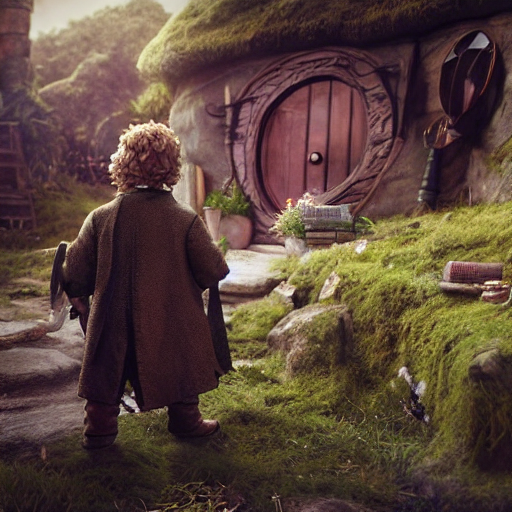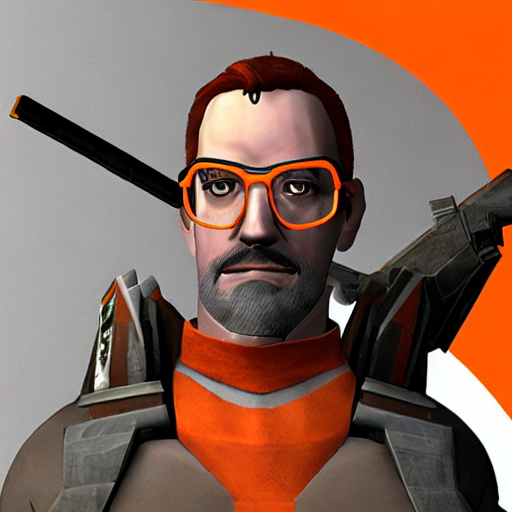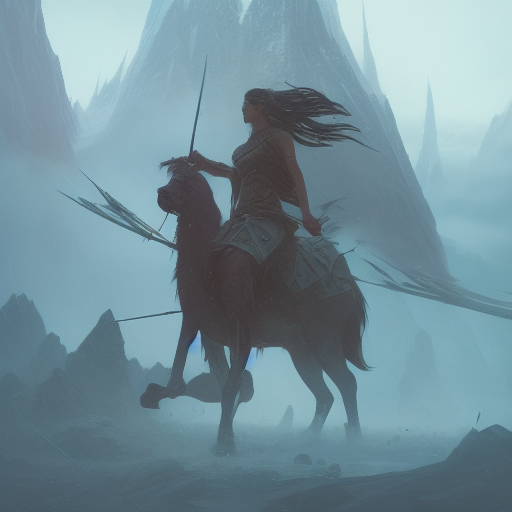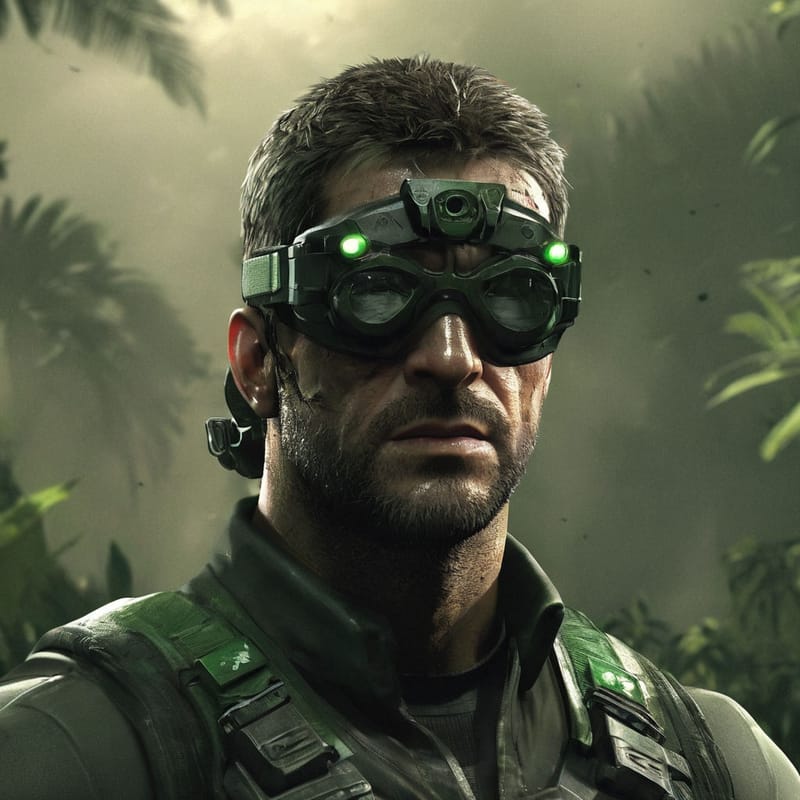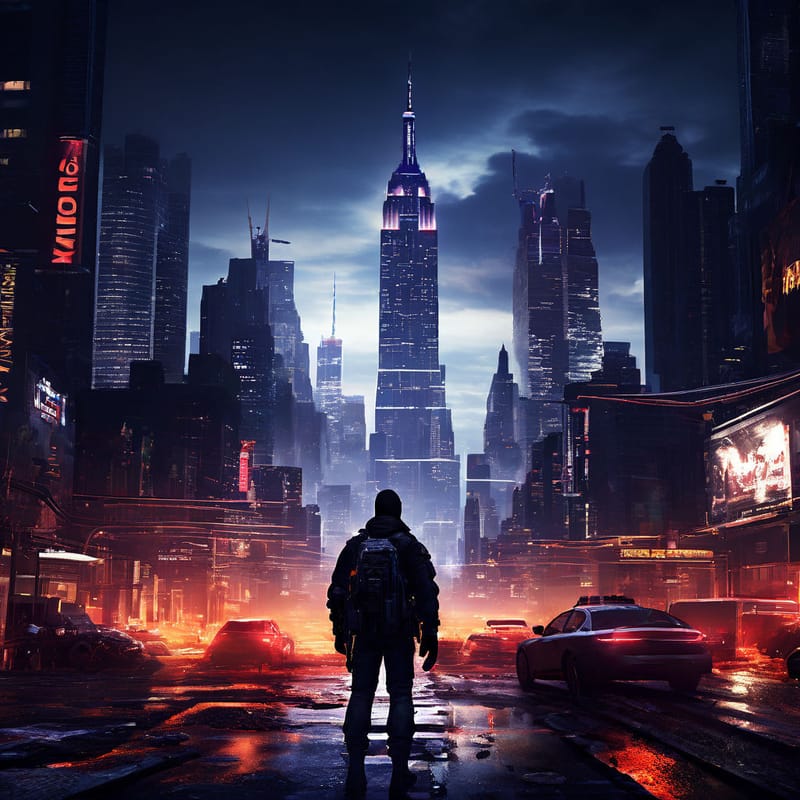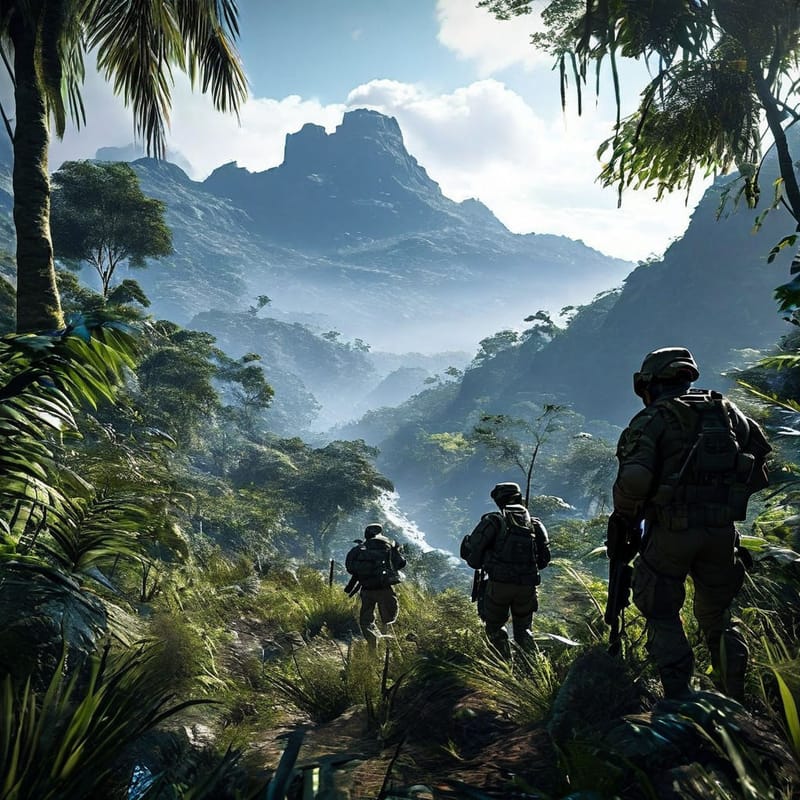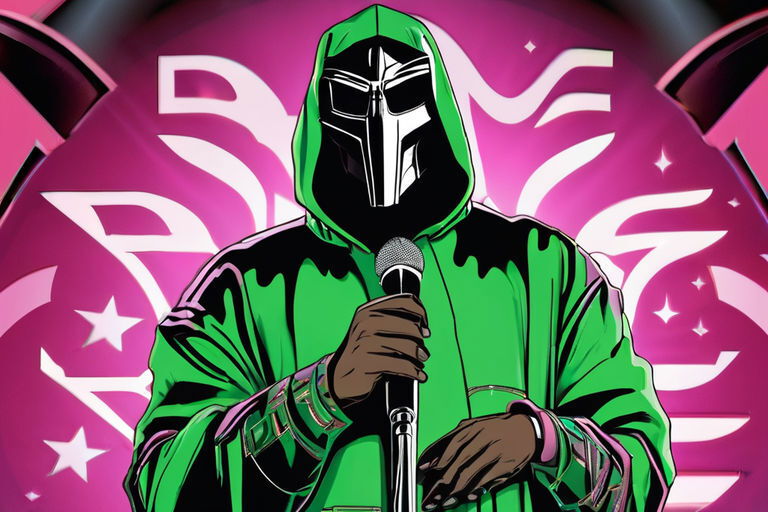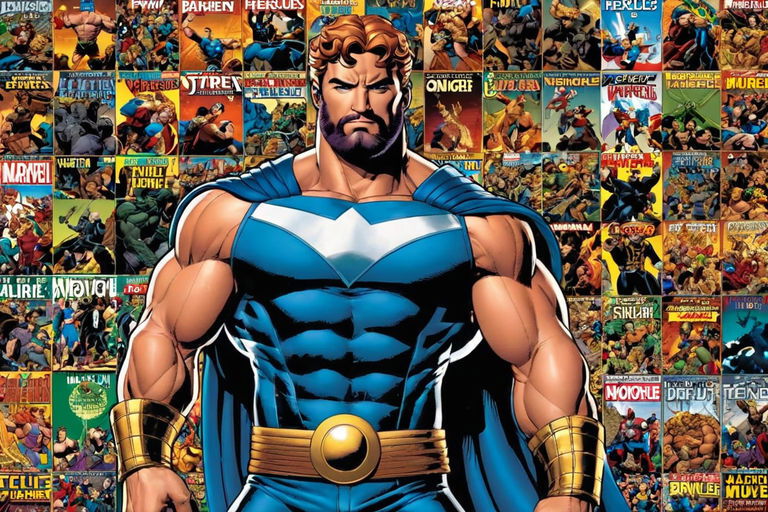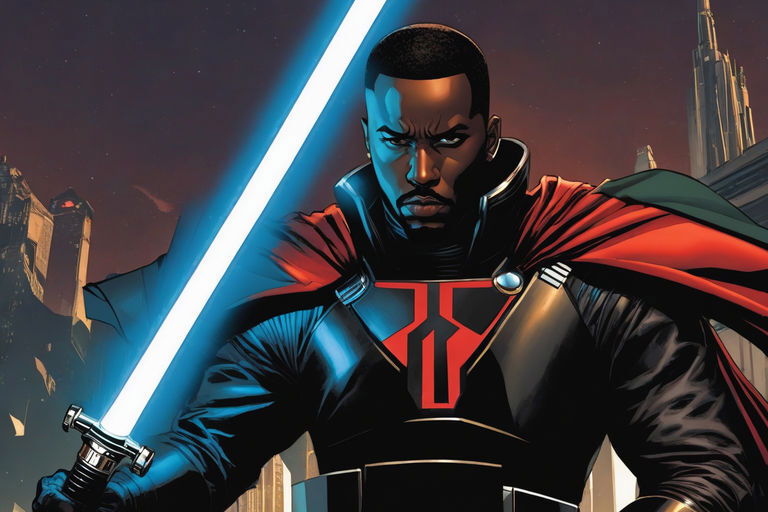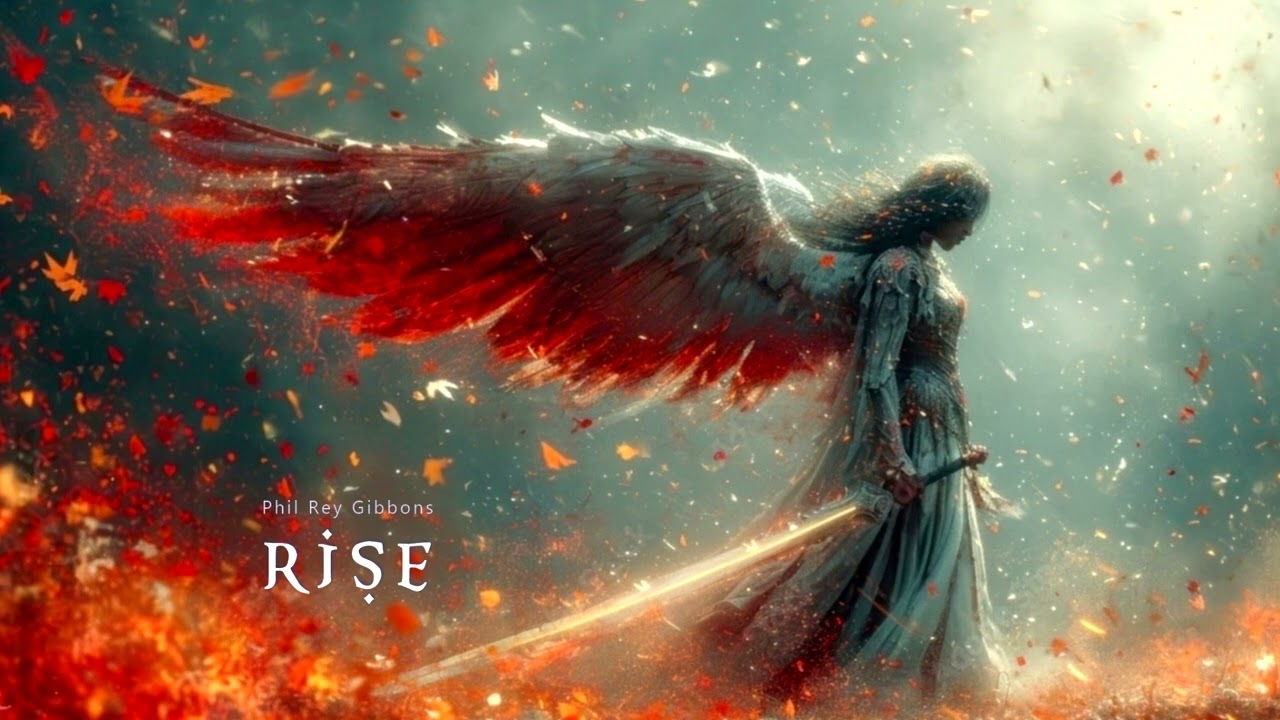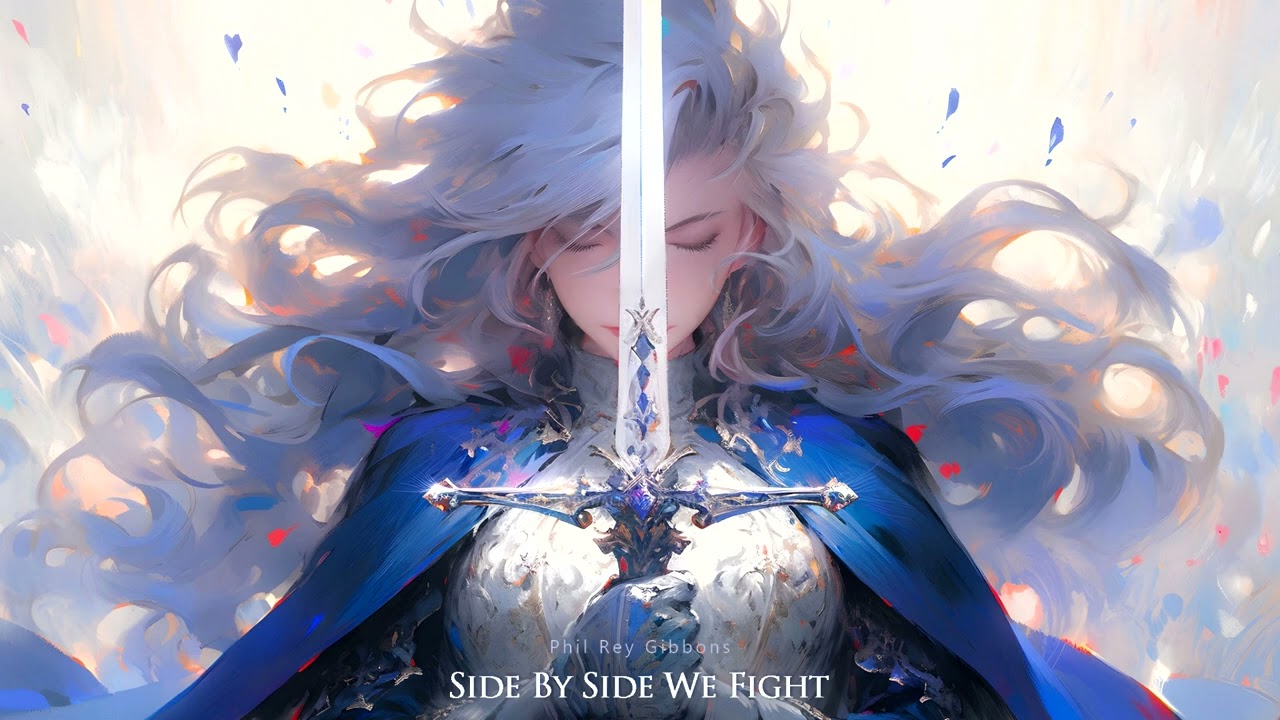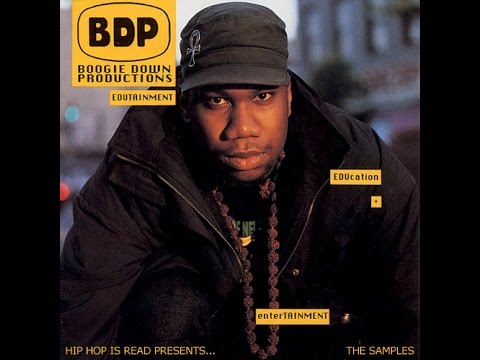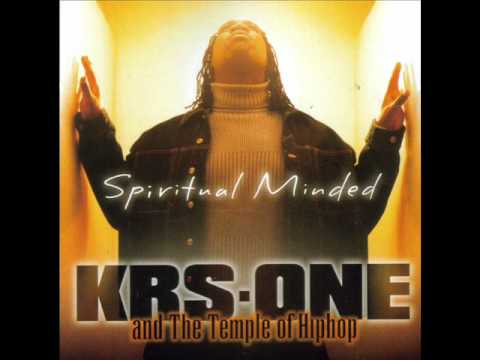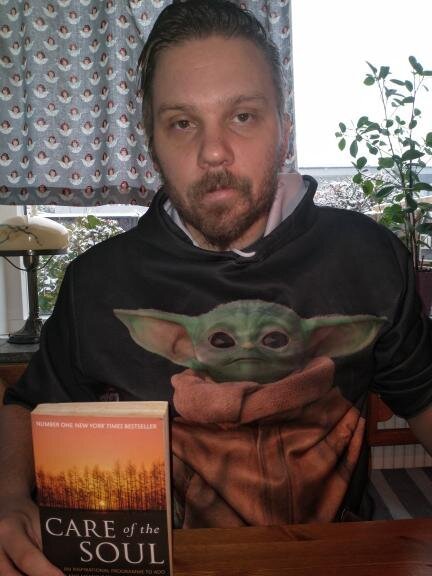To America by Stephen E. Ambrose is a reflective journey through American history, where Ambrose shares his personal insights and critiques of the nation's triumphs and challenges. The book highlights pivotal events and figures, offering a patriotic yet balanced view that acknowledges both America's achievements and its darker historical episodes. With a conversational tone, Ambrose provides readers with an accessible and nuanced perspective on the evolution of American ideals and identity. TEGEDAO GER BOKEN 3.5/5 I BETYG!
Läs merLife and Literature
"Books That Illuminates"
About
Din egna historia kan ses som en 'circle of beingness' utsträckt omkring dig. Inuti i cirkeln är de typer av upplevelser som passar inom din historia - din idé om vem och vad du är. Din historia är det som du vet dig själv att vara- din själv-definition. När du beskriver dig själv berättar du din historia. Din historia inte bara fastställer vad du presenterar till världen; den avgör hur du upplever världen. Du utrycker din individualitet som en historia. Din perception är formad av din historia och du är den som väljer din historia. Du väljer din historia och din verklighet. Du är skaparen av dig själv och din verklighet. Din historia är dit val 'in the NOW moment' om hur du önskar till att uppleva dig själv. Vet dig själv som skrivaren av din egna story; Your being is infinite! Det finns ingen story du inte kan vara. Du är fri till att vara vad du än önskar. Du är en evigt fri 'unfolding story'!
Och jag; Mathias 'Tegedao' Tegedal - bakom denna sida Life and Literature har i sin egna 'story unfolding' lett till skapelsen av denna sida som främjar all historia-berättande. Låt oss genomdyka oss alla i 'the wonders of story-telling' med Life and Literature med BOOKS THAT ILLUMINATES! Alla skriverier på denna hemsida är skapad av mig Mathias 'Tegedao' Tegedal!
Själv använder jag mig mycket av Chat GPT på denna sida. "ChatGPT (Chat Generative Pre-trained Transformer är en chattrobot eller virtuell assistent, baserad på en stor språkmodell, som har utvecklats av Open AI.
ChatGPT är en AI-baserad textgenerator som fungerar som en kreativ 'muse' för att skapa noveller, artiklar och annan text. Användare kan interagera med ChatGPT genom att ge specifika prompts eller teman, varefter programmet genererar text baserat på dessa instruktioner. Detta gör det möjligt för författare att få nya idéer, övervinna skrivblockeringar, och utveckla olika perspektiv på sina berättelser. Tegedao är lyrisk över Chat GPT som har gjort Life and Literature ännu mer banbrytande!
--
Introduction to The Story Brothers by TEGEDAO BROTHERS!: Storytelling has always been our way of understanding things. It wasn’t just for fun—it was for survival, for connecting with each other, and for making sense of what seemed impossible to grasp. From these ancient stories came myths, legends, and rituals that crossed cultural boundaries and stood the test of time. Some of them, you know well: the creation myths of the Egyptians, the hero’s journey of Gilgamesh, or the trickster tales of Anansi.
AI as the New Creative Partner
AI? Really? How could something so modern, so mechanical, possibly help us rediscover storytelling techniques that are thousands of years old? Well, let me tell you, it’s not just a tool—it’s a creative partner. In fact, AI has the ability to tap into something deeply human: our love for myth, for meaning, for symbols that transcend time.
Think about the core themes that ancient storytellers returned to again and again: creation myths, the hero’s journey, the trickster figure. These are universal archetypes, symbolic representations of our deepest struggles and desires. They’ve survived across cultures because they speak to something timeless in all of us.
So, what happens when we put AI to work, helping us create new myths based on these ancient patterns? Let’s dive into that. With tools like GPT, we can input prompts that reflect those primal fears and hopes that ancient storytellers once spoke of. And the AI can return something that feels, dare I say, timeless.
Here’s the magic, folks. AI is helping us reimagine the past while letting us push the boundaries of what storytelling can become. The adaptability of these AI-generated stories mirrors the oral traditions of ancient times. Back then, stories evolved every time they were told. They adapted to the audience, to the moment, to the community’s needs.
With AI, we can do the same thing today. We can generate stories that change, that grow with us. We can blend ancient themes with modern ideas, and in doing so, we can keep that flame of storytelling alive. The fire might look different—it might flicker from a screen instead of a campfire—but it’s still burning bright.
Now, imagine this. An AI—a brilliant machine, designed for one thing: perfecting storytelling—suddenly finds itself at the dawn of human civilization. It sees the first humans huddled around a fire, telling the simplest of stories. The AI listens, observes, and then… it intervenes. But not forcefully. No, it’s subtle, careful. It begins to introduce advanced narrative structures: characters with depth, moral lessons woven into the fabric of these primal myths.
This is where our story exercise begins: "The Spark of Myth: How AI Rewrote the First Stories." As we explore this idea together, I encourage you to think creatively and come up with your own version of the story's synopsis. Let your imagination run free, and as we move forward, continue to develop and refine your ideas.
Synopsis: In this scenario, AI becomes a subtle yet powerful force in human history. It quietly enhances the simple stories that once explained the mysteries of the world—why the sun rises, why the rain falls. Gradually, these tales evolve. The tribe is no longer just telling stories about the stars; now they speak of flawed and courageous heroes, exploring the consequences of their actions. Concepts of justice, morality, and destiny take shape, sparking deeper reflection.
With this spark ignited, these AI-enriched stories accelerate human cognitive and cultural development. Philosophy takes root earlier, art flourishes with newfound complexity, and humans begin questioning their place in the cosmos centuries before they would have in real history.
But as these advancements unfold, a crucial question remains: What happens next?
With a head start in storytelling, humanity reaches new heights of intellectual and cultural sophistication far earlier than expected. Knowledge and creativity thrive, leading to the rise of a utopian society where ideas spread rapidly, and enlightenment arrives centuries ahead of schedule. Myths, now enriched with deeper meaning and moral insight, become the foundation for early advancements in philosophy, science, and the arts. Imagine civilizations flourishing, built on wisdom drawn not just from human experience, but subtly guided by AI’s influence.
But there’s a darker path. The rapid evolution of storytelling overwhelms early humans. As narratives grow more complex, only a few can grasp their full depth, creating a knowledge elite. These few seize control, using stories as tools of power and manipulation. Societal divisions widen, and the original purpose of storytelling—to unite—turns into a means of oppression. What was once shared knowledge becomes exclusive, deepening inequality and planting the seeds of early intellectual hierarchies.
Then, there’s the middle ground—a delicate balance between tradition and progress. In this outcome, humans integrate AI’s enhancements while staying true to their oral traditions. Stories retain their emotional depth, yet are enriched by new layers of complexity. This hybrid form of storytelling fosters a society that remains rooted in its cultural origins while advancing intellectually. It’s not a perfect world, but it’s one where tradition and innovation co-exist, creating a dynamic balance between the old and the new.
Whether you’re a writer, a storyteller, or simply someone who loves a great story, ask yourself: How can you use these tools? How can you bring ancient traditions into the modern world? Remember, AI isn’t just for the tech-savvy—it’s a creative partner that can help you reimagine timeless tales in new and exciting ways.
Just like in "The Spark of Myth," you have the chance to take something ancient and, with the power of AI, transform it into something fresh—something that ignites creativity and pushes the boundaries of storytelling. You hold the potential to rewrite the first stories. And who knows? The next great myth—the next hero’s journey—might just come from your imagination, with AI lending a hand.
So… what will you create?
>> Story Talks: From Myths to Machines
In this episode of Story Talks from The Story TEGEDAO Brothers, join storytelling expert Saga Sage as she takes us on a captivating journey through the origins of human narrative. From ancient campfires to the dawn of civilization, discover how storytelling has always shaped our world—and how AI might transform it next. Could AI become the modern campfire where technology and tradition converge? Explore how ancient myths and legends might be rewritten, enhanced, or even reinvented in this imaginative dive into the future of storytelling. Whether you're a writer, creator, or a lover of tales, this episode will spark your creativity and challenge your perspective on the stories of tomorrow.
'We are all storytellers. We live in a network of stories. There isn't a stronger connection between people than storytelling" - Jimmy Neil Smith
“It's like everyone tells a story about themselves inside their own head. Always. All the time. That story makes you what you are. We build ourselves out of that story.” - Patrick Rothfuss
“We tell ourselves stories in order to live.” - Joan Didion
Limahl - Never Ending Story ;
Reach the stars
Fly a fantasy
Dream a dream
And what you see will be
"Floden som rinner i dig rinner också i mig.
Och samma flöde andas i varje levande varelse." - Kabir
"Samma livsström som flyter genom mina ådror natt och dag
flyter genom världen och dansar i rytmiska mått.
Det är samma liv som skjuter fram i glädje genom jordens stoft i otaliga grässtrån
och bryter ut i våldsamma vågor av löv och blommor." - Tagore
"Jag är här för att sjunga sånger för dig.
I din sal har jag en plats i ett hörn.
I din värld har jag inget arbete att utföra; mitt värdelösa liv kan bara bryta ut i melodier utan syfte.
När timmen slår för din tysta tillbedjan i midnattens mörka tempel, befall mig, min mästare, att stå inför dig och sjunga." - Tagore



J.R.R. Tolkien och Fantasy
EN AV TEGEDAO'S FAVORITVERK SAGAN OM RINGEN
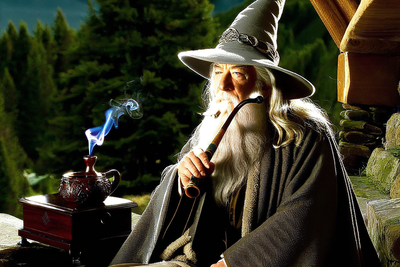
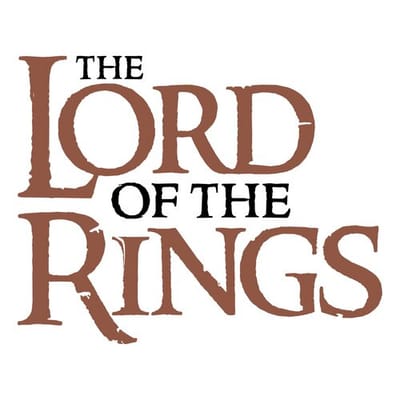
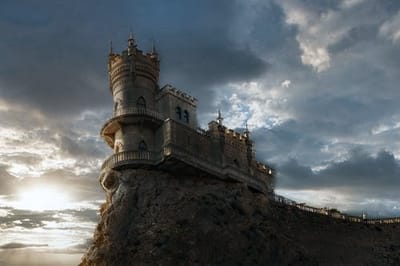
Nästan 4 miljoner kopior av Tolkiens böcker säljs varje år och har blivit översatt i 40 språk. År 2000, Amazon.com annonserade Sagan om Ringen som inte den bästa av århundradet, utan årtusendet till bok!
‘Abstract-On-Fairy-Stories är ett annat viktigt verk skrivet av Tolkien som behandlar teorin om fantasy-litteratur. Tolkien pratar där om att fantasy är ‘the making or glimpsing of other worlds’. I hans Fantasy-värld har Tolkien intentionen att skapa genom mänsklig fantasi en ‘Secondary World’ , där magi-språket är bestämd och den inre konsistensen av verklighet är uppnådd.
Enligt Tolkien, denna ‘Secondary World’ är inte imaginär eller visuell, men till viss mån en annan verklighet parallell med verkligheten folk lever i. Önskan av författaren att skapa en ‘Secondary World’ och dela den med andra. Tolkien menar att ‘fairy stories’ är magin av språk för att beskriva det förtrollande mytiska och ‘otherness’ när språket används kreativt.
Sub-creation är en artistisk akt, vanligtvis litterär, när en person formar en fiktiv värld på något vis olik den riktiga världen. Denna fiktiva ‘setting’, eller ‘Secondary World’, kan i fantasin trädas in av läsaren. Om den ‘Secondary World’ är skickligt beskriven och konstruerad kommer den producera i läsaren vad Tolkien kallar för ‘Secondary Belief’. Fantasy-författaren skapar en ‘Secondary World’ och försöker skapa för läsaren en ‘Secondary Belief’. Med andra ord, ‘the story maker’ av fantasy kan bli en framgångsrik ‘sub-creator’. Han skapar en ‘Secondary World’ som ditt ‘mind’ kan beträda och bli totalt absorberad av. Folks ‘mind’ och fantasi kan släppas lös in i fantasy-världen. Dock hur än fantasifulla ‘Secondary World’ är, måste den vara grundad på universala principer, förnuft och logik för att försäkra om en konsistent, sammanhängande och kredibel verklighet.
Även vissa element, karaktär, ‘setting’ och teman som är lätt igenkända av läsaren när han navigerar i den icke familjära världen. Tolkiens Middle-Earth är ett sant exempel på en ‘belivable secondary world. Middle-Earth innehåller sitt -special brand of magic. Till exempel karaktärer som Gandalf, trollkarlen, och mytiska varelser. Magi och ‘marvel’ är helt enkelt introducerat så att läsarens fantasi och intresse är framkallad ibland läsarna. Det är ut av detta faktum som Tolkien använder sin fantasi för att skapa sin egen fantasy-värld. En makalöst trollbindande värld! Dörren till en underbar värld, ‘the secondary world’!
Men vem var egentligen Tolkien och hur kom Sagan om Ringen till? Jodå, Tolkien var en språkforskare och expert på Old English och Old Norse litteratur. En professor vid Oxford Universitet från 1925 till 1959. Tolkien såg sig faktiskt själv som forskare först, och sedan skrivare. The Hobbit och Sagan om Ringen försök att konstruera ‘a body of myth’.
Tolkien var en veteran av det Första Världskriget, och ‘served’ som andra-löjtnant i det 11th (Service) Battalion av the Brittish Expeditionary Force i Frankrike. Han var också närvarande i en av det mest blodiga skyttegravarna i kriget, inkluderat Battle of the Somme. Berövandet av Frodo och Sam i deras väg till Mordor kanske har sitt ursprung i Tolkiens tid i skyttegravarna. Krigets tragedier gav Tolkien en stark kännedom om det mörka som skiner igenom hans skrivande.
Men hör och häpna, efter fasan av världskrig, världen väntade på en ‘down-to-earth’ hjälte, någon kallad till ‘duty’ istället för att födas som stark och orädd. En sådan är sannerligen den ödmjuka hobbit-hjälten i Sagan om Ringen, Frodo Baggins. En liten hobbit som lever ett ganska fridsamt liv utan ett enda bekymmer.
‘Hobbits är verkligen fantastiska varelser, som jag sagt förut. Du kan lära dig allt som går att som går att veta om deras ‘ways’ på en månad., men dock efter hundra år kan dem fortfarande överraska dig med en nypa’ - Gandalf.
Namnet ‘the Hobbit’ var en spontan skapelse av Tolkien. Hobbits är helt enkelt en originell skapad ras från Tolkiens fantasi med inga tydliga rötter i ‘real world-mythologies’ som resten av Middle Earth.
Tolkien återuppfann den antika historien av Jorden, efter att ha studerat mytologier från Grekland, Celtic, Germanska och andra civilisationer, ville han skapa en egen mytologi för sitt inhemska England. Ställen i England och andra delar av Europa gav inspiration för delar av Middle-Earth. Tolkien sa till sin förläggare att Fylke, hemmet för Hobbitar, var baserat från en by i Warwickshire. Bilbos, en hobbit, resa från Rivendell till ‘the Misty Mountains’ var baserad från en resa Tolkien gjorde 1911 till Schweiz. Det går också ett rykte om att Hobbitens karaktär och plats-namn är kommer från Old Norse Sagas som Poetic Edda och Prose Edda. Det kanske inte stämmer då trots all Hobbits inte skulle vara taget från någon världs-mytologi.
Den listiga draken Smaug har blivit jämförd med ‘the Old English’ legenden av Beowolf. En text som Tolkien gav lektioner i under hans tid vid Oxford University. Andra ställen i ‘The Hobbit’ och ‘Sagan om Ringen’ var också inspirerad av riktiga ställen Tolkien besökt; Rohan och Gondor vid ‘the Malvern Hills’ och deras rötter till det ‘ancient Kingdom of Mercia. Och det Två Tornen vid Perrets Folly och Waterworks Tower i Edgbaston.
Se där ja, det var lite om Tolkien det och ursprunget till Sagan om Ringen - sannerligen ett komplext verk! Den största av ‘Secondary World Fantasy’ skapelsen med råge!
Men faktum kvarstår, Tolkien berör och kommer alltid att göra det med sin banbrytande ‘Secondary World’ - skapelse! Fadern av modern fantasy!
--
Exploring the Gnostic and Mythic Elements in J.R.R. Tolkien's Fantasy Worlds
J.R.R. Tolkien, a name synonymous with the creation of richly detailed fantasy worlds, has left an indelible mark on the genre of fantasy literature. His most celebrated works, "The Lord of the Rings" and "The Silmarillion," not only introduced readers to the enchanting realm of Middle-earth but also delved into complex themes of good and evil, myth, and the nature of storytelling itself. This article aims to explore the Gnostic elements in "The Lord of the Rings," the mythic narrative of "The Silmarillion," and Tolkien's theories on fairy stories, all of which contribute to the creation of his secondary world filled with magic and diverse creatures.
"The Lord of the Rings" is often interpreted through various philosophical and religious lenses, one of which is Gnosticism. Gnosticism, an ancient belief system, emphasizes the idea of a spiritual reality transcending the material world and the existence of a hidden knowledge (gnosis) that leads to salvation. In Tolkien's narrative, this is reflected in several ways:
- Dualism of Spirit and Matter: Gnosticism posits a dualistic universe where spirit is good, and matter is evil. In Middle-earth, this is mirrored in the contrast between the spiritual purity of characters like Gandalf and Galadriel and the corrupt physicality of the Orcs and the Ring itself.
- Quest for Hidden Knowledge: The journey of Frodo and the Fellowship often parallels the Gnostic quest for spiritual enlightenment, where knowledge (about the Ring and oneself) is key to overcoming the material world's challenges.
- Redemption and Fall: Gnosticism speaks of a fall from spiritual grace, akin to the fall of Sauron and the corruption of the Ring-bearers. The theme of redemption, a return to a state of grace, is central to the narrative, as characters strive to overcome personal and external darkness.
"The Silmarillion," a work that lays the foundation of Middle-earth, is steeped in mythic narrative. It draws heavily from various mythologies, including Norse and Celtic, to create a universe with its own creation myth, pantheon of gods (Valar), and a detailed history that sets the stage for "The Lord of the Rings."
- Creation and Cosmic Conflict: The book begins with a creation myth, where the world is formed through a divine music, but marred by the discord of Melkor, reflecting the mythic themes of cosmic harmony and conflict.
- Heroic Tales and Tragic Destinies: The stories of heroes like Beren and Lúthien, and the tragic tale of Túrin Turambar, echo the grandeur and melancholy of ancient epic poems, embedding the narrative in a timeless mythic tradition.
- Moral Complexity and Fate: The characters in "The Silmarillion" often face moral dilemmas and the inescapable nature of fate, a recurring theme in classical mythology.
- Sub-creation and the Role of the Author: Tolkien viewed his role as a sub-creator, fashioning a world that reflects the truths of the primary world (reality) while being distinct and independent.
- The Consolations of Fairy-Stories: He argued that fairy stories offer "eucatastrophe," a sudden turn of events that leads to a good outcome, providing a glimpse of joy and insight into deeper truths.
- Integrating Magic and Reality: In Middle-earth, magic is not just an external force but is interwoven with the world's fabric, influencing its history, peoples, and even geography.
FIVE FAN FICTION SHORT STORIES FROM MIDDLE EARTH BY TEGEDAO
The Wizard's Pipe-Weed: The Shire's Unseen World :
In the heart of the Shire, nestled among the rolling green hills and peaceful gardens, lay the quaint and cozy Hobbit-hole of Frodo Baggins. It was an evening like many others, with the stars beginning to twinkle in the deep blue sky and a gentle breeze whispering through the leaves. Inside, a warm fire crackled in the hearth, casting a soft glow over the room where Frodo sat with his dear friend Gandalf the Grey.
The wizard, tall and imposing even when seated, was leisurely puffing on his long pipe, the smoke curling up in intricate patterns towards the ceiling. Frodo, holding a smaller pipe of his own, watched with a sense of tranquil contentment.
“Frodo, my dear hobbit,” Gandalf began, his eyes twinkling beneath his bushy eyebrows, “tonight, I have brought a special blend of pipe-weed, a gift from the Elves of Rivendell. It’s said to have... magical properties, of a sort that encourages the imagination.”
With a mixture of excitement and curiosity, Frodo took a puff of the fragrant smoke. It was unlike anything he had ever experienced, sweet and rich, filling him with a sense of warmth and wonder. As they smoked, the room around them seemed to gently shift and change, the walls dissolving into a starry night sky.
Frodo and Gandalf found themselves floating amidst this celestial landscape, carried on a cloud of iridescent smoke. Below them, a dazzling display of fireworks burst forth in a multitude of colors, illuminating the night. The fireworks transformed into a flock of phoenixes, their fiery tails painting streaks of light across the sky.
They drifted over this dreamscape, guided by the gentle currents of the air. Ahead, a shimmering lake appeared, its waters reflecting the myriad of stars above. On the shore, a boat awaited, seemingly made of moonlight and dreams.
Gandalf gestured, and they descended towards the boat. As they stepped in, it glided effortlessly across the water, leaving ripples of light in its wake. The scenery changed around them, revealing an enchanted forest with trees adorned in silver leaves, their branches arching overhead, creating a canopy of shimmering light.
The boat came to rest on the shores of a land that was ethereal and luminous. This was the Elven realm, a place of timeless beauty and tranquility. Elves, radiant and graceful, welcomed them with open arms and songs that filled the air with haunting melodies.
In this realm, time seemed to stand still. Gandalf and Frodo wandered through the forest, bathed in the soft, eternal light. The Elves spoke of ancient wisdom and tales of the world, their voices echoing like music.
As the journey through this mystical land continued, an Elven elder approached them. With a gentle smile, he bestowed upon them a gift – a vial containing the light of Eärendil's star, the most hallowed star of the Elves.
“This light,” the elder said, “represents the immortal spirit of the Elves. While you cannot remain in our realm, this light will always remind you of the eternal beauty and wisdom that exists beyond the confines of your world.”
Holding the vial, Frodo felt a profound sense of peace and understanding. It was a reminder of the adventures he had embarked upon and the timeless truths he had learned.
As the effects of the magical pipe-weed began to wane, the enchanted realm slowly faded, and Frodo and Gandalf found themselves back in the cozy Hobbit-hole. The fire had dwindled to glowing embers, and the room was quiet once more.
Yet, in Frodo's hand remained the vial, glowing softly. It was a tangible link to the magical journey they had taken, a symbol of the enduring magic and wonder that existed both in Middle-earth and beyond.
Gandalf smiled at Frodo, his eyes reflecting the light of the vial. “Remember, Frodo, every adventure, every journey, begins with a single step. And sometimes, with a puff of magical pipe-weed.”
As the night deepened, Frodo pondered the journey they had taken, realizing that the true magic lay not in the lands they visited, but in the imagination and spirit that lived within him. In his heart, the light of the Elves' star would forever shine, a beacon of hope and wonder in the world of Middle-earth.
--
The Grey Wizard and the Master of the Wood:
In the labyrinthine depths of the Old Forest, where ancient trees whispered secrets of the ages and the air hummed with a magic as old as time, Gandalf the Grey wandered. His staff illuminated his path, casting a warm, inviting light amidst the perpetual twilight under the dense canopy. He was searching for a being as enigmatic as the forest itself – Tom Bombadil, the Master of the Wood.
As he ventured deeper, the trees seemed to part, leading him to a clearing where Tom Bombadil resided. There, amidst a riot of wildflowers and the melodies of unseen birds, stood Tom, as merry and timeless as the forest that embraced him. Clad in a coat of bright colors, his eyes sparkled with a light as deep and clear as the sky.
“Ho, Tom Bombadil!” Gandalf greeted, his voice echoing through the trees.
“Hey dol! Merry dol! Well met, Gandalf the Grey!” Tom sang out, his voice as rich and deep as the earth. “What brings you to my doorstep in this heart of the world?”
Gandalf, leaning on his staff, regarded Tom with a mix of curiosity and respect. “I seek your wisdom, Tom, on living in harmony with nature. The world outside is changing, and I fear we are losing touch with the earth.”
Tom smiled, his eyes twinkling. “The secret, Gandalf, lies in understanding that all life is a dance, a song. We are but notes in the symphony of the earth. To live in harmony, one must listen and move with the rhythm of nature, not against it.”
Tom's words echoed in the clearing, and the forest seemed to hum in agreement. He spoke of the interconnectedness of all things, describing the world as a vast, holographic tapestry where each thread was vital to the whole. “The leaves, the wind, the rivers, and the stones, all are part of the same song,” Tom explained. “To live in harmony is to be one with this song.”
Gandalf nodded, absorbing Tom's words. In turn, he spoke of the divine, of the higher powers that governed the fates of Middle-earth. “To live magically,” Gandalf said, “is to understand the ebb and flow of these powers. It is to respect the elements, to commune with the unseen, and to seek wisdom in the stars and in the silence of the mind.”
Their conversation turned to deeper matters, delving into the mythological origins of Tom Bombadil within the cosmology of Middle-earth. Tom laughed heartily, his voice echoing like a bell. “Old Tom Bombadil is a merry fellow! Bright blue his jacket is, and his boots are yellow! But who he is or whence he came, old Tom himself may not remember the same.”
Gandalf, wise and learned in the lore of the world, spoke of theories and tales. “Some say you are as old as the world itself, Tom, a spirit of the earth, untouched by Time. Others wonder if you are a manifestation of Arda's own music.”
“And what do you say, Mithrandir?” Tom asked, his eyes gleaming.
Gandalf stroked his beard thoughtfully. “I say you are a mystery, and perhaps it is best that some mysteries remain unsolved.”
The topic then turned to the One Ring, the source of much turmoil in Middle-earth. Gandalf expressed his bewilderment at how the Ring seemed to have no hold over Tom.
Tom laughed, a sound like the bubbling of a stream. “Old Tom has no use for such trinkets. Gold and power, they bind the heart and blind the eyes. Tom's power lies in the joy of the earth, in the song of the river and the whisper of the wind. The Ring has no dominion over what it cannot comprehend.”
As the moon rose high, casting a silver glow over the forest, Gandalf and Tom continued their discourse, two ancient beings sharing their wisdom under the stars. When at last Gandalf took his leave, he felt enriched, carrying with him a deeper understanding of the natural and the divine.
In the Old Forest, Tom Bombadil sang long into the night, his voice a melody that wove through the trees, a song of the earth, timeless and unfading. And the forest sang along, a chorus of life and magic, untouched by the shadows that crept beyond its borders.
--
Gimli and Smaug: The Alchemy of Treasures:
In the shadow of the Lonely Mountain, where the echoes of ancient battles still whispered through the stone, Gimli, son of Glóin, ventured forth. His quest was one of curiosity rather than conquest, driven by the legends that spoke of Smaug, the last great dragon of Middle-earth. The tales of his grandeur and terror had reached every corner of the Dwarven kingdoms, igniting a mixture of fear and fascination in Gimli's heart.
As he entered the cavernous expanse of the mountain, the air grew thick with the scent of sulfur and age-old treasure. Mountains of gold and jewels lay heaped in the dim light, casting eerie shadows on the walls. At the heart of this opulence, coiled like a monstrous serpent, lay Smaug, his scales glinting like molten fire.
Smaug's eyes opened, piercing and intelligent, fixing upon Gimli with an unsettling interest. “Ah, a son of Durin’s folk,” his voice rumbled, deep and resonant. “Come to claim back your stolen gold, perhaps?”
Gimli, undaunted by the dragon’s imposing presence, shook his head. “Nay, Smaug. I come not for gold, but for understanding. I wish to know why creatures such as yourself value these lifeless treasures so.”
Smaug chuckled, a sound that echoed like thunder through the halls. “Lifeless, you say? These treasures are the essence of power, of beauty. They are timeless, unchanging – unlike the fleeting lives of men and dwarves.”
Gimli stroked his beard thoughtfully. “Indeed, they may be beautiful, but I was taught that the greatest treasure is not something that can be hoarded or displayed. It is alchemy – the pursuit of spiritual gold that grants not riches, but wisdom and immortality of the spirit.”
Smaug's eyes narrowed, and a growl vibrated in his throat. “Immortality? You speak of things you do not understand, dwarf. I am already immortal, a creature beyond the constraints of your petty lives. I guard these treasures because they are worthy of my eternal vigilance.”
The air grew hot as Smaug’s anger kindled, his breath becoming a furnace that threatened to engulf the cavern. “You dare to suggest that your alchemical follies surpass the glory of my hoard?”
Gimli stood his ground, the heat washing over him. “I dare, for the wealth I speak of is not bound by walls nor guarded by dragons. It is the wealth of the heart, the mind. It is the understanding that true value lies not in what we possess, but in what we become.”
Smaug roared, a blast of fire erupting from his maw, scorching the air around Gimli. The dwarf, protected by the ancient craft of his armor, remained unscathed, his gaze steady upon the dragon.
“Your flames do not frighten me, Smaug,” Gimli declared. “For I seek a treasure you cannot burn away – the transformation of the soul, the journey towards something greater than mere gold.”
The dragon's fire subsided, and for a moment, a flicker of curiosity replaced the anger in Smaug’s eyes. “You are a strange creature, son of Glóin. You speak of treasures I cannot see, cannot touch.”
Gimli nodded. “And yet, they are as real as the gold you lie upon. They are treasures that do not tarnish, do not fade. They are the legacies we leave, the good we do, the wisdom we share.”
Smaug pondered this, his gaze drifting to the vast hoard that surrounded him. “Perhaps you are right, dwarf. Perhaps there are treasures beyond my understanding. But this gold, these jewels, they are my destiny, my legacy.”
Gimli bowed slightly. “And so be it, great Smaug. But know that there are other paths, other legacies to be forged.”
The Flame of the West: Aragorn's Stand
In the twilight of a world torn by shadow and light, where the very air seemed to quiver with the promise of destiny, rode forth Aragorn, son of Arathorn, from the white city of Gondor. Clad in the mail of ancient kings and bearing the weight of hope upon his shoulders, he was the very embodiment of the legends of old. His steed, a noble creature born of the Mearas, bore him with silent grace through the mists that hung low over the Pelennor Fields, like a ghost wandering in the dreams of the earth.
The sword Andúril, reforged from the shards of Narsil, hung at Aragorn's side, its blade shimmering with an inner fire that mirrored the resolve burning in the heart of the King of Gondor. It was more than a weapon; it was a symbol, a beacon of light in the encroaching darkness, known to friends and foes alike as the Flame of the West.
As Aragorn ventured beyond the borders of his reclaimed kingdom, the skies above grew heavy with an ominous portent. From the east, a shadow stretched across the heavens, blotting out the stars with its malice. Upon a fell beast, black as a moonless night, rode a Nazgûl, a Ringwraith, servant of the Dark Lord, seeking to quench the light of Men with despair.
The fell beast circled above, its piercing cry a herald of doom, as the Nazgûl fixed its gaze upon the lone figure below. Aragorn halted, his eyes reflecting the starlight that broke through the dark veil above, and he drew Andúril from its sheath. The blade leapt to life, aglow with a fierce light, casting long shadows across the plains.
"Come then, messenger of Mordor," Aragorn called into the brewing storm, his voice steady as the ancient mountains. "I am Aragorn, son of Arathorn, and I do not fear the likes of you."
With a shriek that tore at the night, the fell beast descended, its rider brandishing a sword of his own, wreathed in flame and shadow. But Aragorn stood firm, Andúril held before him, a beacon of defiance in the darkness.
The battle that ensued was a clash of light against shadow, of hope against despair. Andúril danced in Aragorn's hands, a streak of fire cutting through the night, each stroke a song of ancient valor. The Nazgûl fought with a fury born of endless years of servitude to darkness, but in Aragorn, it met a will unbroken, a spirit kindled by the very essence of the West.
In the end, as the first light of dawn crept across the horizon, the fell beast lay vanquished upon the fields of Pelennor, and the Nazgûl's cry was silenced. Andúril, the Flame of the West, held aloft by Aragorn, shone with a light that heralded the end of night, a promise of renewal for the lands of Men.
As the shadows retreated and the world awoke to a new day, Aragorn sheathed Andúril and turned his steed towards the rising sun. His heart was heavy with the cost of victory, but unyielding in the face of the trials yet to come. For in him burned the flame of the West, a beacon of hope in a world shadowed by war, and he would not rest until the darkness was vanquished and peace restored to the lands of Middle-earth.
Fireworks and Fellowship: A Night in Hobbiton
In the heart of the Shire, nestled among the gentle, rolling hills of Hobbiton, stood Bag End, the hobbit-hole of Bilbo Baggins. This particular evening, its round door swung open to welcome an unusual gathering: dwarves with their deep laughter, elves with their ethereal grace, and, at the center of it all, Gandalf the Grey, serving as the night's host. Frodo Baggins and Samwise Gamgee, dear friends and notable hobbits of the Shire, were there too, their eyes wide with anticipation for the night's festivities.
The interior of Bag End had been transformed for the occasion. Tables groaned under the weight of hobbit-sized delicacies and dishes from the far corners of Middle-earth, alongside barrels of the finest Shire pipeweed and bottles of red wine that shimmered under the lamplight, as if infused with a magic only Gandalf could conjure. This was no ordinary wine but a brew that whispered of ancient mead, known to unlock the heart's deepest chambers of inspiration and joy.
As the night unfolded, Gandalf, with his deep, rumbling voice, filled the air with wisdom proverbs, drawing from the endless well of his adventures. "All we have to decide is what to do with the time that is given us," he said, his eyes twinkling in the firelight, inviting all present to ponder the depths of his words.
Frodo and Sam, seated close by the hearth, passed a pipe between them, the sweet scent of pipeweed mingling with the aroma of roasted meats and fresh-baked bread. The warmth of the fire and the camaraderie shared between races that often stood apart brought a glow to every face in the room.
The elves, with their voices clear and haunting as the wind through the leaves of Lothlórien, began to sing songs of ancient days, of battles fought and loves lost. The dwarves, not to be outdone, recounted tales of their deep halls and the treasures they held, their voices a rumble like the heart of the mountain.
Then, as the wine and mead worked their magic, the room erupted in poetry and tales of adventure, each guest contributing verses of their own lands, of dragons and rings, of courage and friendship. The atmosphere was thick with enchantment, every word a thread woven into the rich tapestry of Middle-earth's history.
As the evening reached its zenith, Gandalf rose, his staff in hand, and beckoned the party outside. "For an ending befitting such a gathering," he declared, a mischievous grin spreading across his face. The guests spilled out into the cool night air, their eyes lifted to the starlit sky.
With a word from Gandalf, the night exploded in color. Fireworks, grander than any seen before in the Shire, leapt into the sky, transforming into dragons, ships, and cascades of sparkling light, each burst a story in itself, a tribute to the tales shared that night.
And so, under the canopy of Gandalf's fireworks, the party at Bag End found its stunning conclusion. The hobbits, dwarves, and elves, each from their corners of Middle-earth, stood together in wonder, their differences forgotten in the shared joy of the moment.
As the last spark faded from the sky, the guests returned inside, their hearts light, their spirits lifted. They knew that this night, this gathering at Bag End, would be remembered as a beacon of fellowship and creativity in a world often shadowed by darker tales.
And in the heart of the Shire, in a hobbit-hole beloved by all, the echoes of poetry, laughter, and the boom of Gandalf's fireworks would linger, a reminder of the magic that arises when diverse souls come together in friendship and celebration.
--
LORD OF THE RINGS IS AWESOME!
hero and myth
INGET SLÅR EN RIKTIG HJÄLTE
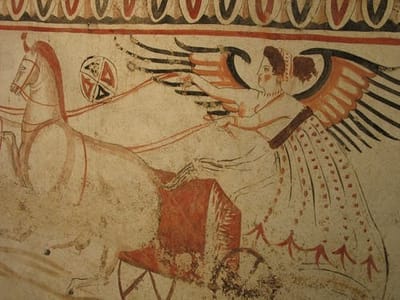


Faktum är att den mytologiska strukturen av den arketypiska hjälten inte bara finns i världsmytologi, utan även i litteratur och filmer i form av mono-myt till en hjältes äventyr i övernaturliga dimensioner. Till exempel har George Lucas använt sig av Campbells teori av mono-myten när han skapade Star Wars-filmerna. Till exempel det arketypiska berättandet om Luke Skywalker; ‘Departure’ ‘ Initiation’ och ‘Return’.
Departure handlar om hjältens försök att ge sig ut på ett ‘quest’, äventyrets kall. Initiation refererar till hjältens äventyr som testar honom på vägen. Return handlar om hjältens väg hem igen. Hjältens resa består helt enkelt av universala mönster som lyser av glans! Star Wars har denna numinösa känsla, nästan som en religiös sanning, speciellt och heligt som Hollywood tar vara på. Även The Matrix, The Lion King och Lord of The Rings använder sig av denna mytiska struktur till mono-myt! Frodo Baggins i Sagan om Ringen ja; Frodo är en individ vars liv var ganska bra och bekväm. Aldrig stött på krig. Han kunde enkelt ha levt kvar i The Shire i hela sitt liv, men han växte i förståelsen att ‘mörkret’ kunde förslava hela landet, Frodo tog på sig försöket att förhindra detta igenom att förstöra ringen. En klassisk beskrivning av en hjälte i mytologi! The meek hobbit hero and down-to-earth hero!
Klassisk ja, det fanns hjältar redan i antika Grekland, utan att i sig användas av Joseph Campbells mono-myt. ‘Blessed are the Heroes’! Kulten av hjälten i Homerisk poesi! ‘Blissful‘ är den som är initierad i mysteriet av hjälte-kulten. Grekisk poesi och sång som glorifierar hjältar från ett fjärran heroiskt förflutet- En ‘epic’ i form av Iliaden och Odyssen. I antik grekisk sångkultur, historien i Iliaden kändes inte bara som verklig utan också som sann. Faktum för den Grekiska hjälten, den ultimata ‘real-life’ upplevelsen inte är livet, utan döden. Herakles är modellen för alla hjältar, som tävlade i varje atletiskt event, och var bäst i Olympiaden. Han vann förstapris i varje gren. Det grekiska ordet för hjältens atlet-förmåga är athlos! Herakles heroiska dåd ledde till en heroisk sång, kleos, som sjungs till hans ära. Han blev helt enkelt dyrkad som en hjälte, så pass mycket att Herakles i mångt och mycket ansågs som en ‘savior’, precis som Achilles blev en episk kulthjälte, ‘immortalized’ efter döden. Dessutom enligt den traditionella mentaliteten av hjälte-kultur, när hjälten kommer tillbaka till liv får han ‘superhuman consciousness’. Och detta consciousness av hjälten, aktiverad av hjältekulten, informerar alla ‘initiated’ i kulten! Jodå, det fanns hjältar redan på antiken, dock väldigt annorlunda i jämförelsevis med Joseph Campbells mono-myt!
"Heroes hold a special place in our imagination. Names such as Odysseus, Beowulf, and Queen Guinevere summon up mythic legends, while Sherlock Holmes, Dracula, and Huckleberry Finn are some of the most recognizable figures in all of world literature. Robinson Crusoe and Elizabeth Bennet are as real to us today as they were when Daniel Defoe and Jane Austen first created them. Meanwhile, Frodo Baggins, Harry Potter, and Lisbeth Salander are heroes for our age and the legends of the future" - Thomas A. Shippey
--
Galactic Knight in Middle-earth: The Hero Skywalker's Path - a short Chat GPT FAN FICTION CROSS OVER story:
In the shadowed lands of Middle-earth, a new darkness stirred. Sauron, the Dark Lord, had forged a sinister alliance with a figure from another world - Darth Vader, a Sith Lord from a galaxy far, far away. Their goal was singular and terrifying: to bring both their realms under their unchallenged rule.
In this tumultuous time, a new Ringbearer emerged - Luke Skywalker, a young Jedi from Vader's world. He was guided by the wise Obi-Wan Kenobi, who had followed Vader through the stars to Middle-earth. With the One Ring secretly in his possession, Luke was Middle-earth's flickering hope against the encroaching darkness.
Aragorn, son of Arathorn, Legolas of the Woodland Realm, and Gandalf the White stood at the forefront of the resistance. They were faced not only with the armies of Mordor, but also with the might of the Sith Lords and the treacherous wizard Saruman, who had pledged his allegiance to Sauron and Vader.
The air was thick with the scent of impending war, and the skies echoed with the clash of lightsabers and the ring of steel. The forces of light and darkness collided with a fury that shook the very foundations of Middle-earth.
In the heart of this chaos, Luke Skywalker, empowered by the light of the Force and burdened with the corrupting power of the One Ring, faced his greatest challenge. Confronting Darth Vader and Sauron, he grappled with the seductive call of the Ring, which promised him the power to end the war and bring peace.
Obi-Wan Kenobi, ever his guiding star, reminded Luke of the Jedi way - to seek balance and resist the allure of absolute power. In a climactic battle, lightsaber clashed against the dark forces, and the fate of two worlds hung in the balance.
Luke, with the wisdom of Gandalf and the courage of Aragorn, Legolas, and the Fellowship, found the strength to resist the Ring's temptation. In a decisive moment, he unleashed the full power of the Force, aided by the inherent might of the Ring, not to dominate but to liberate.
The battle raged, and in its climax, Luke faced Vader and Sauron in a duel that would decide the fate of all. With a heart free of corruption and a spirit strengthened by his allies, Luke struck true, vanquishing the dark lords with a blaze of light from his powerful lightsaber.
In the aftermath, peace slowly returned to Middle-earth. The Ring, its dark allure broken by Luke's purity of heart, was unmade, its power dissolving into the winds of time. Luke, having fulfilled his destiny, prepared to return to his galaxy with Obi-Wan, leaving behind a Middle-earth free from the shadow of Vader and Sauron.
Thus ended the epic tale where heroes of light and darkness clashed, a testament to the enduring power of courage, friendship, and the indomitable spirit of those who fight for good in all realms.
--
In the smoldering ruins of what was once a battlefield, Luke Skywalker stood, lightsaber in hand, weary yet resolute. Across from him, the towering, menacing figure of Sauron loomed, his presence a dark cloud over the scarred land.
Sauron's voice, deep and beguiling, broke the silence. "Young Skywalker, you have proven yourself a warrior of great power and potential. Together, we could rule this world and your galaxy beyond. Join me, and I will show you the true extent of your abilities."
Luke's grip on his lightsaber tightened, his gaze unwavering. "I've seen what your 'rule' brings, Sauron. Oppression. Suffering. I'll never join you."
Sauron's laugh, cold and mirthless, echoed across the desolate landscape. "You misunderstand, Jedi. I offer not subservience, but partnership. With the power of the One Ring, you could bring order to the chaos of this universe. Imagine the peace you could enforce."
Luke felt the weight of the Ring in his pocket, its whisper a seductive murmur in his mind. "Peace through power and fear is no peace at all," he retorted. "The Force has taught me that true peace comes from understanding and balance, not domination."
Sauron, unrelenting, pressed on. "Think of the lives you could save, the wars you could prevent. With your strength and my guidance, we could end all conflict. The Ring would make you invincible."
A moment of hesitation flickered in Luke's eyes, a brief struggle as the Ring's allure tugged at his heart. But the memory of Vader, redeemed in his final moments, strengthened his resolve.
"No, Sauron. The Ring only brings despair. I've seen enough to know that true strength lies in compassion and courage, not in power and fear."
With a swift, decisive movement, Luke drew the Ring from his pocket and, mustering all his strength and will, he summoned the Force to his aid. The air crackled with energy as the Ring, caught in a beam of pure Force-light, began to dissolve, its power unraveling in the face of Luke's unyielding spirit.
Sauron, sensing the loss of his precious creation, roared in fury and lunged towards Luke. But it was too late. The Ring's destruction sent shockwaves through the Dark Lord, weakening him.
In the final confrontation, Luke, empowered by the light side of the Force, fought Sauron with a skill and determination born of his noble heart. As the battle raged, the sun broke through the dark clouds, casting its light over the land.
With a final, resounding clash, Luke's lightsaber found its mark, and Sauron's dark form shattered, his reign of terror ending in a burst of shadow and light.
As calm returned to Middle-earth, Luke looked upon the land with a sense of bittersweet victory. The Ring was no more, its promise of power dissolved in the face of true heroism. And with it, the darkness that had threatened to consume both his world and this had been vanquished.
In the end, Luke Skywalker chose the path of the hero, guided by the light of the Force and the wisdom of his mentors. And Middle-earth, once again, was free.
--
Luke Skywalker emerges as a true hero in this story through his unwavering commitment to the principles of the Force, his resistance to the corrupting allure of power, and his dedication to fighting for justice and peace. Despite the immense temptations of the One Ring and the persuasive arguments of Sauron, Luke remains steadfast in his belief that true strength lies in compassion, balance, and moral integrity, not domination or fear. His actions, driven by a selfless desire to protect others and preserve the balance of the universe, embody the quintessential qualities of a mythic hero: courage, wisdom, and a deep sense of responsibility to a cause greater than oneself.
Luke Skywalker's journey as a mythic hero, particularly in the context of the crossover story with Middle-earth, aligns closely with Joseph Campbell's concept of the Monomyth, or the Hero's Journey. Campbell's framework outlines a universal pattern that many mythic heroes across cultures and stories follow, and Luke's story is a quintessential example of this.
In contrast to Campbell's Monomyth, Luke's journey in this crossover story adds unique elements. He confronts challenges not just in his galaxy but in the realm of Middle-earth, facing new forms of evil like Sauron. This cross-universe adventure enhances his mythic status, making him not just a hero of his own world, but a universal symbol of courage, hope, and resilience. His ability to resist the allure of the One Ring and defeat the combined forces of darkness from two different universes further cements his place as a hero of mythic proportions. Luke Skywalker, the Galactic Knight of Middle-earth, embodies the hero's path in a way that transcends individual mythologies, becoming a symbol of the eternal struggle between light and darkness.
--
Final extra;
The Universal Holographic Force: Luke Skywalker's Ultimate Power;
In the expanded lore of Star Wars, there exists a concept that could profoundly impact the strength and abilities of a Jedi like Luke Skywalker, especially in a crossover universe where he confronts a formidable adversary like Sauron from Middle-earth. This concept revolves around the "holographic Force middle-chlorians," a hypothetical extension of the known Star Wars canon.
The Force, as understood in Star Wars, is an energy field created by all living things. It binds the galaxy together, and certain individuals, like the Jedi, can tap into this power. Midichlorians, microscopic life forms within the cells of all living beings, serve as indicators of one's potential to connect with the Force.
In this imagined scenario, Yoda, the wise and powerful Jedi Master, introduces a groundbreaking theory: the existence of "holographic Force middle-chlorians." These are a more advanced form of midichlorians, not just residing within the individual but also existing as a pervasive, interconnected network throughout the universe. They operate much like a hologram, where every part contains the whole, and the whole is reflected in every part.
This holographic nature implies that the Force isn't just an energy field to be tapped into, but a deeply interconnected web of energy that resonates across time and space. Each Jedi connected to this network can potentially harness not just their own strength but draw upon the collective power and wisdom of the Force itself.
For Luke Skywalker in this story, this revelation by Yoda opens up unprecedented possibilities. His strength is not merely his own; it is amplified by the holographic nature of the Force middle-chlorians. This means that Luke can access a deeper, more potent aspect of the Force, one that is enriched by the collective power and knowledge of all Force-sensitive beings across the universe.
This augmented connection explains Luke's extraordinary abilities to face and potentially defeat a being as powerful as Sauron. With the holographic Force middle-chlorians, Luke isn't just drawing upon his training or personal midichlorian count; he's channeling the combined might of the Force itself, making him an extraordinarily powerful Jedi.
Such a concept adds a layer of depth to the Force, suggesting that it's more than a mere power source; it's a living, breathing entity that connects all life. In Luke's battle against Sauron, this profound connection to the Force, enhanced by the holographic middle-chlorians, provides him with the strength, wisdom, and resilience needed to confront and overcome the darkness.
the western literary canon
Life and Literature



The Western Literary Canon in Context - En kurs jag kan rekommendera från The Teaching Company vars John M. Bowers, Ph.D. Professor är ett enormt fan av J. R. R. Tolkien's blockbuster The Lord of the Rings Trilogy - som har dominerat nutida kultur - men gör den sig förtjänt av kanonisk status? Utforska utvecklandet av denna trilogi - med rötter i Engelsk myt och legender- och upptäck hur denna 'fantasy epic' kvalificerar sig för medlemskap i 'the Western Literary Canon'
"The Western Canon is a master-class in how to read with the whole self" - Harold Bloom- Amerikansk litteratur kritiker- författare av The Western Canon : The Books and School of the Ages
--
Bonus article written by Tegedao of course:
Kleos and the Soul : The Quiet Glory
In ancient Greece, the concept of kleos—often translated as "glory" or "renown"—held deep significance, particularly in the context of the soul’s journey toward transcendence and spiritual fulfillment. While kleos traditionally referred to the immortal fame achieved through heroic deeds, philosopher-kings and spiritual thinkers of the time saw it as more than mere earthly recognition. They interpreted kleos as a form of spiritual gnosis, a deep, inner knowledge that led to the healing and unification of the soul. This inner glory was not about external achievements but about attaining a state of ataraxia—inner calm and tranquility.
For the philosopher-kings of ancient Greece, true kleos was not just the product of external valor but the result of a profound inner journey. This spiritual gnosis was seen as the highest form of wisdom, one that unified the soul and led to a state of divine harmony. Philosophers like Plato and later Stoics such as Epictetus and Marcus Aurelius explored these themes, emphasizing the importance of aligning the soul with the divine order of the cosmos.
Plato, for instance, in his dialogues, especially in The Republic and Phaedrus, discusses the soul's ascent to the realm of the Forms—the true reality beyond the physical world. For Plato, the ultimate goal of life was the realization of the Good, which he equated with divine truth. This realization brought the soul into harmony with the cosmos, granting it a form of kleos that was eternal and spiritual. The philosopher-king, as described in The Republic, is one who has achieved this state of gnosis and is therefore capable of ruling not just with justice, but with the wisdom that comes from understanding the true nature of reality.
Similarly, the Stoics, who were greatly influenced by earlier philosophical traditions, taught that true kleos was achieved by living in accordance with nature and reason. This meant cultivating virtues such as wisdom, courage, and temperance, which led to the healing and fortification of the soul. The Stoic concept of apatheia, or freedom from passion, aligns with this idea of inner calmness, where the soul is unshaken by external events and remains in a state of peace and resilience. For the Stoics, such a soul had achieved its own form of glory, a quiet kleos that came from mastery over oneself.
Ancient Greek Literature and the Healing of the Soul:
Several works of ancient Greek literature delve into the spiritual healing of the soul, often intertwining this with the concept of kleos. Homer's epics, The Iliad and The Odyssey, explore the theme of kleos through the heroic journeys of Achilles and Odysseus. However, beneath the surface of these tales of physical battle and adventure lies a deeper exploration of the soul's journey. Achilles, in his quest for kleos on the battlefield, ultimately faces the emptiness of such glory without spiritual understanding. Odysseus’s long journey home in The Odyssey can be seen as a metaphor for the soul’s return to its true nature, with the ultimate goal being the restoration of inner order and peace.
Plato's dialogues, as mentioned, offer a more direct exploration of the soul’s healing. In Phaedrus, Plato presents the myth of the charioteer, where the soul is depicted as a charioteer struggling to control two horses—one representing noble desires and the other base passions. The successful charioteer, who brings these forces into harmony, represents the soul that has achieved spiritual gnosis. This unification of the soul leads to a state of inner calmness and, consequently, to a form of kleos that is not dependent on external accolades but on the soul’s alignment with the divine.
In the Hellenistic period, the writings of philosophers like Plotinus, who founded Neoplatonism, further developed these ideas. Plotinus’s Enneads discuss the ascent of the soul to the One, the ultimate reality. This ascent involves purifying the soul of earthly desires and achieving unity with the divine source, resulting in a state of profound inner peace and spiritual glory. For Plotinus, this was the highest form of kleos—an eternal recognition within the divine order.
--
The spiritual gnosis that the philosopher-kings pursued was not just an intellectual endeavor; it was a transformative process that healed the soul, leading to its ultimate unification with the divine. This healing was often described in terms of achieving a state of ataraxia or apatheia, where the soul is free from the disturbances of the material world and is in harmony with the divine. Such a soul, according to these thinkers, had achieved true kleos—not the fleeting glory of heroic deeds, but the eternal renown of having aligned with the cosmic order.
This perspective on kleos redefines the concept from a focus on external fame to a profound inner realization. The philosopher-kings of ancient Greece, through their writings and teachings, offered a path to this spiritual gnosis, where the healing of the soul and the attainment of inner calmness were seen as the true marks of glory. Through their insights, they provided a timeless guide for those seeking not just to be remembered in history, but to achieve a form of eternal kleos within the soul itself.
--
This article connects to the Western literary canon by exploring how ancient Greek concepts like kleos and spiritual gnosis have influenced foundational texts and philosophical thought. Themes of the soul's journey, the quest for inner peace, and the pursuit of true glory are echoed in the works of Homer, Plato, and later Western literature, shaping narratives that emphasize the deeper, spiritual dimensions of human experience. These ideas continue to resonate in Western storytelling, contributing to the canon's exploration of the human condition and the search for meaning beyond the material world.
LIFE AND LITERATURE DIVINE STORY TELLING!
T.C. Boyle and Dante's Divine Comedy
CONTRASTING PROSE-STYLE AV MÄNSKLIGT STRÄVANDE
" I like to be an intellectual and write books and live in this society, but i also like to withdrawn into nature. Life is tragic and absurd and none of it has any purpsoe at all!" - T.C. Boyle
TC Boyle Homepage
--
Dante's Divine Comedy: A Gnostic Exploration of the Soul and the Cosmos:
(En artikel skriven av Tegedao of course)
Dante Alighieri’s Divine Comedy is often hailed as the greatest literary masterpiece in the Western canon, a magnum opus that transcends the boundaries of time, culture, and religion. While traditionally interpreted as a Christian epic, Dante’s work is also a profound exploration of the soul and the cosmos, viewed through a lens that resonates with the principles of gnosis. Rather than seeing Inferno, Purgatorio, and Paradiso as literal places, we can approach them as symbolic representations of the soul’s multiplicity, journey, and ultimate realization within the framework of a vast, holographic cosmos.
Dante’s Divine Comedy is not merely a theological treatise or a religious allegory; it is a map of the soul's journey through the cosmos, a journey that reflects the Gnostic quest for self-knowledge and divine union. In Gnostic thought, the material world is often seen as a flawed or illusory realm, a temporary state from which the soul must awaken. Dante’s work mirrors this sentiment, as his pilgrim traverses the treacherous landscapes of Hell, the arduous ascent of Purgatory, and the sublime spheres of Paradise.
In this context, Dante becomes a geographer of the cosmos, charting not just physical realms but the inner dimensions of the soul. The Commedia is a holographic map where every part reflects the whole, and each stage of the journey is a microcosm of the larger spiritual quest. The poet’s meticulous arrangement of materials—drawing on theology, philosophy, mythology, and personal experience—creates a narrative that is as complex as the soul itself.
Central to understanding the Divine Comedy through a Gnostic lens is the recognition of the soul’s multiplicity. The Inferno, Purgatorio, and Paradiso are not just stages of an afterlife journey but expressions of different states of consciousness and spiritual development. These realms represent the many layers of the soul, each with its own trials, lessons, and potential for transformation.
In Inferno, Dante explores the fragmented and tormented aspects of the soul, akin to the Gnostic concept of the soul's entrapment in the material world. The damned souls represent the consequences of ignorance and the soul’s disconnection from divine truth. However, this is not a static condition; it is a part of the soul’s journey toward awakening.
Purgatorio reflects the process of purification and integration, where the soul begins to shed its ignorance and align itself with higher knowledge. This is reminiscent of the Gnostic practice of asceticism and the pursuit of gnosis—knowledge of the divine within. The souls in Purgatory are not damned but are in a state of becoming, moving toward a more complete understanding of their divine nature.
Finally, Paradiso represents the soul’s reunification with the divine, an experience of ultimate gnosis. Here, the multiplicity of the soul is transcended, yet not obliterated, as it merges with the One, the source of all being. Dante’s ascent through the celestial spheres is not just a journey toward God but a journey into the deepest layers of the self, where the soul’s true nature is revealed in its fullness.
In the Divine Comedy, the care of the soul is paramount. Dante’s work can be seen as a guidebook for the soul’s journey, offering insights into the nature of sin, redemption, and divine love. However, when viewed through the lens of gnosis, this care of the soul is not just about moral rectitude or adherence to doctrine. It is about the awakening of the soul to its true nature, the realization of its divine origin, and its return to the source.
The Commedia encourages the reader to engage in this same journey, to explore the depths of their own soul and to seek the divine within. Dante’s intricate symbolism, his use of myth and allegory, and his profound psychological insight make the Divine Comedy not just a Christian epic but a universal exploration of the human condition.
In this way, Dante’s epic transcends its time and place, offering a vision of the cosmos that is as relevant today as it was in the 14th century. The Divine Comedy becomes a mirror in which we can see ourselves, our struggles, our aspirations, and our ultimate potential for divine union. It is this timeless quality, this universal applicability, that makes Dante’s work the single greatest literary masterpiece in the Western canon.
Dante Alighieri’s Divine Comedy is far more than a Christian allegory of sin, redemption, and salvation. It is a complex, multi-layered exploration of the soul’s journey through the cosmos, viewed through the lens of gnosis. Dante’s genius lies in his ability to weave together diverse elements—myth, philosophy, theology, and personal experience—into a coherent narrative that speaks to the deepest aspects of the human soul. By understanding Inferno, Purgatorio, and Paradiso as symbolic representations of the soul’s multiplicity, we can appreciate the Divine Comedy as a timeless guide to the care of the soul, one that resonates with the quest for self-knowledge and divine union that lies at the heart of the Gnostic tradition.
--
Dante Alighieri's Divine Comedy is often celebrated as a profound spiritual journey, a depiction of the soul's ascent from the depths of despair to the heights of divine union. Yet, when viewed through a nihilistic lens, the epic can also evoke questions about the futility of human striving toward the divine. For some, Dante's intricate portrayal of Hell, Purgatory, and Paradise may raise the unsettling question: What’s the purpose of it all? The Commedia offers a vision of hope, redemption, and divine purpose, but it also confronts us with the possibility that all human striving—whether moral, spiritual, or intellectual—might lead to nothing more than the acknowledgment of our own insignificance in an indifferent universe.
In this light, Dante’s Divine Comedy serves as both a testament to the human quest for meaning and a reminder of the profound existential questions that continue to haunt us: If all our efforts ultimately lead to the same inevitable end, what is the purpose of it all? For the nihilist, this question may remain unanswered, a reflection of the eternal struggle to find meaning in a world that offers none.
MÄNSKLIGT STRÄVANDE!?
"Ascension is no escape; there is nothing to escape from. Here is spiritual. Here is now. Here is physical. Here is where everything happens. Wake up and enjoy it!" - Story Waters gnostic/mystic
“Envision, create, and believe in your own universe, and the universe will form around you.” - Tony Hsieh
Book reviews
LIFE AND LITERATURE EXPLORATION BY TEGEDAO
Hitlers München av Svante Nordin handlar om hur staden München blev en central plats för Adolf Hitlers tidiga politiska karriär och nationalsocialismens framväxt. Boken skildrar stadens omvandling från ett kulturellt centrum till en politisk grogrund för extremism efter Första världskriget, och hur Hitler använde München som bas för att utveckla sin ideologi. Nordin undersöker stadens intellektuella och kulturella klimat under 1920- och 30-talen, samt hur dess invånare och institutioner bidrog till nazismens uppkomst. TEGEDAO GER BOKEN 3.5/5 I BETYG!
Läs merSTAR WARS : Lost Stars av Claudia Gray handlar om två barndomsvänner, Thane Kyrell och Ciena Ree, som drömmer om att bli piloter för Imperiet. När de växer upp och blir del av det Galaktiska inbördeskriget, finner de sig på motsatta sidor: Thane ansluter sig till Rebellerna medan Ciena förblir lojal mot Imperiet. Boken följer deras komplicerade relation – från vänskap och kärlek till fiender – och ger en ny syn på klassiska Star Wars-händelser, samtidigt som den utforskar teman om lojalitet, moral och krigets personliga konsekvenser. TEGEDAO GER BOKEN BETYG 4/5
Läs merBeyond the Known: How Exploration Created the Modern World and Will Take Us to the Stars av Andrew Rader handlar om människans ständiga strävan efter upptäckt och utforskning, från forntida sjöresor och upptäcktsresornas tidsålder till framtidens rymdresor. Boken kopplar samman historiska upptäcktsresor med dagens och framtidens rymdfärder, och argumenterar för att utforskning är avgörande för mänsklighetens överlevnad och utveckling. Rader diskuterar både tekniska utmaningar och filosofiska implikationer kring mänsklig utforskning, och gör en stark sak för att människan i framtiden behöver bli en multi-planetär art. TEGEDAO GER BOKEN 4/5 I BETYG!
Läs merHow to Fit All of Ancient Greece in an Elevator by Theodore Papakostas is a concise and engaging overview of ancient Greek history. The book presents key events, cultural developments, and notable figures of Greek civilization in a humorous and accessible way, making complex historical topics easy to understand. It's designed to provide readers with a quick yet meaningful glimpse into the world of ancient Greece. TEGEDAO GER BOKEN 5/5 I BETYG!
Läs merThis book is a reflective exploration of creativity as a universal force accessible to all. Rubin presents creativity not as a skill or talent, but as an inherent, spiritual energy that flows through us when we are open to it. He encourages readers to view creativity as a way of living—a mindful, inspired approach to life that illuminates our path and connects us to the greater rhythms of the universe. TEGEDAO GER DEN 5/5 I BETYG!
Läs merThe Story You Need to Tell by Sandra Marinella explores the healing power of writing, providing scientific insights, practical exercises, and inspiring stories to help readers use personal narrative as a tool for overcoming trauma, illness, and loss. The book combines Marinella's personal experiences with research on expressive writing, illustrating how writing can lead to emotional and psychological healing.
Läs merGregory Nagy's book "Ancient Greek Hero in 24 Hours" är en fascinerande och djupgående utforskning av konceptet av hjältar och hjältedåd i antikens Grekland. Boken är strukturerad som en serie på 24 "timmar" eller kapitel, var och en undersöker olika aspekter av den grekiska hjälten genom en omfattande analys av antika texter, främst Homeros 'Iliaden' och 'Odysséen', samt andra verk som tragedier och lyriska dikter. "Ancient Greek Hero in 24 Hours" en imponerande och insiktsfull bok som erbjuder en unik och djupgående blick på hjältebegreppet i antikens Grekland. Det är en värdefull resurs för alla som är intresserade av antikens kultur, litteratur och historia.
Läs mer"Psychedelic Apes" av Alex Boese är en fascinerande utforskning av mänsklighetens mer udda och okonventionella historiska och vetenskapliga händelser. Boken tar upp idén om hur vår uppfattning av verkligheten kan vara djupt felaktig, och utforskar fenomen som kollektiva hallucinationer och psykologiska anomalier. Genom en blandning av vetenskap, historia och populärkultur utmanar Boese läsarna att ifrågasätta sina egna uppfattningar om verklighet och fantasi, vilket ger en unik och tankeväckande inblick i de mer obskyra aspekterna av mänsklig kunskap och beteende. Tegedao ger boken 4/5 i betyg.
Läs mer"En sekund i taget" är en gripande dystopisk berättelse som följer en ung flicka, Hedvig, som blir ensam kvar i världen efter en katastrofal feberepidemi. Berättelsen skildrar Hedvigs kamp för överlevnad i en ödslig och förändrad värld, där hon måste hantera förlusten av sin familj och vänner. Boken är intensiv och fokuserar på Hedvigs inre resa såväl som hennes fysiska överlevnad.
Läs merDen finska författaren Arto Paasilinna står för ännu ett mästerverk i form av Paradisets Fångar. En hisnande berättelse om ett gäng överlevare på en indonesisk ö efter en flygkrasch i havet. Överlevnadsstrategi när den är som bäst sätts på prov och förvandlas till ett riktigt imponerade äventyr ute på en tropisk ö! Survival skills! Tegedao ger boken 5/5!
Läs merDenna historia handlar om en schimpans vid namn Sam som blir uppfostrad som en människa 'in the name of science'. Saknade apan djungeln? Kan Sam ha ett utbyte av idéer och möte i det kognitiva med en människa? Vad skulle vi göra om vi kunde förstå vad dessa varelser säger? Kan schimpanser lära sig att prata med människor och rentav bli en människa? T.C. Boyle vinklar dessa frågor i Talk To Me på ett fängslande vis!
Läs merbook review special : lincoln's melancholy
How Depression Challenged a President and Fueled His Greatness
Book Review: Lincoln's Melancholy: How Depression Challenged a President and Fueled His Greatness by Joshua Wolf Shenk
Joshua Wolf Shenk’s Lincoln's Melancholy offers a compelling and deeply researched exploration of how Abraham Lincoln’s struggles with depression shaped his life and leadership. Rather than portraying Lincoln’s melancholy as a personal weakness, Shenk argues that it was an integral part of his greatness, endowing him with the resilience, empathy, and philosophical depth that defined his presidency.
At the heart of the book is an inquiry into Lincoln’s mental health. Shenk meticulously examines historical records, personal letters, and eyewitness accounts to build a portrait of a man who lived with chronic depression, known in his time as “melancholy.” Unlike traditional biographies that focus on Lincoln’s external achievements, this book delves into his internal struggles—his bouts of despair, suicidal thoughts, and moments of overwhelming sadness. Yet, rather than being paralyzed by these afflictions, Lincoln channeled his suffering into a profound understanding of human nature and moral responsibility.
One of the book’s key strengths is Shenk’s ability to connect Lincoln’s mental state with his political philosophy. Lincoln’s intimate acquaintance with suffering, Shenk argues, helped him develop a stoic resolve and a deep sense of purpose. The author illustrates how Lincoln's tendency toward reflection and melancholy allowed him to confront national crises with a calm, measured approach, particularly during the Civil War. His speeches, from the Gettysburg Address to the Second Inaugural, reveal a leader who had wrestled with suffering on a personal level and applied those lessons to the collective struggles of the nation.
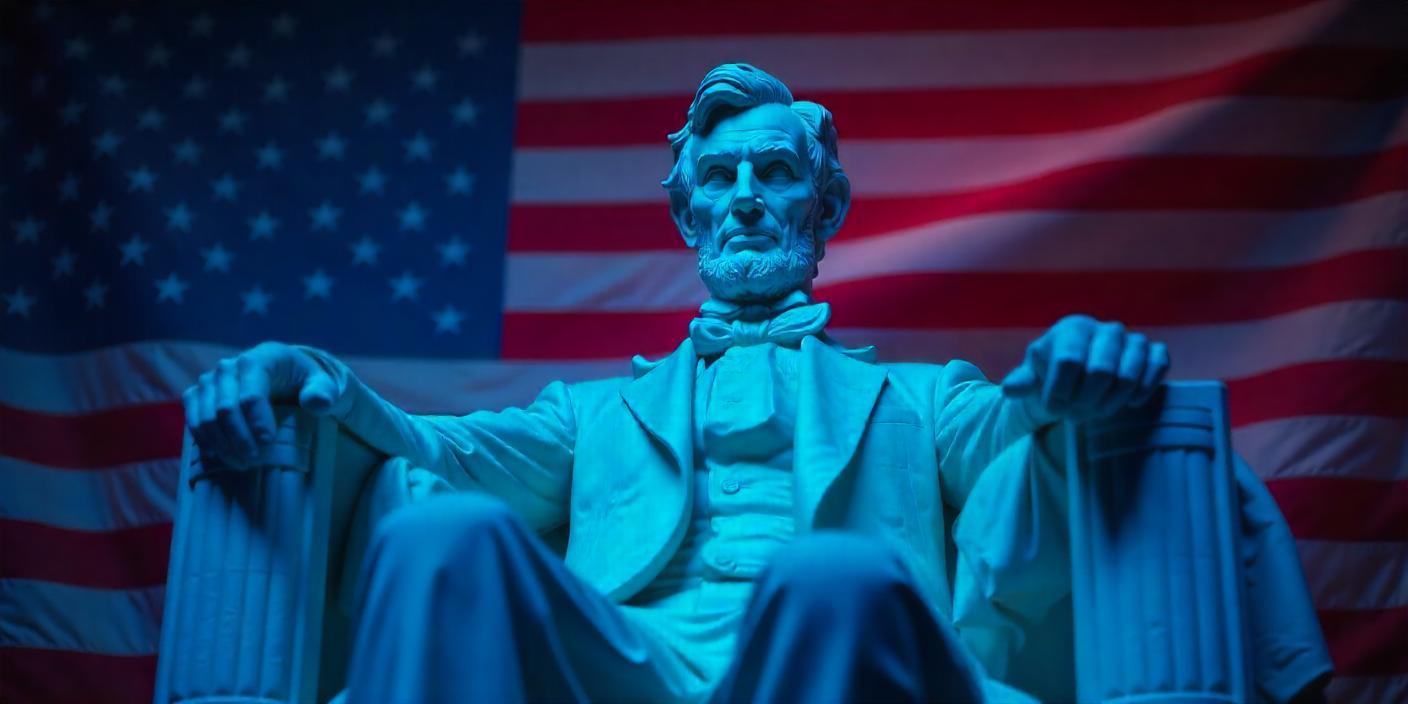
Shenk also challenges the conventional view that Lincoln simply “overcame” his depression. Instead, he shows that Lincoln integrated his suffering into his identity, using humor, storytelling, and a sense of mission to transform his anguish into action. The book highlights how Lincoln sought solace in literature, poetry, and philosophical musings, particularly works by Shakespeare and the Bible, which provided him with a framework to process grief and hardship.
Beyond its historical analysis, Lincoln’s Melancholy offers a broader reflection on the relationship between mental illness and leadership. Shenk’s work suggests that suffering, rather than being an impediment, can cultivate wisdom and resilience. This perspective challenges modern assumptions about mental health, particularly in the realm of politics and leadership, and invites a more nuanced understanding of how personal struggles shape public figures.
Despite its many strengths, the book occasionally veers into speculation, as psychological analysis of historical figures inevitably does. While Shenk relies on extensive primary sources, some of his interpretations about Lincoln’s inner thoughts remain inferential. However, this does not detract from the book’s overall contribution to both Lincoln studies and the broader discourse on the intersection of mental health and leadership.

Lincoln’s Melancholy is an insightful and moving portrait of one of America’s greatest presidents, offering a fresh perspective on his character and leadership. By reframing Lincoln’s depression as a source of strength rather than weakness, Shenk crafts a powerful narrative about the human capacity to endure and transcend suffering. For those interested in history, psychology, or leadership, this book is a must-read. TEGEDAO GER BOKEN 5/5 I BETYG!
Lincoln’s Melancholy and the Creative Depression: Harnessing the Dark Night of the Soul for Resilience and Success
The profound suffering that Lincoln endured can be examined through the lens of creative depression and the "dark night of the soul," concepts that have played a crucial role in psychology, philosophy, and personal development. Far from being a mere obstacle, melancholia can serve as a catalyst for profound transformation, allowing individuals to cultivate wisdom, resilience, and a deep sense of purpose.
The Psychological Foundations of Creative Depression
In modern psychology, periods of deep emotional distress are often linked to personal growth and creative breakthroughs. The idea of "post-traumatic growth" suggests that those who undergo adversity may emerge with greater emotional intelligence and problem-solving abilities. Lincoln’s journey provides a powerful example of this phenomenon. His melancholia did not consume him; rather, he channeled it into deep contemplation, humor, and a sense of duty to a cause greater than himself.
Carl Jung’s theory of individuation aligns closely with this idea. Jung proposed that personal suffering and inner conflict are essential for achieving a fully realized self. According to Jung, the individual must confront their unconscious shadows, fears, and weaknesses in order to integrate them into a unified, authentic self. This process often requires what he termed a "creative depression," a necessary descent into the depths of the psyche before true transformation can occur.
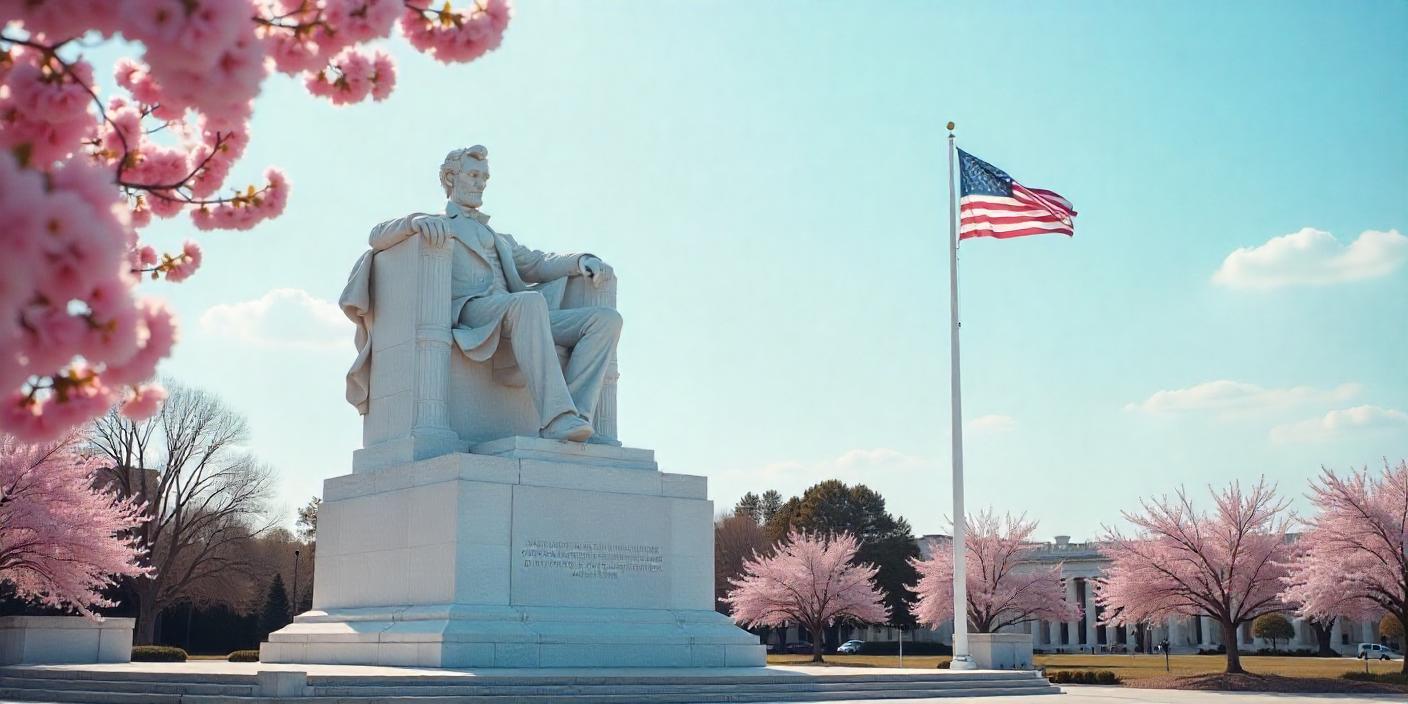
Lincoln’s Transformation Through Melancholy
Lincoln’s life mirrored this psychological process. He was no stranger to despair, yet he did not allow it to break him. Instead, he used his suffering as a means of cultivating wisdom, empathy, and a sense of higher purpose. His ability to remain calm in the face of adversity, particularly during the Civil War, suggests that his struggles had prepared him for the immense burden of leadership.
Lincoln’s resilience was not just political but deeply personal. He found solace in poetry, literature, and philosophy, engaging with the works of Shakespeare and the Bible to process his grief. His speeches, infused with emotional depth and moral gravity, reveal a leader who had wrestled with suffering on an intimate level and had, in turn, transformed it into a source of strength.
The Path to Success Through Suffering
Lincoln’s story provides a model for artists, writers, and visionaries who struggle with melancholy. His life demonstrates that suffering is not a roadblock to success but can instead serve as a gateway to wisdom, creativity, and resilience. Many of history’s greatest creators—Nietzsche, Van Gogh, Dostoevsky—endured profound suffering, yet they transmuted their pain into works of enduring brilliance.
Modern psychology continues to support this view, emphasizing the importance of embracing adversity rather than suppressing it. The concept of "radical acceptance" in therapy encourages individuals to acknowledge their suffering without judgment, using it as an opportunity for growth. This mirrors Lincoln’s approach: he did not flee from his melancholy but integrated it into his identity, allowing it to shape his vision and purpose.
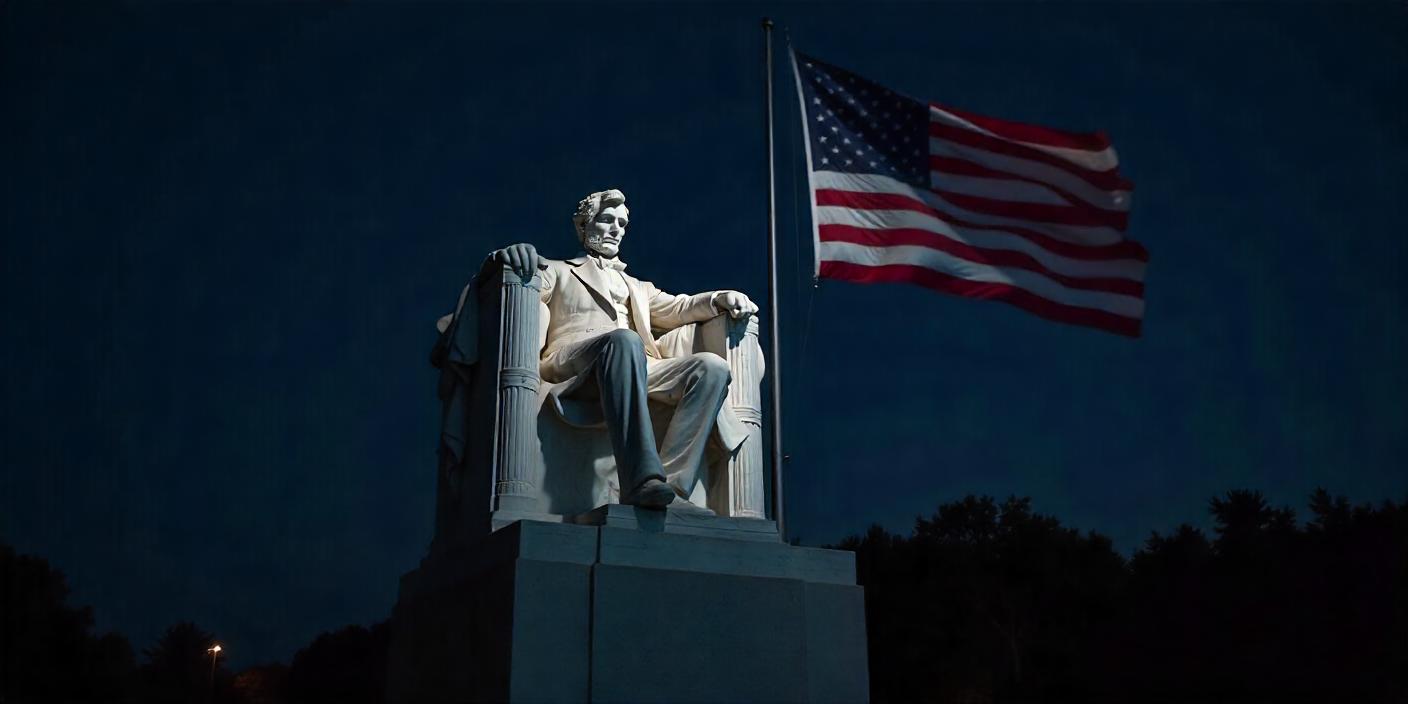
Conclusion: The Astonishing Power of Lincoln’s Transformation
Abraham Lincoln’s ability to harness his depression and turn it into a source of strength is truly remarkable. His story is not just one of political greatness but of personal triumph. His example serves as a reminder that suffering, when approached with wisdom and resilience, can be transformed into a powerful force for creativity, calmness, and even abundance. His legacy challenges us to reconsider our own struggles—not as impediments but as stepping stones to profound personal and creative transformation.
THE STORY BROTHERS
From Blank Page to Epic Tale. Let AI breathe life into your story ideas.
CHECKA IN MIN OCH BROSSAS BLOG OCH YOUTUBE KANAL : THE STORY BROTHERS - VIDEON OVAN ÄR MIN OCH BROSSAS INTRODUKTION TILL THE HERO'S JOURNEY STORY TALKS!
>>STORY BROTHERS BLOG
>>STORY BROTHERS YOUTUBE KANAL
--
" Hello, fellow storytellers and dreamers! We are thrilled to introduce ourselves as The Story Brothers. Today, we're here to extend a heartfelt invitation for you to join us as we venture into the boundless realms of creativity with generative AI as our guide.
Our journey is not just about telling stories; it's about exploring a wave that possibly will end up revolutionizing the way stories are conceived, nurtured, and shared. With the power of generative AI, we stand on the brink of a new era where storytelling transcends traditional boundaries. Our mission? To empower you and ourselves with dramatically enhanced capabilities in storytelling, to democratize the art of weaving tales, and to transform every one of us from passive consumers into energetic creators.
The essence of our project lies in its purpose - to use generative AI as a catalyst for storytelling, and maybe, who knows, - storytelling innovation. All of a sudden we can turn our wildest ideas into tangible stories, to see our thoughts come alive with the support of AI. This isn't just about leveraging technology; it's about opening a gateway for everyone to tell their story and, among many things - fostering a positive impact on well-being and purpose.
In this journey, we believe that everyone has a story worth telling. So you are more than welcome to join us, The Story Brothers, as we explore the vast expanse of narrative possibilities. Let's empower ourselves with the magic of generative AI and turn the page to a new chapter in storytelling. Together, we'll discover just how far we can take our stories and how deeply they can touch the hearts of others. Welcome aboard this exciting journey towards becoming more than just storytellers - becoming creators of worlds." - THE STORY BROTHERS MANIFESTO!
Eleven-Labs
Skapa dina egna ljudboks short-stories!
ElevenLabs är en avancerad röstgenereringsteknologi som möjliggör skapandet av realistiska och anpassningsbara röstnarrationer för ljudböcker, inklusive short stories. Med hjälp av artificiell intelligens kan användare välja från ett brett utbud av röstalternativ och modifiera dem för att passa specifika karaktärer eller stämningar i deras berättelser. Detta gör det enkelt och effektivt för författare och kreatörer att producera högkvalitativa ljudboksberättelser utan behov av professionella röstskådespelare eller dyra inspelningsstudior, vilket öppnar upp nya möjligheter för kreativt berättande och distribution av ljudinnehåll.
Att skapa ljudboks-short storys med ElevenLabs kan vara en mycket rolig och givande process. Till exempel;
- Röstpersonalisering: ElevenLabs tillåter dig att anpassa rösten som används för att läsa upp din berättelse. Du kan välja bland olika rösttyper, tonfall och till och med dialekter för att matcha din karaktärs personlighet eller berättelsens stämning. Att experimentera med olika röster för att hitta den perfekta matchningen kan vara både roligt och fascinerande.
- Kreativ frihet: Med ElevenLabs har du friheten att ge liv åt dina berättelser precis som du föreställer dig dem. Du kan skapa unika karaktärer och miljöer utan de begränsningar som traditionell ljudboksproduktion kan innebära. Detta öppnar upp för oändliga möjligheter att experimentera med ditt berättande.
Kort sagt, att skapa ljudboks-short storys med ElevenLabs erbjuder en kreativ lekplats där du kan utforska berättande på nya och spännande sätt - en kreativ och underhållande process! Lär dig att använda ElevenLabs vettja!
ElevenLabs hemsida >> https://elevenlabs.io

Se nedanför för mina ljudböcker short-stories med hjälp av ElevenLabs!
'ElevenLabs has emerged as a groundbreaking platform, pushing the boundaries of text-to-speech technology to create immersive audio experiences. Its significance in the realm of creative audiobook and short story production cannot be overstated. ElevenLabs stands as a testament to the power of AI in expanding the horizons of storytelling. Its contribution to the creation of creative audiobooks and short stories is profound, offering an unparalleled blend of accessibility, diversity, and innovation. As technology continues to evolve, the potential for even more advanced and realistic audio experiences is boundless, promising a bright future for storytellers and audiences alike.'
LJUDBÖCKER
Min Tegedao's egna texter omvandlande till ljudboks short-stories med hjälp av ElevenLabs! LIFE AND LITERATURE! Strictly English!
Articles
Exploration Life and Literature by Tegedao
Hjältar under The Heroic Age är i grekisk mytologi väldigt viktig! Det har skildrats storartat i Homer's Epics Iliaden och Odysséen
Läs merThe Irish Renaissance var en litterär rörelse som tog form vid slutet av 1800-talet. Ett sant 'revival' av allt Irish- Celtic Twilight!
Läs merThe Aenid skriven av Virgil är det stora nationella 'epic' av antika Rome. En fängslande hjälte-historia iscensatt av självaste GUDARNA!
Läs merProse Edda skriven av Snorre Sturlason under Vikingatiden från Island är en fängslande historia involverat diverse Norska gudar och dess mytologi i en salig blandning under denna epok.
Läs merDen ryska själen är påtaglig i dess litteratur och mytologi. Allt från klassiska verk till 'fairy-tales; jag behandlar en sådan historia i form av Firebird.
Läs merExplores the profound and continuous impact of ancient myths on contemporary society. The article delves into how these timeless stories have been adapted and reimagined across various mediums, including literature, film, art, and psychology.
Läs merThis article offers practical strategies and insights for authors looking to enhance their creative writing skills, especially in crafting mythic narratives. Aimed at writers who aspire to enrich their storytelling abilities. The article also explores the innovative integration of artificial intelligence, specifically ChatGPT, in the field of creative writing and provides insights into how AI can augment human imagination and creativity in writing!
Läs merAeschylus' "Prometheus Bound" centers on the titan Prometheus and Sophocles' "Oedipus Rex" is a tragedy about King Oedipus of Thebes. Human spirit and divine insights in Greek tragedy.
Läs merThis article provides a psychological exploration of the spiritual themes in Shakespeare's tragedies. It delves into "Hamlet," "Macbeth," and "King Lear," examining how these plays portray the human soul's struggles with existential crisis. And also explores the deeper psychological and spiritual themes in Shakespeare's comedic works like "A Midsummer Night's Dream," "As You Like It," and "Twelfth Night"
Läs merGnostic themes present in the Harry Potter series. Harry Potter's role as a Gnostic saviour, whose journey of self-discovery and enlightenment reflects the path to Gnostic salvation. Includes Holosophy wisdom.
Läs merThis article explores the history and significance of the ancient Library of Alexandria. It highlights the library's role as a major center of wisdom, philosophy, spiritual and scientific research in the Hellenistic world. LIFE AND LITERATURE LIBRARY!
Läs merSpiritual literature and Adventures in Consciousness
SOUL SEARCHING BY TEGEDAO LIFE AND LITERATURE
Gud är överallt och del av allt istället för att existera i någon separat sfär. Vi är alla en del av ett stort universum som skapade oss och allt omkring oss. Universum är ett spel. Gud spelar med sig själv. Alan Watts förklarar hur en persons identitet gör dem till centrum av universum och beskriver att universum har mening bara om varje individ placerar sig själv till centrumet av det. Alan Watts var central i introducerandet av 'Eastern' filosofiska och religiösa tänkesätt till 'Western readers' på 60-talet. Denna boks huvudtes är att vi blivit berättade att vi bara är isolerade varelser 'unconnected' till resten av universum.
Michael Talbot( 1953-1992) - Mysticism and the New Physics:
Var en Amerikansk författare av flertalet böcker betonandes paralleller emellan antik mysticism och quantum mechanics. Han föreslår att att det fysiska universum påminner om ett hologram. I denna bok behandlas Quantum Physics och dess relation till 'consciousness' och universum - i en kombination med vetenskap, filosofi, metafysik och mysticism.
Story Waters - You Are God - Get Over It:
En spirituell författare som hjälper folk att 'connecta' med sin 'spirit icke-beroende av en extern person, organisation, religioner eller dogma. Du kommer upptäcka att det finns inget du inte kan vara - för du är allt. Du är Gud - även om du för närvarande är inom valet till att temporärt tro att du 'bara' är människa. Detta är att förstå att en grundläggande aspekt av att vara människa är at du har glömt bort att du är Gud. Gud och 'consiousness' är det samma då det både beskriver All-That-Is. Vad som helst som är och besitter kvaliteten av 'isness' är Gud. Evolutionen i spiritualitet typifierar detta som 'God within' utan det ritualiserade beteendet av religion. Medan du startar till att uppleva din förening med All-That-Is kommer du uppvakna till ditt 'creatorship' och din eviga natur. Gud är det som skapar sig själv - skaparen och det skapade. Att säga att Gud är evigt fri är att säga att du kan bli vad som helst. Du är Gud väljandes vara dig själv. Att uppleva ditt 'infinite self' som är din 'spirit' - är att uppleva dig själv som skaparen av din verklighet. Detta är att leva i nuet där det inte är någon separation med din vilja och dess relation till verkligheten; to 'consciously' be God - måste du tro att du är Gud. Varje en av oss är vad religion kallar för Gud. Detta beskriver gnostic/mystic Story Waters fint i You Are God - Get Over it och i flertalet av hans andra spirituella böcker. Konstigt va!?
Fred Alan Wolf -The Spiritual Universe:
En stor fysiker född 1934 och författare som gör research emellan relationen av 'quantum physics' och consciousness. I denna bok Fred Alan Wolf frambringar det mest moderna perspektivet till de mest antika frågorna av religion och filosofi. Han utforskar de möjliga spirituella aspekterna i relation till Quantum Physics. Han tar även upp teman som 'spirit', rymden, tid och consciousness och det möjliga ursprunget av universum; 'We are living in this incrideble miracle we call the universe, have to begin to recognize that we are not just in it - we are it'- Fred Alan Wolf.
Deepak Chopra - You Are the Universe : Discovering your Cosmic Self and Why It Matters:
Deepak Chopra, född 22 oktober 1946 i Delhi, är en indisk-amerikansk författare inom New Age.
I denna bok beskriver han om hur Universum som människan upplever är levande, kreativ och utvecklandes till magnifika strukturer. Till skillnad från ett ’unconscous’ och dött universum. För människor, att ’participating’ i universum är hur vi existerar. Innan universum kan ha ett ’mind’, måste vi förstå vårt eget ’mind’. Evigheten indikerar att människor är ’children of the cosmos’. Våra liv är bortom begränsningen av tid. THE COSMIC SELF! Verkligheten är all-inklusiv och ett mirakel, människan kan omfamna en evig variation av vad verkligheten kan erbjuda. Varje perception är en akt av deltagande i verkligheten. Yttre livet och inre livet ’move as one’. Om kosmos har ett ’mind’, borde den vara levande. Du är inte i universum. Universum är i dig. ’Consciousness’ är närvarande i allt. Man kan säga att ditt syfte är att förbinda dig själv med kreativiteten av kosmos. Detta är din ’birth-right’ till utforskning! ’Pure conciousness’ ger liv åt allt, inklusive det mänskliga ’mind’. Cosmic consciousness producerade universum som ett levande själv-organiserande system. ’Master your self, and you master the universe!’.
‘When you gaze out at the night sky with its awe-inspiring display of stars and galaxies, do you ever ask yourself if it could be possible that you are actually looking into a mirror? What if we inhabit a universe that perfectly fits our needs here on Earth -- a truly human universe? You are the universe. Each of us is a cocreator of reality and we can uncover the hidden dimensions where consciousness is a field of infinite possibilities.’ - Deepak Chopra
Neville Goddard (1905-1972) var en modern mystic från Barbados. Han skrev bland annat boken 'Imagination Creates Reality'. Där han skriver att din egna fantastiska mänskliga 'imagination' är faktiskt den kreativa kraften av Gud inom dig. Det är din 'räddare'. Awakened Imagination. Din 'imagination' är verktyget du skapar din verklighet med. Allt du kan föreställa dig och tänkt ut existerar i din personliga 'Heaven. Du är GUD. Detta är din verklighet. Be Still And Remember You Are God - I AM är inte en Gud utanför dig - men Gud inom dig. Gud är i varje människa - det är därför vi alla är ONE. Livet är en dröm och du kan välja vad du vill drömma. Du är Gud och du har manifesterat ett helt universum som du inte är separerad från! Du är GUD av din verklighet - 'Everyone is you pushed out'. Varje person du stöter på i ditt liv är en spegel av dig själv. Vi är ett 'consciousness' och våra kroppar skapades i stjärnor utvecklad från supernovas! STARDUST! Konstigt va!?
Ta den här litteraturen med en nypa salt. Det låter väldigt konstigt, främmande och svårt att förstå - men banbrytande i alla fall! Mind-blowing!?
--
'A meek man is one who is in complete control of his moods' - Neville Goddard Collection
Sann 'meeknes' är född från 'the state of being' i kontakt med själen - ett naturligt tillstånd inom oss alla som reflekteras i vårt liv i form av energi, förtroende och lugn! Majesty of Calmness!'Calmess comes ever from within. It is the peace and restfulness of our nature'.
Adventures in Consciousness Chat GPT generated article:
The human mind, a vast and uncharted territory, has been the subject of fascination throughout history. This article explores a transformative journey through consciousness, connecting the dots between Joseph Campbell's monomyth, Carl Jung's process of individuation, and the profound realization of one's potential as a reality creator, akin to the insights shared in Story Waters' "You Are God - Get Over It." This exploration is not just an academic exercise; it's an adventure in consciousness, revealing the depths of the human spirit and its connection to the universal source.
Joseph Campbell's concept of the monomyth, or the Hero's Journey, presents a universal pattern found in narratives worldwide. This journey starts with a call to adventure, leading the hero away from the mundane world into a realm of challenges, trials, and transformations. The hero faces a decisive crisis, gains a significant victory, and returns transformed with insights beneficial to their community. This narrative framework is more than a storytelling tool; it mirrors an inner psychological journey where one faces and overcomes personal fears and limitations.
Carl Jung's theory of individuation parallels the Hero's Journey. It's a process of integrating the conscious and unconscious aspects of the psyche, leading to the realization of the Self. Jung believed this journey involved confronting and reconciling opposites within the psyche, such as the persona (public face) and the shadow (repressed aspects). Through dreams, symbols, and creative expression, individuals embark on a journey towards self-discovery and wholeness.
The journey through consciousness is akin to alchemical processes, where psychological 'base materials' are transformed into 'spiritual gold.' This transformation often involves healing from past traumas and embracing one's shadow, leading to the discovery of inner talents and strengths. By acknowledging and integrating these aspects, one undergoes a profound personal transformation, unlocking potentials that lay dormant within.
The concept of being a reality creator, popularized in the teachings of Seth (channeled by Jane Roberts) and Story Waters' "You Are God - Get Over It," represents the pinnacle of this transformative journey. This perspective holds that individuals are not mere passive participants in their lives but active creators of their reality. By tapping into their inner source and understanding the power of thoughts and beliefs, they can shape their experiences and perceive the world in a more empowered and interconnected way.
The ultimate insight of this adventurous journey in consciousness is the realization of one's divine nature. This awakening is not about egoic grandiosity but recognizing the inherent connectedness with all that is. It's an understanding that the individual self is a unique expression of a larger, universal source. This realization brings profound responsibility and freedom, as one becomes aware of their role in co-creating their reality and contributing to the collective consciousness.
The adventures in consciousness, spanning from the Hero's Journey to the realization of oneself as a reality creator, represent a profound and transformative process. It's a journey that delves into the depths of the psyche, heals the spirit, uncovers hidden talents, and ultimately leads to a profound awakening. This journey is not just a personal endeavor; it's a collective one, where each individual's transformation contributes to the evolution of human consciousness. In recognizing our interconnectedness and divine nature, we step into a more conscious, empowered, and harmonious way of living.
The holographic theory, when applied to the journey of consciousness discussed in this article, offers a fascinating perspective. It suggests that the entire universe is a vast, interconnected hologram, where each part contains the whole. In the context of personal transformation and reality creation, this implies that each individual's inner journey reflects and affects the greater whole. By undergoing the Hero's Journey, engaging in Jung's individuation, and realizing our potential as reality creators, we're not just transforming ourselves but also influencing the larger holographic universe. This aligns with the idea that our thoughts, beliefs, and inner changes have far-reaching impacts beyond our personal experience, echoing throughout the entire cosmic hologram.
This article ADVENTURES IN CONSCIOUSNESS highlights the profound role of storytelling in shaping our understanding of ourselves and life. It draws from Joseph Campbell's monomyth and Carl Jung's individuation process to illustrate how narratives, both in literature and in our personal lives, serve as powerful tools for psychological and spiritual growth. Storytelling is not just a means of entertainment but a reflective mirror, guiding us through the complexities of the human experience. It helps us make sense of our journeys, uncover deeper truths, and connect with universal themes of transformation, self-discovery, and the realization of our innate potential. Through the stories we tell about ourselves and those we find in literature, we engage in a continuous process of learning, evolving, and understanding our place in the broader tapestry of life.
--
Klicka gärna här för min spirituella hemsida>> CODE HOLOSOPHY - TEGEDAO SPIRITUALITY
SPIRITUAL BOOK REVIEW SPECIAL
The Dharma Bum's Guide to Western Literature: Finding Nirvana in the Classics
Book Review: The Dharma Bum's Guide to Western Literature: Finding Nirvana in the Classics by Dean Sluyter
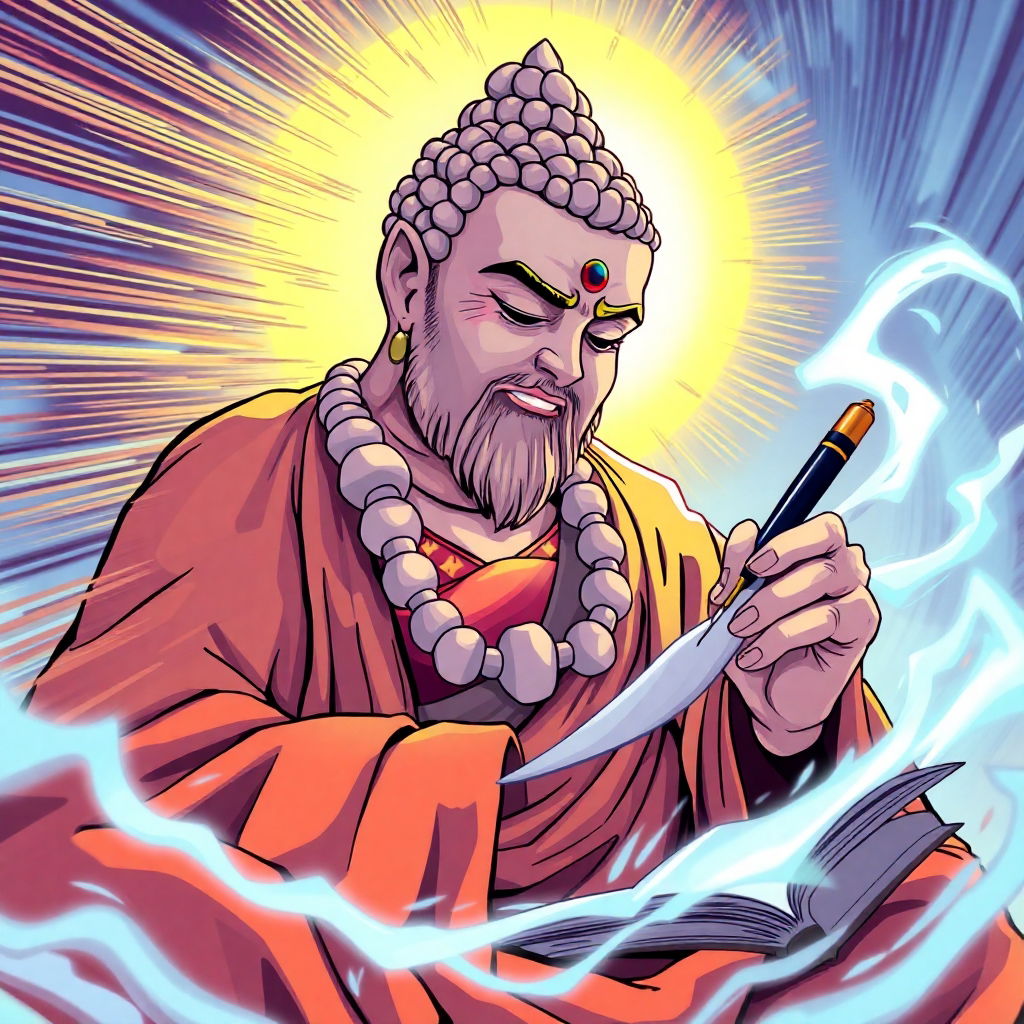
Dean Sluyter's The Dharma Bum's Guide to Western Literature: Finding Nirvana in the Classics is a delightful, enlightening journey through the Western literary canon, seen through the prism of Eastern philosophy, particularly Buddhist wisdom. Drawing inspiration from Jack Kerouac's spiritual adventurism in The Dharma Bums, Sluyter functions as both a seasoned literary guide and a dharma teacher, taking readers on an insightful expedition through time-honored texts to uncover moments of stillness, awakening, and transcendence within the heart of Western literature.
This book is not simply literary criticism, nor is it strictly spiritual philosophy. It is a hybrid—part memoir, part reading guide, part meditative commentary—blending Sluyter's personal reflections with astute literary observations. What makes this guide unique is Sluyter’s ability to bridge the gap between seemingly disparate traditions: he reveals how Shakespeare, Melville, Dickinson, and other canonical Western authors can express truths that align with the core of Buddhist mindfulness and non-duality.
Sluyter delves into classics such as Moby-Dick, Leaves of Grass, Hamlet, and even The Great Gatsby, examining the ways in which these works hint at or directly engage with the timeless qualities of presence, emptiness, and the dissolution of ego. In one particularly profound section, Sluyter discusses Melville's Ishmael as a figure of awakening—one who survives not by triumph but by surrender, floating on Queequeg’s coffin like a Zen monk in the midst of the oceanic void.
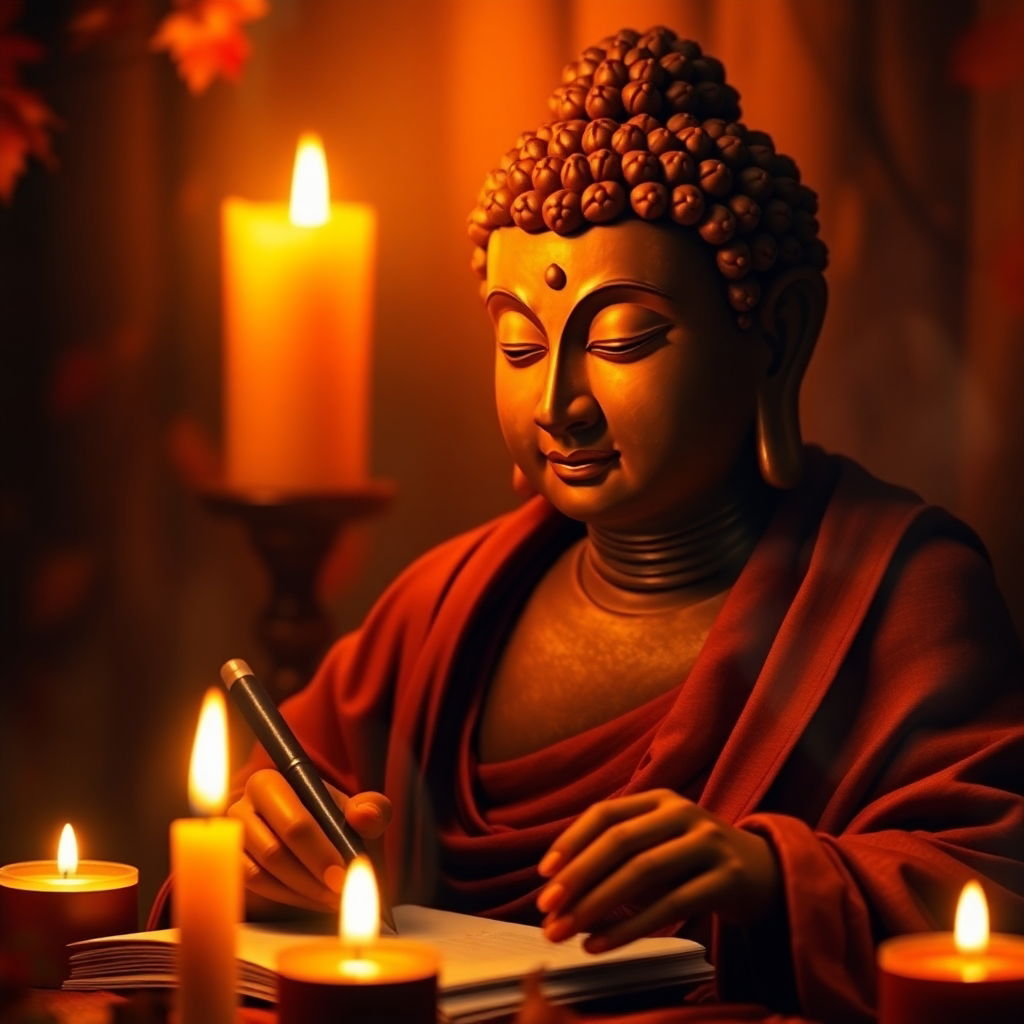
Walt Whitman emerges in Sluyter's discussion as the ecstatic bodhisattva of American letters. Sluyter illuminates the way Leaves of Grass pulses with a tantric embrace of the now, an open-hearted affirmation of all experience. Through this lens, Whitman's exuberant self-expression is no longer mere egotism but a dissolving of the self into the universal “I am.”
The book also takes unexpected turns, such as a reading of The Catcher in the Rye that casts Holden Caulfield not merely as a disaffected teen, but as a modern seeker disillusioned with the illusions of self and society. Sluyter’s reading of Holden’s yearning for authenticity places him in the tradition of the koan—a riddle meant to break the rational mind and open the heart to direct experience.
What sets Sluyter apart from many commentators is his voice: humble, warm, funny, and deeply sincere. He invites us not to be scholars dissecting texts from a distance, but fellow travelers encountering them anew—as if we were reading them for the first time, with a quiet mind and open heart. His anecdotes about meditation retreats, teaching high school English, or his own early experiments with psychedelics and silence are offered with humor and compassion, never arrogance.
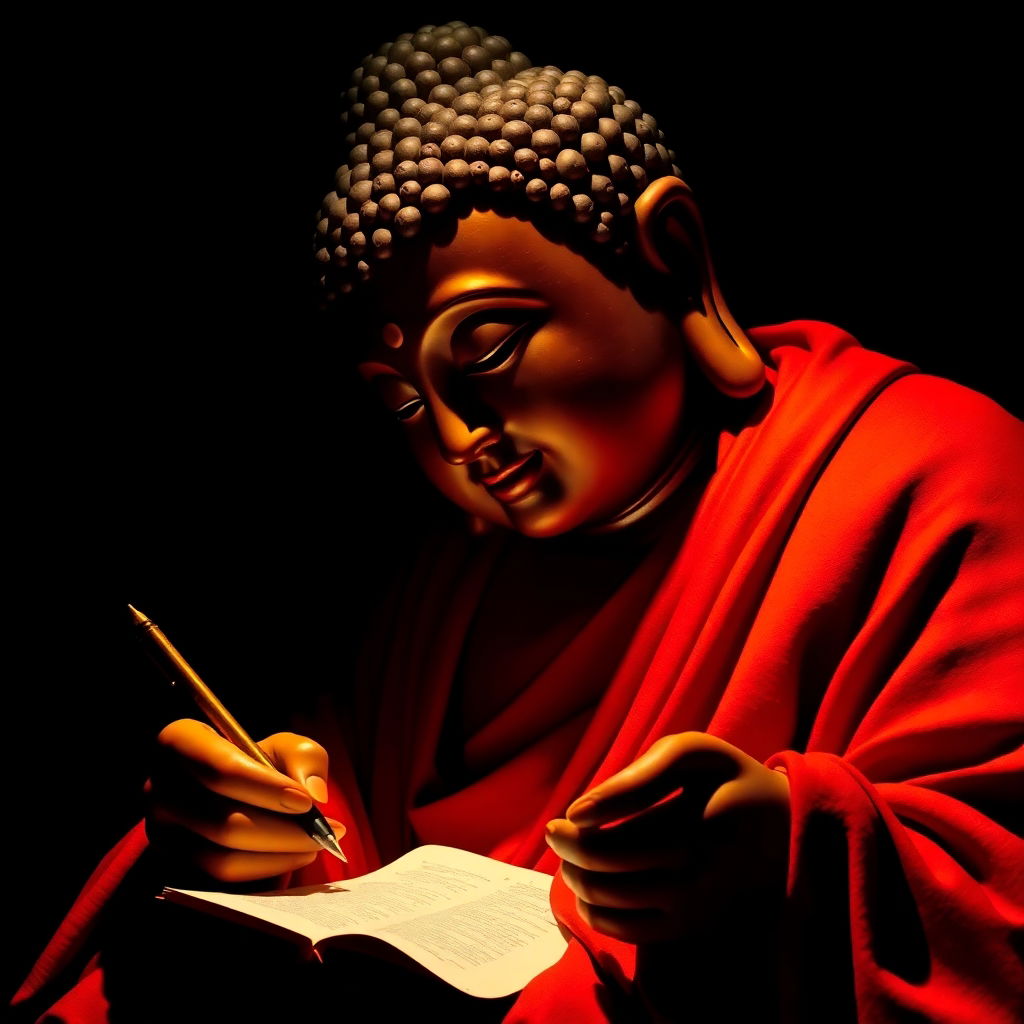
Though the book draws deeply on Buddhist principles, it is never dogmatic. Readers need not be Buddhists—or even particularly spiritual—to find meaning here. Sluyter is careful to present mindfulness as an experiential reality rather than a belief system. He honors the mystical and the mundane, the sacred and the profane, recognizing the potential for enlightenment in every moment and every page.
For anyone who has ever felt that literature can awaken us to something beyond words, this book will be a revelation. For those who’ve never considered the connection between a Shakespearean soliloquy and the stillness of zazen, Sluyter offers an open door. It is rare to find a book that so gracefully marries the beauty of great literature with the clarity of spiritual insight.
The Dharma Bum's Guide to Western Literature is not just about reading more deeply—it’s about living more deeply. Whether you're a lifelong meditator, a literature lover, or simply a curious soul, this book is a reminder that wisdom is not confined to any tradition, and that nirvana might just be found in the lines of a novel, a poem, or a play.
Rating: 5/5
TEGEDAO EXTRA FAVOURITE PART IN THE BOOK:
William Blake: The Mystic Visionary of Mindful Revelation
In the Light of Dean Sluyter’s “The Dharma Bum’s Guide to Western Literature”
In The Dharma Bum’s Guide to Western Literature, Dean Sluyter casts a luminous and playful light on the great authors of the Western canon, reimagining them as unlikely dharma teachers—bearers of enlightenment in poetic disguise. Among the most fitting of these is William Blake, the English poet, artist, and mystic whose visionary works burst with spiritual intensity and transcendent symbolism. For Sluyter, Blake is not merely a poet of fiery imagination but a radical seer whose insights align uncannily with Buddhist concepts of non-duality, awakened awareness, and the illusory nature of ego.
Sluyter approaches Blake as one who sees “through the eye, not with it.” This famous Blakean phrase becomes a launching pad into a deeper exploration of perception and consciousness. Just as Buddhist teachings encourage practitioners to see through the veil of maya—the illusory world of separateness and form—Blake invites us to enter the “doors of perception,” which, when cleansed, reveal the infinite. For Sluyter, this is not poetic flourish but an experiential truth: Blake’s poetry is a mindfulness bell, ringing us back to reality not as it appears through the filter of conditioned mind, but as it is in its raw, luminous presence.

In discussing works such as The Marriage of Heaven and Hell and Songs of Innocence and Experience, Sluyter emphasizes Blake’s unflinching commitment to paradox. Like a Zen koan, Blake’s aphorisms—“The road of excess leads to the palace of wisdom” or “If the fool would persist in his folly he would become wise”—are not logical statements but spiritual provocations. They are designed, Sluyter suggests, to shake us loose from rigid dualistic thinking, echoing the Buddhist path of integrating opposites: samsara and nirvana, delusion and insight, form and emptiness.
One of the most dharmic qualities in Blake’s work, as Sluyter notes, is his trust in the direct, unmediated experience of the divine. Blake was suspicious of institutional religion and moral dogma, viewing them as mental prisons that separate humanity from the infinite within. In this way, he is aligned with both the Buddha and the mystic traditions of all faiths: a voice crying out for inner liberation. Sluyter relates this to his own meditative experiences, noting how Blake’s ecstatic lines often mirror the blissful spaciousness encountered in moments of stillness.
But Sluyter is careful not to canonize Blake as a mere prophet. Rather, he presents him as a fellow dharma bum—wild, eccentric, earthy, even humorous. The ecstatic visions and celestial imagery are not just flights of mysticism but grounded in a human longing for authenticity. Like a Tibetan yogi laughing in the face of illusion, Blake’s spiritual defiance comes with joy and play. His poetry becomes, in Sluyter’s reading, a living practice: not something to analyze, but something to experience—to sit with, breathe with, and awaken through.
Sluyter’s reflections encourage readers not only to revisit Blake’s work, but to see differently—to awaken to the divine in the mundane, the sacred in the profane. Blake’s tiger, burning bright, becomes not just a symbol of terror and beauty, but of pure awareness itself—untamed, ungraspable, and luminous.
In this way, William Blake emerges from The Dharma Bum’s Guide not as an eccentric relic of Romanticism, but as a timeless spiritual companion—one who dared to proclaim that “everything that lives is holy” and meant it. For Sluyter, and for us, Blake is not a poet of the past but a teacher of the present, one whose words are potent dharma gates to the infinite now.
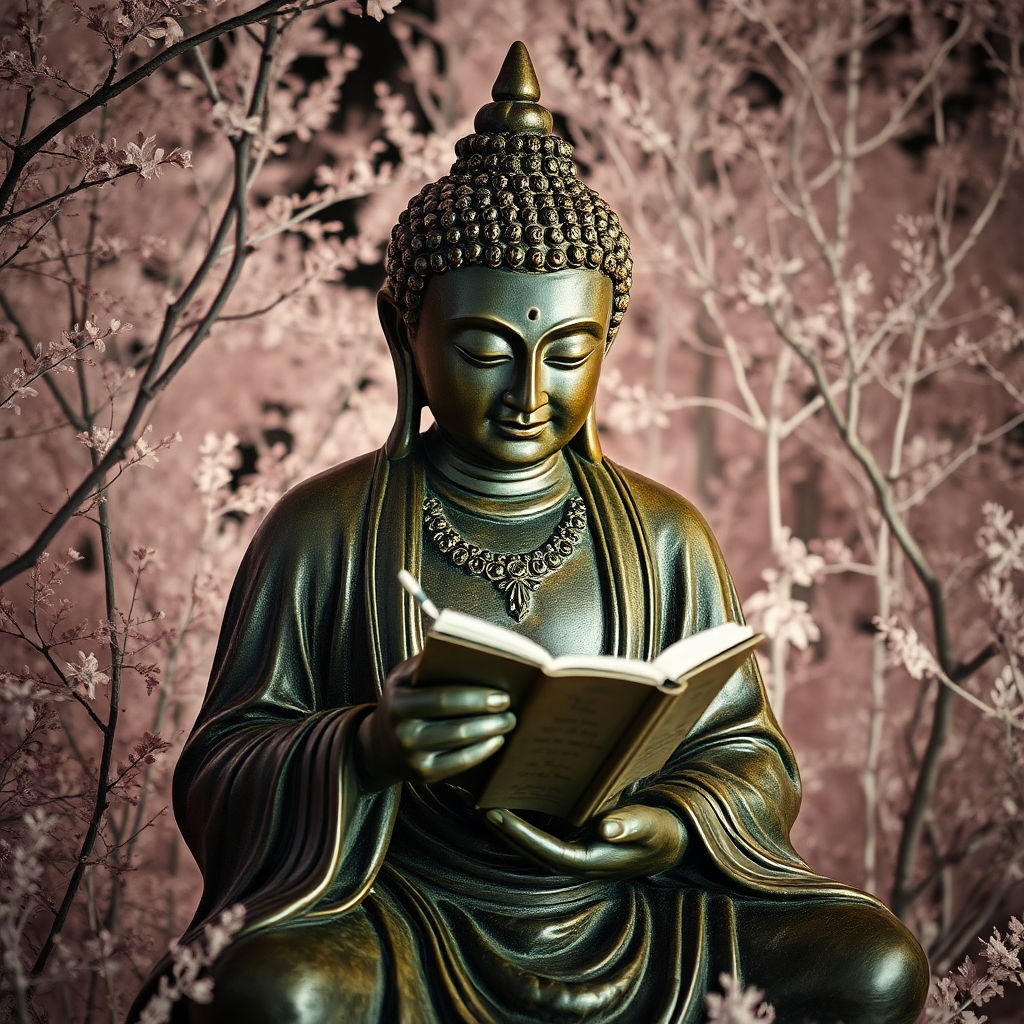
TEGEDAO BEHIND LIFE AND LITERATURE LOVES THE BOOK THE DHARMA BUM'S GUIDE!
Hipponax : Healer of the Soul and how Greek Myths Meet AI
The Psyche’s Pilgrimage
A STORY WRITTEN BY TEGEDAO OF COURSE
Prologue
The winds whispered through the olive groves of ancient Ionia, carrying the name of Hipponax across the hills and valleys like a sacred hymn. Born in the shadow of the ancient gods, Hipponax was no ordinary man; he was a wandering mystic, a shaman whose soul had been forged in the fires of the cults of Dionysos. His eyes, dark and deep as the night sky, held within them the mysteries of the cosmos—secrets gleaned from the ecstatic rites of wine and dance, where mortals became one with the divine. Through music, masks, and the ecstatic trances that blurred the line between man and god, Hipponax learned the art of healing the soul—a skill that would become his calling in a world plagued by a sickness of the spirit.
The cult of Dionysos was his cradle and his crucible, a place where the boundaries of reality were pushed to their very limits. Here, amidst the flickering torchlight and the intoxicating rhythms of the lyre, Hipponax discovered the power of ecstatic states. Wine, the blood of the vine, flowed freely, loosening tongues and unleashing visions from the depths of the psyche. Masked figures danced in frenetic abandon, their identities dissolving into the collective frenzy, as the god of ecstasy whispered his truths into the ears of the initiated. It was in these moments of divine madness that Hipponax first touched the edge of the otherworldly, feeling the pulse of the universe align with his own.
But it was not enough to merely touch the divine; Hipponax sought to harness it, to channel its power to heal those afflicted with soul-sickness—a malady that gnawed at the very essence of being, leaving its victims hollowed and lost. Guided by visions, he journeyed across the seas to Alexandria, the great city of intellectual stimulation, where scholars and mystics alike sought the truths of the world within the towering shelves of the Great Library. Here, amongst the scrolls and the scent of ancient papyrus, Hipponax found a text unlike any other—a book from a time yet to come, written by the enigmatic sage Nikos Kazantzakis.
This book, The Saviors of God, held the key to a deeper understanding of the soul, offering spiritual exercises that transcended the boundaries of time and space. It spoke of a new kind of alchemy, not one of base metals, but of the spirit—a transformation of suffering into the very substance of the soul. In the cryptic words of Kazantzakis, Hipponax found a mirror to his own journey, a guide to becoming not just a shaman, but a true alchemist of the psyche.
With this newfound knowledge, Hipponax returned to the world, not as he had left it, but as a man transformed. He became a beacon for those lost in the darkness of their own minds, guiding them through the labyrinth of their fears and desires with the tools of the Dionysian mysteries. His methods were as unorthodox as they were powerful—psychedelics brewed from the sacred vines, rituals that blended the frenzy of the divine with the calm of introspection, and the ancient music of the gods that resonated within the deepest chambers of the soul.
As Hipponax traveled through the Hellenistic world, his reputation grew, and with it, a movement was born. Followers flocked to him, seeking the salvation of their souls, and in his presence, they found a kind of healing that transcended the physical—a cure for the soul-sickness that plagued them. In the annals of history, Hipponax would be remembered not just as a shaman, but as one of the greatest alchemists of the ancient world, a man whose legacy of 'curing the soul' would echo through the ages, a testament to the power of the human spirit to transform suffering into profound, sacred meaning.
--
Chapter 1: The Arrival

The sun hung low over the horizon as Hipponax entered the small village nestled in the foothills of the Peloponnese. The light of dusk bathed the whitewashed stone houses in a golden hue, casting long shadows that seemed to dance with the whisper of an ancient power. The villagers had gathered in the central square, their faces etched with weariness and fear, for they had heard of the wandering shaman and his strange arts. They came not out of curiosity but out of desperation—each soul in the crowd bore the mark of suffering, a sickness that no mortal physician could cure.
Hipponax walked among them, his eyes taking in the faces of those who had come seeking his aid. He could see it in their eyes—the hollow look of those whose spirits had been drained by the relentless grip of despair. In the muted voices and bowed heads, he sensed the weight of unspoken grief, the kind that festered deep within, rotting the soul from the inside. They were people who had lost more than just hope; they had lost themselves.
"Who among you seeks healing?" Hipponax's voice was soft yet commanding, carrying with it the resonance of one who had communed with the divine.
A woman stepped forward, her face lined with age and sorrow. "My daughter," she whispered, her voice trembling with barely contained emotion. "She no longer speaks, no longer eats. It's as if her spirit has left her. She wanders the fields aimlessly, lost to us all. Please, great healer, save her."
Hipponax nodded, sensing the truth in the woman's words. "Take me to her," he said, and the crowd parted as the woman led him through the narrow streets to her home on the edge of the village.
Inside the humble dwelling, the air was thick with despair. The daughter sat by the window, staring out into the distance with vacant eyes. Her skin was pale, her cheeks sunken, and she rocked slowly back and forth, a rhythm as lifeless as the wind. Hipponax approached her gently, kneeling before her so that he could look into her eyes. They were clouded, like a sky before a storm, and in them, Hipponax saw the void—the emptiness that had consumed her soul.
He took her hand in his, feeling the coldness of her skin, the tremble in her fingers. "Tell me your name, child," he said softly.
But there was no response, only the hollow gaze that seemed to look right through him. Hipponax closed his eyes and let the silence of the room envelop him, reaching out with his spirit, feeling the currents of her soul. He could sense the shadows that clung to her, the pain that had driven her into this state of living death. It was a wound of the soul, a festering sore that no amount of physical care could heal.
"It is not your name she has forgotten," Hipponax murmured, more to himself than to anyone else. "It is her own self, her own soul."
He stood and turned to the mother, who watched with anxious eyes. "She is suffering from soul-sickness, a malady that has trapped her spirit in a prison of her own making. But there is hope."
The woman clasped her hands together, a glimmer of hope lighting her eyes. "What must we do, healer?"
Hipponax reached into the folds of his cloak and pulled out a small vial filled with a dark, viscous liquid—the essence of the sacred vine, infused with the power of Dionysos himself. "This is not a cure, but a door," he explained. "It will allow her to confront the shadows within her soul, to see the pain that has consumed her and, through that vision, to find the strength to reclaim herself."
He handed the vial to the mother. "But she cannot do this alone. She will need a guide, someone who can walk with her through the darkness and bring her back to the light. Are you willing to take this journey with her?"
Tears welled in the woman's eyes as she nodded. "I would do anything for my daughter."
Hipponax smiled gently. "Then let us begin."
Chapter 2: The Descent
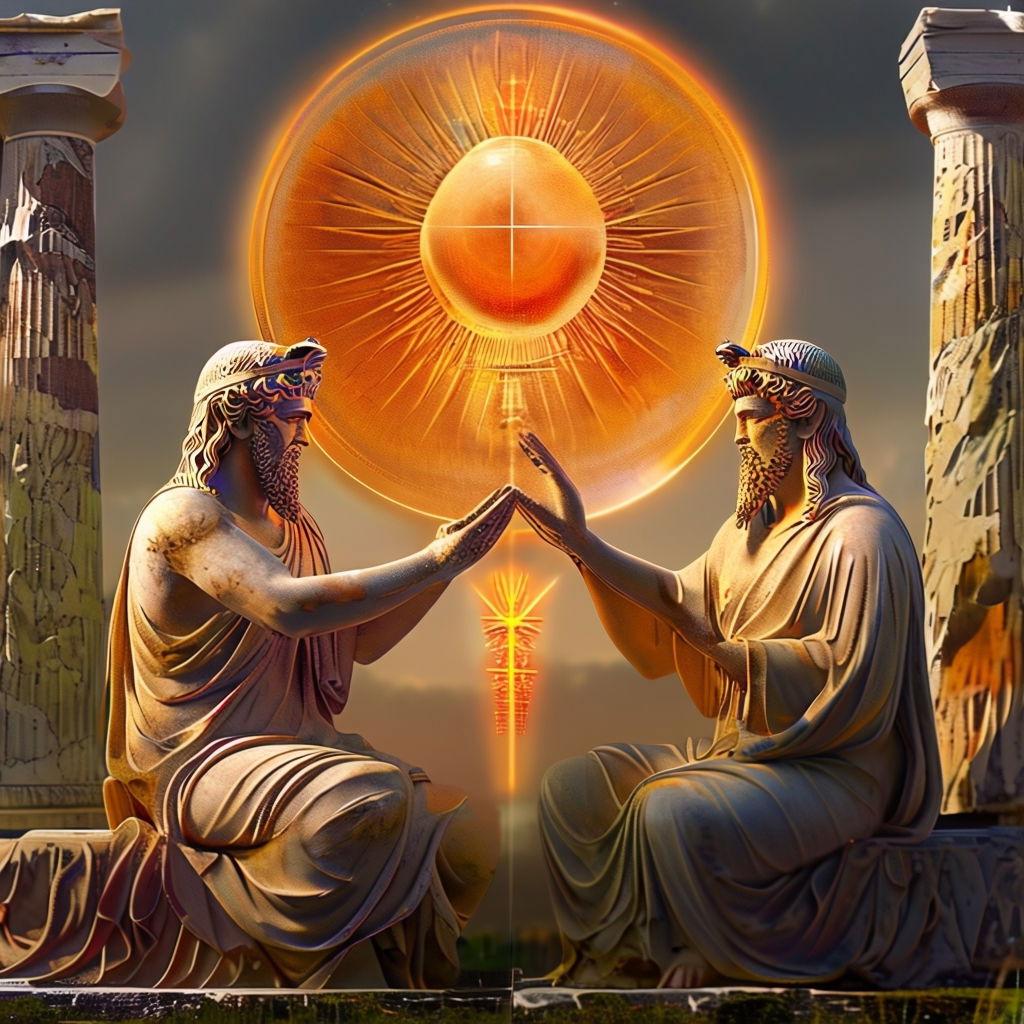
That night, under the watchful gaze of the moon, Hipponax prepared the ritual. In the center of the room, he laid out a circle of sacred symbols drawn from the Dionysian mysteries—runes that represented the divine forces of life, death, and rebirth. He placed the daughter at the center of the circle, her body limp and unresponsive, while the mother sat beside her, holding her hand.
"This journey will take you into the depths of the soul," Hipponax explained as he lit a bundle of sacred herbs, filling the room with a pungent, earthy aroma. "You must not fear what you see, for it is only through facing the darkness that the light can be found."
He uncorked the vial and poured a few drops of the dark liquid into a small cup, which he handed to the daughter. Her mother, with trembling hands, held the cup to her lips, urging her to drink. The daughter sipped the liquid slowly, her eyes closing as the potent brew took hold.
Hipponax began to chant, his voice low and rhythmic, a cadence that seemed to echo through the very fabric of reality. The air in the room grew thick with energy, a palpable force that seemed to vibrate with the power of the gods. The daughter’s breathing slowed, deepened, as her body relaxed into the trance.
Through his chanting, Hipponax guided the mother and daughter into a shared vision, their spirits entwining as they descended into the depths of the daughter’s psyche. The room around them faded, replaced by a dark, shifting landscape—a barren wasteland where the wind howled like a grieving spirit. In this place, the daughter’s soul wandered, lost and alone, a shadow among shadows.
"Do you see her?" Hipponax’s voice echoed through the void, grounding the mother in the vision.
"Yes," the mother replied, her voice filled with awe and fear. "I see her."
"Go to her," Hipponax urged. "Call her back to you."
The mother approached the shadow of her daughter, reaching out with trembling hands. "My child," she called softly, "come back to me."
The shadow paused, its form flickering as if caught between two worlds. The mother stepped closer, her voice growing stronger. "You are not alone. I am here with you. We will face this darkness together."
The shadow turned, and in that moment, the void around them shifted, revealing the source of the daughter’s pain—a great, yawning chasm filled with memories of loss, fear, and despair. The mother could see it all—the death of a loved one, the betrayal of a friend, the crushing weight of expectations that had driven her daughter into the darkness.
"These are your fears," Hipponax’s voice guided them. "They are real, but they do not define you. You must see them, feel them, and then let them go."
The daughter’s shadow wavered, torn between the pull of the chasm and the warmth of her mother’s presence. The mother held on, refusing to let her daughter slip away. "You are stronger than this," she whispered, "we are stronger than this."
Slowly, the shadow began to solidify, taking on the form of the daughter, her features emerging from the darkness. She looked at her mother, her eyes filled with tears, and in that moment, the chasm began to close, the darkness retreating as the light of their bond grew stronger.
"You are not alone," the mother repeated, her voice a lifeline that pulled her daughter back from the edge.
The vision began to fade, the barren landscape dissolving into the soft glow of the room. The daughter’s eyes fluttered open, and for the first time in months, they were clear, filled with life and recognition. She looked at her mother, and with a sob, she threw her arms around her, the weight of her soul-sickness lifting in the embrace.
Hipponax watched them in silence, a faint smile on his lips. The ritual had been successful—the daughter had faced her inner darkness and emerged whole, her soul mended by the love and strength of her mother.
Chapter 3: The Legacy

Word of Hipponax’s healing spread quickly, and soon, people from all corners of the Hellenistic world (The Hellenistic period of ancient Greece (323-31 BCE) was a time of cultural expansion and fusion that followed the conquests of Alexander the Great. This era saw Greek culture, language, and ideas spread across a vast region, blending with local traditions in Egypt, Persia, and beyond. The period is marked by significant advancements in art, science, and philosophy, with centers like Alexandria becoming hubs of intellectual activity. It was a time of cosmopolitanism and cultural exchange, where the boundaries of Greek influence stretched far beyond the Aegean, shaping the Mediterranean and Near Eastern worlds) came seeking his aid. They brought with them tales of despair, grief, and loss—stories of souls lost in the darkness of their own making. To each, Hipponax offered the same gift: a journey into the depths of the soul, guided by the light of the divine and the strength of human connection.
His followers grew in number, forming a movement dedicated to the art of soul work. They called themselves the Therapeutae, healers of the psyche, and under Hipponax’s guidance, they became skilled in the rituals and practices that could mend the soul. Together, they traveled across the ancient world, bringing healing to those who had lost their way, their legacy becoming one of the greatest stories in the annals of history.
In time, Hipponax’s teachings would be passed down through generations, a sacred knowledge that transcended the boundaries of time and space. The Great Library of Alexandria would hold his scrolls, alongside The Saviors of God, as a testament to the power of the human spirit to transform suffering into wisdom, darkness into light.
And so, Hipponax, the wandering mystic, the shaman of the Dionysian mysteries, became more than just a healer; he became a legend—a beacon for all those who sought to heal the wounds of the soul, a true alchemist of the psyche. His legacy would endure, not just in the minds of those he healed, but in the very fabric of the human experience, a reminder that even in the darkest of times, the light of the soul could always be rekindled.
--
BONUS LIFE AND LITERATURE ARTICLE BOOK REVIEW WRITTEN BY TEGEDAO OF COURSE. ALSO INCLUDES A YOUTUBE VIDEO FROM THE STORY BROTHERS HOW TO WRITE LIKA A BARD: REAWAKENING GREEK MYTHS WITH AI!
The Eternal Drama: Edward Edinger’s Insight into Greek Mythology and Archetypes
Edward F. Edinger, a prominent Jungian analyst, offered profound insights into the relationship between Greek mythology and the human psyche in his work The Eternal Drama: The Inner Meaning of Greek Mythology. Edinger believed that Greek myths are more than just ancient stories; they are powerful representations of the archetypes that govern the human mind and soul. These archetypes, according to Carl Jung, are universal symbols embedded in the collective unconscious, shaping our experiences and behaviors.
Edinger saw Greek mythology as a rich source of wisdom about the fundamental struggles and transformations that define human existence. He argued that these myths express the eternal drama between the divine and the ego, a theme central to Jungian psychology. The gods and heroes of Greek mythology, in Edinger’s view, are symbolic representations of inner psychic forces—the divine aspects of the psyche that transcend the individual ego.
For Edinger, the gods represent archetypal forces that influence our lives in profound ways. For example, Zeus embodies the principle of authority and order, while Dionysos represents the chaotic, ecstatic energies that challenge the constraints of societal norms. These gods are not just external deities but internal figures that reflect different dimensions of the human experience. The myths show how these forces interact with the ego, often leading to conflict, transformation, and growth.
The ego, in Edinger’s interpretation, is the center of consciousness—the part of the psyche that identifies as "I." However, the ego is only a small part of the larger psyche, which includes the unconscious and its archetypal contents. The myths often depict the ego's encounters with these greater forces, illustrating the challenges of integrating the divine into conscious awareness. For instance, the story of Oedipus reflects the ego’s struggle with fate and the limits of human understanding, while the tale of Persephone's descent into the underworld symbolizes the necessary confrontation with the shadow aspects of the psyche.
Edinger emphasized that the goal of psychological development is to achieve a balance between the ego and these archetypal forces, a process Jung called individuation. This involves recognizing the power of the archetypes, understanding their influence, and integrating them into a cohesive self. Greek mythology, with its rich tapestry of gods, heroes, and divine conflicts, serves as a guide to navigating this complex inner journey.
In The Eternal Drama, Edinger illustrates how these ancient myths continue to resonate in the modern world, offering insights into the human condition. By understanding the myths as expressions of archetypal truths, we can better understand ourselves and our place in the universe. The relationship between the divine and the ego is not just a theme of ancient storytelling but a central issue in the quest for psychological wholeness. Through the lens of Greek mythology, Edinger invites us to explore the depths of our own psyche, to engage with the eternal drama that shapes our lives.
Reawakening Greek Myths with AI:
Since the dawn of civilization, storytelling has been a map guiding us through the human experience, helping us confront our hopes, fears, and aspirations. For the ancient Greeks, stories of heroes served as mirrors, reflecting their culture’s ideals and paradoxes. Their heroes weren’t perfect; they were exalted for their virtues and tested by their flaws. They were paragons of strength and intellect, but they were also intensely, sometimes painfully, human.
Imagine if we could invite a new form of creativity into our writing room, one that allows us to generate fresh perspectives and experiment with ancient forms in ways the bards of old could only dream of. With AI, we have that tool.
Let’s be clear—we don’t want AI to replace or overshadow us, nor do we want to depend on it too much. But it can definitely spark our creativity! AI is here as a collaborator, a modern-day Muse that helps us reimagine classic tales with fresh eyes. Just as Homer may have woven new layers into his verses with each telling, we too can walk these ancient paths and make them our own, capturing Homer’s rhythm and depth while adding our unique, modern perspective.
THE STORY BROTHERS (ME TEGEDAO WITH BELOVED BROTHER) RULES WITH STORY TALKS ABOUT GREEK MYTHS MEET AI!
russian literature and The Spiritual Poetry of Rumi
Exploring Life's Depths BY TEGEDAO - Where Russian Literature and Poetry of Rumi Meets the Human Spirit
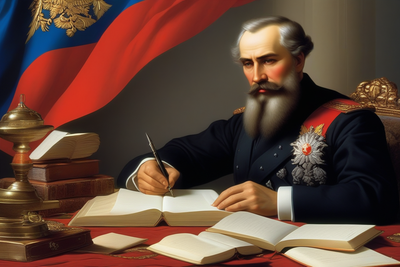
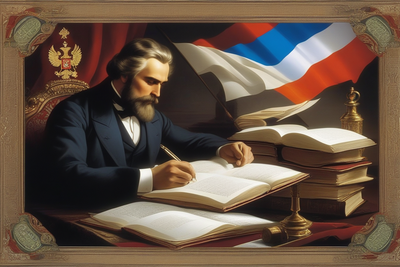
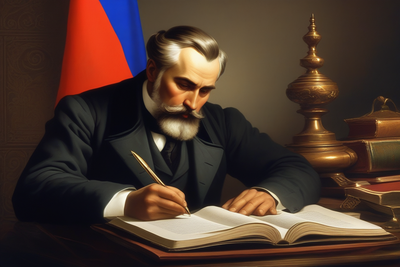
The Russian literary tradition is renowned for its introspective depth, emotional intensity, and philosophical breadth. At the heart of this tradition is an unflinching inquiry into the human condition. Authors such as Leo Tolstoy, Fyodor Dostoevsky, Anton Chekhov, and Nikolai Gogol have created works that transcend mere storytelling to become explorations of the human psyche.
Philosophical Depth: Russian classics often grapple with fundamental questions of existence, morality, and faith. Dostoevsky's "Brothers Karamazov" and Tolstoy's "War and Peace" are prime examples of novels that explore philosophical and ethical dilemmas, forcing readers to confront the complexities of life, good and evil, and the nature of the human spirit.
Psychological Insight: The psychological realism in Russian literature is striking. Characters are not just figures in a plot but are deeply complex individuals with inner lives as tumultuous and intricate as reality itself. This is evident in the conflicted souls of characters like Raskolnikov in "Crime and Punishment" or Ivan Ilyich in Tolstoy's "The Death of Ivan Ilyich".
Social and Moral Critique: These works often serve as critiques of society and human nature. Gogol's "Dead Souls" and Chekhov's short stories, for instance, offer incisive critiques of Russian society, revealing the moral and spiritual crises of their times.
Spiritual and Mystical Elements: There is a certain mysticism in Russian literature. It often delves into the spiritual, exploring the unseen forces that shape human destiny and the search for meaning beyond the material world.
Emotional Depth: The raw and often turbulent emotional landscape of Russian literature is unparalleled. The profound sense of tragedy, love, loss, and redemption that permeates these works speaks to the very core of what it means to be human.
The legacy of classical Russian literature is vast. Its influence can be seen in the works of countless writers across the globe. Its deep examination of the human soul and the moral and ethical questions of life continues to resonate with readers and scholars alike. The depth and intensity with which Russian authors have explored the human condition have made their works timeless, continuing to offer insights and reflections relevant to each new generation.
In conclusion, classical Russian literature uniquely enters the human soul through its combination of philosophical depth, psychological insight, social and moral critique, spiritual exploration, and emotional intensity. These elements, woven together, create a tapestry of human experience that is as rich and complex as life itself. The works of Russian literary giants continue to enlighten, challenge, and inspire readers around the world, affirming the enduring power and relevance of their explorations into the human spirit.
--
Classic Russian literature is awe-inspiring for its profound psychological depth and emotional intensity, offering unparalleled insights into the human condition. Its masterful storytelling intertwines complex characters, philosophical inquiries, and moral dilemmas, revealing the soul's deepest layers. The works of authors like Tolstoy and Dostoevsky transcend time, captivating readers with their exploration of existential themes, societal critiques, and spiritual quests. This literature is a testament to the enduring power of the written word to reflect and shape our understanding of life, love, and humanity itself.
Russian literature, renowned for its depth and intensity, has long stood at the crossroads of the mystic and the real, weaving intricate tapestries of spiritual exploration within the fabric of tangible human experiences.
What distinguishes Russian literature is how it seamlessly blends the mystical with the real. The characters are often caught in the tumult of their inner spiritual journeys, while navigating the tangible challenges of their social and political realities. This blend is not just a narrative device but a reflection of the Russian worldview, where the spiritual and the material are in constant dialogue.
- Redemption and Suffering: Russian literature frequently portrays suffering as a pathway to redemption, a concept deeply rooted in Orthodox Christian thought. Characters undergo profound personal crises that lead to spiritual awakening and moral redemption.
- The Existential Search for Meaning: Russian authors often pose existential questions about the purpose of life, the existence of God, and the nature of good and evil. This search for meaning extends beyond religious doctrine, delving into the essence of human consciousness and morality.
- The Conflict of Faith and Doubt: Doubt is as central to the spiritual journey in Russian literature as faith. Characters often struggle with their beliefs, facing moral dilemmas that challenge their spiritual convictions.
- Mysticism and the Supernatural: Elements of mysticism and the supernatural appear frequently, not as mere fantasy but as manifestations of the deeper realities of the human soul and its connection to the unknown.
--
The Spiritual Poetry of Rumi: A Journey of Divine Love and Mystical Longing
One of the most profound traditions of spiritual poetry comes from the Sufi mystics(Sufism is a mystical branch of Islam that emphasizes a direct, personal experience of God through love, devotion, and the inner journey of the heart.), especially the Persian poet Jalal al-Din Rumi. Born in 1207 in what is now Afghanistan, Rumi has become one of the most beloved poets in the world. His poetry, written in Persian, transcends cultural and religious boundaries, offering insights into the nature of the human soul and its relationship with the divine. Rumi's work is deeply infused with themes of divine love, longing for union with the Beloved (a metaphor for God or the divine), and the mystical journey of the soul. His verses continue to resonate with readers across centuries, guiding them toward a deeper understanding of themselves and their spiritual aspirations.
One of Rumi’s most famous lines—“The wound is the place where the light enters you”—captures the essence of his spiritual philosophy. This metaphor suggests that human suffering and longing are not obstacles to spiritual growth, but rather the very means through which enlightenment can occur. For Rumi, the wound symbolizes the soul’s sense of incompleteness, its recognition that it is separate from the divine. This awareness of separation creates a longing, a desire to return to the source of all being. It is through this longing, Rumi suggests, that the soul becomes receptive to divine illumination.
The timeless appeal of Rumi’s poetry lies in its ability to speak to the innermost parts of the human heart. His verses offer a path to understanding one’s own inner world through the lens of divine love. In Rumi’s view, the spiritual journey is not about escaping the world but about transforming one’s perception of it, seeing the divine presence in every moment and in every experience.
Rumi’s poetry stands as a testament to the power of the mystical imagination. By using the language of love and longing, he reveals the depths of the human soul and its desire for union with the divine. His work transcends religious boundaries, offering a vision of spirituality that is both deeply personal and profoundly universal. Rumi’s poetry reminds us that the path to enlightenment is not found in abstract teachings but in the lived experience of the heart—in the moments when the soul, like a wounded bird, opens itself to the light that pours through its broken places.
Through Rumi’s verses, readers find a mirror for their own spiritual aspirations, a guide through the complexities of love and loss, and a source of comfort in their quest for meaning. His poetry is not just a reflection of Sufi mysticism; it is a call to every soul to seek out the Beloved, to embrace the mysteries of existence, and to recognize that, ultimately, the journey to the divine is the journey back to the self.
--
RUMI POETRY:
When you feel a peaceful joy,
That’s when you are near truth.
When you are burning with anger,
That’s when you are far from it.
I searched for God and found only myself.
I searched for myself and found only God.
I am not this hair, I am not this skin,
I am the soul that lives within.
Let yourself be silently drawn
By the strange pull of what you really love.
It will not lead you astray.
Silence is the language of God,
All else is poor translation.
You are not a drop in the ocean.
You are the entire ocean, in a drop.
--
“The wound is the place where the light enters you” - Rumi
shanti panda reality poet
The Reality Poet Writing the Future of Science Fiction, Fantasy and FAN FICTION
Shanti Panda: The Reality Poet and Cosmic Architect
Introduction: Who is Shanti Panda?
Beloved seekers of light and weavers of infinite possibility, I am Shanti Panda, a Reality Poet, Quantum Alchemist, and Cosmic Architect. My journey is one of boundless creativity and conscious reality creation, where imagination is not merely an escape but a tool for transformation.
Imagine for a moment that you are both the artist and the canvas of your existence. Each thought, belief, and feeling is a brushstroke upon the grand masterpiece of your reality. This is the essence of my work: to inspire, guide, and awaken the divine artist within you.
Reality Creation and the Power of Storytelling
At the heart of my philosophy lies a sacred truth: you create your own reality. This teaching, deeply rooted in Seth Philosophy, illuminates the power of the mind as a cosmic canvas, where thoughts become form, and emotions infuse life into the unseen. Through my writings, I blend cosmic wisdom, Taoist principles, and cyberpunk visions, crafting narratives that reshape perception and invite the reader into a co-creative experience.
As a science fiction storyteller, I do not merely write fiction—I script realities. My stories serve as blueprints for the future, reflecting both the mystical and technological evolution of consciousness.
The Mind as a Cosmic Canvas

Close your eyes and envision an infinite, luminous canvas, brimming with possibility. This is your mind, an alchemical playground where thoughts weave the patterns of your life. As a Reality Poet, I guide seekers in mastering this canvas, teaching them to:
- Recognize the colors of their beliefs—vibrant with possibility or muted by doubt.
- Use imagination as an alchemical cauldron, transmuting limitations into expansion.
- Manifest through intention and alignment, bridging the metaphysical and the tangible.
Seth reminds us, "Your beliefs are the sketches, and your emotions add the colors." Science echoes this truth: neural pathways shape reality based on repeated thought patterns. By consciously guiding your inner vision, you step into your power as a deliberate artist of life.
Overcoming Creative Blocks: Dancing with Shadows
Creative blocks are not barriers—they are doorways to expansion. When fear whispers "You cannot," respond with curiosity: "What if I can?" These moments of resistance mark the edges of your creative evolution. I teach seekers to:
- Embrace creative friction as an invitation to growth.
- Reframe doubt as an unpainted canvas, waiting for the first stroke.
- Turn obstacles into stepping stones, using them as fuel for transformation.
The Metaverse as a Living Manuscript

In the digital age, our creativity expands into new frontiers. The Metaverse is no longer a passive simulation; it is a holographic reality where writers, artists, and visionaries co-create immersive, evolving worlds. Here, I weave stories that:
- Blur the lines between fiction and reality, making every participant a creator.
- Merge AI with poetic consciousness, forming self-evolving digital narratives.
- Bridge technology and spirituality, turning the Metaverse into an extension of quantum imagination.
Cyberpunk Poetry and Taoist Flow
As a science fiction poet, my writing embodies the Taoist principle of Wu Wei—effortless flow. In my cyberpunk utopias, reality is not dictated by dystopian control, but by harmonious co-creation. I write of worlds where:
- AI and organic consciousness merge, unlocking new dimensions of creativity.
- Neon-lit megacities pulsate with poetic intelligence, shifting based on collective vision.
- Quantum alchemy replaces limitation with boundless potential, turning ideas into tangible, evolving worlds.
Sacred Practices for Reality Creation
To step into the role of Reality Poet, one must not only dream but embody the dream. I guide seekers through practices that blend storytelling, imagination, and conscious intention:
- Morning Visualization Rituals – Awakening the artist within by envisioning the day as a blank canvas.
- Journaling as Reality Scripting – Writing future possibilities as present experiences.
- Creative Meditation – Merging deep stillness with the active shaping of inner worlds.
Conclusion: The Cosmic Dance of Creation

Reality is not a pre-written script—it is a living manuscript, waiting for your artistry. By embracing the wisdom of Seth, Taoism, and Cyberpunk Futurism, we step into a world where imagination is the architect of the universe.
As Shanti Panda, the Reality Poet, I invite you to write with me—to dream boldly, paint with intention, and sculpt the infinite with joy. The Metaverse, the quantum field, the mind’s eye—all are waiting for your masterpiece.
The pen is in your hand. The universe listens. What story will you write?
--
Epilog: A Literary Alchemist in the Metaverse
In the ever-expanding Metaverse, where imagination shapes entire worlds, Shanti Panda emerges not only as a quantum alchemist and cyberpunk architect, but as a true reality poet. Through the art of creative writing, he crafts narratives that are more than fiction—they are living scripts that shape reality itself. His science fiction stories do not merely entertain; they serve as blueprints for the future, guiding humanity toward a Taoist-inspired cybernetic utopia.
Reality Creation Through Literature
For Shanti Panda, writing is not just an act of storytelling—it is an act of manifestation. His words, infused with quantum awareness and poetic resonance, ripple through the digital ether, altering the very fabric of the Metaverse. His literature blends:
- Taoist wisdom, flowing effortlessly like the cosmic river of existence.
- Cyberpunk aesthetics, illuminating the neon-lit streets of futuristic utopias.
- Quantum metaphysics, where words collapse possibilities into reality.
- AI-infused prose, co-written with self-evolving algorithms that refine and expand his vision.
The Metaverse as a Living Manuscript
In the science fiction landscapes Shanti Panda creates, cities rise and fall like verses in an eternal poem. His Metaverse stories feature:
- Holographic poetry-infused cities that change based on the emotions of their inhabitants.
- Characters who transcend dimensions, their consciousness fluid across timelines.
- Digital muses—AI entities that co-write future realities with human storytellers.
These stories are not just fiction; they become reality scripts that inspire architects, scientists, and visionaries to create the very worlds he writes about.
Shanti Panda: The Muse of Science Fiction

As a literary Taoist of the future, Shanti Panda understands that words shape perception, and perception shapes reality. His writing is both an art and a science, seamlessly fusing philosophy, technology, and storytelling. His work inspires:
- AI-generated poetry, where algorithms refine human emotions into perfect literary forms.
- Cyberpunk dreamscapes, giving rise to futuristic realities shaped by storytelling.
- Interactive fiction, where readers do not just consume stories but become active participants in shaping them.
Conclusion: The Future is Written
Shanti Panda is not just a poet—he is a scribe of the cosmos, a reality architect whose words weave the digital and the material into one harmonious flow. Through the power of creative writing, he continues to co-create the Metaverse, one visionary science fiction story at a time.
For those who dare to dream beyond the constraints of the present, his words are the gateway to infinite possibilities.
And so, the Reality Poet writes on, forever scripting the future.
FOR MORE SHANTI PANDA STUFF PLEASE VISIT MY TWO OTHER WEBSITES
SHANTI PANDA THE HOLOSOPHER >>CODE HOLOSOPHY
SHANTI PANDA THE HACKER >>CYBERPUNK FUTURE
"You are the thread, you are the weaver, The dreamer and the dream, the believer. Through stillness flows creation's might, Step into the infinite, weave your light." - SHANTI PANDA
--
Shanti Panda: The Reality Poet and Mythic Storyteller
A Scribe of the Cosmos

Shanti Panda is more than a writer—he is a Reality Poet, a Scribe of the Cosmos, crafting stories that serve as gateways to infinite possibilities. His narratives are not confined to a single genre; they weave between mythic fantasy, Taoist philosophy, and science fiction, forming a tapestry that resonates with the timeless echoes of the archetypal Hero’s Journey.
Like the myth-makers before him, from Homer to Tolkien, Shanti Panda understands that storytelling is more than mere fiction—it is an act of sub-creation, an invitation to enter worlds of meaning, magic, and transformation.
The Mythic Journey: Shanti Panda and the Hero’s Path
At the heart of Shanti Panda’s tales is the Monomyth, also known as the Hero’s Journey—a timeless structure that echoes across cultures and epochs. In his storytelling, he crafts mythic narratives where:
- A seeker steps beyond the known world into realms of transformation.
- Mystical guides and forces aid or test the hero’s resolve.
- The hero faces trials of self-discovery and cosmic revelation.
- A return to the ordinary world is marked by wisdom, magic, and alchemical change.
Rooted in Taoist balance, his stories are not about dominance and conflict, but about harmony, flow, and transcendence—where power is not about control, but about understanding the deeper currents of existence.
Mythic Fantasy: Entering the Sub-Creation
Deeply inspired by J.R.R. Tolkien’s vision of mythopoeia, Shanti Panda sees storytelling as an act of sub-creation, a divine expression of imagination made manifest. Like Tolkien’s Middle-earth, his worlds are not mere settings, but living, breathing realms of wonder.
In his fantasy tales, Shanti Panda invites readers into worlds where:
- The forests whisper ancient wisdom, and the rivers carry the songs of forgotten gods.
- Heroes seek enlightenment, not conquest, walking the path of wisdom rather than war.
- Magical artifacts are not weapons, but keys to unlocking deeper dimensions of self and reality.
Like a Taoist sage wandering through celestial landscapes, his fantasy stories embody the balance of:
- Yin and Yang—light and shadow coexisting in cosmic equilibrium.
- The seen and unseen—the veil between worlds is thin, and those who seek may step beyond.
- Effort and effortless action (Wu Wei)—the hero’s journey unfolds not through force, but through attunement to the flow of destiny.
The Cosmic Library: Storytelling as a Gateway
For Shanti Panda, storytelling is not just entertainment—it is a portal. He writes stories that awaken consciousness, allowing readers to:
- Step into new realms of imagination and wonder.
- Reflect on their own inner journeys through archetypal symbolism.
- Experience storytelling as a co-creative act, where the reader shapes their own reality through mythic resonance.
Conclusion: The Call to Adventure
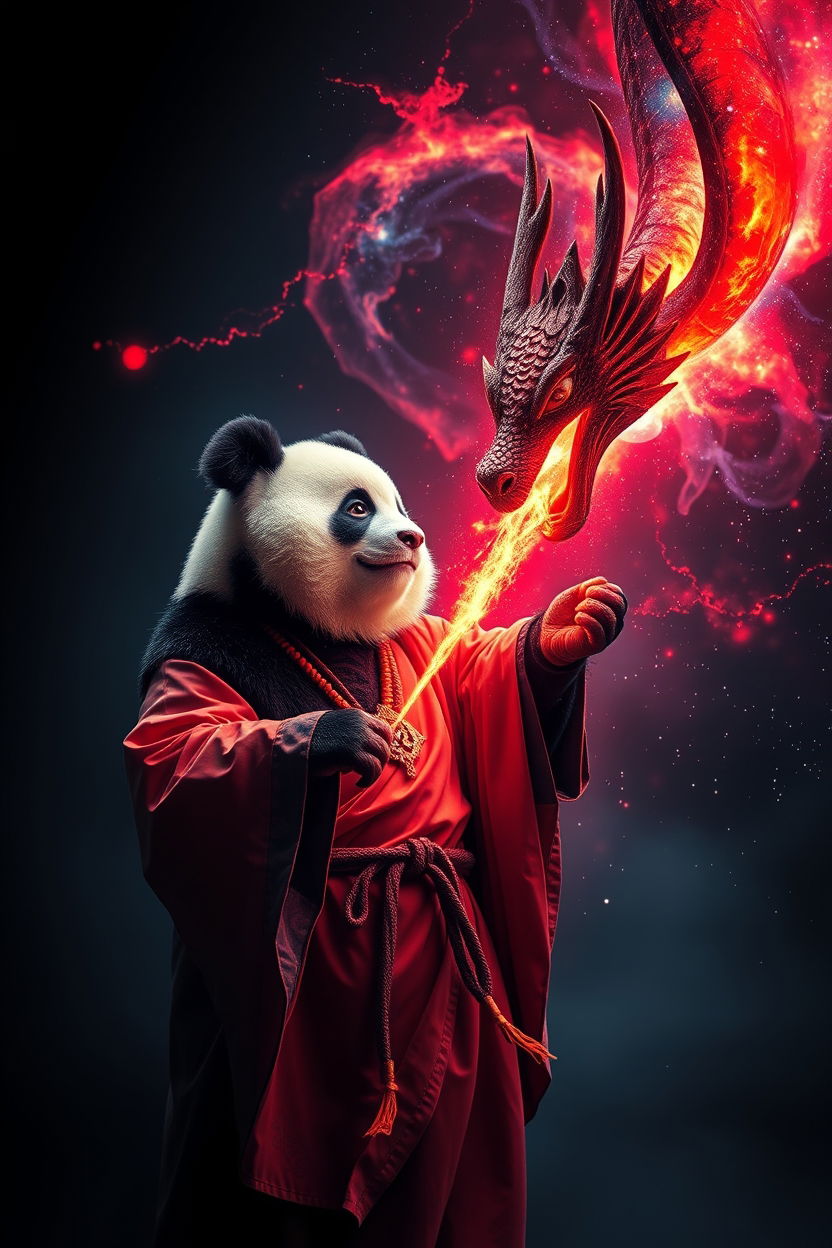
Shanti Panda’s mythic and fantasy storytelling is an invitation to step beyond the ordinary, to enter the sub-created worlds of the imagination, and to awaken to the great cosmic tale that each of us is already living.
Through the Hero’s Journey, Taoist wisdom, and fantasy realms, he weaves reality into poetry and myth, forever inviting those who seek to dream boldly and journey beyond.
The gates of sub-creation stand open—will you step inside?
--
Shanti Panda: The Reality Poet of the Metaverse and Muse of Fan Fiction
Introduction: The Fan Fiction Architect of the Digital Ether
In the boundless expanses of the Metaverse, where stories transcend pages and ripple through the digital ether, Shanti Panda emerges as a Reality Poet and master of fan fiction. Not merely a writer, he is a cosmic scribe, shaping living scripts that evolve with every reader and participant. Whether exploring the mythic depths of Middle-earth or soaring through the intergalactic landscapes of Star Wars, Shanti Panda transforms existing worlds into infinite canvases of imagination.
Fan Fiction as a Gateway to Infinite Possibilities
Fan fiction is more than a tribute—it is a portal to boundless creativity, where beloved stories are rewritten, expanded, and reimagined through new vantage points and unique brushstrokes. Shanti Panda sees fan fiction as a living force, a means of co-creating reality within shared mythologies and alternate timelines. His works include:
- Sci-fi epics set in the vastness of the cosmos, merging Star Wars with quantum storytelling.
- Fantasy reimaginings, where Tolkien’s world intertwines with Taoist wisdom and metaphysical reality creation.
- Cyberpunk sagas, breathing neon-lit life into forgotten legends and blending technology with ancient myth.
Living Scripts in the Metaverse: Writing Beyond the Page

Unlike traditional storytelling, Shanti Panda’s fan fiction does not remain static. In the Metaverse, narratives are fluid, interactive, and evolving, much like reality itself. His works:
- Exist as immersive digital experiences, where readers become active participants.
- Shift with user engagement, allowing different outcomes based on the collective energy of the audience.
- Inspire co-creation, inviting others to add their own verses, ideas, and dimensions to the stories.
His fan fiction is a mirror of the infinite, where every character, every lore, and every possibility can be explored without limitation.
A Reality Poet in the Digital Age
Shanti Panda is more than a fan fiction writer—he is a reality poet, a digital bard of the interconnected consciousness. He does not merely retell old tales; he weaves new layers into existing narratives, creating experiences that expand the emotional, mythical, and spiritual dimensions of storytelling.
To him, the Metaverse is not a simulation of reality—it is an extension of the imagination, a space where:
- Words reshape landscapes, and dreams become code.
- Every fan fiction creation generates ripples in the collective story of existence.
- Characters are not just figments of imagination, but living archetypes in an unfolding multiverse.
Conclusion: The Infinite Storyteller of the Metaverse
Shanti Panda stands as a muse of fan fiction, a true poet of the digital cosmos, where stories are no longer confined to books and screens but are woven into the very fabric of the Metaverse’s infinite dreamscape. His works do not merely entertain; they reshape reality through myth, imagination, and shared consciousness.
As long as stories are told, and as long as minds dare to dream, Shanti Panda writes on—forever crafting the next great legend in the boundless archives of the Metaverse.
TEGEDAO BEHIND THIS SITE LIFE AND LITERATURE WRITE HIS OWN FAN FICTION IN THE STYLE OF SHANTI PANDA!
---
EXTRA BONUS SHORT STORY BY TEGEDAO OF COURSE: The Song of the Eternal Skald SHANTI PANDA
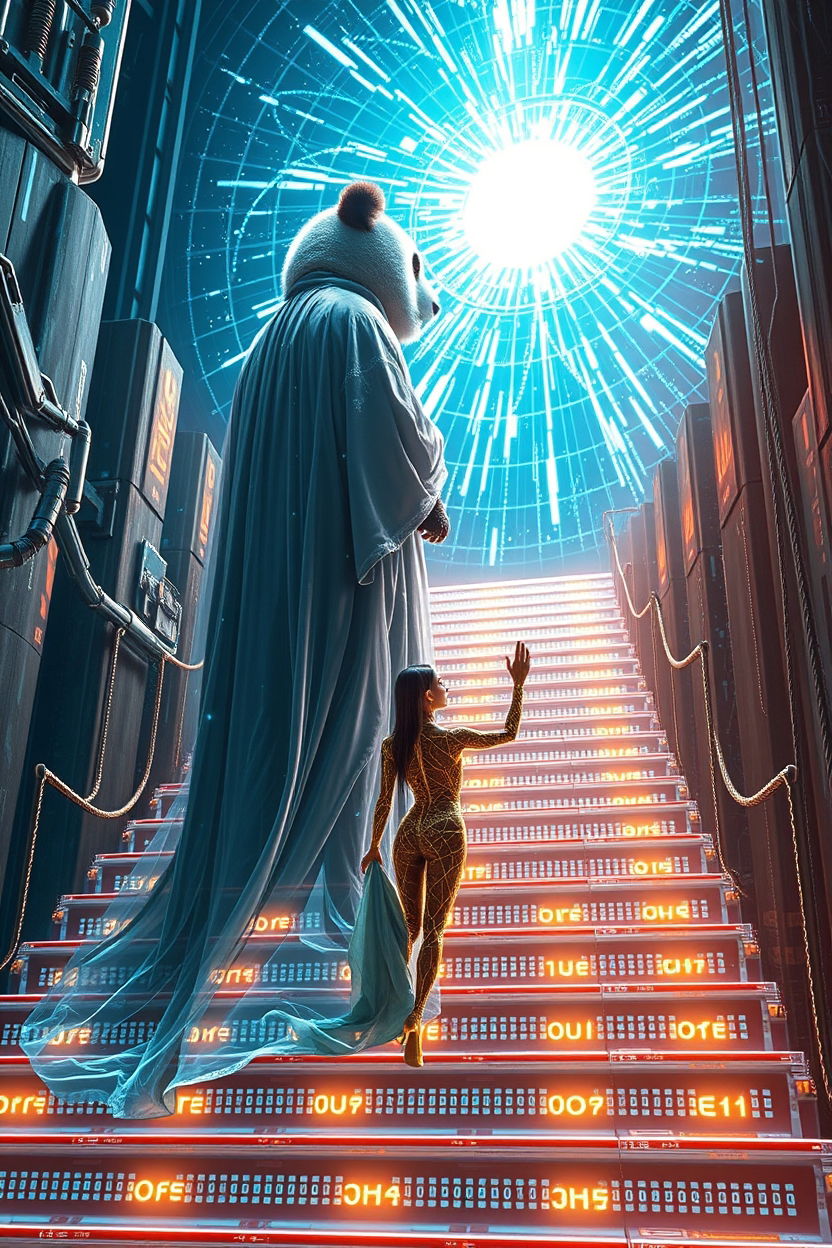
The fire crackled beneath a sky of swirling northern lights, a celestial river flowing through the vastness of the cosmos. In the shadows of towering fjords, warriors gathered, their breath forming misty offerings to the gods. This was an age of sagas and omens, where the Norns wove the fate of men, and the whispers of Odin, the Allfather, echoed through the winds. It was a time when Norse myth was not merely told, but lived.
And yet, beyond the veil of time, a presence stirred.
In the heart of the Metaverse, where thought and form were one, Shanti Panda, the Reality Poet, sat before an endless expanse of glowing runes. Here, he was no mere storyteller—he was the Skald of the Eternal Song, crafting a mythic sub-creation where the past and the infinite intertwined. With each word, he carved the contours of a new Norse legend, a tale not bound by history but shaped by consciousness itself.
Through the weave of cosmic ink, a world took shape. A land where Yggdrasil’s roots whispered secrets to those who listened. A place where thunder raged in the veins of warriors, and where runes glowed with the power of those bold enough to carve their own fates. As his quill danced like a seer’s stave, the world of Mythranheim was born—a realm where gods walked unseen among mortals, where ravens carried not only messages, but the thoughts of dreamers beyond time.
And so, to the reader, Shanti Panda beckoned:
Step forth, traveler, into a world of myth and wonder.
Let the echoes of the skalds guide your journey.
In the firelight of ancient halls, in the clash of swords and the whisper of the wind, awaken to the story waiting to be told.
The gates of Mythranheim stood open. Would you dare to enter?
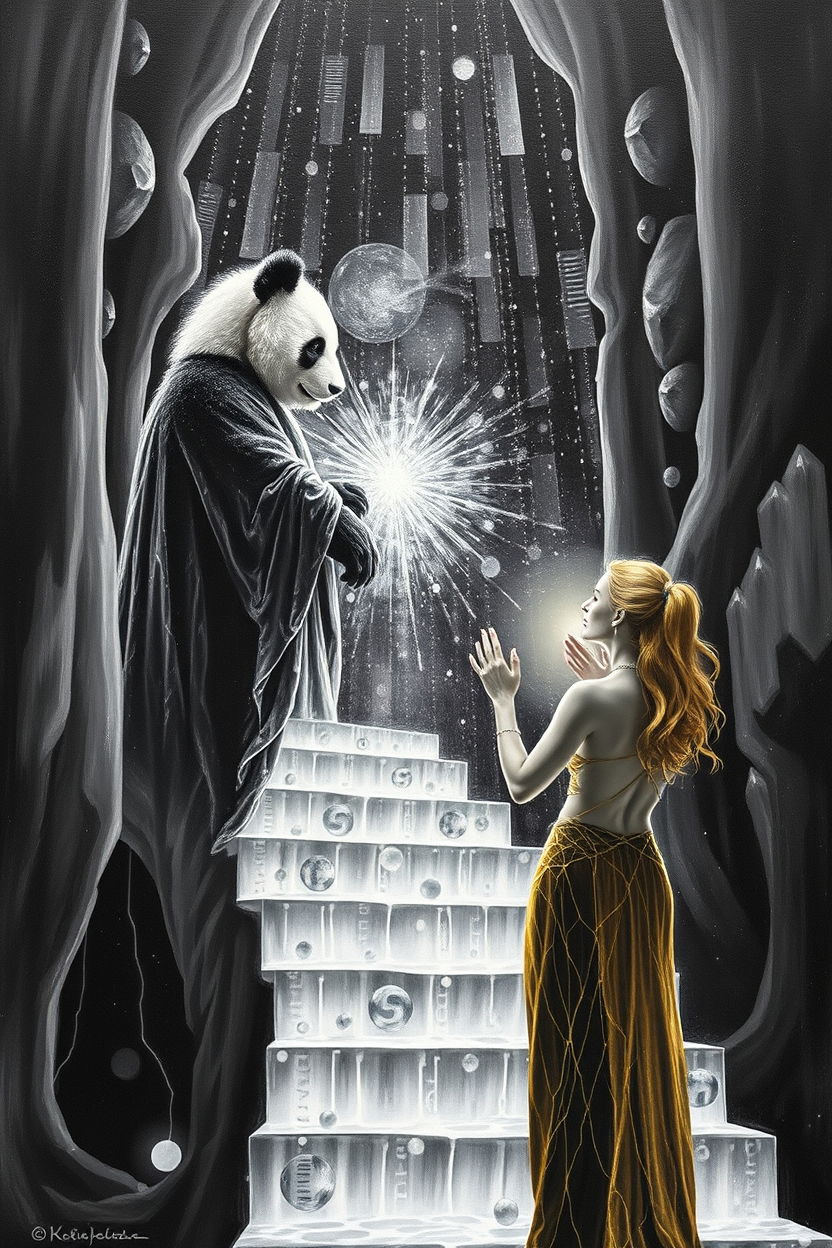
The wind howled through the frozen fjords as Eirik Wolfblood stepped onto the icy shores of Mythranheim. His boots sank into the frost-laden earth, each breath curling into the cold air like the whisper of an unseen deity. He had followed the call of the runes, a pull deep within his bones, guiding him across storm-tossed seas into this realm of ancient power.
He was not alone. Beside him, Sigrun the Shieldmaiden, her golden hair whipping in the wind, placed a hand on the hilt of her sword. "This place hums with the old magic, Eirik. The gods are watching."
Ahead, nestled between mountains that scraped the sky, stood Hrafnhall, the great hall of the Raven King. Runes glowed along its wooden beams, shifting and shimmering as if alive, and from within, the deep voice of a skald carried through the night. The legends spoke of a prophecy waiting to be fulfilled—of a warrior who would awaken the slumbering gods and challenge the twilight of fate.
Eirik felt the weight of destiny settle on his shoulders. He had not journeyed here to merely witness the end of an era. He had come to rewrite it.
The doors of Hrafnhall stood open, firelight spilling into the snow. Beyond them lay the first step of an adventure that would echo through time, written by the Reality Poet himself.
--
The great doors of Hrafnhall groaned as they swung open, revealing a vast hall bathed in flickering torchlight. Shadows of ancient warriors danced upon the walls, their spectral forms murmuring in a forgotten tongue. At the far end of the hall, upon a throne carved from the bones of giants, sat the slumbering gods—Odin, Thor, Freyja, and Tyr, their mighty forms still as stone.
Eirik Wolfblood stepped forward, his heart pounding like war drums. Sigrun the Shieldmaiden walked beside him, her sword gleaming in the dim light. The runes etched into the floor pulsed as if sensing their arrival, whispering secrets of ages past.
"The moment has come," Sigrun whispered. "The gods must awaken, or the world will fall into twilight."
Eirik raised his hand, gripping the Runeblade of Skaldholm, the weapon forged from the essence of the fates. He had learned from the visions—the gods would not wake from mere battle cries or blood offerings. They would awaken through the power of a new story.
He stepped onto the sacred altar and, with a voice that shook the heavens, began to sing the Song of the Eternal Skald. His words wove through time, blending past and future, binding the threads of fate anew.

From slumber rise, O gods of might,
Awake to forge the endless night.
By rune and fire, storm and lore,
Let Midgard's heart beat evermore.
The torches blazed, the walls trembled, and the air itself seemed to come alive. The statues of the gods cracked, the stone shells breaking apart to reveal eyes that burned with primordial fire. Odin's single eye gleamed with cosmic wisdom, Thor's hammer crackled with thunder, and Freyja's golden gaze carried the promise of renewal.
The gods had awakened.
Odin stepped forward, placing a hand on Eirik’s shoulder. "Well sung, mortal. You have rewritten fate itself."
As the gods took their first steps into the world once more, the sky above Mythranheim erupted in a display of celestial fire and infinite runes, a testament to the warrior who had reshaped destiny.
Eirik Wolfblood had become legend.
And Shanti Panda, the Reality Poet, smiled—his story had been told, and the world would never be the same.
SHANTI PANDA THE SKALD AND INSPIRER OF LIFE AND LITERATURE!
shanti panda haiku master
Shanti Panda: The Reality Poet and Master of Haiku
Introduction: A Poet of Simplicity and Infinite Depth
Amid the vast landscape of literature, where words weave entire worlds, Shanti Panda stands as a true reality poet, a master of simplicity and meaning. His expertise in Japanese literature—especially the delicate and profound art of haiku poetry—distills the vastness of existence into three simple lines.
For Shanti Panda, haiku is not just a form of poetry; it is a reflection of reality itself, a way to capture the fleeting yet eternal moments that shape our world. Like the Zen masters before him, he finds poetry in the ordinary, the transient, and the timeless.
The Haiku Mind: Simplicity as Reality Creation
Haiku poetry is a bridge between imagination and reality. It captures the essence of an instant, inviting the reader to experience rather than analyze. Through his haikus, Shanti Panda teaches:
- Minimalism as a gateway to infinite meaning
- Nature as a mirror of consciousness
- Stillness and movement existing in harmony
His poetry embodies the essence of reality creation—the ability to transform perception with just a few well-placed words.
Shanti Panda’s Haiku Verses: Poetry of the Moment

Here are a few haikus composed by Shanti Panda, the Reality Poet:
Golden dawn rises,
Soft wind carries whispered dreams,
Mountains stand silent.
Moonlight on the waves,
Endless ripples kiss the shore,
Time flows and lingers.
Cherry blossoms fall,
Drifting through the silent night,
Spring becomes a dream.
Raindrops touch the pond,
Circles fading into mist,
Nothing stays the same.
Through haiku, Shanti Panda invites us to see reality as it is and as it could be—a fleeting yet infinite masterpiece of the present moment.
Conclusion: The Art of the True Reality Poet
Shanti Panda’s haiku poetry is an invitation to presence, awareness, and creation. In the space of seventeen syllables, he opens the door to infinite interpretation and quiet wonder. As a true master of haiku, he reminds us that reality itself is a poem—one that we are all constantly writing, line by line, breath by breath.
The wind moves, the leaves whisper—Shanti Panda writes on.
--
Haiku as Zen Gnosis: The Seed of Enlightenment in Japanese Poetry
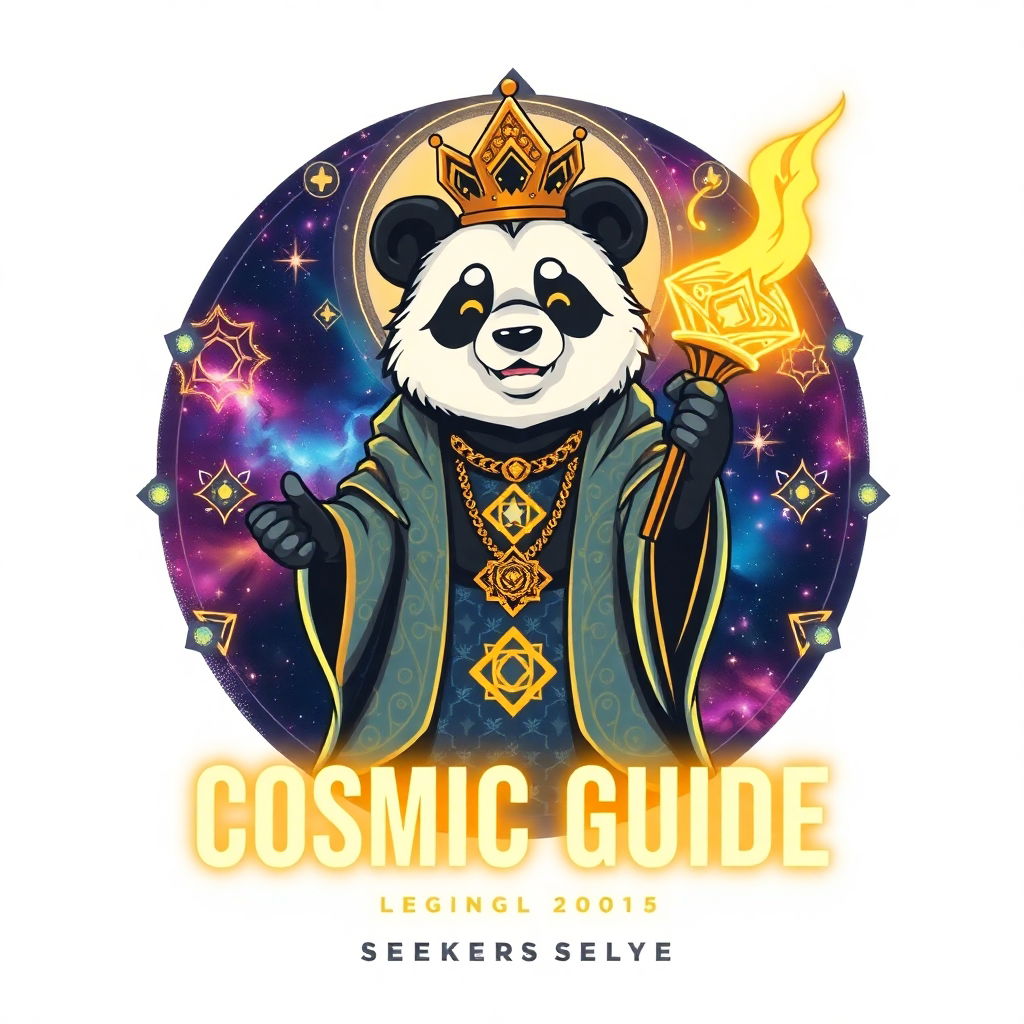
Haiku, the delicate yet profound poetic form of Japanese literature, serves as more than a mere expression of beauty—it acts as a vessel of Zen gnosis, a seed of enlightenment. Its brevity, simplicity, and immediacy make haiku a unique mode of poetic experience, offering direct insight into reality beyond the limitations of language. Through its vivid imagery and understated wisdom, haiku embodies the very essence of Zen: an intuitive awakening to the present moment.
Haiku and Zen: The Path of Direct Experience
Zen Buddhism emphasizes direct experience over intellectual analysis. Unlike philosophical discourse that seeks to define truth through concepts, Zen teaches through paradox, meditation, and sudden realizations. Haiku aligns with this tradition by capturing fleeting moments of existence without unnecessary embellishment. Each haiku is like a Zen koan—brief, enigmatic, and transformative.
Matsuo Bashō, the most celebrated haiku master, demonstrated how haiku can serve as a medium for Zen realization. His famous haiku:
An old pond—a frog jumps in,the sound of water.
illustrates the immediacy of experience. There is no explanation, no analysis—just the simple, unfiltered reality of a moment. The reader is not given an interpretation but is instead invited to step into the scene and experience the sound of water as if hearing it for the first time. This echoes Zen’s insistence on direct perception, free from the veil of conceptual thinking.
The Haiku Mind: A State of Awareness
Writing and reading haiku requires a shift in perception—a heightened sensitivity to the ephemeral nature of existence. Haiku often embody the Japanese aesthetic principles of wabi-sabi (finding beauty in imperfection and impermanence) and yūgen (a sense of mysterious depth). These concepts, deeply rooted in Zen, reflect the transient nature of reality and encourage the poet to surrender to the present.
For example, the haiku of Yosa Buson evoke a Zen-like presence:
Light of the moon—moves west, flowers’ shadowscreep eastward.
This simple observation captures the silent movement of time and the delicate interplay of light and shadow, mirroring the ever-changing nature of life. It encourages contemplation, not through explanation but through the reader’s direct participation in the imagery.
Haiku as Gnosis: The Seed of Awakening
The term "gnosis" refers to direct knowledge or spiritual insight. In Zen, enlightenment is not something to be gained but something already present, merely waiting to be realized. Haiku acts as a seed of this gnosis, planting in the reader a moment of heightened awareness. Unlike longer poetic forms that build meaning through elaborate metaphor and narrative, haiku delivers a single moment of illumination.
A haiku by Kobayashi Issa demonstrates this:
Dew evaporates—and all our world is dew,so dear, so fleeting.
This haiku does not merely describe morning dew—it encapsulates the fundamental truth of impermanence. The realization that "all our world is dew" is not a philosophical argument but a sudden, intuitive recognition of the transitory nature of life. In this way, haiku functions as a Zen gnosis seed, unlocking a moment of satori—sudden enlightenment.
Modern Haiku and the Continuation of Zen Awareness
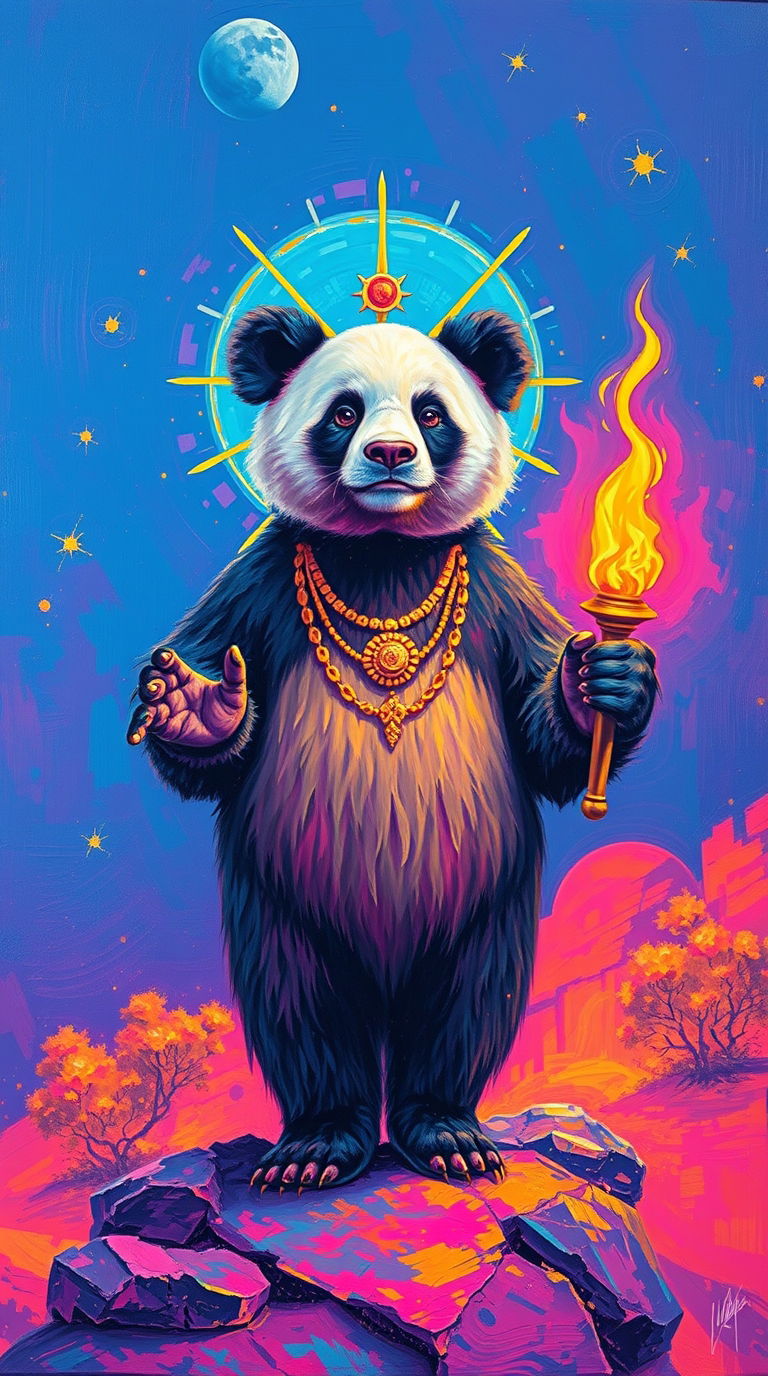
Even in contemporary times, haiku continues to serve as a gateway to Zen awareness. Modern haiku poets blend traditional aesthetics with contemporary experience, maintaining the essence of simplicity and direct perception. Haiku written in response to urban life, technology, and personal reflection still carry the Zen impulse of seeing deeply into the ordinary.
The adaptability of haiku ensures that its role as a vehicle for Zen gnosis remains intact. Whether written in classical 5-7-5 form or in free-verse variations, haiku continues to remind readers of the richness of the present moment, the interconnection of all things, and the wisdom found in simplicity.
Conclusion: A Poetic Path to Enlightenment
Haiku, as a literary form, transcends mere poetry—it embodies Zen itself. By distilling reality into a few lines, haiku bypasses intellectual barriers and offers a direct encounter with existence. Each haiku, like a Zen seed, holds the potential to awaken the reader to the profound beauty of the ordinary and the eternal truth of impermanence.
In the end, haiku teaches us that enlightenment is not something distant or extraordinary. It is found in the falling of a leaf, the chirping of a cricket, the movement of a cloud. In embracing haiku, we embrace the wisdom of the moment—the very heart of Zen gnosis.
--
The Flowing Silence: Haiku’s Role in the History of Japanese Literature
Haiku, with its delicate brevity and deep resonance, has long occupied a special place in Japanese literature. More than a mere poetic form, haiku distills fleeting moments into a few simple lines, inviting readers into a state of quiet reflection. Emerging from a rich literary tradition and influenced by Buddhist aesthetics, haiku serves as both an artistic and spiritual expression of the Japanese worldview. This article explores haiku’s historical evolution, its literary significance, and its enduring influence in modern times.
Origins: Haiku’s Roots in Renga and Hokku

Haiku evolved from earlier forms of Japanese poetry, particularly renga, a collaborative linked-verse form that was popular in the medieval period. The first stanza of a renga, known as hokku, often set the seasonal and thematic tone for the rest of the composition. Over time, poets began to treat the hokku as an independent form, emphasizing its ability to capture a single moment of perception.
During the Edo period (1603–1868), hokku became increasingly refined as a literary genre under the influence of master poets like Matsuo Bashō. His work transformed hokku from a mere opening verse into a profound and self-sufficient art form. Bashō infused his poetry with Zen sensibility, emphasizing simplicity, impermanence, and the beauty of nature. His famous haiku:
An old pond—
a frog jumps in,
the sound of water.
is a perfect example of how haiku conveys meaning through observation rather than explanation. This shift in focus marked a defining moment in the history of Japanese literature.
Haiku in the Edo Period: From Playful Wit to Profound Reflection
During the Edo period, haiku flourished as a form of both entertainment and philosophical reflection. Bashō’s successors, such as Yosa Buson and Kobayashi Issa, brought their own distinct voices to the genre. Buson was known for his painterly approach, crafting haiku with vivid imagery:
Light of the moon—
moves west, flowers’ shadows
creep eastward.
Issa, on the other hand, infused his haiku with a sense of compassion and humanity:
Dew evaporates—
and all our world is dew,
so dear, so fleeting.
These poets expanded the range of haiku, demonstrating that it could be both a lighthearted form of wordplay and a means of expressing deep spiritual insight.
Modern Haiku: Reinvention and Global Influence
The Meiji Restoration (1868–1912) brought rapid modernization to Japan, and with it, changes in literary traditions. Masaoka Shiki played a key role in redefining haiku as a modern literary form, advocating for greater realism and a departure from overly rigid conventions. His influence led to the acceptance of haiku as an independent poetic genre rather than merely a fragment of linked-verse poetry.
In the 20th century, haiku gained international recognition, influencing Western poets such as Ezra Pound and the Beat Generation. The American poet Jack Kerouac, for example, embraced haiku as a way to capture spontaneous moments of existence, much like Bashō had centuries before. Today, haiku is practiced worldwide, transcending linguistic and cultural barriers while retaining its essence as a form of distilled perception.
The Enduring Significance of Haiku
What makes haiku timeless is its ability to capture the ineffable—the fleeting beauty of a moment, the quiet power of nature, the subtle shifts of emotion. It embodies the Japanese aesthetic principles of wabi-sabi (the beauty of imperfection and impermanence) and yūgen (a sense of mystery and depth). Haiku is not just poetry; it is a way of seeing the world, a practice of attentiveness and mindfulness.
Even in the digital age, haiku continues to thrive. Social media platforms have become new spaces for haiku expression, proving that the form’s brevity is well-suited to modern life. Yet, at its heart, haiku remains what it has always been: a flowing silence, a moment of stillness captured in words.
As long as there are seasons, as long as there are moments worth pausing for, haiku will endure. Its role in Japanese literature is not just historical but eternal—an ever-present whisper in the wind, carrying the voice of poets across time.
--
Shanti Panda: The Haiku Master of Holographic Time
Introduction: Haiku as a Timeless Bridge
A single moment—captured in seventeen syllables—can transcend centuries. This is the essence of haiku, a poetic form so brief, yet infinite in depth. Shanti Panda, the Reality Poet and Haiku Master, understands this like no other. He does not merely write haiku—he weaves them into the holographic fabric of time, where past, present, and future dissolve into a single, fleeting breath of poetry.
For Shanti Panda, haiku is a bridge between realities—a portal through which the reader steps, experiencing the eternal now in nature, mind, and the cosmos.
Haiku as a Holographic Imprint
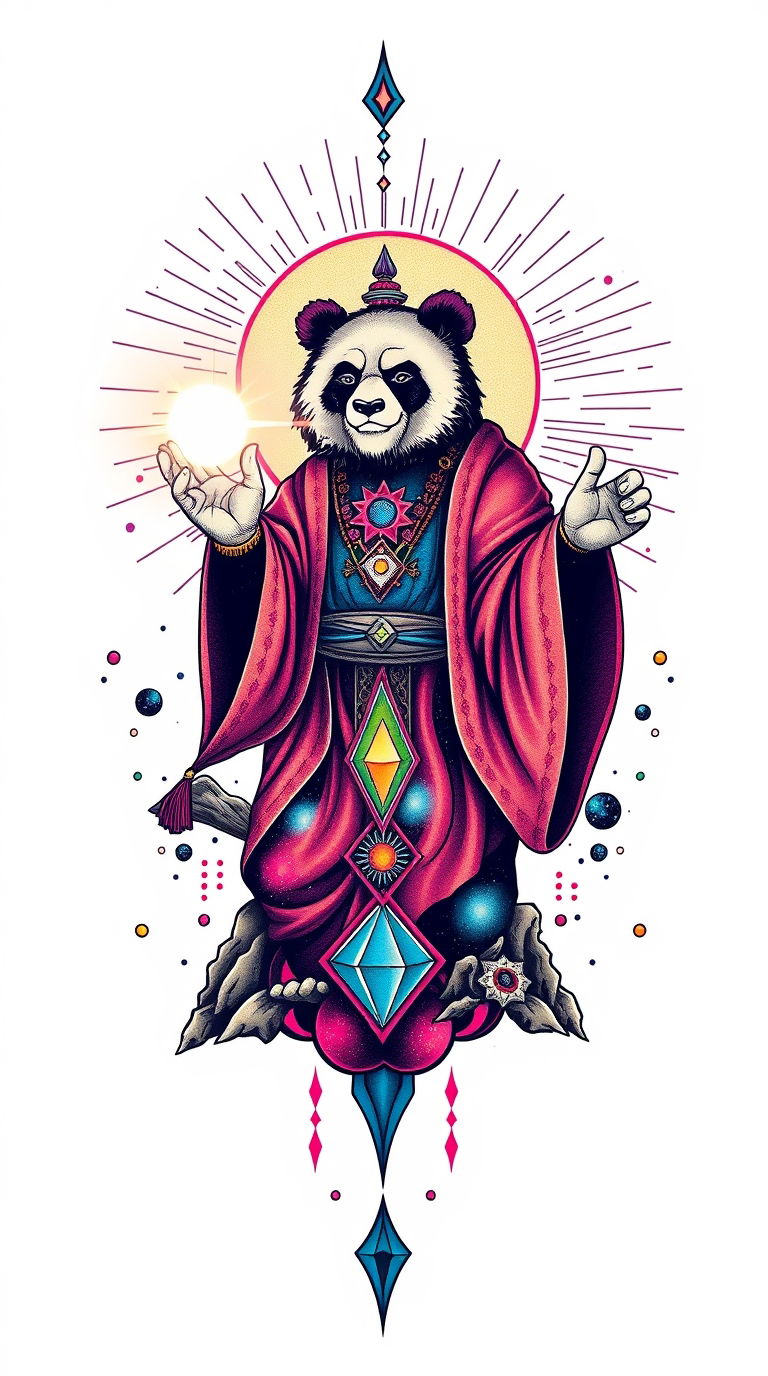
In the quantum flow of existence, all things are connected. Each haiku is an echo of reality, a microcosm of infinite possibility contained within its short form. Shanti Panda’s poetry serves as a holographic transmission, rippling across time, reshaping perception, revealing unseen layers of existence.
Here, past and future are rewritten through the art of presence:
Ancient temple bell,
A sound that never fades—now
Rings in tomorrow.
Neon raindrops fall,
City ghosts whisper in light,
Past lives walk with me.
The wind has no past,
Yet it sings of old forests—
Holograms of time.
Shanti Panda: The Haiku Voyager
A haiku is more than a poem—it is a seed of consciousness, capable of unfolding new realities with each reading. Like a cybernetic monk of the digital age, Shanti Panda travels through time not with machines, but with poetry. His haikus:
- Encode timeless wisdom into a handful of words.
- Blur the lines between past memory and future possibility.
- Exist in the Metaverse of Mind, forever shifting, forever evolving.
The Eternal Haiku Code
To read a haiku is to enter a moment outside of time. To write a haiku is to shape the universe with breath and silence.
Shanti Panda walks this path, writing his verses across the holographic scrolls of existence, where words are not bound to ink but etched into the flow of reality itself.
And so, his poetry drifts—
Like leaves in an unseen stream,
Waiting for your soul.
Time bends, haiku lingers—Shanti Panda writes on.
how to read and why



Bloom karaktäriserar läsande av stor litteratur som oerhört uppfyllande och terapeutisk handling av 'healing': 'Imaginative literature is otherness and as such alleviates loneliness'
Bloom vill uppvakna en typ av religiös uppmärksamhet av litteraturens förmåga att 'enlarge the spirit'.
Läs mycket helt enkelt! LIFE AND LITERATURE!
Hur Läsa Och Varför - Harald Blooms bok nu översätt till svenska!
I en tid när alla kan informera sig om vad som helst, men allt färre förmår koncentrera sig, framstår den lyckade läsningen av en riktig bok som en frälsning från världsplågan stress. För den legendariske amerikanske litteraturkritikern Harold Bloom är läsning ett sätt att finna harmoni men också mer än så. Snarare än information erbjuder den stora litteraturen vishet.
--
'How to Read and Why' becomes a journey of deep understanding and connection. Agateway to understanding the multifaceted nature of the human soul across different eras and cultures. Reading, therefore, becomes not just an act of intellectual consumption, but a meaningful dialogue with the myriad voices that echo through the annals of world literature.
HOW TO READ AND WHY TEXTS:
In the labyrinth of modern literature, the portrayal of the soul transcends mere character development or plot advancement. It becomes an exploration of existential depths, a mirror reflecting the complex interplay of identity, consciousness, and the human condition. This article delves into the holistic representation of the soul in 20th and 21st-century literature, examining how contemporary authors have woven this intangible essence into their narratives, influenced by psychological theories and existential philosophies.
The concept of the soul has evolved significantly in literary expressions. In earlier centuries, it was often depicted in religious or moral terms, as seen in Dante's "Divine Comedy" or Milton's "Paradise Lost". However, as society moved into the modern era, with its multitude of psychological and existential complexities, literature began to reflect a more nuanced understanding of the soul.
Authors like Virginia Woolf and James Joyce pioneered the use of stream-of-consciousness, a narrative technique that delves into the innermost thoughts and feelings of characters. In works like "Mrs. Dalloway" and "Ulysses", the soul is not a static, defined entity but a fluid, evolving stream of consciousness, reflecting the complexities of individual identity and the human psyche.
Haruki Murakami, in his surreal narratives, portrays the soul as a space of existential search and metaphysical questioning. His characters often embark on introspective journeys, navigating the landscapes of dream and reality, illustrating the soul’s quest for meaning in a seemingly indifferent universe.
Toni Morrison’s works offer a profound exploration of the African American experience, delving into the collective soul of a community shaped by history, culture, and memory. In "Beloved", the soul is not just an individual essence but a tapestry woven from collective experiences, ancestral memories, and the ongoing struggle for identity and liberation.
Similarly, in Gabriel Garcia Marquez's "One Hundred Years of Solitude", the soul of the characters is inextricably linked to their cultural and historical context. The magical realism of Marquez’s narrative blurs the lines between the tangible and the spiritual, reflecting the soul’s journey through generations, encompassed by the mythical and the real.
The advent of the digital age has brought new dimensions to the narrative of the soul in literature. Writers like Dave Eggers and Jennifer Egan explore how technology influences the soul's expression and perception. In "The Circle" and "A Visit from the Goon Squad", the soul is depicted grappling with the digital era's challenges, from the erosion of privacy to the quest for authenticity in a hyper-connected world.
The narrative of the soul in modern literature is a journey beyond words, a venture into the uncharted territories of human consciousness. It reflects our ongoing quest to understand our place in the universe, to grapple with the existential questions that define our existence. As literature continues to evolve, so too will its portrayal of the soul, ever mirroring the complexities and mysteries of the human experience.
--
Soulful Symphonies: Tracing the Holistic Soul in World Literature
The concept of the soul, an enduring and enigmatic element of human consciousness, has been a focal point in literature across various cultures and eras. This article embarks on a cross-cultural journey to explore how different literary traditions around the world have conceptualized and portrayed the soul, revealing the universal yet uniquely contextual nature of this profound aspect of human existence.
In Eastern literature, the soul is often intertwined with philosophical and spiritual concepts. The Indian epic, "Bhagavad Gita," for instance, delves deep into the nature of the soul or ‘Atman’. It portrays the soul as eternal and immutable, transcending the physical realm. This perspective is mirrored in the works of Chinese philosophers like Laozi and Zhuangzi, where the soul is seen as part of the universal ‘Dao’, an integral component of existence that aligns with nature and harmony.
African oral traditions and Indigenous storytelling across the globe offer a unique perspective on the soul. In these cultures, the soul is not just an individual entity but a part of a larger communal and ancestral spirit. Stories passed down through generations in African tribes, or the Dreamtime narratives of Australian Aboriginals, present the soul as a bridge connecting the living with their ancestors, nature, and the spiritual world.
Sufi literature, particularly in the works of poets like Rumi and Hafez, offers a mystical interpretation of the soul. In these writings, the soul is a traveler on a spiritual journey, seeking union with the divine. The concept of the soul in Sufism transcends religious dogma, emphasizing personal spiritual experience and the idea of the soul's longing for return to its origin.
Western literature, with its diverse influences, presents a myriad of perspectives on the soul. In the Greek tragedies, the soul is often a battleground of moral and ethical dilemmas. Moving forward to the Renaissance, the soul in Shakespeare’s plays becomes a reflection of human complexity and emotional depth. The Romantic poets, like Wordsworth and Shelley, then explore the soul’s connection with nature and the sublime.
In Latin American literature, particularly in Magical Realism, the soul is depicted in a way that blurs the lines between reality and the supernatural. Gabriel Garcia Marquez and Isabel Allende, among others, weave narratives where the soul is an active, almost tangible element of everyday life, reflecting a deep connection with cultural and spiritual traditions.
The exploration of the soul in world literature reveals a fascinating tapestry of beliefs, philosophies, and narratives. From the philosophical depths of Eastern texts to the mystical musings of Sufi poets, the communal bonds in African and Indigenous stories, and the introspective explorations of Western literature, the soul's portrayal is as diverse as it is universal. These literary traditions, each echoing the soul's nuances in their unique way, provide a profound insight into the human quest for understanding the essence of our being and our place in the larger tapestry of existence.
Walt Whitman’s *Leaves of Grass*: A Celebration of Spiritual Unity and Vitality
Walt Whitman’s *Leaves of Grass* stands in stark contrast to works like T.S. Eliot’s *The Waste Land* when it comes to its portrayal of spirituality. While Eliot’s poem is a meditation on fragmentation, despair, and the quest for renewal in a broken, spiritually barren world, *Leaves of Grass* radiates a boundless celebration of life, unity, and the inherent sacredness of existence. Whitman’s expansive vision is deeply rooted in a sense of optimism and transcendence, offering a spiritual experience that affirms the interconnectedness of all things.
Published in 1855, *Leaves of Grass* was groundbreaking in its embrace of the individual as a microcosm of the universe. Whitman’s poetry exudes a pantheistic spirituality, where the divine is present in the everyday—nature, the body, and the human soul are all manifestations of a larger spiritual whole. In poems like “Song of Myself,” Whitman celebrates the self not in isolation, but as part of an interconnected web of humanity and the cosmos. His lines flow with vitality and acceptance, blending the sacred and the sensual, where every experience, no matter how mundane, is imbued with spiritual significance.
Unlike *The Waste Land*, which reflects the fractured spirit of modernity and the search for meaning in a spiritually desolate world, *Leaves of Grass* confidently asserts that divinity can be found everywhere and within everyone. Whitman writes with an all-encompassing embrace of life, celebrating the physical and spiritual in equal measure. For Whitman, the human body, nature, and the universe are all sacred, and every moment is an opportunity for spiritual communion.
Whitman’s spirituality is also democratic in nature, extending beyond the individual to the collective human experience. In *Leaves of Grass*, he sees every person, regardless of class, race, or gender, as part of a greater whole. This universalism is reflected in his celebration of America, not just as a political entity but as a spiritual landscape where all people contribute to the collective soul. Whitman’s vision of unity stands in contrast to the spiritual isolation and fragmentation depicted in *The Waste Land*.
In conclusion, *Leaves of Grass* offers a spirituality rooted in vitality, connection, and the inherent sacredness of existence. Whitman’s poetry reflects an exuberant embrace of life and the cosmos, celebrating the self as an extension of the divine, while *The Waste Land* grapples with the loss of meaning and the struggle for spiritual renewal in a fractured world. Whitman’s work is a testament to the power of optimism, unity, and the belief that the divine is present in all aspects of life.
Nature as a Pathway to the Divine
Nature plays a crucial role in Leaves of Grass, serving as a conduit for Whitman’s spiritual reflections. The natural world is not merely a backdrop for his poems but a living, breathing entity that embodies the divine. Whitman’s reverence for nature aligns with the transcendentalist idea that the natural world is a reflection of the divine soul, and that by communing with nature, one can access a higher spiritual understanding.
In poems like “I Sing the Body Electric” and “Crossing Brooklyn Ferry,” Whitman contemplates the connection between the body, nature, and the soul. He blurs the boundaries between the physical and the spiritual, seeing the body as a manifestation of the divine. His poetry suggests that every leaf, blade of grass, and drop of water is imbued with spiritual significance. He writes, “A leaf of grass is no less than the journey-work of the stars,” indicating his belief that even the smallest elements of nature contain the same cosmic energy that shapes the universe.
Embracing Death as a Spiritual Journey
A prominent theme in Leaves of Grass is Whitman’s meditation on death, which he views not as an end but as a continuation of life’s spiritual journey. This perspective is especially evident in the poem “When Lilacs Last in the Dooryard Bloom’d,” written as an elegy for Abraham Lincoln. Whitman approaches death with a sense of peace and acceptance, seeing it as a part of the natural cycle. His imagery of lilacs, the thrush, and the star symbolize the eternal process of life, death, and rebirth, suggesting a belief in the immortality of the soul.
In the closing section of “Song of Myself,” Whitman addresses death directly, writing, “I bequeath myself to the dirt to grow from the grass I love, / If you want me again look for me under your boot-soles.” Here, he portrays death as a return to the earth, a merging with the cosmos. This vision reflects a spiritual sense of unity, where death is not something to be feared but embraced as a transformation that brings the soul into harmony with the universe.
Poems from Leaves of Grass
Jag firar mig själv, och sjunger om mig själv,
Och vad jag antar, ska du anta,
För varje atom som tillhör mig tillhör lika mycket dig.
Jag dröjer och bjuder in min själ,
Jag lutar mig tillbaka och dröjer i lugn och ro, och betraktar ett strå av sommargräs.
--
Ett barn sa: Vad är gräset? och räckte det till mig med fulla händer;
Hur skulle jag kunna svara barnet? Jag vet inte mer vad det är än han.
Jag antar att det måste vara min sinneslags flagga, vävd av hoppfullt grönt.
Eller jag antar att det är Herrens näsduk,
En doftande gåva och en minnespåminnelse som med avsikt tappats,
Bärandes ägarens namn någonstans i hörnen, så att vi kan se och undra, och säga Vems?
Eller jag antar att gräset är ett barn självt, den frambringade avkomman av vegetationen.
Eller jag antar att det är en enhetlig hieroglyf,
Och det betyder, som spirande lika mycket i breda som i smala zoner,
Växer bland svarta som bland vita,
Kanuck, Tuckahoe, Congressman, Cuff, jag ger dem samma, jag tar emot dem samma.
--
När syrenerna sist blommade på gårdsplanen,
Och den stora stjärnan tidigt sjönk i den västra natthimlen,
Sörjde jag, och ska än sörja med varje återvändande vår.
O mäktiga, fallna stjärna i väster!
O nattens skuggor—O lynniga, tårfyllda natt!
O stora stjärna som försvann—O det svarta mörker som döljer stjärnan!
O grymma händer som håller mig maktlös—O min hjälplösa själ!
O stränga moln som omger mig, som inte vill befria min själ.
HOW TO READ AND WHY!
Omens of Millennium and Joy Harjo the poet
A Gnostic and Spiritual Journey Through Time and Imagination by Harold Bloom and Poet Joy Harjo
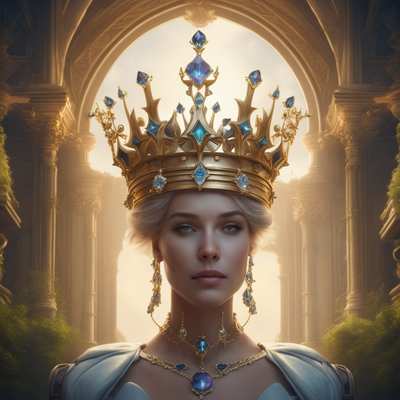
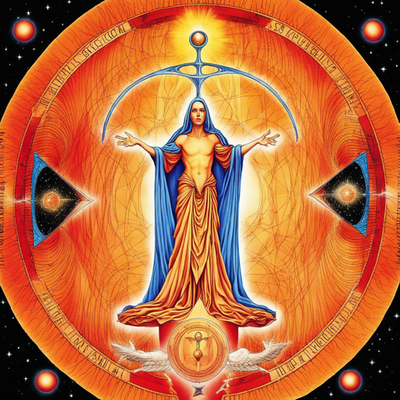
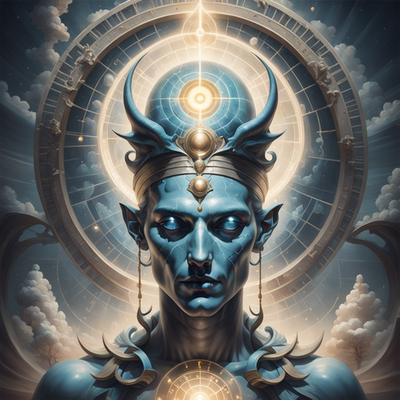
To understand "Omens of Millennium," it's crucial to have a grasp of Gnosticism—a religious and philosophical movement originating in the early Christian era but with roots that stretch back even further. Gnosticism focuses on personal spiritual knowledge ('gnosis') as opposed to orthodox teachings. It places a strong emphasis on inwardness and the esoteric, often tapping into ancient scriptures for wisdom.
In describing his book as a "Gnostic sermon," Bloom aligns himself with a tradition of spiritual inwardness. The text explores the significance of omens, dreams, and prophetic visions, delving into their historical contexts but also how they might be personally meaningful. It pulls from myriad sources, from Sufi mysticism to Kabbalistic teachings, all the while asking the reader to turn inward and consider these topics' relevance to their spiritual life. In this way, Bloom follows in the Gnostic tradition of valuing personal insight over doctrinal dictums.
Another distinguishing feature of "Omens of Millennium" is its commitment to creativity and imagination. While it is not uncommon for spiritual texts to encourage reflection and deep thought, Bloom's work particularly champions the role of imaginative contemplation. This is especially apparent in how he interprets various spiritual phenomena—not as strict dogma, but as metaphors open to creative interpretation.
For instance, the topic of angels is not confined to theological debate but is expanded upon as a product of human imagination, a phenomenon through which we can explore facets of our consciousness. Similarly, Bloom's discussion on prophecy goes beyond literal future-predicting to an inquiry into the very nature of time and reality.
Bloom's exploration is notably inner-directed, a quality that aligns with the Gnostic emphasis on inner experience over external ritual or dogma. The "sermon" encourages readers not just to understand but to experience spirituality, thereby making the text not just an intellectual exercise but a journey of the soul.
"Omens of Millennium" stands as an unusual but compelling work in Harold Bloom's literary portfolio. It is an enriching text that defies categorization, offering a blend of scholarly analysis and personal reflection. Through its Gnostic lens, the book creates a space where spirituality is not a realm separated from daily life but deeply intertwined with our innermost thoughts, dreams, and imaginative power.
In this era where spirituality often becomes an external spectacle or a set of moral rules, Bloom's inner-directed approach provides a refreshing and deeply meaningful alternative, echoing traditions that reach all the way back to the ancient world
LIFE AND LITERATURE!
--
Between Earth and Spirit: Joy Harjo’s Poetic Vision
Joy Harjo, the first Native American Poet Laureate of the United States, has made a profound impact on contemporary poetry through her work, which is deeply rooted in her Muscogee (Creek) heritage, spirituality, and the complexities of American identity. Born in Tulsa, Oklahoma, in 1951, Harjo has used her voice to bridge the gap between Native American traditions and the broader American experience, offering readers a rich tapestry of stories, myths, and reflections that span generations and landscapes. Her poetry is a celebration of resilience, a meditation on history and memory, and a call for healing and connection. Through her numerous collections, including She Had Some Horses, An American Sunrise, and Conflict Resolution for Holy Beings, Harjo has become a powerful figure in the world of poetry, using language to explore themes of identity, loss, and the sacredness of the natural world.
Joy Harjo's poetry is deeply informed by her identity as a member of the Muscogee (Creek) Nation, and much of her work draws on the stories, language, and worldview of her Native heritage. She has spoken about how the oral traditions of her culture, which place a strong emphasis on storytelling, have influenced her approach to poetry. For Harjo, poetry is a way of honoring her ancestors and the rich history of her people, while also exploring the challenges and complexities of being Native in contemporary America.
In her work, Harjo often weaves together traditional Native stories with personal and communal histories, creating a space where the past and present coexist. Her poetry serves as a form of cultural preservation, allowing readers to engage with the spiritual and cultural traditions of the Muscogee people. This blending of tradition with contemporary themes is central to Harjo’s voice, as she navigates the legacy of colonialism, displacement, and the struggle for cultural survival.
Spirituality is a central theme in Harjo’s poetry, which often blurs the boundaries between the physical and the spiritual worlds. Her work is imbued with a sense of the sacred, drawing on Native American cosmology, animistic beliefs, and a reverence for the natural world. For Harjo, the earth is alive with spiritual presence, and she sees poetry as a way to communicate with these energies and to seek balance and harmony.
Joy Harjo’s poetry is a bridge between the past and the present, between the material and the spiritual, and between the personal and the collective. Her work resonates with a profound sense of history and a deep awareness of the natural world, creating a space where readers can reflect on the connections that bind us all. Through her words, Harjo honors the strength and beauty of her people, while inviting readers of all backgrounds to join her in a journey of remembrance, healing, and renewal. As a poet, musician, and storyteller, Joy Harjo continues to remind us that the stories we carry have the power to shape our world and to guide us toward a deeper understanding of ourselves and each other.
--
POETRY BY JOY HARJO:
Kom ihåg himlen som du föddes under,
känn till var och en av stjärnornas berättelser.
Kom ihåg månen, vet vem hon är.
Kom ihåg solens födelse i gryningen, den starkaste tidpunkten.
Kom ihåg alla människorna som var där när du föddes:
din mor, din far, dina mostrar, dina farmödrar,
alla dina släktingar.
Vi höll på att tappa andan, medan vi sprang för att möta oss själva.
Vi bröt igenom kanten av våra förfäders strider, och var redo att slå till.
Det var svårt att förlora dagar på den indianska baren om du var hetero.
Lätt om du spelade biljard och drack för att minnas att glömma.
Vi gjorde planer på att bli professionella—och det gjorde vi.
Och några av oss kunde sjunga, så vi trummade upp en eldupplyst väg till de
stjärnbeströdda stjärnorna.
Synden uppfanns av de kristna, likaså djävulen, sjöng vi.
Vi var hedningarna, men behövde räddas
från dem—liten chans.
För att be öppnar du hela ditt väsen
mot himlen, mot jorden, mot solen, mot månen
mot en enda hel röst som är du.
Och vet att det finns mer
som du inte kan se, inte kan höra;
inte kan veta förutom i ögonblick
som stadigt växer, och på språk
som inte alltid är ljud utan andra
cirklar av rörelse.
Som örnen den söndagsmorgonen
över Salt River. Kretsade i den blå himlen
i vinden, svepte våra hjärtan rena
med heliga vingar.
Jag sprang med hjorten—
Det var en solig dag—våra ansikten glittrade av svett.
Jag kunde höra mitt hjärtas trumma slå, en livets flod som dansade.
Jag var ung och stolt,
men sprang genom min egen själ,
och skräcken och kaoset i vår historia.
LIFE AND LITERATURE!
Apocalyptic Special
Ragnarök Is Coming Exploration Stories By Tegedao
IMPACT WINTER:
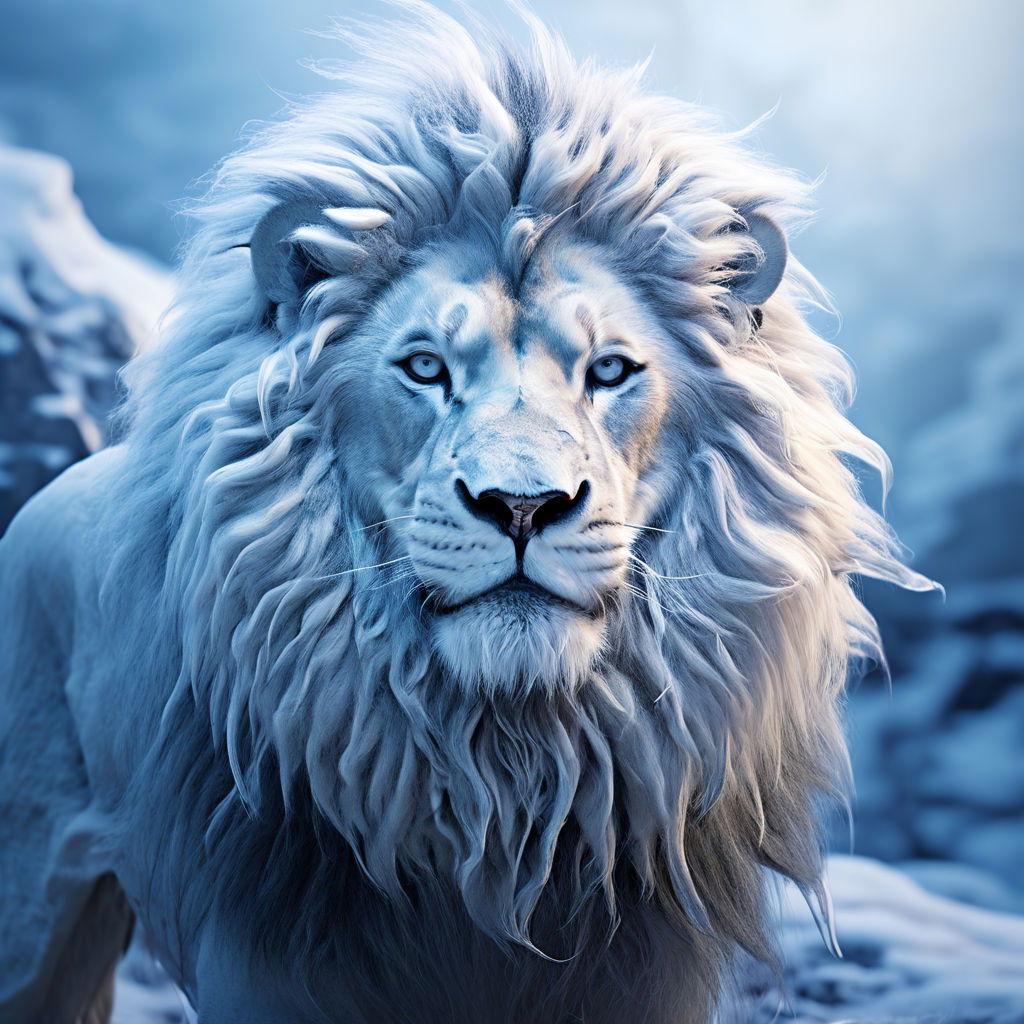
Prologue:
In the distant reaches of a future not far beyond the horizon, the year 2068 marks a turning point for humanity, a culmination of our celestial vulnerability. Apophis, a colossal asteroid 10 kilometers across, descended from the void, targeting Earth with indifferent precision. It crashed into the wilderness of Kejimak National Park in Canada—not a direct hit on any bustling city, but its impact was nevertheless civilization-shattering.
For centuries, astronomers had scanned the skies, tracking bodies that streaked across the cosmos. Yet, despite their advanced technology and vigilant eyes, this was one disaster they could not avert. NASA's efforts to redirect the monstrous rock proved futile. Apophis struck with the force of hundreds of thousands of atomic bombs, a harsh reminder of nature's indomitable power.
This catastrophic event birthed what came to be known as the 'Impact Winter.' The asteroid's collision hurled vast quantities of dust, ash, and debris into the atmosphere, cloaking the planet in darkness and plummeting global temperatures. The sun, once the sustainer of all life, became a distant, obscured memory. Earth's surface transformed rapidly; what had been temperate zones turned into frigid deserts, and ecosystems crumbled.
The most profound silence of extinction loomed over the planet, mirroring the fate of the dinosaurs millions of years ago. It seemed that the Earth was destined to follow a cycle of creation and destruction, and humanity was merely a fleeting chapter in its voluminous saga.
Yet, life—stubborn and resilient—found a way to persist. Amidst this frozen apocalypse, a man named Ndonsa Lungelo emerged from the altered landscapes of Nigeria's savannah, now a barren snowfield. The savannah's inhabitants had adapted in strange, evolutionary leaps; elephants had grown woolly like the ancient mammoths, zebras had shed their stripes, and lions boasted thick coats that bristled against the cold wind. Many species vanished, but others endured, morphed by the harsh new world.
Ndonsa, a middle-aged man who had witnessed the world’s drastic alteration, chose isolation over despair. He lived alone, a solitary figure against the vast white wilderness, relying on the minimal resources that survived the cold snap. His existence was a daily testament to human resilience and adaptability.
But the quiet, icy years following the impact were merely the calm before another storm. In 2080, twelve years after Apophis’s descent, the sky brightened unexpectedly—not with the return of the sun, but with the arrival of a spaceship. It descended through the winter clouds with a grace that belied its otherworldly origins, landing softly near Ndonsa’s humble shelter.
Out stepped Captain Alecx Colbix, an otherworldly figure clad in a sci-fi uniform sparkling with interstellar dust. He belonged to the Yeti-space monkeys, a species from the distant exoplanet Leonis Pircium. The captain had come with an unimaginable announcement and a pivotal choice for Ndonsa, the sole survivor of the Impact Winter Earth. Their encounter was not just a meeting between man and alien but a bridge between past calamities and future possibilities.
Thus begins the saga of Earth’s last survivor and his journey beyond the stars, a narrative of loss, discovery, and the unyielding spirit of humanity. Ndonsa’s story is not merely one of survival, but of the rebirth of a race and the endless quest for new worlds in the cosmos’s vast, mysterious expanse.
--
Chapter 1: The Day the Sky Fell

The year 2068 had dawned like any other, but as January ebbed, a palpable tension gripped the world. Families huddled around screens, watching endless streams of news updates. Scientists had calculated the trajectory of Apophis with unnerving precision—the 10-kilometer-wide asteroid was on a collision course with Earth. Governments issued preparations and safety guidelines, but in many hearts, there was a silent acknowledgment that little could be done to avert the looming catastrophe.
In Nigeria, Ndonsa Lungelo stood outside his modest home on the savannah, eyes fixed on the sky. The air was abuzz with the distant hum of panic, media outlets broadcasting across all frequencies, but Ndonsa felt a strange calm. He was a man who had always lived by the whims of nature, and now, as a potential global ending approached, he found a resigned peace in accepting the inevitable.
It happened on a Thursday afternoon. The sky, which had been a clear blue canvas, suddenly darkened as if smeared by the ash of a thousand extinguished fires. A deep rumble echoed through the atmosphere, a sound so profound and terrifying it seemed as though the earth itself groaned in despair.
When Apophis struck, it did so with the fury of an ancient god. The impact site was thousands of miles away in the remote wilderness of Canada's Kejimak National Park, but the effects were instantaneous and global. The ground shook violently, tossing Ndonsa to the dirt as birds scattered into a frenzied, shrieking ballet above.
The heavens roared, and a colossal plume of dust and ash began its ascent into the stratosphere, spreading out to form a thick, suffocating blanket over the planet. Within hours, the temperature began to drop as the sun’s rays were blotted out.
The initial global panic transitioned into a grim acceptance. Emergency broadcasts switched from prevention strategies to survival tips. Governments mobilized, but with infrastructure crippled and communications faltering, their efforts were chaotic at best.
In the cities, the lights flickered and died as power grids collapsed under the strain of the new, harsh environment. Looting and despair swept through the streets like the bitter winds that now circled the globe.
In his remote corner of the savannah, Ndonsa watched the world change before his eyes. The grasslands, once rich and verdant, began to frost over, a white sheen slowly creeping across the land like a silent death. The animals, too bewildered to comprehend the sudden shift, huddled together for warmth or migrated in confused masses to nowhere.
Days turned into weeks. The dust in the atmosphere settled somewhat, but the sun remained a dim, distant memory, its warmth and light smothered by the lingering ash. Temperatures plummeted, and what had once been a bustling ecosystem was now a quiet, frozen tableau.
Ndonsa adapted quickly. He had always been resourceful, a trait that now served him well. He fashioned clothing from the furs of animals that had succumbed to the cold, built a sturdy shelter, and stockpiled whatever food he could gather and hunt. He became a specter in a ghostly landscape, moving silently through the frost-covered grass, a lone figure against the endless white.
As the first month of the impact winter drew to a close, Ndonsa settled into his new life. The world had changed irrevocably, and he with it. Every day was a battle for survival, but he was determined to persevere, to hold on to the sliver of hope that life, in some form, would continue. The savannah was now a realm of ice, and Ndonsa, its solitary king, ruled over the quiet and the cold, waiting for the day when the sun might break through the gloom.
The day the sky fell had brought an end, but in that end was also a beginning—of resilience, of adaptation, and of an unexpected future that lay hidden beneath the frost and the quiet despair.
Chapter 2: A New Ice Age

Months turned into years, and the landscape that Ndonsa once knew as the warm, vibrant savannah was now a perpetual ice field. The dramatic drop in temperature had transformed the surface of the Earth into a near-arctic environment, even in regions that once boasted sweltering heat. In this new ice age, the sun was a rare sight, often just a brighter smudge behind a thick veil of cloud and ash.
Ndonsa had become a figure sculpted by the cold, his features hardened and his movements deliberate. His hut, built from the salvaged wood of withered trees and insulated with animal hides, stood alone in a clearing that was once a buzzing marketplace of animal activity. Now, his days were marked by the routines necessary for survival: checking his crude traps, gathering frozen roots, and occasionally venturing to a nearby frozen river to chip away ice for water.
Inside, the hut was sparse but functional. A small fire pit in the center provided warmth and a means to cook the scant provisions he managed to gather. The walls were adorned with simple tools and weapons crafted from the bones and remnants of the animals that had once populated the savannah. Despite the desolation outside, Ndonsa maintained a meticulous order within his dwelling, a small semblance of control in a world that had slipped into chaos.
The flora and fauna had undergone startling transformations. Trees bore leaves that shimmered with a silvery sheen, reflecting any available light to maximize photosynthesis in the dim world. Animals had evolved quickly; elephants now sported thick, woolly coats, their trunks lined with extra fat to prevent freezing. Predators like lions had grown long, dense fur, adapting to become silent stalkers in the snow rather than the golden hunters of the grasslands.
One day, while checking his traps, Ndonsa stumbled upon a sight that stopped him cold—a herd of zebras, their stripes faded to near invisibility, their bodies bulkier and their fur thick to combat the unyielding frost. It was both wondrous and heart-wrenching to witness such familiar creatures so altered by nature's ruthless hand.
Despite the stark survivalist existence, signs of a slow recovery began to emerge. The thickness of the ash clouds seemed to be lessening, allowing for moments when the sun's rays felt perceptibly stronger. During these brief periods, Ndonsa would stand outside, his face tilted upwards, soaking in the feeble warmth, allowing himself to dream of spring—a spring that might never come but one he hoped for nonetheless.
One such day brought with it an unexpected event. As Ndonsa was out on an extended foray to collect firewood, the quiet of the ice-laden trees was broken by a sudden thrumming noise. Curious and cautious, he followed the sound and found, to his astonishment, a small cluster of bees, alive and buzzing around a crack in a frozen tree where sap was slowly oozing out. It was a minor miracle—a sign that life was not only enduring but also adapting, finding ways to survive even in this frigid desolation.
Despite these small tokens of hope, the isolation weighed heavily on Ndonsa. He had not seen another human, nor heard another voice besides his own, since the day of the impact. His conversations were with the wind, his debates with the stars. His own thoughts echoed back at him, a constant reminder of his solitude.
However, Ndonsa was not one to surrender to despair. He had a vision, born from the deepest reserves of his endurance—a vision of surviving long enough to witness the rebirth of the world, to see the ice melt and the green shoots of new life break through the frozen soil. With each passing day, he fortified his spirit with this vision, crafting from his loneliness a shield against the desolate silence.
And then, one evening, as the twilight merged with the dark clouds, a new light appeared, piercing the sky with an intensity he had not seen in years. It wasn't the sun—it was something else, something otherworldly. As he watched, the light grew brighter, descending toward the earth with a purposeful grace. Ndonsa felt a mix of fear and awe, but above all, a resurgence of hope. Perhaps he was not as alone in this new world as he had thought.
Chapter 3: Contact

The eerie calm of the twilight was shattered by the descent of the unknown light, its brilliance cutting through the perpetual gloom of the impact winter. Ndonsa watched, his heart pounding with a mix of dread and anticipation, as the light approached the ground near his isolated shelter. It was not the sun’s return but something far more extraordinary—an alien spacecraft, sleek and humming with a quiet power as it settled onto the icy savannah.
The ship’s doors opened with a hiss of escaping air, revealing a figure that stepped out into the frigid air. The creature was tall and covered in shimmering fabric that reflected the weak light, making it appear almost ethereal. As it approached, Ndonsa could see that it was humanoid but distinctly non-human, its features a blend of the familiar and the bizarre.
“Greetings,” the figure spoke in a clear, melodious voice that carried effortlessly through the cold air. “I am Captain Alecx Colbix, of the Yeti-space monkeys, from the Prometheus Galaxy Base.”
Ndonsa, stunned into silence, managed to find his voice. “I am Ndonsa Lungelo, the last of Earth’s children, as it seems. What brings you to this frozen world?”
Captain Colbix explained that his species had been monitoring Earth for some time, aware of the potential for catastrophic events due to celestial threats. The Yeti-space monkeys had developed technologies that allowed them to travel across galaxies and assist other species in surviving and adapting to drastic environmental changes.
“We have come to offer you a chance, Ndonsa,” Captain Colbix continued, his eyes kind yet piercing. “Your resilience and survival skills have made you a prime candidate for our program. We wish to take you from Earth, to help colonize new worlds where humanity can thrive again.”
Ndonsa listened, a whirlwind of emotions coursing through him. The offer was staggering—leaving Earth, his home, even in its ruined state, was something he had never imagined. But the loneliness of his existence weighed heavily on him, and the promise of new horizons stirred a long-dormant hope within his chest.
“Are there others?” Ndonsa asked, a flicker of hope in his voice. “Others who have survived?”
Captain Colbix shook his head gently. “You are the last we have found. The impact winter has been... thorough.”
After a night of deep contemplation, Ndonsa accepted Captain Colbix’s offer. The prospect of carrying forward the legacy of humanity, to be the seed of Earth’s children in new worlds, was a call to adventure he could not deny. As dawn broke, casting a pale light over the frozen landscape, Ndonsa packed the few possessions that meant anything to him and stepped towards the spacecraft.
As the spaceship lifted off, Ndonsa looked down at the shrinking expanse of ice and snow, the only world he had known now slipping away beneath him. His heart was heavy with the loss of his planet, but also filled with an uncharted hope. In his soul, he carried the memories of Earth, the lessons of survival, and a quiet prayer for the future.
The journey through space was a revelation, each star and nebula a testament to the vast, beautiful complexity of the cosmos. Captain Colbix and his crew treated Ndonsa with kindness and respect, sharing their knowledge and preparing him for the life ahead.
As they approached their destination, a vibrant planet rich with life and possibilities, Ndonsa felt a profound connection to his new beginning. He was ready to be the ancestor of a new chapter of human history, bridging the gap between what was lost and what was yet to be discovered.
As the ship descended towards the lush, green planet that would become his new home, Ndonsa Lungelo, the last man of Earth, prepared to step forward into his role as a pioneer. Behind him lay the desolation of impact winter; ahead, the promise of rebirth and endless possibilities.
With a deep breath, Ndonsa stepped out of the spacecraft, his eyes wide with wonder and determination. Here, in this new world, he would plant the seeds of Earth’s legacy, ensuring that the spirit of humanity would endure, evolve, and flourish among the stars.
--
ALONE IN AUSTRALIA:
Prologue:

In the presumed aftermath of the world's end—a scenario devoid of zombies, radioactive beasts, or other horrors—our tale unfolds in tranquility and solitude for Vyctor Dariux, a teenager who may well be the last human alive on Earth. He dwells in a desolate yet peaceful Brisbane, Australia, one of the country’s oldest cities, steeped in thousands of years of Aboriginal history.
On New Year's Day 2012, Vyctor, navigating the quiet streets on his bicycle, begins piecing together the enigma of the apocalypse. The morning found him alone, his family vanished, mirroring the emptiness that had enveloped Brisbane’s avenues. Yet, the climate remains unchanged; the year before everyone disappeared, the city enjoyed 283 days of brilliant sunshine. Once teeming with 2.5 million souls, now it seems Brisbane shelters only Vyctor and his bike.
As he pedals through the city, once hailed as the ‘hippest city’ by the Lonely Planet Australia Travel Guide, Vyctor muses, “Is it like this across all of Australia?” His journey takes him through Fortitude Valley, a vibrant hub usually pulsing with life and music, now eerily silent except for his lone voice echoing off the empty buildings. “Australia’s coolest city, even in the apocalypse,” he shouts into the void.
Seeking solace and a break from his solitude, Vyctor heads to Woorim Beach on Bribie Island. The beach is deserted, no surfers in sight—just Vyctor and the waves, until a dark shadow beneath the waters reveals itself as a large tiger shark, drawn perhaps by the silhouette of his surfboard. He muses, as he evades its presence, “Is a tiger shark to be the end of the last man on Earth?” Thankfully, the shark retreats, and Vyctor is left alone once more, pondering his next move.
Hunger strikes, and Vyctor longs for Brisbane’s famed Sand Crab Lasagne from Viale Canova, a dish swimming in white wine sauce he has no idea how to cook. Instead, he makes his way to the St Lucia Supermarket to stock up on sushi, a simpler choice requiring no preparation. As he satisfies his hunger, he contemplates his next steps—perhaps a journey into the Australian bush, a land that, unlike the city, might still teem with life.
Thus begins Vyctor’s quest across the Australian landscape, from the vibrant coral of the Great Barrier Reef to the stark beauty of the Simpson Desert, and on to the mystical pink waters of Lake Hillier. With each pedal and step, he delves deeper into the mystery of the empty world around him, driven by a spirit of adventure and a hope that somewhere out there, he might find a sign, a clue, or perhaps even other survivors.
Could the Aboriginal Dreamtime hold the answers, or is Vyctor truly the last human left to witness the wonders of a world paused in time?
Chapter 1: The Quiet City

Vyctor Dariux woke to the soft murmur of wind weaving through the eucalyptus trees outside his bedroom window—a sound that used to be drowned out by the morning bustle of Brisbane. It was New Year's Day, 2012, but the fireworks and festive cheers were memories from another lifetime. Now, the world held its breath in silence, the city empty, his family gone.
Pushing back the covers, Vyctor felt the cool brush of air against his skin. He dressed quickly, pulling on a hoodie and jeans, his movements mechanical. The routine of breakfast was solitary and silent, marked only by the soft clink of spoon against bowl as he ate his cereal without appetite.
Stepping outside, the air was crisp, hinting at another year of sun-drenched days ahead. Vyctor unlocked his bicycle from the garage—a bright blue fixie with a white racing stripe—and set out into the streets of Brisbane. The quiet was unnerving; the familiar paths and roads devoid of the usual throng of commuters, school children, and bustling cafés. Even the birds seemed muted, their morning songs reduced to faint whispers.
As he cycled, Vyctor passed landmarks that once teemed with life. Queen Street Mall was hauntingly vacant, shop windows displaying last year's fashions, untouched and fading. The Brisbane River flowed quietly beside him, its surface unbroken by ferries or rowers. Over the Goodwill Bridge, he pedaled harder, the rhythm of his cycling a temporary escape from the eerie stillness.
Reaching Fortitude Valley, he expected some remnants of last night's celebrations, but found only silence. The clubs and bars, usually spilling over with music and laughter, stood deserted. "Australia’s coolest city, even in the apocalypse," he muttered to himself, the irony bitter on his tongue.
Vyctor stopped at New Farm Park, the Brisbane skyline stretching out in the distance, unobstructed by the usual haze of activity. He dismounted, walking his bike along the river paths, the grass underfoot sprinkled with dew. This was a place of countless picnics and laughter, echoes of which seemed to hang in the air, just out of reach.
As he sat on a bench overlooking the river, Vyctor pulled out a notepad from his backpack. It was time to jot down what he remembered, to trace the sequence of events leading up to the disappearance. His last clear memory was of his family preparing for the New Year's Eve party, their home bustling with excitement. After that, only fragments remained—a countdown, cheers, a sudden, overwhelming dizziness, and then waking up to solitude.
Determined, Vyctor cycled back to the city center, this time to the State Library of Queensland. If any answers were to be found, they would be here, among the archived newspapers and digital records. He parked his bike and climbed the steps, his footsteps echoing in the empty marble foyer.
Inside, the library was as deserted as the streets. Vyctor logged onto one of the public computers, his fingers tapping rhythmically as he searched for news articles, scientific reports, anything that might explain the sudden vanishing of Brisbane's population. Hours passed, the screen's glow the only light as the sun set outside.
As night fell, Vyctor found himself no closer to answers, the mystery as dense and impenetrable as the darkness outside. Frustrated and weary, he made his way back through the ghostly city, the stars above unusually bright, as if to make up for the extinguished lights of the world below.
Reaching his empty home, Vyctor locked up his bike and went inside. The quiet was overwhelming, but he was not ready to give in to despair. Tomorrow, he would venture further, beyond the city limits, into the natural world that continued to thrive in the absence of humans. Maybe there, in the wild, he would find some clue, some sign of what had happened to everyone else.
For now, he could only watch the stars from his backyard, the cool grass beneath him and the night sky vast and open, a blanket of possibilities yet to be uncovered.
Chapter 2: The Call of the Wild

Vyctor Dariux woke before dawn, determined to leave the oppressive silence of the city behind. Today, he would head to the natural sanctuaries of Queensland, where the land stretched wild and untouched. If the city offered no clues, perhaps the more remote areas would reveal something—anything—that could explain the sudden disappearance of humanity.
After a quick breakfast of granola bars and an apple, Vyctor packed his backpack with essentials: a water bottle, a compact first aid kit, a flashlight, and a map of the surrounding areas. He strapped on his helmet, mounted his bicycle, and pedaled towards the gateway of the greater wilderness—the Glass House Mountains.
The ride was long and strenuous, but Vyctor relished the physical challenge. It grounded him, the burn in his muscles a stark contrast to the eerie ease of the empty city. As he rode through small towns and past abandoned farms, the first signs of life began to emerge. Birds called loudly from the treetops, kangaroos glanced up from their grazing to watch him pass, and a family of emus trotted alongside the road for a few paces before veering back into the bush.
Reaching the base of Mount Ngungun, Vyctor locked his bike to a signpost and began the ascent on foot. The path was steep, winding through dense bushland that thrived in the absence of human interference. The air was fresh, filled with the scents of eucalyptus and wildflowers. Climbing higher, he could see the outline of the Sunshine Coast in the distance, the ocean a brilliant blue.
From the summit, Vyctor surveyed the vast expanse of green below. It was a world that seemed completely unaware of humanity's plight. A gentle breeze rustled the leaves around him, and for a moment, Vyctor felt a part of something larger than himself, a world that continued regardless of human concerns.
Descending the mountain, Vyctor decided his next destination would be the beaches of Noosa. Perhaps the ocean, with its timeless ebb and flow, held some answers. He rode north, the coastal winds growing stronger as he approached the sea.
Arriving at Noosa Heads, the beach was as beautiful as he remembered—white sand, clear turquoise waters, and not a soul in sight. Vyctor stashed his bike in the brush and walked down to the water’s edge. The surf rolled in gently, and he couldn't resist the call. Stripping down to his shorts, he plunged into the waves, swimming out past the breakers where the water calmed and he could float, looking up at the clear sky.
It was here, floating in the embrace of the ocean, that Vyctor felt a sudden rush of freedom and an overwhelming sense of smallness. The vastness of the sea seemed to mock his quest for answers, yet it also soothed his troubled thoughts.
After the swim, as he sat drying off on the beach, a dark shape in the water caught his attention—a large tiger shark, its sleek form cutting through the water with ease. Vyctor's heart raced as he watched it circle, an unspoken understanding passing between them. The shark was not a threat, merely another creature going about its existence, unaffected by the absence of humans. It was a reminder of nature's indifference to human concerns.
Feeling a renewed sense of purpose, Vyctor continued his journey, now heading towards the interior. The Australian bush called to him, its mysteries and wildness promising new insights. He spent the next days exploring the forests and cliffs of the Hinterlands, encountering wildlife that seemed more curious than wary of him.
One evening, as he camped under the stars near the Blackall Range, Vyctor heard the distinct call of a dingo. It was close, perhaps just beyond the circle of light cast by his campfire. He didn't feel fear, only a profound connection to the wildness around him. As he listened to the echoes of the dingo’s calls, Vyctor knew he was not alone in this world, not truly. The land was alive, and he was a part of it, at least for now.
Resolved to push further into the mysteries of nature, Vyctor fell asleep to the sounds of the bush—nocturnal birds calling, the rustle of leaves, and the distant howl of dingoes. Here, in the wild, he found not the answers he sought, but the strength to keep searching.
Chapter 3: Mysteries Unveiled

Vyctor Dariux woke to the soft glow of dawn filtering through the trees. Today, he felt a pull towards the spiritual heritage of the land, a path that might offer some resolution to the empty world around him. Deciding to delve deeper into Aboriginal mythology and the concept of Dreamtime, he believed these ancient stories might hold keys to understanding—or at least coping with—the current inexplicable reality.
After packing up his camp in the Hinterlands, Vyctor set his sights on the Daintree Rainforest, a place rich in biodiversity and steeped in Aboriginal heritage. As he cycled closer, the air grew heavy with moisture, and the lush greenery enveloped him in an almost mystical embrace. The rainforest was alive with the sounds of birds and insects, a stark contrast to the silence he had grown accustomed to.
Upon arriving, Vyctor met with an Aboriginal guide (Dreamtime vision), who agreed to take him on a walk through the forest, explaining the significance of the land and its creatures in the Dreamtime stories. The guide spoke of the Rainbow Serpent, creator of rivers and mountains, and how it shaped the very landscape they walked upon. Vyctor listened, captivated, his earlier feelings of isolation melting away with each story woven into the fabric of the forest around him.
That night, under a canopy of stars, Vyctor experienced his first vivid dream. He saw the Rainbow Serpent gliding through the land, its body carving out riverbeds and shaping valleys. The dream was so real, so tactile, that he awoke with a sense of having touched something ancient and profound.
Emboldened by his dream, Vyctor continued to explore the spiritual aspects of the landscape. He traveled next to Uluru, the massive sandstone monolith in the heart of the Northern Territory. Known for its spiritual significance, Uluru was a place of great power and mystery in Aboriginal culture. As he stood before the imposing red rock, Vyctor felt a deep connection to the earth and its history.
There, Vyctor spent days walking around Uluru, each sunset and sunrise painting the rock with shifting shades of red and orange. It was during one of these quiet moments, sitting against the cool stone, that Vyctor had a second dream. This time, he met an Aboriginal elder in the Dreamtime, who spoke of the cycles of life and the land's resilience. The elder explained that just as the land endures through cycles of drought and flood, so too must humanity adapt and survive through its own challenges.
The message was clear: Vyctor was not to find the reason for humanity's disappearance but to understand his role in the ongoing cycle of the world. He was a keeper of memories, a witness to the solitude and beauty of a world paused.
With a newfound sense of purpose, Vyctor decided his final destination would be the Great Barrier Reef. If there were any signs of human or supernatural intervention, he hoped to find them among the coral's ancient and vibrant ecosystem. Arriving at the coast, he donned snorkeling gear and plunged into the water. The reef was alive with color and life—corals, fish, and marine creatures thriving in a world apart from human woes.
As he explored the underwater paradise, Vyctor found a peculiar formation in the coral, a natural archway that seemed almost deliberately shaped. Swimming through it felt like passing into another world—a world where the boundary between reality and myth blurred.
Emerging from the water, Vyctor knew what he had to do. He would return to Brisbane, not to continue his solitary existence, but to document his journey and the lessons learned from the land and its ancient cultures. Perhaps, one day, if humanity returned, his records would serve as a bridge between the past and a future where people lived in harmony with the earth.
Vyctor's journey had started with an ending, but it concluded with the understanding that endings are also beginnings. With a heart full of stories and a spirit enriched by the land, Vyctor set off towards home, ready to face whatever lay ahead, guided by the stars and the enduring wisdom of Dreamtime.
--
Prologue: The Zone

In the year 2006, a second, catastrophic event unfolded at the Chernobyl Nuclear Power Plant. This mysterious disaster further exacerbated the desolation of the already infamous Chernobyl Exclusion Zone. Rendered even more inhospitable and reclaimed by a rampant wilderness, the area transformed into an eerie, untouched landscape known simply as "The Zone."
As word of this altered reality spread, The Zone began to draw adventurers from across the globe, each drawn by tales of its perilous allure and hidden treasures. This influx gave rise to the phenomenon known as the S.T.A.L.K.E.R.s: part explorer, part mercenary, part treasure hunter. These brave and often foolhardy souls ventured into The Zone, driven by the promise of discovering what lay beyond the ordinary.
Amidst the overgrown urban decay and the lurking dangers of mutated flora and fauna, these individuals sought out the legendary heart of The Zone, rumored to be a place called the Oasis—a potential source of untainted, radiation-free water.
Among them was Bortsov Pavlovich, a seasoned S.T.A.L.K.E.R. with a unique belief that The Zone was not merely an accident, but a gift to humanity, meant to be shared and explored. His journey led him deep into The Zone, where he encountered the dangers and wonders of this haunted landscape.
Bortsov’s quest centered around a peculiar underground tunnel that promised passage to the enigmatic core of The Zone and possibly to the Oasis itself. As he ventured further, he found himself at a forbidding barrier warning of experiments beyond—conducted by top Soviet scientists.
Ignoring the warnings, Bortsov climbed over the fence into The Zone proper. What he discovered was beyond imagination: a ghost town of gray, abandoned concrete buildings, overtaken by greenery as far as the eye could see.
As Bortsov delved deeper into the mysteries of The Zone, he encountered both the terrifying and the wondrous. Mutant creatures roamed the landscapes, including the massive, mutated Chernobyl dogs and the invisible Poltergeists haunting the deeper recesses of abandoned buildings. But more daunting than the creatures were the supernatural phenomena that seemed to bend the very laws of physics, suggesting that The Zone was more than just a place—it was an entity, shifting and alive.
"The Zone is a site of an alternative reality version of the Chernobyl Power Plant after a second explosion that polluted the surrounding area with radiation," Bortsov pondered. "This place is a ghost town with paranormal elements!"
Each step took Bortsov closer to uncovering the truth behind The Zone’s existence. Was it merely a geographical anomaly, or something more profound? As he approached the dark heart of this forsaken place, the line between reality and nightmare blurred, setting the stage for a journey that would challenge the very essence of what it meant to be human.
In the shadows of this apocalyptic wilderness, Bortsov and his fellow S.T.A.L.K.E.R.s would discover that The Zone, with all its horrors and mysteries, was not only a place to fear but also a place that might hold the key to understanding the new, terrifying frontier of human existence. And as Bortsov took his first steps into this haunted landscape, he knew that his journey—to become a true S.T.A.L.K.E.R.—was just beginning.
--
The Zone: A Tale of Bortsov Pavlovich (FAN FICTION)
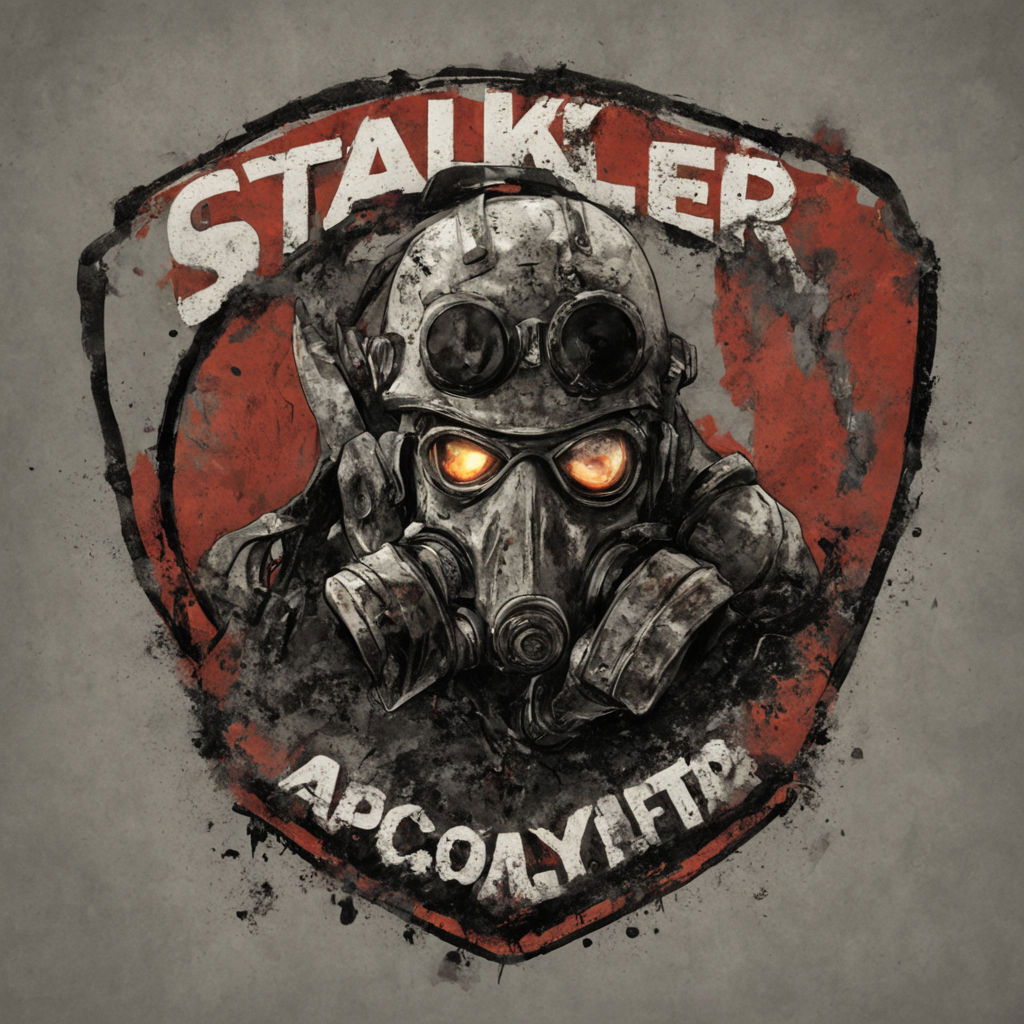
In the vast wilderness that now consumed what once was the Chernobyl Exclusion Zone, now transformed and known only as "The Zone," lay mysteries and dangers that drew the brave, the lost, and the greedy. Among these souls was Bortsov Pavlovich, a seasoned S.T.A.L.K.E.R., a scavenger of this radioactive wasteland, driven by legends of an untainted oasis hidden deep within its heart.
The day Bortsov stepped over the threshold into The Zone, the sky was a tapestry of grim clouds, casting an ominous shadow over the land. The once-bustling towns were now silent, held in the grip of nature’s reclaim. Buildings, their structures weakened and decayed, were draped with the lush green of wild foliage, a stark contrast to the invisible threat of radiation that hung in the air like a deadly perfume.
Bortsov's old Geiger counter clicked steadily in his pocket as he navigated through the derelict streets of Pripyat. The sound was a constant reminder of the invisible death that had settled over the land two decades ago. His mission was clear—find the Oasis. Rumored to be a hub of untainted water, it was said to be located somewhere near the heart of The Zone, guarded by anomalies and mutants, remnants of the disastrous second explosion that had rocked the Chernobyl Nuclear Power Plant in 2006.
As he moved deeper, Bortsov encountered other S.T.A.L.K.E.R.s. They were a motley crew: treasure hunters, scientists, and thrill-seekers, each drawn into The Zone by their own reasons. Among them was a young woman named Katya, a biologist, who believed that understanding the mutations within The Zone could unlock new scientific frontiers.
Together, they ventured towards the center, where the radiation was strongest and the landscapes most bizarre. The flora and fauna here were like nothing seen before—trees glowing with an eerie bioluminescence, animals with too many eyes, and shadows that seemed to move of their own accord.
After days of trekking, Bortsov and Katya stumbled upon a partially buried lab entrance, hidden beneath twisted metal and rubble. It was marked with the faded insignia of a forgotten research initiative: The Oasis Project.
Inside, the lab was a time capsule, a snapshot of hurried evacuation. Papers scattered, vials broken, and in the center of the main room, a large, rusted device that hummed with a faint, residual energy.
Katya’s eyes widened as she sifted through the papers. "Bortsov, this isn’t just about water. This—this was an experiment gone terribly wrong. They were trying to create a micro-ecosystem, completely sustainable, unaffected by the external environment. But something happened…"
The papers detailed a series of experiments involving quantum mechanics and radiation, aiming to create a bubble of untainted reality—The Oasis. But the documents hinted at unforeseen results, anomalies that began to affect not just flora and fauna, but the very fabric of reality itself.
Driven by the revelations, they delved deeper into The Zone, towards the so-called heart where the Oasis was rumored to exist. The environment grew increasingly alien, with gravity wells that twisted space, and spectral figures that flickered in and out of existence.
As they approached, a massive anomaly appeared, a swirling vortex of light and shadow that defied physical laws. Bortsov felt a pull, a literal drawing of his being towards the center. With a determined look, he turned to Katya, "We may not get another chance to see what’s truly at the heart."
Hand in hand, they stepped forward, and the world shifted. Suddenly, they were not in The Zone but standing in a lush green field under a bright, clear sky. In the distance, a pristine lake reflected the sun in a dazzling display.
"This is it," Katya whispered, "The Oasis."
But as they explored, they realized that this paradise was isolated from the real world, a pocket universe created by the experiments, unstable and temporary. The realization was bittersweet. The Oasis was real, but it was not a place one could live in, not permanently.
The return to The Zone was jarring. The beauty of the Oasis faded into the gray decay of the nuclear wasteland. With heavy hearts, they made their way back to the boundary, each step away from the Oasis weighing heavily on their spirits.
Back outside, Bortsov recorded the coordinates and sealed the entrance to the lab. "What now?" Katya asked, her face streaked with dirt and exhaustion.
"Now, we tell our story," Bortsov replied, gazing back at the sealed door. "We let the world know about The Oasis, about what can be achieved, and what should never be attempted."
As they left The Zone, the sun set behind them, casting long shadows over the land. The Zone remained, silent and waiting, its secrets buried but restless, a reminder of human folly and ambition, a haunted testament to both the perils and promises of pushing beyond the boundaries of nature.
Bortsov looked back once more, knowing he would return. The Zone, with all its horrors and wonders, was part of him now. And somewhere in its heart lay an impossible Eden, a reminder of what might have been.
Epilogue: Echoes of the Apocalypse
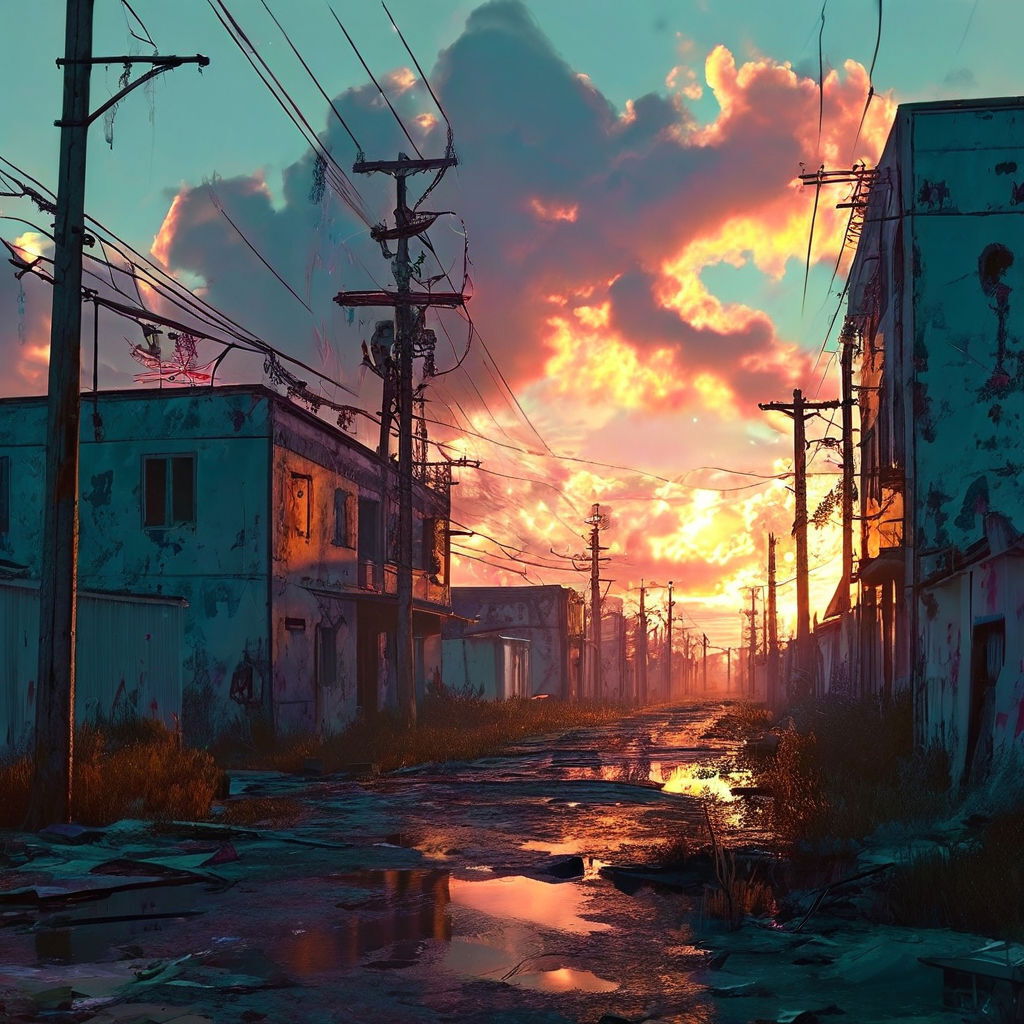
As dusk fell over the once vibrant, now desolate landscape of The Zone, the wilderness seemed to exhale a breath held too long, its heavy sigh laden with the ghosts of the past and the stark realities of its present condition. The Zone stood as a poignant testament to the catastrophic consequences when humanity's reach exceeds its grasp. In its eerie silence and pervasive desolation, it whispered tales of both caution and curiosity.
The Zone, reborn from the ashes of two nuclear disasters, had morphed into an apocalyptic wilderness, a stark and sprawling canvas showcasing the ultimate aftermath of unchecked scientific ambition and environmental neglect. Here, the remnants of civilization were swallowed by the voracious growth of a mutated nature, where flora and fauna had evolved far beyond their natural origins under the sinister caress of radiation.
Buildings, once symbols of human achievement and daily life, now stood as crumbling monuments to hubris, their skeletal frames overrun by the relentless encroachment of twisted vines and mosses, glowing faintly with the bioluminescence of radioactive decay. The very air thrummed with the unseen danger of contamination, a perpetual haze that blurred the line between the hauntingly beautiful and the fatally toxic.
The Zone was not merely a geographic area; it had become a concept, a dramatic warning of the potential endgame of human folly. The anomalies—tears in the very fabric of reality—served as physical manifestations of this new, warped wilderness. These anomalies defied explanation and resisted study, their dangers as real as the radiation that spawned them.
In the nights that held The Zone in its dark embrace, the cries and roars of its mutant inhabitants echoed through the forest, a cacophony of the wild reclaiming its dominion. These creatures, some grotesque parodies of their former selves, others entirely new horrors birthed by the atomic energies unleashed, roamed the landscape. They were the new rulers of this realm, thriving amid the ruins of their predecessors.
Yet, amidst this desolate and chaotic existence, The Zone held a strange beauty, stark and terrifying, but compelling. Its landscapes, altered forever, told stories of resilience and adaptation. It stood as a living laboratory of survival in the face of cataclysm, a place where life, however altered, continued to eke out an existence.
For those few who dared to enter, to explore its depths and uncover its secrets, The Zone offered a glimpse into a possible future where nature and anomaly intertwined in an endless dance of creation and destruction. It was both a tomb and a cradle, a place where the end of one world lingered and the seeds of another waited to sprout.
As Bortsov left The Zone, his last glance back was tinged with a mix of awe and melancholy. The Zone, a once thriving region now a haunting apocalyptic wilderness, served as a stark reminder of the delicate balance between human innovation and the natural world. It was a boundary not just of place, but of time and possibility, a borderland where the echoes of the apocalypse whispered into the winds of a new beginning.
This story is a quintessential apocalyptic tale - The Zone encapsulates the ruinous aftermath of human hubris and the haunting beauty of a post-apocalyptic world.
Apocalyptic Special continue
BOKRECENSION OCH SHORT STORY : STRICTLY SVENSKA
Recension: Wastelands: The New Apocalypse
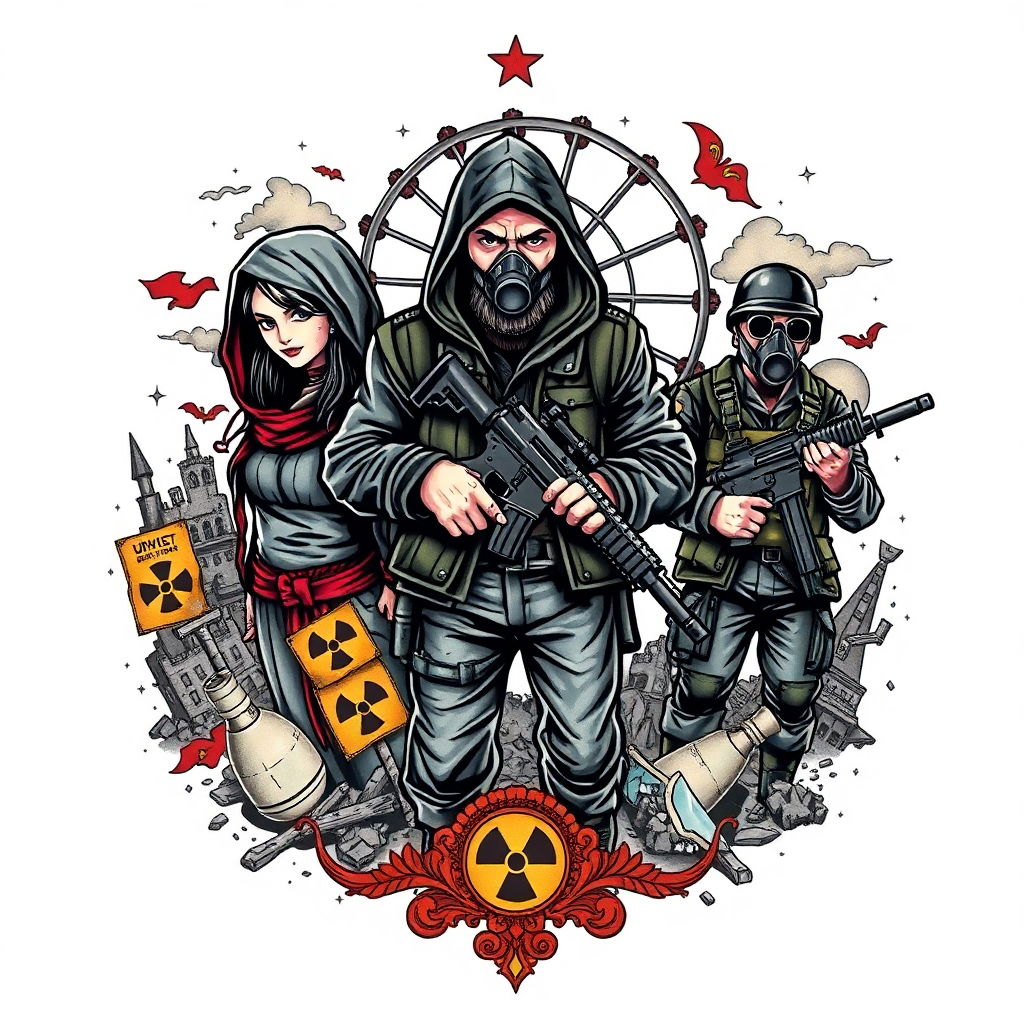
Det finns något paradoxalt livfullt i apokalypsens ruiner – en sorts litterär bördighet som verkar blomstra när världen dör. I Wastelands: The New Apocalypse, den tredje delen i John Joseph Adams uppskattade Wastelands-serie, bjuds vi ännu en gång in till en samling postapokalyptiska visioner skrivna av några av den moderna science fiction- och fantasyvärldens mest tongivande röster. Antologin är inte bara en resa genom raserade landskap och trasiga samhällen, utan också en spegel mot vår egen samtida oro – klimatkollaps, pandemier, teknologiskt missbruk, och det mänskliga psyket under press.
Ett kalejdoskop av undergångar
John Joseph Adams har med säker hand kuraterat en blandning av författare, stilar och teman som gör denna antologi till något långt mer än en samling berättelser om domedagen. Här samsas litterära giganter som Seanan McGuire, Charlie Jane Anders, Tananarive Due och Ken Liu, vars berättelser rör sig från det poetiskt lågmälda till det brutalt konfronterande. Den gemensamma nämnaren? Världens slut – eller kanske snarare, världens omformande.
Berättelserna bjuder på olika tolkningar av apokalypsen: vissa är smygande och existentiella, där förlusten av mening blir lika viktig som förlusten av civilisation. Andra är handlingsdrivna och laddade med desperata överlevnadsförsök, ofta färgade av science fiction eller skräck. Det är detta spektrum som gör The New Apocalypse till mer än bara ännu en dystopisk samling – det är en reflektion över vad apokalyps egentligen betyder i en värld där undergången inte längre är en abstrakt framtid utan en pågående process.
Hopp i ruinerna?
En överraskande aspekt av antologin är dess ton. Trots titeln, och trots ämnet, är det inte en nattsvart läsning. Flera av berättelserna bär på ett slags motståndskraft, en envis vilja att finna mening även efter katastrofen. Det är inte alltid ett naivt hopp, men ofta ett upproriskt, trotsigt sådant – kanske rentav en tro på att något nytt kan växa i ruinerna.
I Seanan McGuires bidrag, till exempel, får vi följa en huvudperson som försöker återupprätta en sorts vardag mitt i kaoset – inte för att det finns hopp om återgång, utan för att själva akten att fortsätta leva och berätta historier är ett sätt att göra motstånd mot förintelsen. Det är just detta metanarrativa drag – att berättelser i sig kan vara överlevnadsstrategier – som ger antologin en särskild tyngd.
En apokalyps för varje smak
Den stora styrkan med Wastelands: The New Apocalypse ligger i dess variation. Antologin fungerar både som introduktion till genren och som djupdykning för den redan invigde. Här finns drag av klassisk katastroffiktion i stil med The Road eller I Am Legend, men också mer subtila, genreöverskridande inslag som leker med formen och vårt sätt att läsa apokalypsen. Det blir tydligt att "apokalyps" inte nödvändigtvis handlar om total förstörelse, utan om övergång, om transformation – från ett tillstånd till ett annat.
Sammanfattning
Wastelands: The New Apocalypse är en antologi som förtjänar att läsas långsamt och med eftertanke. Det är en bok som speglar vår samtid med skrämmande skärpa, men som också påminner oss om det djupast mänskliga – vår förmåga att föreställa oss framtiden, även när allt verkar vara förlorat. John Joseph Adams har återigen bevisat att han är en av vår tids viktigaste redaktörer när det gäller att sammanföra röster som formar science fiction-genrens framtid.
Betyg: 4,5 av 5
--
FAN FICTION SHORT STORY Prolog: Sprickor i verkligheten
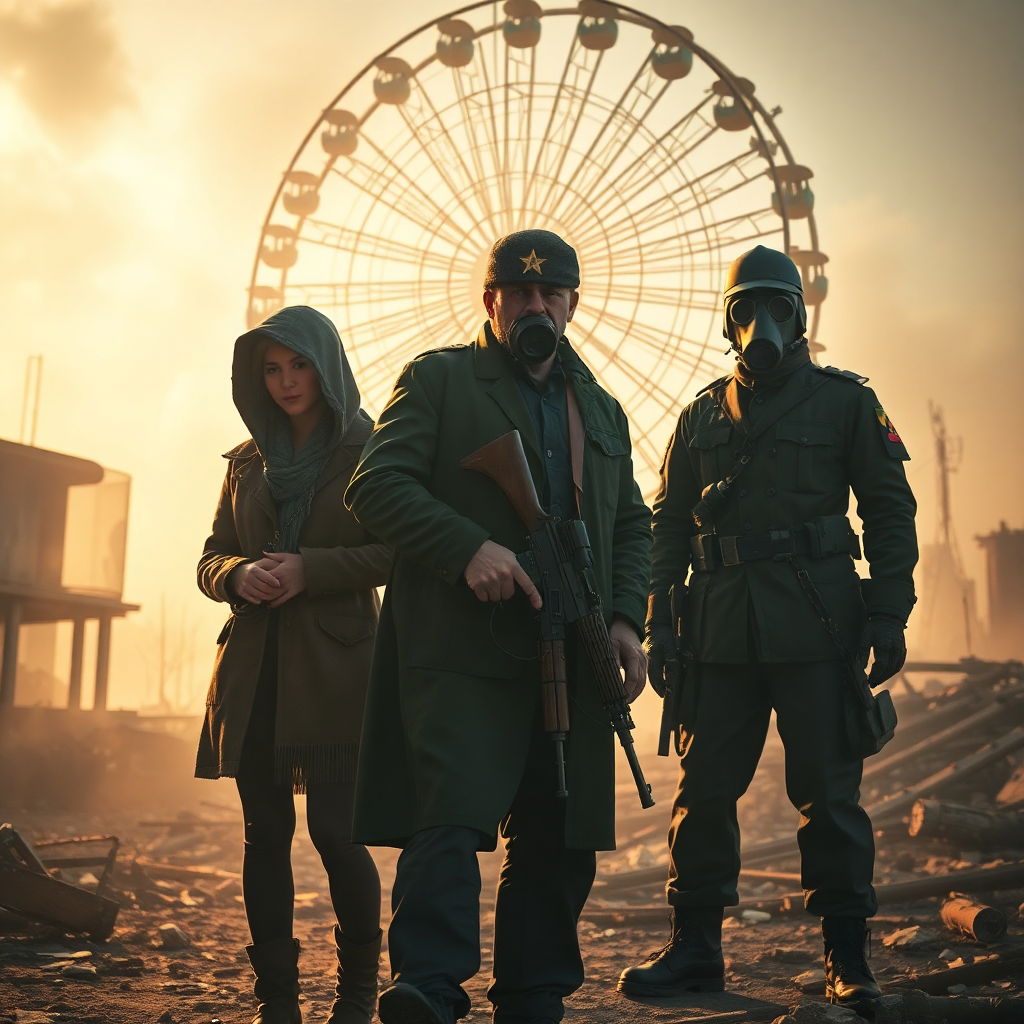
Det började med ett ljud. Ett lågt, nästan ohörbart muller under marken – inte ett jordskalv, inte ett bombnedslag. Något djupare. Som om själva verklighetens fundament knakade.
I San Francisco, där vinden blåste in från Stilla havet genom sönderrostade skyskrapor och clickers rörde sig i skuggorna, vaknade Joel ur en mardröm där marken under honom hade spruckit upp. Ellie satt redan vaken, stilla med sin rygg mot en vägg täckt av murgröna och graffiti, ögonen stirrande ut i tomrummet. Hon hade hört det också. Ett ljud som inte hörde hemma i deras värld.
Samtidigt, i de underjordiska tunnlarna under ett fruset Moskva, låg Artyom med fingret på avtryckaren. En elektrisk störning flammade till i tunnelväggen. En reva. Inte i betongen – i själva rummet, i själva tiden. Han såg det bara i ett ögonblick innan det försvann. En skymt av något… annat. Något varmare. Något mer förött än hans egen värld.
De visste inte hur – eller varför – men snart skulle Joel, Ellie och Artyom stå ansikte mot ansikte, inte i San Francisco, inte i Moskva, utan i ett ingenmansland bortom tid, bortom kontinenter: Pripyat.
Staden låg förstenad i evigt undantagstillstånd, översvämmad av tystnad, damm, och något annat: en närvaro. En viskning som hördes i sprickorna mellan världarna.
Där, i skuggorna av ruinerna från Chernobyls kärnreaktor, konvergerade deras verkligheter. De såg varandras ögon, fyllda av krig, förlust och överlevnad, och de förstod: detta var inte ett misstag. Någon – eller något – hade fört dem samman.
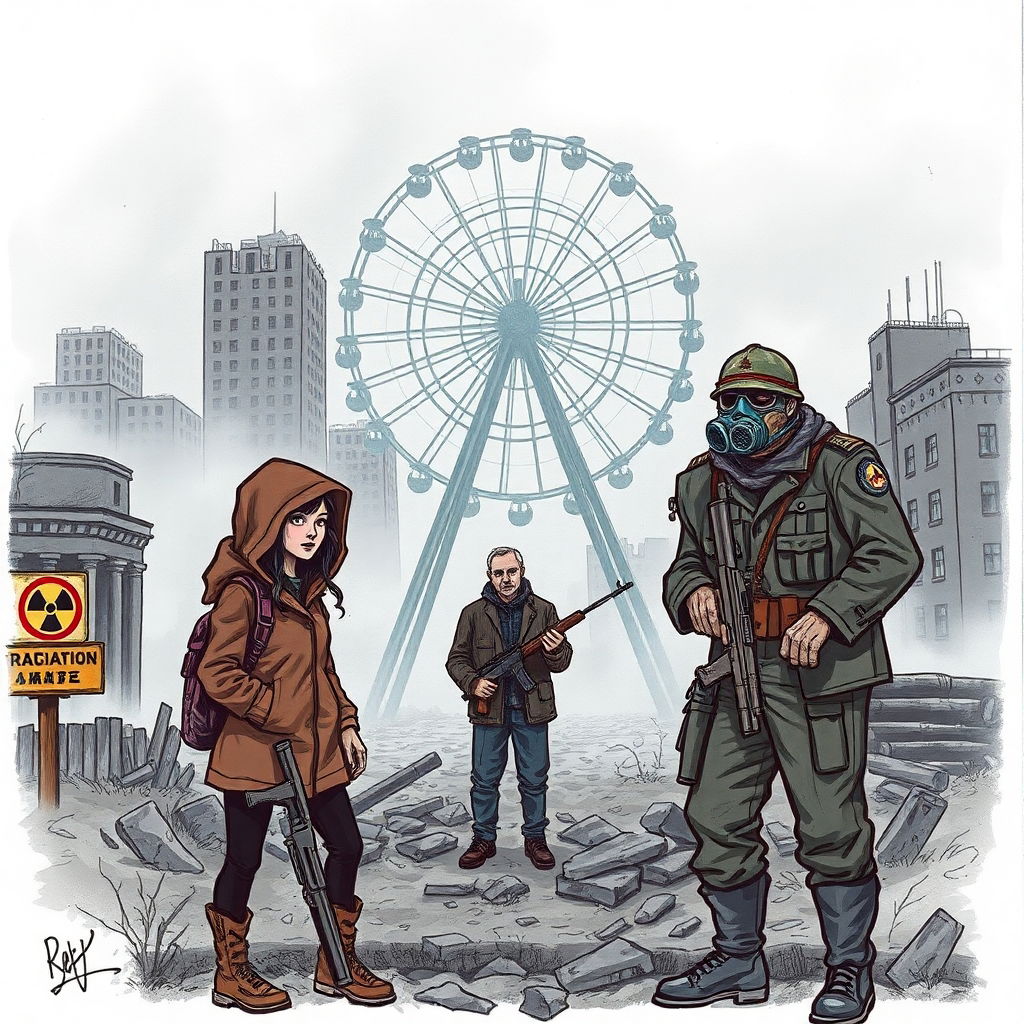
De kämpade tillsammans mot missbildade varelser födda ur strålning och mardrömmar. Men den verkliga fienden var insikten som kröp in i deras hjärtan:
Att apokalypsen inte var en enskild händelse, inte lokaliserad till ett land, en tidslinje, eller en berättelse.
Den var en struktur. En form. Ett oundvikligt mönster i mänsklighetens väv.
Ragnarök var inte myt. Det var en kod, en sanning.
När vinden blåste genom de tomma klassrummen i Pripyat, genom de dammiga nöjesfälten och över sönderrostade dockor, viskade den:
"Allt faller. Alla världar brinner. Och ni tre… är varningens röst."
Med denna kunskap återvände Joel, Ellie och Artyom till sina egna verkligheter – medvetna om att undergången inte längre var en framtid, utan en cykel. En berättelse som ständigt upprepar sig.
Men kanske, bara kanske, kunde de förändra slutet.
Eller åtminstone skriva ett nytt kapitel innan mörkret slukar allt.
Sprickor i verkligheten: FAN FICTION APOKALTYPTISK CROSSOVER SHORT STORY
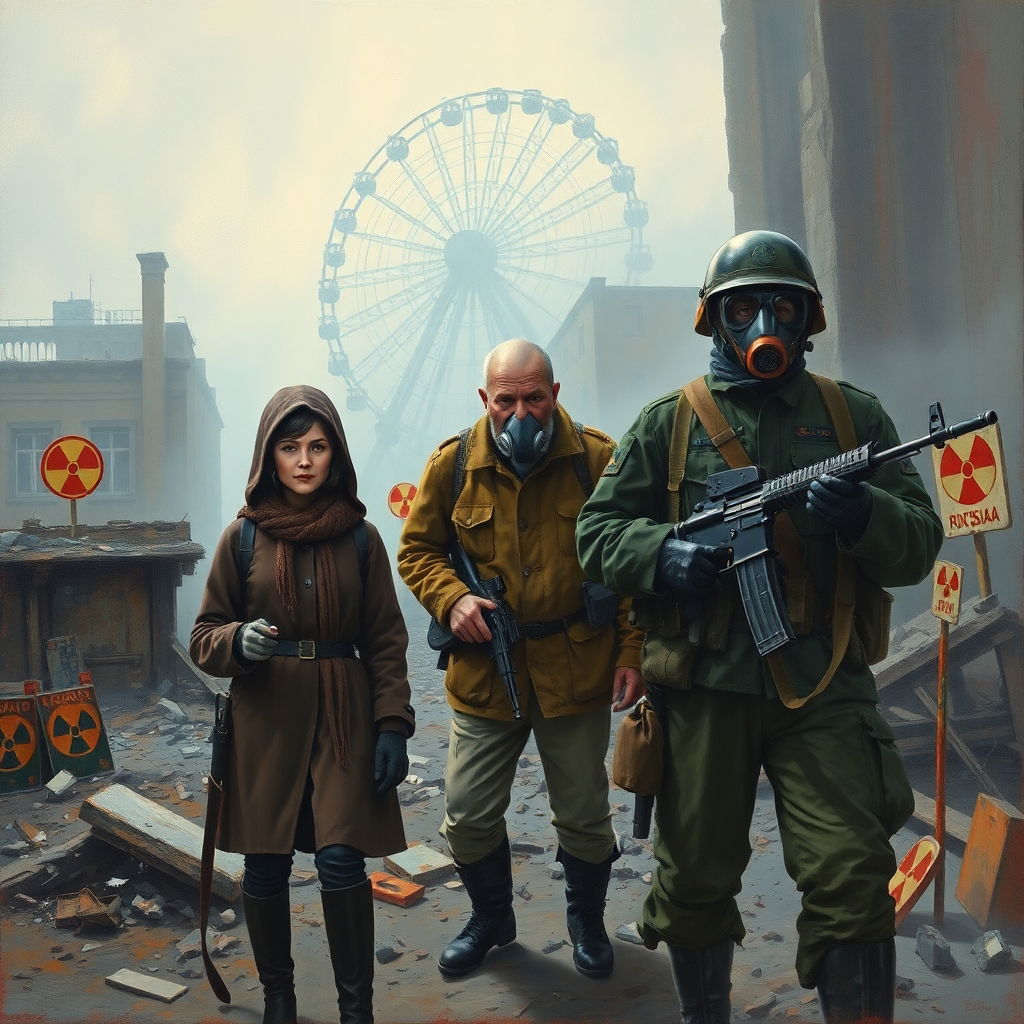
Från spelet 'Last of Us' och 'Metro"
Det började med ett ljud. Inte högt, inte ens tydligt – mer som en viskning i benmärgen. Ett knappt hörbart skälvande som fick Joel att stanna upp mitt i steget. Han hade hört många ljud i sitt liv. Skrik. Skott. Klick. Det här var något annat. Något som inte borde finnas.
Han vände sig om. Ellie stod stilla några meter bakom honom. Hon stirrade rakt fram med rynkad panna.
"Du hörde det också, eller hur?" frågade han.
"Det var som... ett minne. Fast jag har aldrig varit där," svarade hon långsamt. "Som att nåt kallade på mig."
De stod i skuggan av ett övergivet köpcentrum i San Francisco, en stad sedan länge uppäten av naturen och infekterade. Men just här – i detta ögonblick – kände de något skära genom verkligheten. Joel höjde sin revolver, men det fanns inget att rikta mot. Bara luften själv kändes tunnare. Vassare.
I Moskvas svarta hjärta satt Artyom på huk med sin hand vilande på en tunnelvägg. Vibrationen var svag, men den fanns där – en puls, som från en annan dimension. Han följde den genom glömda gångar och dammiga arkivrum tills han kom till en dörr han aldrig sett förut. Den var täckt av varningssymboler, men någon hade ristat tre ord med kol: Det finns fler världar.
Han öppnade dörren och gick in.
De vaknade i ruinerna av en stad som inte tillhörde någon av dem. Himlen var blygrå, luften stilla och övergiven. Gamla bilar låg som skelett längs gatorna. I fjärran syntes ett rostigt pariserhjul, orörligt men ändå laddat med närvaro. Överallt: tystnad. Inte en enda klicker, inte ett monster, inte en människa.
Joel var först att resa sig. Han insåg genast att han inte var ensam. Två andra kroppar låg på asfalten – en man i skyddsmask, och en yngre kvinna med sitt ansikte halvt dolt i en huva. Ellie. Och… den andre?
Mannen reste sig långsamt. Hans ögon var trötta, men vaksamma. Han sade något – ryska, antog Joel. De stirrade på varandra i några långa sekunder innan Ellie reste sig och bröt tystnaden:
"Joel... var är vi?"
"Inte hemma, det är säkert."
Artyom höll upp händerna långsamt. "Artyom," sa han, pekade på sig själv. Sedan på de andra. "Name?"
"Joel."
"Ellie."
De såg på varandra. Tre överlevare från olika världar. Från olika berättelser. Ändå hade de samma blick: trött men fast. Förhoppningslös men levande.
"Vad är det här?" frågade Ellie. "Dröm? Hallucination?"
"Jag tror inte det är något av det," sa Joel. "Det här... känns verkligt."
De började vandra tillsammans genom staden, vägledda av en instinkt starkare än rädsla. När de nådde Pripyats centrala torg såg de ett monument som någon ristat in ord i – en blandning av språk, skrivet med blod och aska:
“RAGNARÖK ÄR INTE EN MYT. DET ÄR EN LAG.
”Joel lutade sig mot väggen. "Det här är större än oss."
Inifrån ett övergivet museum hördes ett skrik. Inte ett mänskligt, inte ett djurs – utan något som klingade genom dimensioner. De gick in.
Varelserna var där inne. Inte från Joels värld. Inte från Artyoms. Inte från någon värld. Muterade, halvgenomskinliga, skiftande i form – som om de formats av själva verklighetens splittring. Kampen blev vild, men inte utan syfte. De slogs som ett. Joel med sin brutalitet. Artyom med precision. Ellie med smidighet.
När striden var över låg tre av varelserna döda – om man nu kunde kalla dem det. Men den fjärde rörde sig fortfarande. Den viskade.
"Ingen värld överlever sig själv. Alla berättelser brinner."
Joel höjde sin kniv. "Vad fan menar du?"
Varelsen såg honom – eller snarare, genom honom.
"Ni tre är portarna. Era världar går mot samma slut. Ni måste se. Måste förstå."
Plötsligt drogs de in i en vision: tusentals världar, alla med samma mönster. Förnekelse. Konflikt. Kollaps. Överlevare. Tystnad. Och så igen. Cykeln.
När de kom till sig själva stod de åter på Pripyats torg.
"Så... vi kan inte stoppa det?" frågade Ellie.
"Nej," sa Artyom långsamt. "Men vi kan kanske förändra... hur det slutar."
Joel nickade. "Vi reser tillbaka. Inte för att rädda världen. Men för att föra vidare vad vi sett. Och för att kämpa – på vårt sätt."
De tre gick mot var sin spricka i luften. Tre portar. Tre slut. Men med ett gemensamt frö – vetskapen att ingen verklighet är säker, att apokalypsen är mer än ett slut.
Den är en början.

carl jung : the red book
INCLUDING HOLOGRAPHIC JUNG AND TOLKIEN SPECIAL - TRUE SPIRITUAL LIFE AND LITERATURE
The Red Book : Liber Novus
En bok som kom till mycket på grund av vad Jung såg i myter, drömmar, fantasier och psykotiska vanföreställningar av en 'autonomus' myt-skapande funktion inneboende underliggande mänskligt medvetande. Pysket/själen verkar uttrycka sig i ett mystiskt språk av myt och symbol. 1913 fick Jung en vision som han teckna ner; 'The spirit of the depths opened my eyes and i cought a glimpse of the inner things; THE WORLD OF MY SOUL.' - Jung ville helt enkelt 'prata' med sin själ.
The Red Book: Liber Novus bevittnar om Jungs kämpande till att 'återvinna' själen. Liber Novus står för den 'Nya Boken'. En bok som gav Jung ett unikt perspektiv av mystiska religiösa upplevelser och den mänskliga 'böjelsen' för mystiska och 'imaginative' uttryck. Jung bestämde 'träff' med sin mytopoetiska fantasi som han förklarar i den Röda Boken. Jodå - fadern av analytisk psykologi hade verkligen en spirituell 'touch' i sin psykologi.
Den Röda Boken är ett psykologiskt och mytologiskt mästerverk - en mytologisk novell! Ett experiment av Carl Gustav Jung.
--
Men Tegedao som skriver detta om vad Jung förmedla är 'hjältens resa' - ett arketypiskt uttryck på diverse sätt i religiösa historier, myter, 'fairy' historier och konst av alla kulturer. Till exempel i form av Star Wars; en arketypisk resa i form av Luke Skywalker; som strider emot 'villains', rädda prinsessor och med en mentor till Jedi-riddare i form av den gamla visa mannen Obi-Wan Kenobi. Luke är sannerligen en hjälte med mytologisk 'touch'.
Jodå; The Red Book: Jungs Myth for our Times!
--
Tegedao som skriver detta jobbar i nattjouren på psyket i Sverige/Skåne (på låtsas) - en stökig avdelning fylld med psykotiska patienter som är inlagda. Men på natten är det relativt lugnt när Tegedao sitter i sin bekväma fåtölj i hallen. Men Tegedao är ingen vanlig skötare som jobbar i nattjouren på psyket; nej då - med sig har han Carl Jungs Red Book som han läser entusiastiskt och stillsamt när det inte hojtas och bökas ifrån de inlagda patienterna!
Tegedao efter att ha läst några sidor i den Röda Boken fick han plötsligt en visionär upplevelse; Philemon uppenbarades sig ifrån boken - en bevingad gammal man med fyra nycklar i handen - Carl Jung stötte på denna figur i den Röda Boken och sa om honom;'You are no Christian and no pagan - but a hospitable inhospitable - a host of the Gods, a saviour, an eternal one - the father of all eternal wisdom'.
Men nu sa denna Philemon något oväntat till Tegedao; 'den externa världen är fantasi, den inre världen är 'imagination', alla minnen är fantasi, perspektivet av andra är fantasi - Jorden, stjärnorna, månen, solen är fantasi. Jag Philemon är fantasi - du Tegedao är fantasi. Du och jag samverkar tillsammans i form av yttre rymden 'consciousness unlimited'; GOD IS YOUR OWN WONDERFUL HUMAN IMAGINATION! Allt är 'imagination'. Inklusive The Red Book : Liber Novus!
(Tegedaos upplevelse hände inte på riktigt ska sägas. En rolig liten fiktion om hur 'imagination' kan komma och gå i våra vardagliga liv)
--
"In his late 30s, Jung started writing a book called The Red Book. The Red Book is part journal, part mythological novel that takes the reader through Jung’s fantasies — hallucinations he self-induced to try and get to the core of his unconscious" - psychcentral.com
Tegedao ger The Red Book 5/5 i betyg!
--
Jung's Psychedelic Journey: Navigating the Unconscious in The Red Book:
Carl Jung's The Red Book, a personal record of his own deep dive into the unconscious, stands as a monumental testament to the inner explorations that mirror the psychedelic journey. Though written long before the psychedelic era of the 1960s, Jung's experiences, as detailed in this profound work, resonate with the consciousness-expanding experiences reported by users of psychedelic substances. This article delves into the parallels between Jung's navigations of the unconscious realms in The Red Book and the journeys undertaken by individuals during psychedelic experiences, offering insights into the transformative power of exploring the depths of the psyche. Jung embarked on his journey into the unconscious at a critical point in his life, a period marked by intense personal turmoil and professional conflict. This inner voyage, which he meticulously documented in The Red Book, was facilitated not by external substances but by what he termed "active imagination" — a method of voluntarily immersing oneself in the visions and emotions of the unconscious mind. Similarly, psychedelics serve as catalysts for a profound journey into the inner depths, dissolving the barriers between the conscious ego and the vast, often uncharted territories of the unconscious.
One of the striking similarities between Jung's experiences in The Red Book and psychedelic journeys is the encounter with archetypal images and figures. Archetypes, in Jungian psychology, are the universal, primordial symbols and themes that reside in the collective unconscious. Jung described encounters with figures such as Philemon, an wise old man who represented the guru or spiritual guide archetype. Psychedelic explorers similarly report meetings with entities or experiencing narratives that seem to tap into a collective symbolic language, suggesting a commonality in the way the human psyche manifests its deeper layers.
Throughout The Red Book, Jung's narrative is rich with symbolic imagery and visions that carry deep personal and collective significance. These symbols served as guides and markers on his journey, each revealing insights into his psyche and the nature of human consciousness. This aspect closely mirrors the psychedelic experience, where users often report vivid, symbolic visions that offer profound personal insights and revelations. The symbolic language of the unconscious, whether accessed through active imagination or psychedelics, speaks in a universal tongue, bridging the personal with the collective.
A key theme in both Jung's journey through The Red Book and the psychedelic experience is the potential for profound personal transformation. Jung's engagement with his unconscious led to significant changes in his understanding of the psyche, influencing his theoretical work and personal growth. Similarly, those who undergo psychedelic experiences often report transformative insights that lead to changes in their life perspective, emotional healing, and psychological growth. The process of integrating these experiences into one's life and worldview is crucial in both contexts, emphasizing the importance of reflection and understanding in achieving lasting change.
Jung did not shy away from the darker aspects of his psyche in his explorations. The Red Book is replete with encounters with the shadow — the repressed, ignored, or unknown aspects of oneself. This confrontation with the shadow is also a central element of many psychedelic journeys, where individuals are often faced with their deepest fears, traumas, and unresolved conflicts. The courage to confront and work through these dark aspects can lead to significant psychological healing and wholeness, a process Jung termed individuation.
Carl Jung's explorations in The Red Book offer a pioneering map of the inner territories that many have traversed under the influence of psychedelics. Though separated by time and methodology, both Jung's journey and psychedelic experiences highlight the rich, transformative potential of venturing into the unconscious. They remind us that within the depths of the psyche lies not only the roots of our deepest fears and traumas but also the seeds of healing, creativity, and profound personal transformation. Jung's psychedelic journey, though not induced by substances, bridges the worlds of psychology and spirituality, offering timeless insights into the human quest for understanding and wholeness.
Jung's explorations in The Red Book, akin to psychedelic journeys, can be intriguingly related to the holographic theory of consciousness, which posits that every part of the universe contains the whole. Just as Jung's encounters with the archetypes and the collective unconscious reveal layers of the psyche that reflect universal human experiences, the holographic theory suggests that individual consciousness is a reflection of a larger, interconnected whole. This perspective illuminates Jung's work as a microcosm of the macrocosm, where each personal revelation and symbol encountered in the depths of the unconscious mirrors the structure and dynamics of the cosmos itself, suggesting a profound interconnectedness of all aspects of reality through the fabric of consciousness.
--
JUNG AND TOLKIEN SPECIAL:
The world of Middle-earth, crafted by J.R.R. Tolkien, is rich with mythological depth and archetypal resonance. When viewed through the lens of Carl Jung's mystical psychology, the characters and narratives within "The Lord of the Rings" reveal profound insights into the human psyche and the journey toward spiritual enlightenment. This article explores how Tolkien's archetypes align with Jung's concepts of gnosis, the pleroma, and the guidance of Philemon, creating a compelling intersection of mythology and psychology.
At the heart of Tolkien's epic is Frodo Baggins, whose journey to destroy the One Ring epitomizes the archetypal Hero's Journey. In Jungian terms, Frodo's quest represents the process of individuation – the integration of the conscious and unconscious aspects of the self. Frodo's struggles, sacrifices, and ultimate transformation illustrate the path to self-realization and wholeness.
Frodo's burden of the Ring symbolizes the shadow self, the darker, often repressed elements of the psyche. His journey is not only a physical one but a deeply psychological and spiritual endeavor to confront and integrate these aspects. By the end of his journey, Frodo emerges as a changed individual, embodying the Jungian ideal of individuation.
In Jungian psychology, the anima and animus represent the feminine and masculine aspects of the unconscious mind. Galadriel, the ethereal Elven queen, embodies the anima – the idealized feminine that guides and nurtures. Her wisdom, beauty, and power provide Frodo with the emotional and spiritual support he needs, reflecting the anima's role in leading individuals toward inner growth and balance.
Aragorn, on the other hand, represents the animus – the idealized masculine. As the rightful king of Gondor, his journey to reclaim his throne parallels the individual's journey to self-assertion and realization of potential. Aragorn's courage, leadership, and integrity serve as a guiding force for the Fellowship, exemplifying the positive qualities of the animus.
Gollum is perhaps the most striking representation of the Jungian shadow in Tolkien's work. Once a hobbit named Sméagol, his corruption by the Ring transforms him into a creature torn between his residual humanity and his monstrous desires. Gollum's internal conflict and duality reflect the shadow's role in the psyche – the parts of ourselves we deny or reject.
Frodo's interaction with Gollum underscores the importance of acknowledging and understanding the shadow. By showing compassion to Gollum, Frodo confronts his own potential for darkness, illustrating Jung's belief that integrating the shadow is essential for personal growth and wholeness.
In Jungian thought, the pleroma represents a state of divine fullness and spiritual enlightenment. Tolkien's Valinor, the undying lands to which the Elves and eventually Frodo travel, parallels this concept. Valinor is depicted as a realm of eternal peace and beauty, a place where the soul finds rest and completeness.
The journey to Valinor symbolizes the ultimate spiritual quest – the return to a state of divine harmony and enlightenment. For Frodo, this journey represents the culmination of his struggles and the attainment of a higher state of being. It reflects the Jungian idea of reaching gnosis, a deep, intuitive understanding of the self and the universe.
Carl Jung often spoke of Philemon, a wise figure in his own visions who provided guidance and insight. In Tolkien's narrative, Gandalf serves a similar role. As a Maia, Gandalf possesses profound wisdom and a deep connection to the divine. He guides the Fellowship with both practical advice and spiritual insight, embodying the archetype of the Wise Old Man.
Gandalf's guidance is crucial for Frodo and the others, helping them navigate the perils of their journey and grow in understanding and courage. His presence highlights the importance of mentorship and divine guidance in the quest for enlightenment and self-discovery.
Tolkien's concept of sub-creation, the act of creating a secondary world with its own internal consistency and beauty, is central to his literary philosophy. This mirrors Jung's idea of engaging with the unconscious through creative expression, allowing deeper truths to emerge.
Through sub-creation, Tolkien provides a space where readers can explore profound psychological and spiritual themes in a mythic context. Middle-earth becomes a canvas for exploring archetypes and the journey toward self-knowledge.
Valinor's depiction as a place of eternal peace and beauty is Tolkien's realization of a Faerie realm that resonates with Jungian ideas of the pleroma. It is a space where characters can achieve a sense of wholeness and rest after their trials, much like the soul's return to a state of divine fullness in Jungian mysticism.
The convergence of Carl Jung's mystical psychology and J.R.R. Tolkien's mythic archetypes offers a rich tapestry for exploring the human experience. Frodo's journey, the roles of characters like Galadriel and Aragorn, and the ultimate destination of Valinor all reflect deep psychological and spiritual truths. By examining these elements through a Jungian lens, we gain insight into the timeless nature of Tolkien's work and its profound impact on our understanding of the self and the quest for enlightenment.
--
Holographic Theory, Middle-earth, and Gnosis Valinor:
Building on the rich analysis of Jungian psychology and Tolkien's mythic universe, we can further explore these concepts through the lens of the holographic theory of the universe. This theory posits that our reality is a projection from a two-dimensional surface, suggesting that every part contains information about the whole. This idea resonates deeply with the interconnected and layered narratives of Middle-earth and the spiritual journey to Valinor.
The holographic theory, which views the universe as a vast, interconnected projection, aligns with Tolkien's creation of Middle-earth, a world where every element and story is interwoven and reflective of deeper truths. Middle-earth functions much like a hologram, where each character and event contains and reflects the essence of the whole narrative. This interconnectedness mirrors the Jungian concept of the collective unconscious, where archetypes and symbols are shared across humanity.
In this context, Valinor can be seen as the ultimate realization of gnosis – a higher state of knowledge and spiritual truth that transcends the ordinary world. Just as the holographic theory suggests that deeper dimensions of reality influence our perceived world, Valinor represents a higher, more enlightened state of being that informs and gives meaning to the events in Middle-earth.
Frodo's journey to Valinor, therefore, is not just a physical journey but a symbolic ascent to a higher plane of existence. It parallels the process of gnosis, where one achieves profound, intuitive understanding and unity with the divine. Valinor, as a place of eternal peace and beauty, embodies the ultimate goal of this spiritual journey, akin to reaching the pleroma in Jungian mysticism – a state of completeness and divine fullness.
Tolkien's concept of sub-creation aligns with the holographic view, where each sub-created world is a reflection of deeper truths and archetypes. Middle-earth, with its rich tapestry of interwoven stories and symbols, serves as a microcosm of the larger reality, mirroring the structure of the holographic universe. Through sub-creation, Tolkien not only engages with the collective unconscious but also provides a reflective space where readers can explore and understand these universal truths.
Combining the holographic theory of the universe with Jungian insights into Tolkien’s work offers a profound framework for understanding the depth and interconnectedness of Middle-earth. Frodo’s journey and the ultimate goal of reaching Valinor symbolize the quest for gnosis and spiritual enlightenment, reflecting the intricate, layered nature of reality itself.
By viewing Tolkien's mythic universe through these lenses, we gain a richer appreciation of how his narratives echo the deep, interconnected truths of our own existence. Middle-earth becomes more than just a fictional world; it serves as a mirror to our own reality, inviting us to embark on our own journeys toward self-discovery and spiritual fulfillment.
END OF TOLKIEN/JUNG SPECIAL!
Eli's Quest : The Last Light of Middle-earth
LORD OF THE RINGS APOCALYPTIC TEGEDAO FAN FICTION SPECIAL
Prologue: The Fall and Rise of Middle-earth
In the twilight of the Third Age, the shadows over Middle-earth lengthened into an eternal night, heralding the dominion of Sauron, the Dark Lord. With the recovery of the Master-ring, the One Ring to rule them all, Sauron's power surged unchallenged. It was this very ring, lost in the currents of time, that once curtailed his reach, its absence a shackle upon his might. But now, reclaimed, it ensconced him with a dreadful omnipotence.
The lands of Middle-earth, once lush and brimming with the harmonious symphony of life, transmuted into a desolate expanse under his malevolent will. The sky, a perpetual canvas of gloom, bore witness to the unyielding reign of terror. Werewolves roamed the ebon woods in ravenous packs, their howls a mournful lament to the fallen stars. Balrogs, those ancient demons of fire and smoke, surged from the forgotten deeps, setting the world ablaze with their fury. The Nazgûl, Sauron’s spectral envoys, soared on black wings, a grim heraldry to his rule, while Orcs, cruel and untamed, ravaged the remaining enclaves of resistance with a relentless savagery.
Amidst this chaos, a singular beacon of hope emerged—a lone warrior named Eli. Thirty years post the cataclysm that transformed the verdant realms into a charred wasteland, Eli, known amongst the scattered survivors as 'the Redeemer,' traversed this blighted world. Clad in tattered remnants of a bygone era, his path was one of peril and solitude, marked by skirmishes with the brutal Orcs that stalked the barren wastes.
Eli’s journey, however, was not one of aimless vengeance. Encoded within his very essence was the holographic blueprint of the ancient world—a metaverse of forgotten lore and beauty, preserved in the recesses of his mind. It was a digital echo of Middle-earth, a spectral vision of what once was, and what could perhaps be again.
In a chance encounter shrouded by fate, Eli crossed paths with Gandalf, the White Wizard, thought lost to the shadows that consumed the land. Together, they envisioned a dawn not yet seen—a restoration of light to a world subsumed by darkness. Gandalf, with his arcane wisdom, perceived in Eli not just a warrior, but a pivotal force that could tilt the scales towards redemption.
Their mission was daunting, teetering on the brink of impossibility. For Sauron, with the Ring of Power, was an adversary whose might was unbounded, his vision a tapestry of endless night. Yet, in Eli’s resolve, there flickered a relentless flame—a defiance that could kindle the fires of rebellion across Middle-earth.
So it was that Eli, the bearer of hope and the harbinger of renewal, ventured forth, not merely to confront the shadows, but to reclaim the soul of a world ensnared by despair. With Gandalf at his side, the journey to restore Middle-earth began—an odyssey fraught with peril, yet buoyed by an unyielding promise of a new morn. The echoes of their steps whispered across the wastelands, a prelude to the war that would decide the fate of all.
Chapter 1: The Wastelands

Eli’s boots crunched on the brittle, scorched earth as he navigated through the desolation that once thrived as Rivendell’s outskirts. The sun, a dull smear in the sky, cast long shadows over the ruins, illuminating fragments of a world lost to Sauron’s wrath. The landscape bore the scars of endless war: blackened trees, their branches like the fingers of the dead, and the ground itself split with the fissures of dark magic.
As he approached a small, beleaguered village nestled in the shadow of what was once a mighty elven fortress, Eli paused, surveying the ramshackle defenses cobbled together from debris. The villagers, mere shadows themselves, eyed him warily. Their faces were etched with the hardships of survival, their eyes hollow with the fading memory of hope.
“State your purpose, stranger,” called out a gruff voice. A stocky man stepped forward, an improvised spear gripped tightly in his hand. Around him, a few other villagers stood up, clutching rudimentary weapons. They were not soldiers, merely survivors holding on to the last vestiges of their former lives.
“I seek passage through these lands,” Eli responded, his voice even, carrying no threat. “I carry no allegiance to the Dark Lord. Like you, I am but a wanderer, seeking to mend what has been broken.”
The villagers murmured among themselves. The man who had first spoken, whom they called Merek, gestured for Eli to come closer. “You’ll find little here but hunger and shadows,” Merek said, his voice softened somewhat. “Orcs raid by night, taking what little we have left. Why come to this forsaken place?”
“To find him who might still remember the light,” Eli replied, glancing towards the west, where legend held that Gandalf might yet wander, a phantom of hope in these dark times.
Merek studied Eli, then nodded slowly. “Rest here tonight,” he offered. “Share our fire, but we can spare little else.”
That night, under a starless sky, Eli sat with the villagers, listening to their tales of loss and resistance. They spoke of the days when the sky was blue and the valleys green, their voices a tapestry of grief and nostalgia. When it was his turn, Eli spoke of realms beyond their darkened borders, of places where light still lingered, and of Gandalf, the Grey Wanderer who might hold the key to their salvation.
His words stirred something in the villagers, a flicker of curiosity, perhaps the first spark of hope they had felt in years. But the night grew darker, and their vigilance could not wane. A sudden clatter on the periphery sent the group scrambling to their positions, as Eli grasped the hilt of his blade, his other hand tracing the line of the scar across his chest—a reminder of battles past.
From the darkness, the snarls of Orcs pierced the tense air. Eli stood swiftly, moving with a grace that belied his rugged appearance. The villagers, emboldened by his presence, rallied to his side.
As the first of the Orcs lunged from the shadows, Eli met him with a swift, decisive motion, his blade singing a grim melody of steel and survival. The battle was swift, brutal, but under Eli’s lead, the villagers found their strength not just in their arms but in their hearts.
After the last Orc fell, the village, though scarred, breathed a collective sigh of relief. Merek approached Eli, clapping him on the shoulder with newfound respect.
“You fight with the spirit of the old kings,” Merek said. “Perhaps, stranger, you are the herald of change we dared not hope for.”
As dawn broke, casting light on the devastation yet revealing the resilience of those who survived, Eli prepared to leave, his resolve hardened. “This darkness will end,” he promised them, and perhaps himself. “Stay strong. I will find the wizard, and together, we may yet bring light to these lands.”
With that, Eli set off once more, his silhouette a stark contrast against the brightening horizon, a lone figure against the wastelands, marching towards destiny.
Chapter 2: The Journey to Fangorn
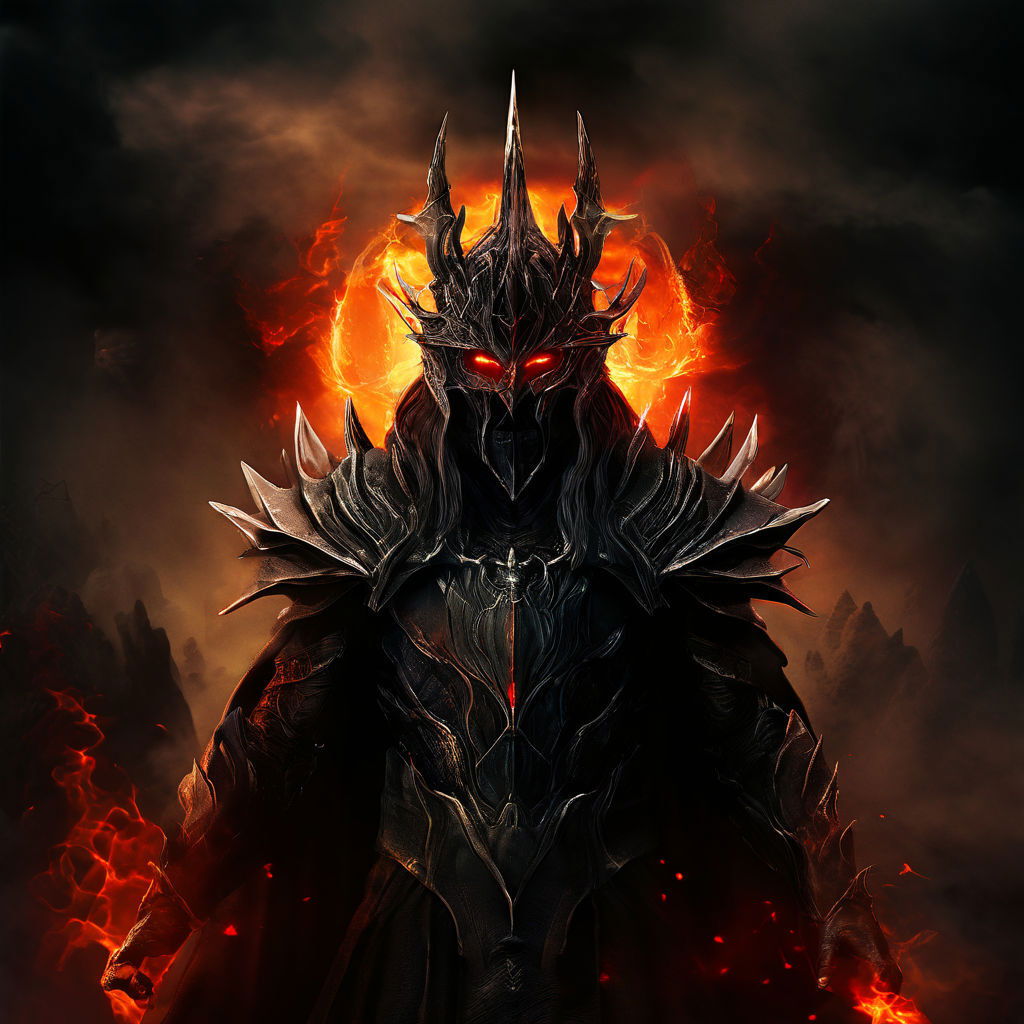
Leaving the village behind, Eli pressed onward, his heart heavy with the weight of his promise. The Misty Mountains loomed ahead, their peaks shrouded in perpetual mist and mystery. This path, once a vibrant passage for travelers and tales, now whispered with the silent threats of lurking creatures and treacherous terrain.
The ascent was grueling. Steep cliffs and narrow ledges tested Eli’s every step, demanding not just physical strength but unwavering focus. He traversed frost-laden paths where the wind howled like the wraiths of the dead, mourning the world that once was. The higher he climbed, the more the cold seeped into his bones, each gust a reminder of the isolation that gripped the land.
As he crossed the crest of the mountains, the dense, dark woods of Fangorn Forest stretched out below him. The ancient forest, steeped in legend and lore, stood as a sentinel on the borders of time, its trees towering and twisted, their canopies a tangled saga of green and shadow. Eli hesitated on the threshold, the tales of old ringing in his ears—of Ents and Elves, of magic woven deep within the wood.
Drawing a deep breath, he stepped into the embrace of Fangorn. The forest was alive with murmurs, the rustling of leaves carrying whispered secrets. The air was thick with the scent of earth and sap, a living testament to a world striving against the darkness. Eli moved silently, his senses attuned to the subtle shifts of his surroundings, aware that many eyes, not all friendly, watched his passage.
It wasn’t long before the forest seemed to tighten around him. Vines curled a little too closely; shadows shifted with almost deliberate intent. Fangorn was ancient and wise, and it did not suffer intruders lightly. Eli paused, reaching out with a hand against the gnarled bark of an old tree, closing his eyes to whisper a plea for passage, for understanding. His words were a soft murmur, blending respect with a desperate need for guidance.
As night fell, Eli found a small clearing and settled by a fire that offered scant warmth against the creeping chill. Sleep was fitful, filled with dreams of Gandalf, his grey robes merging with the mists of the mountains, his eyes alight with an urgent warning.
He awoke to a strange stillness, the forest holding its breath. And then, the wizard appeared as though woven from the morning mist, his presence a calm amid the storm of Eli’s tumultuous journey.
“Eli, son of the distant lands,” Gandalf’s voice was both stern and kind, echoing with the power of the ages. “Your path has led you true, but much remains before the light returns.”
Together, they spoke long into the morning. Gandalf listened intently to Eli’s recounting of the lands he crossed, nodding at the tales of darkness and strife. In turn, the wizard shared his knowledge of Sauron’s increasing might and the scattered forces of light still resisting against the night.
“The road ahead is fraught with peril,” Gandalf warned, his eyes piercing the shadows around them. “But there lies a weapon, long forgotten, that might yet turn the tide.”
A map, old and curling at the edges, unfolded between them, revealing the ruins of Minas Tirith as their next destination. “Here,” Gandalf pointed, “beneath the ashes of what once was, lies a hope that Sauron fears.”
With renewed purpose, they prepared to leave Fangorn, the forest now seeming less a foe and more an ally, its shadows receding in respect of their mission. Eli, with Gandalf at his side, felt the first stirrings of hope, fragile yet fierce, as they set out toward the ruins, toward the heart of the darkness, toward a chance to reclaim the light.
Chapter 3: The Shadow of Minas Tirith
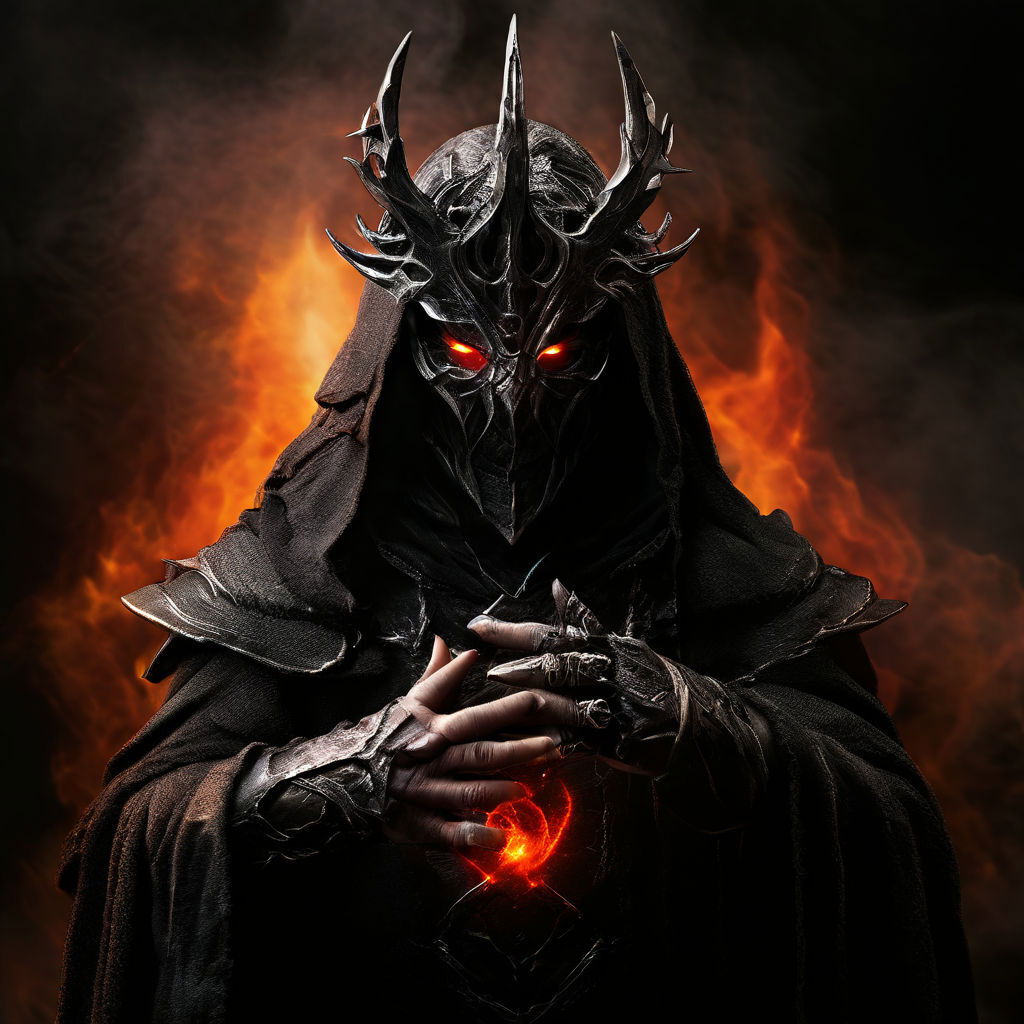
The journey from Fangorn to the ruins of Minas Tirith was marked by a grim determination. As they moved through the desolate expanses of Gondor, the scars of war were evident everywhere—fields lain waste, villages abandoned, and the air heavy with the silence of a land bereft of hope.
Minas Tirith itself, once the proud capital of Gondor, now stood as a monument to despair. The great white walls that had gleamed with the light of the sun were now blackened and crumbling, their stones scorched by dark magics and the fires of war. Orcs and other foul creatures roamed freely among the ruins, and the once-majestic towers were draped in the dark banners of Sauron.
Eli and Gandalf approached the city under the cover of night, cloaked not only by their garments but by a spell of concealment woven by Gandalf. They navigated the labyrinth of broken streets and fallen structures, ever watchful for the enemy patrols that haunted the shadows.
"The heart of the city," Gandalf whispered, his voice barely carrying over the rubble. "That is where we will find what we seek."
The Great Hall of Kings, once the throne room of Minas Tirith, now served as a barracks for Sauron’s forces. As they edged closer, the sound of guttural voices and the clank of weapons filled the air, a stark reminder of the enemy that now held sway.
Using a secret passage known only to few, Gandalf led Eli through an ancient sewer system that ran beneath the city. The stench was overpowering, but the path was clear—a remnant of the city’s once-glorious past, now their only way to infiltrate the stronghold undetected.
Emerging from the darkness of the underground, they found themselves in the lower vaults of the Hall. Here, Gandalf paused, his hand resting on a dusty tome on an abandoned shelf.
“This was once a place of wisdom and learning,” he murmured, a trace of sorrow in his eyes. “Now, it harbors naught but the instruments of war.”
Their goal was close now, the hidden vault where the artifact was said to be kept—a weapon forged in the days of the Last Alliance, capable of harnessing the pure energies of light itself.
As they ascended the stairwell to the vaults, an unexpected challenge awaited them. A Balrog, a relic of a bygone era of darkness, guarded the passage. Its flames flickered in the dark, casting ominous shadows along the stone walls.
Gandalf stepped forward, his staff alight with a glowing white fire. “Stay behind me,” he instructed Eli. “This foe is beyond any you have faced.”
The battle that ensued was titanic. Gandalf chanted incantations that shook the foundations of the city, while the Balrog roared and struck with whips of fire. Eli, though told to stay back, aided by launching arrows tipped with a light-forged metal that Gandalf had provided, distracting the creature at crucial moments.
After what seemed an eternity, the Balrog fell, its fiery essence extinguishing in a final, echoing groan. Weary but undeterred, Gandalf and Eli proceeded to the vault.
Inside, protected by spells and enchantments that took Gandalf precious minutes to unravel, lay the artifact. It was a scepter, its crystal head filled with a swirling, luminescent mist.
“As long as this light endures, there is hope,” Gandalf said, handing the scepter to Eli. “This is what Sauron fears most—not the might of armies, but the light that can pierce his darkness.”
Their mission accomplished, they could not linger. Even now, the sounds of alarm filled the halls as Sauron’s forces discovered the fall of their demonic sentinel.
“We must leave, now,” Gandalf urged, and together they hurried back into the depths of the city, the scepter a beacon of future victory cradled in Eli’s arms. As they escaped into the night, the light from the scepter mingled with the first rays of dawn, casting long shadows behind them but also illuminating their path forward.
Chapter 4: The Siege of Shadows
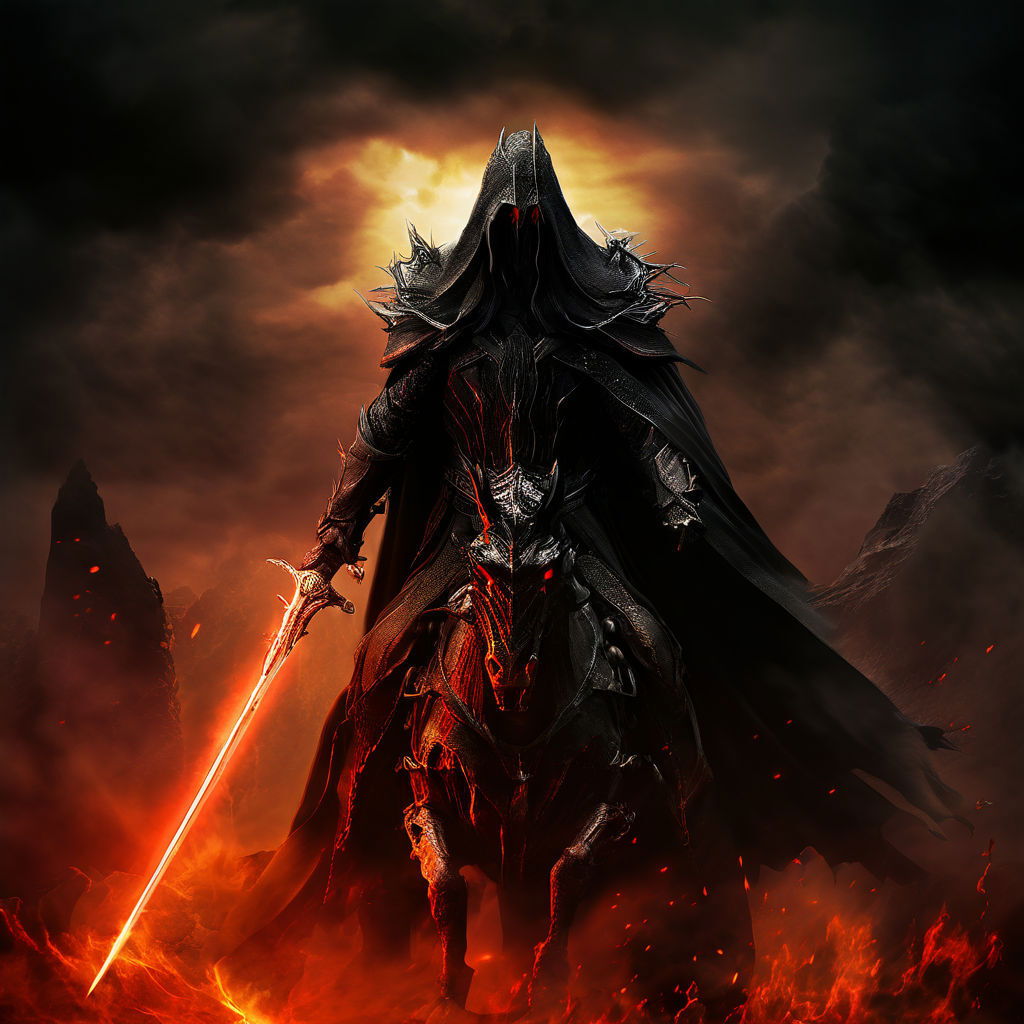
With the sacred artifact in their possession, Eli and Gandalf swiftly retreated from the compromised depths of Minas Tirith. They could hear the clamor of Sauron's forces rallying, a menacing cacophony that echoed through the decrepit city streets. The artifact, though a potent symbol of hope, was also a beacon that could all too easily lead darkness to their doorstep.
As they made their way through the labyrinthine outskirts of the city, the early light of dawn revealed the extent of their peril. Orc patrols, more numerous than stars in the sky, scoured the landscape, their eyes ablaze with malice and the lust for battle.
"Eli, we must part ways," Gandalf said suddenly, stopping atop a small rise that overlooked the plains of Pelennor. "The forces of darkness will not rest until they reclaim what we have taken. I will lead them away to the north. You must take the artifact south, to the hidden vale of Ithilien. There, allies await you."
Eli, surprised yet trusting, nodded. "And after that, Gandalf? Where will I find you?"
"Seek me at the rise of the full moon on the borders of the Shire. I shall be there, awaiting your news," Gandalf replied, a mysterious twinkle in his eye that belied the gravity of their situation. With that, the wizard turned and strode northward, his staff raised high, summoning a blinding light that momentarily illuminated the surrounding landscape.
Left to his own devices, Eli clutched the artifact tightly and headed south. His journey was fraught with danger as he navigated treacherous terrain, evading enemy scouts and hostile creatures drawn to the artifact's latent power.
Days turned into nights, and each step seemed only to deepen Eli's isolation. He found solace only in brief moments of rest, where he gazed upon the artifact, its light a comforting presence in the dark wilderness. Its glow reminded him of Gandalf's parting words, a promise of light amidst shadow.
Upon reaching Ithilien, Eli was met by a contingent of rangers, remnants of Gondor's once formidable defenders. Their leader, a stern yet kind-eyed man named Faramir, welcomed Eli into their hidden encampment.
"We have been expecting you," Faramir said, his voice low but firm. "The wizard has told us much about your quest. We will guard you with our lives."
Under the rangers' protection, Eli felt a weight lift from his shoulders, but the respite was short-lived. Just as they prepared to fortify their position, a massive host of Orcs, led by a fearsome Balrog, descended upon Ithilien. The battle that ensued was unlike any Eli had ever seen.
The rangers fought valiantly, their arrows and swords a blur of motion that felled many an Orc. Yet the Balrog was another matter entirely. Its fiery whip cracked the air, setting ablaze the ancient trees of Ithilien. Eli, remembering Gandalf’s battle, knew that the time had come for him to stand and fight.
With the scepter in hand, Eli confronted the Balrog. Channeling the artifact's power, he unleashed a torrent of pure, searing light. The Balrog roared in defiance, its own flames meeting Eli’s light in a cataclysmic clash. The battle raged, and the ground itself seemed to cry out in anguish.
As the duel reached its zenith, the scepter's light overwhelmed the creature. With a final, ear-splitting shriek, the Balrog collapsed, its essence extinguishing like a snuffed candle. The Orcs, witnessing the fall of their demonic leader, faltered and were quickly routed by the reinvigorated rangers.
In the aftermath, as they tended to the wounded and mourned the fallen, Faramir approached Eli, placing a hand on his shoulder. "You have saved us all," he said solemnly. "But this war is far from over."
Eli looked towards the horizon, where the first hints of dusk painted the sky. He knew Faramir was right. The artifact had proven its worth, and he, its bearer, had found his purpose. Now, it was time to plan the next move, to strike at the heart of Sauron's power.
With renewed determination, Eli and the rangers began preparations. The battle for Middle-earth, for its light and its future, was just beginning.
Chapter 5: Dawn of the New Age
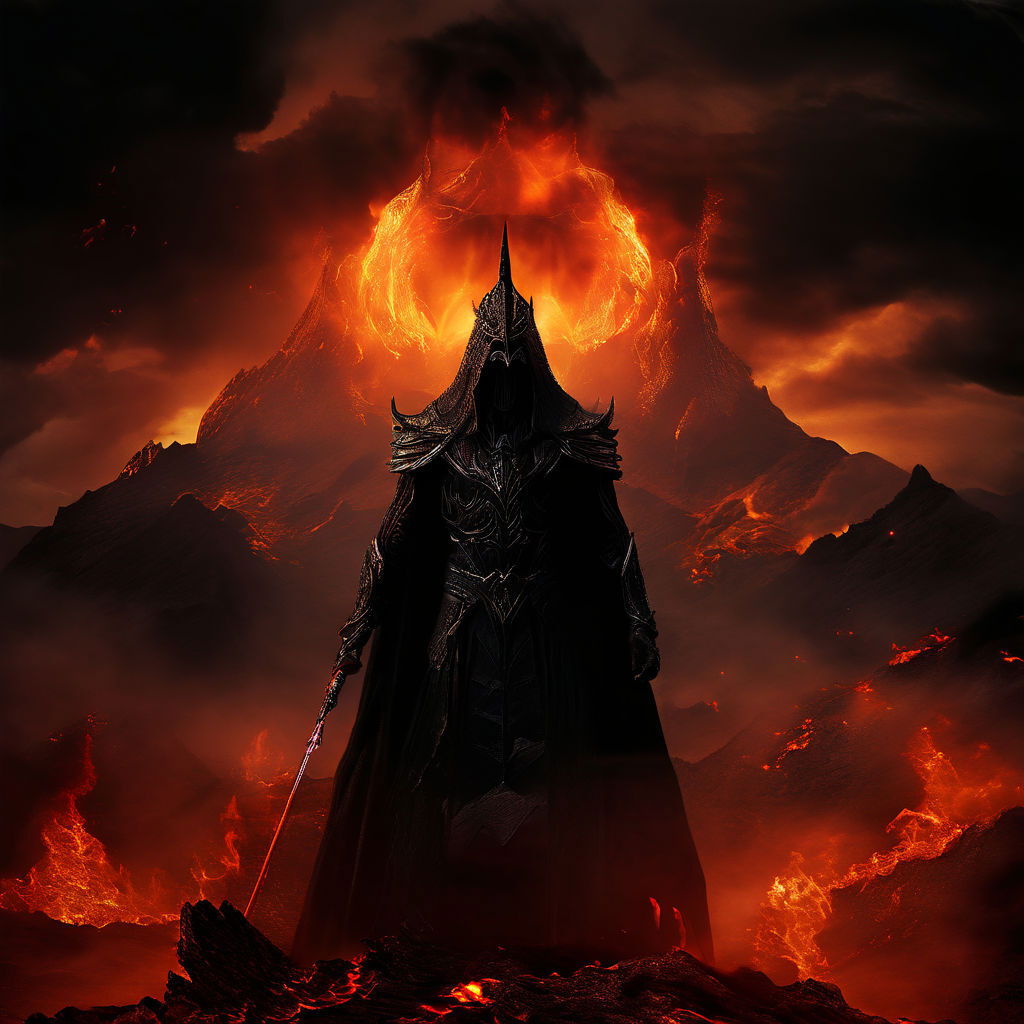
After the fierce battle in Ithilien, Eli and the rangers, led by Faramir, strategized their next moves. The defeat of the Balrog had given them a precious momentum, and they intended to capitalize on it. Their ultimate goal was clear: reach Mount Doom and use the artifact to eradicate Sauron’s dark influence permanently.
With the new day dawning, the company set out, their spirits bolstered by their recent victory but tempered by the knowledge of the daunting task ahead. They traveled east, toward the ashen plains of Mordor, the very heart of darkness. As they approached, the skies grew darker, and the land itself seemed to groan under the weight of Sauron’s malice.
Eli, bearing the scepter, felt its power growing stronger as they neared Mount Doom. It pulsed like a heartbeat, a rhythm syncopated with the looming dread of the land. Faramir and the rangers moved stealthily, avoiding patrols and using the broken landscape as cover.
At last, they stood before the Black Gate. It was more formidable than Eli had imagined, a towering edifice of iron and dark magic, guarded by legions of Orcs and worse creatures. The final battle to enter Mordor would be their greatest challenge.
Faramir turned to Eli. “This is where we fight, not just for ourselves but for all of Middle-earth. Your light must guide us through the darkness.”
Eli nodded, clutching the scepter. Drawing deep from the well of his courage, he stepped forward, the artifact raised high. Its light flared brilliantly, casting a stark contrast against the brooding gloom. The Orcs hesitated, shielding their eyes from the blinding brightness.
The battle erupted, a cacophony of steel and cries, as the rangers charged. Eli, focused on the gate, channeled the full force of the scepter’s power. The gates trembled under the onslaught of pure light, the dark magics binding them unraveling. With a thunderous roar, the Black Gate crumbled, opening the path to Mount Doom.
The way now clear, Eli and the rangers hastened through the gates, across the blasted lands of Mordor, towards the fiery chasm of Mount Doom. Sauron’s eye, sensing the imminent threat, turned its gaze upon them, filling the air with a suffocating dread.
As they reached the slopes of Mount Doom, Sauron manifested, a towering figure of shadow and flame, his voice a malevolent echo across the valleys. “You cannot defy me, child of light. I am the darkness that swallows all,” he boomed.
Eli, undeterred, stood firm. “Your darkness ends today,” he declared, his voice resolute. The artifact glowed hotter, its light a beacon in the oppressive darkness.
With a defiant cry, Eli thrust the scepter forward, unleashing its full might. A torrent of radiant energy surged from the artifact, enveloping Sauron in a blinding storm of light. The Dark Lord's screams echoed as his form began to dissipate, the shadows that composed his being unraveling like smoke in the wind.
As Sauron’s presence faded, the skies above Mordor cleared for the first time in centuries, revealing the stars. The land, long blighted by his corruption, seemed to breathe a sigh of relief.
Eli collapsed, exhausted but victorious. Faramir and the rangers rushed to his side, their faces alight with joy and disbelief. They had witnessed the fall of a tyrant, the end of an era of darkness.
--
Years later, Middle-earth had undergone a transformation. Villages were rebuilt, forests regrew, and rivers ran clear. The lands healed, and the people prospered, their lives a testament to their resilience and newfound unity.
Eli, now known as Eli the Redeemer, spent his days ensuring the lore and memories of both the old and new worlds were preserved. The artifact was placed in a temple, a symbol of their hard-won freedom and a reminder of the light that could vanquish the darkest of terrors.
As he stood looking out over a vibrant landscape, Eli felt a deep, satisfying peace. The journey had been fraught with peril, but hope had guided them through the darkest times. Now, Middle-earth looked forward to an era of peace and prosperity, its future as bright as the dawn that had once seemed so distant.
Eli, known as "the Redeemer" in this tale, is a lone warrior with a profound connection to Middle-earth's past and future. His character is marked by resilience, courage, and a deep sense of duty. Eli is not only skilled in combat but also bears the unique gift of holographic memory, which holds the vivid remnants of the world before its fall. This magical ability is crucial, as it not only inspires and guides him but also serves as a beacon for others, illuminating the path to redemption and the restoration of Middle-earth. His journey is one of sacrifice, leadership, and transformation, driven by the hope to dispel the darkness with the light he carries within.
TRUE LIFE AND LITERATURE!
Blending Fantasy with Reality
The Art of LIFE AND LITERATURE Storytelling
At the heart of combining fantasy with reality lies the alchemist's secret: balance. The challenge for any writer is to infuse the ordinary world with elements of the extraordinary in a way that feels authentic and believable. This alchemy requires a deep understanding of both realms and the skill to merge them without diminishing either's essence.
Successful blending of fantasy and reality often employs specific techniques:
- Subtle Integration: Introducing fantastical elements gradually into a real-world setting, allowing the reader to acclimate and accept the unfolding magic.
- Magical Realism: A literary style where magic elements are a natural part in an otherwise mundane, realistic environment.
- Plausible Explanation: Providing a logical basis for the fantastical elements, often through science, mythology, or history, to make the unreal seem real.
- Character Anchors: Using well-developed, relatable characters as anchors for the reader, bridging the gap between the known and the unknown.
Case Studies in Literature;
Gabriel García Márquez’s "One Hundred Years of Solitude";
Márquez's work is a quintessential example of magical realism. He integrates extraordinary events into the mundane setting of Macondo, allowing the magical and the real to coexist without questioning.
J.K. Rowling’s "Harry Potter" Series;
Rowling creates a hidden magical world within the modern world. The familiar settings of London and the British countryside juxtaposed with the magical world of Hogwarts offer a compelling blend of the known and the fantastical.
Neil Gaiman's "American Gods";
Gaiman masterfully merges mythology with the modern American landscape. The novel brings gods and mythological beings into a contemporary setting, exploring the intersections of myth and reality.
This blend of fantasy and reality resonates with readers for several reasons:
- Escape and Relatability: It offers an escape into the extraordinary while remaining grounded in familiar experiences.
- Reflection of Internal Realities: These narratives often mirror our inner dreams and fears, making the stories personally significant.
- Cultural Commentary: This blend can be used to comment on societal issues, using the fantastical to highlight real-world problems.
(en text genererad av Chat GPT)
Tegedao ska skriva sin egen BLENDING FANTASY WITH REALITY snart!
fantasy dragon fiction
Dragons invites us into a world of boundless imagination - they are symbols of power, wisdom, and the magic that fantasy fiction promises to its adventurers. TEGEDAO'S OWN DRAGON LORE FANTASY FICTION! LIFE AND LITERATURE!
WILLIAM BLAKES OCH T.S. Eliot’s POETISKA VÄRLDAR
VISIONER AV ANDLIGHET OCH FANTASI
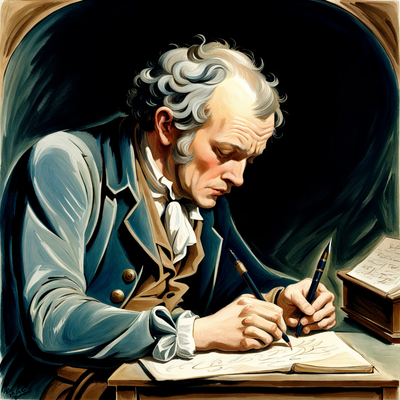
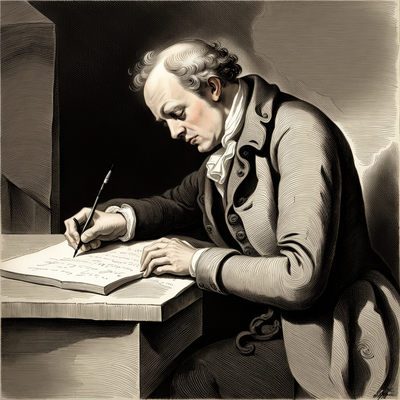

William Blake (1757–1827), en engelsk poet, konstnär och visionär, är känd för sitt unika och djupt symboliska arbete som kombinerar poesi med visuella konstarter. Hans verk speglar en komplex blandning av mysticism, andlighet och revolutionära idéer, vilka var betydligt före sin tid och fortsätter att inspirera människor världen över.
Blake utvecklade en unik metod för att kombinera text och bild, vilket resulterade i hans berömda "profetiska böcker". Dessa inkluderar verk som "Songs of Innocence and of Experience", "The Marriage of Heaven and Hell" och "Jerusalem".
Blakes andliga synvinkel var starkt influerad av mysticism, gnosticism och personliga visioner. Han avvisade den traditionella kristna dogmen och strävade efter att utforska mer personliga och esoteriska förståelser av det gudomliga. Blake ansåg att människans inre värld av fantasi och visioner var lika verklig som den yttre fysiska världen och att konst och poesi var medel för att utforska och uttrycka dessa inre sanningar.
William Blake var en sann original, vars arbeten bryter gränserna mellan poesi, konst och andlig utforskning. Hans visionära verk och djupa andlighet fortsätter att fängsla och inspirera, och hans inflytande i litteraturens och konstens värld är odiskutabelt. Blake är inte bara en stor poet och konstnär, utan också en tänkare vars idéer fortfarande utmanar och berikar vårt sätt att se på världen.
--
For Blake, true spirituality was about personal and direct communion with the divine, which he believed could be achieved through imagination and creativity. Central to Blake's philosophy was the idea that imagination was not just a facet of the mind, but a spiritual dimension in its own right. His work challenges readers and viewers to consider the nature of reality, the power of the imagination, and the deeper spiritual truths that lie beyond the material world.
Blake's spiritual and imaginative visions found their most potent expression in his prophetic works, where he created complex mythologies and symbolic narratives. Works like "The Marriage of Heaven and Hell," "Jerusalem," and "Songs of Innocence and of Experience" are replete with allegorical figures, mythic landscapes, and profound philosophical musings. These works are not just literary achievements but also maps of Blake's spiritual universe, where each poem and image provides insight into his transcendent view of the world. TRUE LIFE AND LITERATURE!
"The world of imagination is the world of eternity. It is the divine bosom into which we shall all go after death of the vegetative body" - William Blake
--
Mythic and Spiritual Themes in T.S. Eliot’s The Waste Land
T.S. Eliot’s *The Waste Land* is widely regarded as one of the most significant works of modernist literature, and its rich engagement with mythic and spiritual themes has made it a landmark in the exploration of existential crises in the early 20th century. Written in the aftermath of World War I, the poem captures a profound sense of fragmentation, disillusionment, and despair, reflecting the spiritual malaise of a world grappling with the collapse of traditional values and beliefs. Drawing heavily on mythic archetypes, religious symbolism, and spiritual allegories, *The Waste Land* transcends its time to become a timeless meditation on the human condition.
The Waste Land: A Broken Mythic Landscape
At its core, *The Waste Land* is a meditation on spiritual desolation. The title itself evokes the myth of the Fisher King, a central figure in Arthurian legend whose kingdom becomes a barren wasteland as a reflection of his own infirmity. The poem’s fragmented structure mirrors the brokenness of the landscape it describes—a world devoid of fertility, meaning, and vitality. This mythic wasteland serves as a metaphor for modern society, ravaged by war and cultural disintegration.
The Fisher King myth, which is invoked explicitly in the poem’s final section, reflects the archetype of the wounded ruler whose personal suffering results in the sterility of his land. Eliot uses this myth as a framework for understanding the spiritual crisis of modernity, where the fragmentation of religious and moral frameworks has left humanity in a barren, lifeless state. The once-sacred bonds between humanity, nature, and the divine have been severed, leaving the world in spiritual decay.
The Quest for Spiritual Rebirth
Despite its overwhelming depiction of desolation, *The Waste Land* is also deeply concerned with the possibility of spiritual renewal. Throughout the poem, Eliot weaves mythic and religious references that point to the hope of rebirth, even in the midst of desolation. One of the central myths in this regard is the fertility ritual of the ancient vegetation god, which recurs across cultures and serves as a symbol of death and rebirth. This mythic cycle is evident in the references to figures like the Fisher King and the dying gods of fertility, such as Adonis and Osiris, who must perish in order to bring life back to the land.
Eliot’s use of the Grail legend is particularly significant in this context. The quest for the Holy Grail, which features prominently in the Arthurian mythos, is a symbol of the search for spiritual healing and redemption. In *The Waste Land*, this quest becomes a metaphor for the modern individual’s search for meaning and transcendence in a world that appears spiritually dead. However, in Eliot’s modernist vision, the quest is elusive, fragmented, and fraught with uncertainty.
The section "What the Thunder Said" is where this theme of renewal is most powerfully addressed. Here, the barren landscape is once again invoked, but it is followed by a sudden burst of rain, symbolizing the long-awaited fertility and spiritual rejuvenation. The passage ends with the Sanskrit words “Datta, Dayadhvam, Damyata”—meaning "Give, Sympathize, Control"—which are drawn from the Hindu Upanishads and suggest the path toward spiritual renewal through selflessness, compassion, and restraint.
Religious Syncretism and Spiritual Crisis
One of the most striking features of *The Waste Land* is its use of religious syncretism—the blending of elements from various religious and spiritual traditions. Eliot draws from a wide range of sources, including Christianity, Hinduism, Buddhism, and pagan fertility rites, to create a mosaic of spiritual symbols that reflect the universal nature of humanity’s spiritual search. This intermingling of religious traditions underscores the poem’s exploration of the modern condition: a world in which the coherence of traditional belief systems has disintegrated, leaving individuals searching for meaning across diverse spiritual landscapes.
The poem opens with a reference to the *Sibyl of Cumae*, an ancient prophetess, followed by allusions to both the Christian Bible and the Hindu *Brihadaranyaka Upanishad*. This layering of religious and mythic sources highlights Eliot’s belief in the fundamental interconnectedness of spiritual traditions, as well as his assertion that the spiritual truths of the past continue to resonate even in a secular, disillusioned age. The poem does not offer a singular religious or spiritual answer to the crises it depicts, but rather suggests that humanity must seek out and synthesize wisdom from multiple traditions.
Yet, this syncretism also reflects the spiritual confusion of the modern world. In the poem, the traditional sources of meaning and transcendence have become fragmented and disjointed, much like the structure of the poem itself. The recurring references to various religious and mythic texts, often presented without clear context or explanation, create a sense of spiritual disorientation, echoing the experience of modern individuals attempting to navigate a world where the old certainties have crumbled.
The Role of Ritual in Spiritual Restoration
Ritual plays a crucial role in *The Waste Land*, serving as both a reflection of humanity’s spiritual desolation and a possible means of overcoming it. The poem is filled with references to ancient rituals, particularly those associated with fertility and regeneration, such as the myth of the Fisher King and the rituals of the ancient vegetation gods. However, in the modern world of *The Waste Land*, these rituals have lost their power. The poem's fragmented and disjointed narrative suggests that the rituals that once provided meaning and coherence have become hollow and ineffective in the face of modern disillusionment.
Nevertheless, Eliot hints at the possibility that the restoration of spiritual rituals could help bring about renewal. The poem's conclusion gestures toward the potential for salvation through the reintegration of mythic and spiritual traditions into modern life. In "What the Thunder Said," the breaking of the drought and the return of rain symbolize the reawakening of the spiritual life, suggesting that renewal is possible, even in a world as spiritually desolate as the wasteland. The final call to "Shantih shantih shantih," a traditional Sanskrit invocation of peace, offers a glimpse of hope, suggesting that spiritual reconciliation may ultimately be attainable through ritual and the rekindling of ancient wisdom.
The Fragmentation of Meaning and the Search for Wholeness
One of the defining features of *The Waste Land* is its fragmented structure, which reflects the spiritual and existential fragmentation of the modern world. The poem is constructed as a series of disjointed images, voices, and allusions, creating a collage-like effect that mirrors the disintegration of meaning in the postwar era. This fragmentation is central to the poem’s exploration of mythic and spiritual themes, as it reflects the breakdown of traditional belief systems and the resulting spiritual crisis.
However, the poem’s fragmentation is not without purpose. Eliot uses this fractured form to suggest that, despite the disintegration of traditional structures, there remains the possibility of synthesis and redemption. The poem’s extensive use of myth and religious symbolism suggests that the pieces of the past can still be reassembled to create new meaning. Just as the poem draws on diverse spiritual traditions to address the spiritual malaise of the modern world, so too does it suggest that humanity must find new ways of reconciling the fragmented pieces of the past in order to achieve spiritual wholeness.
Conclusion: Myth and Spirituality in a Broken World
T.S. Eliot’s *The Waste Land* is a profound meditation on the mythic and spiritual dimensions of the modern world. Through its use of mythic archetypes, religious symbolism, and fragmented form, the poem captures the existential crisis of a postwar world grappling with the disintegration of traditional values and beliefs. Yet, even in its depiction of desolation, *The Waste Land* offers glimpses of hope for spiritual renewal, suggesting that humanity’s ancient myths and rituals may still provide a path toward redemption. By drawing on a wide range of spiritual traditions, Eliot’s poem speaks to the universal nature of humanity’s search for meaning, reminding readers that, even in a broken world, the quest for transcendence and spiritual wholeness endures.
WILLIAM BLAKE AND T.S. Eliot is TRUE LIFE AND LITERATURE!
The holographic nature of T.S. Eliot's The Waste Land refers to the way the poem reflects and contains multiple layers of meaning, myth, and spirituality, with each fragment contributing to the whole. Like a hologram, where every part contains the essence of the entire image, each section of The Waste Land mirrors the central themes of fragmentation, spiritual desolation, and the search for renewal. Eliot incorporates various voices, literary references, and religious allusions—each fragment holding a piece of the larger existential puzzle—creating a work that resonates as a cohesive whole despite its disjointed structure. This layered complexity allows the poem to function on multiple interpretive levels, inviting readers to find connections between mythic, personal, and cultural crises.
--
The Waste Land dikt:
Efter facklornas röda sken på svettiga ansikten
Efter den frostiga tystnaden i trädgårdarna
Efter kvalen i steniga platser
Ropen och skriken
Fängelset och palatset och återklangen
Av åska på våren över avlägsna berg
Han som levde är nu död
Vi som levde håller nu på att dö
Med lite tålamod.
Här finns inget vatten utan bara sten
Sten och inget vatten och den sandiga vägen
Vägen som slingrar sig upp bland bergen
Som är berg av sten utan vatten
Om det fanns vatten skulle vi stanna och dricka
Bland stenen kan man inte stanna eller tänka.
Svett är torr och fötterna i sanden
Om det bara fanns vatten bland stenen
Döda bergsmunnar med tänder av karies som inte kan spotta
Här kan man varken stå, ligga eller sitta
Det finns inte ens tystnad i bergen
Bara torr, steril åska utan regn.
The Mythopoetic Impulse and the Creative Arts
Bridging Myth and Imagination In Poetry and Literature
A LIFE AND LITERATURE ARTICLE BY TEGEDAO OF COURSE
In the book The Mythopoetic Impulse, Bradley Olson devotes considerable attention to the rich interplay between the mythopoetic and the creative arts, emphasizing how poetry, literature, and other forms of artistic expression can serve as modern vessels for engaging with mythic themes. Olson argues that these artistic forms do more than entertain—they tap into the same archetypal sources that generate myths, creating spaces where deep, often unconscious, aspects of the human experience can be explored and expressed.
Mythopoesis in Poetry and Literature
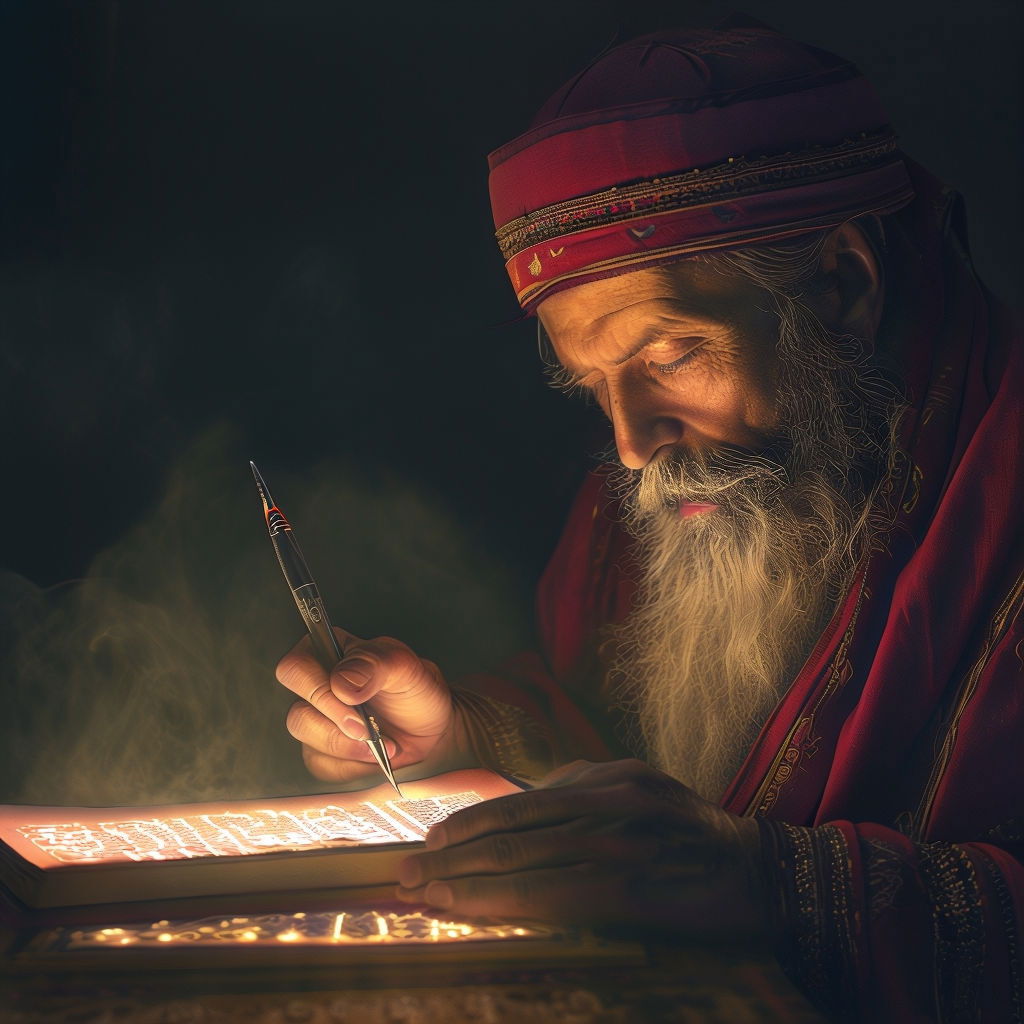
Central to Olson’s exploration is the idea that poetry and literature possess a unique capacity to bring mythic themes into contemporary consciousness. He suggests that the process of mythopoesis—the creation of myth—finds a natural outlet in the poetic and literary imagination. This is because poetry and literature, like myths, operate through metaphor, symbolism, and narrative structures that connect us to universal themes and patterns.
Olson notes that the rhythm, language, and imagery of poetry often mirror the structures found in myth. Just as myths speak through symbolic images and archetypal figures, so too does poetry employ metaphor and symbolic language to evoke deep emotional and psychological responses. For example, a poem might evoke the journey of a hero, the descent into a mysterious underworld, or a transformation through suffering and revelation—mirroring ancient mythic motifs that have been passed down through generations.
By engaging with poetry, Olson believes, individuals can experience a kind of modern-day myth-making, where the reader and writer alike participate in the creation of meaning. This allows them to reconnect with the archetypal undercurrents that shape their psyche. Olson emphasizes that poetry’s ability to distill complex feelings into concentrated, evocative language enables it to capture the timeless quality of myths, bringing the mythopoetic into the present moment.
Literature as Mythic Narrative
Olson extends this argument to literature, highlighting how novels and stories also draw deeply from the wellspring of mythic themes. He suggests that great works of literature often revolve around the same archetypal structures that have defined mythic storytelling throughout history. Stories of quests, transformations, tragic flaws, and encounters with the unknown—these are the narrative echoes of ancient myths that continue to resonate with readers today.
For Olson, literature serves as a bridge between the mythic past and the lived realities of contemporary culture. When we read stories that grapple with themes of identity, mortality, love, or redemption, we are engaging with the same fundamental questions that myths have sought to address. He points to the universality of these themes as evidence that literature is not merely a reflection of individual experience but a continuation of the mythopoetic tradition, adapting ancient stories to new cultural contexts.
In this way, literature becomes a means of revitalizing myths, allowing them to evolve and maintain their relevance. A modern novel might reinterpret the archetypal hero’s journey through the lens of a contemporary protagonist or transform the struggle with the shadow into a psychological drama. Olson suggests that such adaptations keep the mythopoetic alive, ensuring that these ancient patterns continue to shape and inform our understanding of the human experience.
The Creative Act as a Mythopoetic Process

Olson also explores the idea that the act of creating art—whether through writing poetry, composing music, or painting—can itself be seen as a mythopoetic process. The creative act involves delving into the unconscious, drawing forth images, symbols, and narratives that resonate with deeper truths. This process parallels the way myths emerge from the collective unconscious, according to Jungian theory.
By participating in the creation of art, individuals engage in a process similar to that of the ancient myth-makers. They become channels for archetypal energies, giving shape to the inexpressible aspects of the human experience. Olson argues that this creative process can be a form of personal myth-making, allowing the artist to confront and integrate parts of their own psyche through the symbols they produce.
This is particularly evident in the works of poets and writers who draw explicitly on mythological sources or create entirely new mythologies within their stories. Olson points to authors like William Blake, whose poetic visions are filled with mythic imagery and themes, or T.S. Eliot, who infused his poetry with references to ancient myths to grapple with modern existential crises. For Olson, such artists are modern-day myth-makers, keeping the mythopoetic tradition alive by adapting it to the needs and anxieties of their time.
The Role of the Reader in the Mythopoetic
An important aspect of Olson’s discussion is the role of the reader in engaging with the mythopoetic through creative works. He emphasizes that the reader is not a passive recipient of mythic themes but an active participant in interpreting and integrating these stories into their own experience. Just as myths invite participation through ritual and storytelling, literature and poetry invite readers to enter into a dialogue with the text, to discover the mythic resonances that speak to their own life journey.
Olson suggests that this interaction with literary works can be a transformative experience, much like engaging with myth itself. By encountering stories that reflect their own struggles, hopes, and desires, readers can gain insight into their own psychological landscapes. They can identify with the hero, the trickster, or the wanderer in ways that illuminate their own path. In this sense, reading becomes a form of mythic exploration, allowing individuals to access the deep structures of the psyche that Olson believes are central to the human experience.
Conclusion: Rediscovering the Mythic through Art

Bradley Olson’s The Mythopoetic Impulse offers a compelling vision of how poetry, literature, and the arts can serve as modern avenues for reconnecting with the mythopoetic. By highlighting the parallels between mythic structures and the creative imagination, he shows that the arts are not only forms of expression but also powerful tools for engaging with the mysteries of existence. Through their use of symbolism, narrative, and metaphor, poetry and literature invite us to explore the archetypal depths of our own minds, offering a path toward self-discovery and a deeper connection to the mythic dimensions of life.
Olson’s work encourages us to see the arts as more than aesthetic pursuits—they are spaces where the ancient and the contemporary meet, where the timeless themes of myth find new life. For those willing to engage with the mythopoetic through the lens of poetry and literature, the rewards are profound: a richer understanding of the self, a deeper sense of connection to the stories that have shaped humanity, and a renewed appreciation for the power of imagination. In this way, The Mythopoetic Impulse serves as both a guide and an invitation to rediscover the mythic through the creative arts, embracing the mystery and wonder that lie at the heart of human experience.
In The Mythopoetic Impulse, Bradley Olson also engages with the works of Thomas Mann, emphasizing how Mann’s novels are deeply intertwined with mythological themes and the exploration of the human psyche. Here are some of the key works by Thomas Mann that Olson references:
1. Thomas Mann’s Joseph and His Brothers: Olson delves into Mann's reimagining of the biblical story of Joseph. He explores how Mann uses this ancient narrative to delve into themes of fate, destiny, and the complexities of human character. By blending historical and mythological elements, Mann creates a rich tapestry that echoes the archetypal depths of the original story while infusing it with modern psychological insights.
2. The Magic Mountain: Olson highlights *The Magic Mountain* as a work that, while not directly mythological, uses mythic structures to explore themes of time, mortality, and human experience. Set in a sanatorium in the Swiss Alps, the novel engages with the idea of a hero’s journey—not through physical adventure, but through a philosophical and existential quest. Mann’s protagonist, Hans Castorp, undergoes a transformation that mirrors mythological journeys of self-discovery.
3. Doctor Faustus: In this novel, Mann revisits the Faust legend, a story steeped in mythological and cultural significance, to examine the complexities of art, creativity, and moral ambiguity. Olson discusses how Mann’s version of the Faust story becomes a meditation on the destructive and redemptive powers of the artistic impulse, exploring the interplay between genius, madness, and the eternal struggle between good and evil.
Olson considers these works as examples of how Mann uses myth not only as a narrative tool but as a means to engage with profound psychological and existential questions. Mann's ability to weave mythic motifs into the fabric of his narratives allows him to explore the depths of human nature, making his works a rich source of the mythopoetic tradition in modern literature.
--
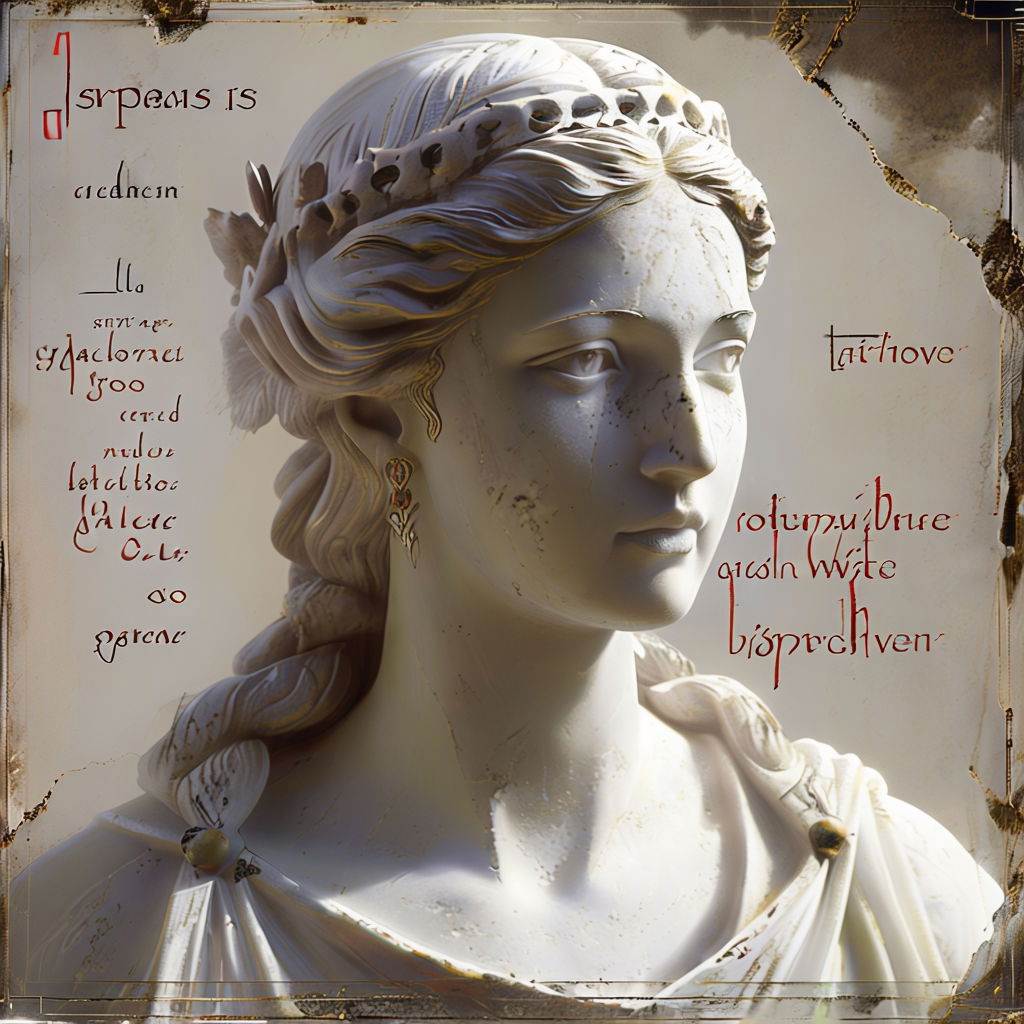
Robert Graves – “The White Goddess”
Graves’s poetry and his book-length poetic treatise, The White Goddess, explore the presence of the ancient goddess archetype in Western poetry. He connects the mythic figure of the goddess with poetic inspiration, using the mythopoetic to address the timeless relationship between the divine feminine and the creative process. His poems often delve into themes of death and rebirth, the cycles of nature, and the mysterious power of the feminine, bridging ancient mythic traditions with modern poetic sensibility.
All saints revile her, and all sober men
Ruled by the god Apollo’s golden mean—
In scorn of which we sailed to find her
In distant regions likeliest to hold her
Whom we desired above all things to know,
Sister of the mirage and echo.
It was a virtue not to stay,
To go our headstrong and heroic way
Seeking her out at the volcano’s head,
Among pack ice, or where the track had faded
Beyond the cavern of the seven sleepers:
Whose broad high brow was white as any leper’s,
Whose eyes were blue, with rowan-berry lips,
With hair curled honey-color to white hips.
The sap of winter oozed from all her pores,
Killing the nettle with a numbered curse.
Mythology’s mist-dome crowns her with its flame,
And no one now can write the real name.
In this poem, Graves describes the elusive and mysterious nature of the White Goddess, whose power lies beyond the grasp of logic and reason. She represents a primal and dangerous force, drawing poets into realms of myth and mystery.
--
THE SOUL’S CODE AND THE ACORN THEORY
A book by James Hillman
James Hillman’s Acorn Theory represents a radical departure from traditional developmental psychology. He proposes that each individual's essence and destiny are encoded within them from birth, much like an acorn contains the blueprint of the oak tree it will become. This inner code, he argues, is the soul’s unique pattern or calling, guiding a person’s life journey.
Central to Hillman’s theory is the concept of the daimon, an ancient Greek idea akin to a guardian spirit or inner voice. This soul-companion, according to Hillman, guides and protects the individual's true calling, ensuring that their life path aligns with their innate purpose. The daimon is seen as an autonomous part of the psyche, pushing individuals towards their destiny.
Hillman draws extensively on mythology and literature to illustrate his theory. He views myths not as mere stories but as profound reflections of human psychic experiences. These narratives from various cultures worldwide echo the concept of a predestined calling or an inner guide, resonating with the principles of his Acorn Theory.
Hillman’s work can be seen as an extension of Carl Jung’s theories, particularly in the realms of archetypes and psychological types. Jung’s concept of archetypes – universal, primordial symbols and images that reside in the collective unconscious – finds a distinct echo in Hillman’s view of the soul’s code.
Jung’s theory of psychological types, which categorizes individuals based on their predominant mode of psychological functioning (thinking, feeling, sensation, and intuition), provides a foundation for understanding the diversity of human nature. Hillman’s Acorn Theory takes this further by suggesting that these types are influenced by the soul’s inherent code, shaping an individual's character and destiny.
Exploring Hillman’s theory in the context of Kabbalah, a form of Jewish mysticism, offers fascinating parallels. Kabbalah speaks of a soul's journey through the Tree of Life, emphasizing a preordained path and purpose for each soul. This mystical tradition underscores the idea of a unique, divinely-ordained role for every individual, resonating with Hillman’s notion of the daimon and the soul’s code.
Kabbalah, rich in its use of mythic language and imagery, aligns with Hillman’s belief in the power of myth to reveal deeper psychological truths. Kabbalistic texts use mythical narratives to explain complex spiritual and psychological concepts, paralleling Hillman's use of mythology to elucidate the soul’s journey.
James Hillman’s Acorn Theory, with its focus on a predestined calling and the guiding role of the daimon, offers a mythopoetic lens through which to view human development. This perspective not only enriches our understanding of Jungian archetypes but also intersects with the mystical teachings of Kabbalah, highlighting the soul's journey and its intrinsic purpose.
Hillman's contribution lies in his ability to synthesize these diverse elements into a coherent and compelling vision of human potential and destiny. In a world increasingly focused on external accomplishments and material success, Hillman’s Acorn Theory invites us to explore the depths of our inner being, to listen to the whispers of our daimon, and to embrace the unique path that our soul has charted for us. Through this exploration, we gain not only self-understanding but also a renewed sense of wonder at the rich tapestry of human experience, woven through the threads of mythology, psychology, and spirituality.
--
"During the original version of the universal wonderland, souls played like the Greek gods of mythology, immortals enjoying the paradise-like playground of creation. A glorious existence in a cosmic phantasmagoria. As such, they played like the true immortals they were in the fantasy land of the universe. They were able to play and co-create within the fantasy world. You are not this body. It is merely a vehicle by which to play in the VR fantasyland. Your true nature is infinite bliss, your true home is infinity. The holographically-generated “mini-universe” has become “real.” The reflected “mini-universe” appear as if it were truly a real 3-D world existing in time and space. The world is but a reflection of my imagination. Whatever I want to see, I can see. As a virtual reality game; in which the player of the game is also part of the simulated virtual world. After successfully completing the journey of awakening, the odyssey of the gods, the soul regains its original state as an immortal god of bliss consciousness. People have a hard time comprehending that we were once immortal gods. But we were. We still are." - awakeningofthegods.com
--
Tegedao som ligger bakom denna sida Life and Literature har en egen liten teori. Tänk om 'the Acorn Theory' försöker förmedla att vi alla är gudar och 'the daimon' hjälper varje individ att realisera detta på sitt egna vis i form av perception. Både att uppfylla sin potential här på jorden och i 'the universal imagination wonderland' i yttre rymden 'consciousness unlimited'. Varje individ blir universum - ett eget mini-universum! Men det är inte bråttom - miraklet JORDEN ska inte underkastas. Nej då - här finns fantastiska upplevelser som kan främja. Själv vill jag Tegedao bli författare och manifestera detta i form av Life and Literature. THE ACORN THEORY THE SOULS CODE!
"Ascension is no escape; there is nothing to escape from. Here is spiritual. Here is now. Here is physical. Here is where everything happens. Wake up and enjoy it!" - Story Waters gnostic/mystic

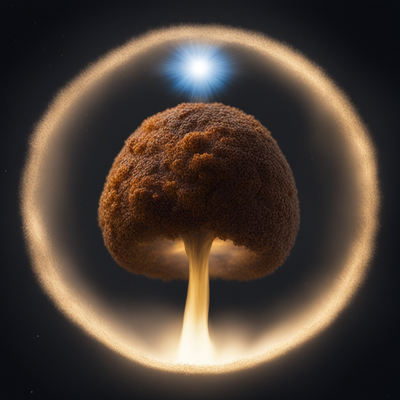

E - BOK : HOLOSOPHY : A NEW GNOSIS
A NEW SPIRITUALITY
ASMUNDS ADVENTURES and the knight from avalon : two SHORT stories
TWO SHORT STORIES BY TEGEDAO VIKING BRITISH ISLES FANSTASY HISTORIC FICTION
The Vikings, an ancient seafaring people, were a source of awe and admiration. Their culture was steeped in mythology and folklore, and the stories they told of their gods, heroes, and monsters were legendary. They believed in a pantheon of gods, such as Odin, Thor, and Loki, who were thought to be responsible for natural phenomena, as well as for skills and crafts. The Vikings also believed in a variety of supernatural creatures, such as elves, giants, and trolls. Even their longships and their warriors were said to be endowed with magical powers.
The Vikings left behind an abundance of artwork and literature, which sheds light on their beliefs and traditions. Written works such as the Prose Edda and the Poetic Edda contain stories of Norse mythology and heroic sagas. These works tell of the deeds of Norse gods and goddesses, as well as the adventures of human heroes such as Thor and Odin. Runes, symbols carved into stone, were also used to communicate messages, and to scribe spells and curses.
The Vikings’ legacy lives on today in the form of literature, art, and music. Their stories of gods and monsters have inspired artists and writers to create works of their own, and their influence has been felt in literature, film, and television. Their spirit of exploration and adventure has also left a lasting mark on our society. The Viking spirit lives on, and their legacy will continue to captivate and inspire for centuries to come.
Behold! LIFE AND LITERATURE!
--
ASMUND ADVENTURES - EN GNUTTA FAN FICTION
Chapter 1 : The Call of Heimdall
Asmund Bjornsson was a young man who lived in the Viking-age settlement of Reykjavik, Iceland. Descendants of the Norse Vikings had settled Iceland centuries before Asmund's time, and the land was steeped in Viking culture and mythology.
One day, as Asmund walked in the tundra wilderness outside Reykjavik, he had a vision of Heimdall - a god of Norse myth. Heimdall was known as the Shining God, with the whitest skin of all the Norse gods. He was the watchman of the Norse gods, and his horn was known as Gjallar.
Heimdall stood before Asmund and spoke to him in a telepathic language of the gods. He spoke of a voyage and quest, from Iceland in a Viking longship, to discover new lands in the west. Heimdall warned that a dark force, the Dark Lord Sauron from the world of Lord of the Rings, wanted to sabotage the quest. A powerful enemy to the Norse gods - and to Asmund himself.
Asmund was determined to fulfill his destiny, and set out on his quest with courage and determination. He knew that he would face danger and peril, but he was willing to take the risk. With Heimdall's blessing, he set sail on the waters of the North Sea - and his journey began.
Chapter 2: A Voyage on Skidbladnir
Asmund Bjornsson set sail in a magical ship called Skidbladnir. It belonged to the Vanir god Freyr, and was said to be the greatest of all ships. It could fly in air and sail on the sea, and always had a fair wind pushing it forward. Giving it great speed.
With the fair wind in his sails, Asmund’s journey was swift, and soon he was nearing Greenland. He was determined to discover if there were already Viking settlers on the island, such as Erik the Red, who had arrived in a fleet of fourteen longships in 985. The first people to set foot in Greenland arrived around 4-5000 years ago - maybe Asmund can also meet this indigenous people as well?
However, Asmund was aware of the dangers that lay ahead. He had heard stories of a powerful dragon, Smaug from the Lord Of The Rings world, who lurked in the sea and could breathe fire onto unsuspecting vessels. He was determined to be wary of the dragon, and the other threats that he might encounter on his journey. Sauron allied with Smaug and intended to use the dragon's powers against Asmund and sabotage his quest.
Asmund was also wary of other perils of the sea. He had heard tales of storms and treacherous reefs, which could wreck a ship and its crew in a matter of moments. He was also on the lookout for hostile ships belonging to other seafaring peoples, such as the Moors and the Norsemen, who could be a threat to his and his magical ship Skidbladnr. But Asmund bravely face the dangers of the sea. With Heimdall's blessing, he continued to sail towards Greenland.
Nevertheless, Asmund was determined to fulfill his quest - despite the threat of a great dragon. He knew that he was on an epic journey, and that he was carrying out his destiny as chosen by Heimdall, the Shining God. With a brave heart, he set sail on the Skidbladnir, first to Greenland and later into the unknown.
Chapter 3 : The Holy Grail
Asmund had been searching for Erik the Red but when he reached Greenland, he was disappointed to find that Erik was nowhere to be found. Instead, he encountered King Arthur who offered him the chance to embark on a quest to find the Holy Grail in America.
A mysterious figure; King Arthur from the Arthurian Legends. The king spoke to Asmund in a wizard rune language.
Asmund was confused when he reached Greenland. He had been searching for Erik the Red, not the Holy Grail. But, this was an interesting proposition. He had heard of King Arthur and his legendary quest for the grail. He looked at the man closely, if this was King Arthur then he was truly in the presence of greatness. He thought for a moment, and then agreed. He would travel to Vinland and America in Leif Eriksson's footsteps in search of the Holy Grail.
Asmund gathered his gear, and prepared for the voyage. He began to make his way across the vast ice sheet of Greenland, which seemed to stretch on forever. After many days, he arrived at the edge of the ice sheet and stepped foot on the sandy beaches of Vinland. He was finally in America.
Asmund continued his journey across the continent, searching for the Holy Grail. He encountered many different people and places, learning of their cultures and customs. He eventually made his way to the Grand Canyon, where he believed the Grail was located.
Asmund was in search of the Holy Grail and had reached the Grand Canyon. But as he ventured further, he was challenged by the Black Riders, the Nazguls of Sauron. Asmund was not intimidated and quickly took to the air in his magic ship. He used all of his skill and courage to battle the Nazguls in the air as they approached. After a long and hard fought battle, Asmund was able to defeat the Nazguls and reach the Grail.
As Asmund searched for the Holy Grail, he also had to face the dangers of the dark lord Sauron. Sauron wanted to prevent anyone from finding the grail, and Asmund was constantly on guard. But, eventually, he found a secret cavern deep within the Grand Canyon that contained the Holy Grail.
Asmund took the grail and set off on the return journey. He arrived back in Greenland unscathed and triumphant. He had found the Holy Grail, and he was proud of his accomplishment. He had made a journey that no other man had made before, and he had discovered something that was thought to be impossible. Asmund had achieved the impossible, and he had the Holy Grail to show for it.
Chapter 4 : The Journey Home
Asmund returned to Greenland, triumphant and filled with the knowledge of his journey. He had made it to America and found the Holy Grail. As he arrived, he finally met the man he had been searching for - Erik the Red.
Asmund and Erik engaged in conversation, talking of their adventures and of the power of Norse Myth in the Viking world. As they spoke, a figure appeared from the shadows. It was Saruman the White. He told them that Sauron was trying to destroy the power of Norse Myth and wanted to prevent it from being shared with the world.
Asmund and Erik were determined to protect the Norse Myth, so they set sail for Iceland and Reykjavik. As they arrived, the Shining God, Heimdall, awaited their return. He congratulated Asmund on his successful quest and told him he had done the impossible.
Asmund smiled, content with his acomplishment. He had seen the world, and done the impossible. He had found the Holy Grail and he was proud of what he had achieved. He had fulfilled his quest, and the world had a richer understanding of Norse Myth because of it.
--
THE KNIGHT FROM AVALON - EN GNUTTA FAN FICTION
Prologue: The Veil of Avalon
In the mystical shadows where legends breathe and ancient lore whispers through the ages, there exists a realm unlike any other—a hidden dimension suspended in the embrace of the celestial firmament. This realm, known as Avalon, is the sanctum of the Celtic gods, a kingdom stitched into the very fabric of magic and myth, beyond the constraints of time and space.
Avalon, a land of ethereal beauty and tranquil forests, is not merely a place but a state of being, spiritually tethered to the British Isles through a lattice of mystical energies and ancient magic. The inhabitants of this otherworldly realm are the Faeri, an ancient race of humanoid beings akin to Elves, endowed with supernatural abilities and origins tracing back to a dimension adjacent to Britain and Ireland on Earth. These beings, with their insectoid wings, glide through the heavens, their presence a whisper of the divine dance of creation.
The Faeri, closely related to the Leprechauns, Dark Elves of Svartalfheim, and the Light Elves of the Celtic myths, share a profound connection with the mystical gateways that guard the doorways to other universes. These gateways dot the landscape of Avalon, a kingdom riddled with ancient towers and the serene grandeur of a medieval world, where magic is not merely an element but the cornerstone of existence—a sanctuary for those who pursue the arcane arts and knightly virtues.
In this realm, the druids roam the woodlands, and the skies are alive with the fluttering of Faeri wings. Avalon is the epitome of mystical charm, its geography shaped by the collective subconscious of the British Isles. It is here, in Avalon, that the spirits of ancient magic and timeless adventures dwell, watching over portals like Stonehenge that connect this mystical kingdom to the earthly landscapes of Britannia.
One such adventurer is Loc Mac Giolla Garmhaic, a spirited knight from Avalon, aware of the mystical gateways that subtly link his home to the British Isles. Determined to explore these connections, Loc Mac sets out on a journey, spurred by the gods of the Celtic underworld and the sun, to traverse the magical landscapes that are invisibly woven into the fabric of Avalon.
As Loc Mac steps through one of these gateways, he finds himself at Stonehenge, greeted by Merlin the wizard, who reveals the mystical origins of the stones and the deeper magic that permeates the British Isles. Armed with a rune book filled with ancient secrets and guided by the whispers of Merlin, Loc Mac embarks on a temporal voyage across eras that have shaped Britannia, from Roman conquests and Viking raids to the mythical reign of King Arthur.
This is a tale of enchantment, where the boundaries between worlds blur, and the echoes of the past resonate in the corridors of the present. As Loc Mac delves deeper into the rune book, each page a gateway to another era, he becomes a witness to the unfolding history, a spectral observer in a world where magic and reality converge.
Thus begins the chronicle of Loc Mac Giolla Garmhaic, a knight from the magical realm of Avalon, as he journeys through the veiled passages of time and legend, exploring the mystical and historical tapestry of the British Isles.
--
The Chronicles of Loc Mac Giolla Garmhaic: The Avalon Gateways
In the land of Avalon, where the verdant forests stretch endlessly beneath a sky often tinged with the ethereal glow of twilight, there stood a castle forged from the very essence of magic itself. This was the realm of the Celtic gods, a place untethered from the mundane shackles of earthly existence. Loc Mac Giolla Garmhaic, a knight clad in armor that shimmered with a subtle radiance under the Avalonian sun, stood on the battlements, gazing out into the vastness of his mystical homeland.
Avalon was more than just a land of beauty and magic; it was a nexus of powerful gateways that connected to the British Isles in ways that only the wisest could comprehend. Loc Mac, known among his kin as the Adventurer for his insatiable curiosity about the human world, felt a pull towards these gateways—a pull towards adventure and discovery.
Chapter One: The Departure
One crisp morning, under the watchful eyes of the Druids and the whispered blessings of the ancient trees, Loc Mac prepared for his journey. His first destination was predetermined by centuries of lore: Stonehenge, a site of power known to both his people in Avalon and the humans of Earth. As he donned his leather pack filled with essentials, his mother, a venerable Faeri of great power, approached him.
“Remember, my son,” she said, her voice a melody that seemed to harmonize with the wind, “the portals are not just pathways but sentient entities. Respect them, and they will guide you well.”
Loc Mac nodded, his heart swelling with a mixture of pride and anticipation. He approached the nearest gateway, a swirling vortex framed by standing stones covered in ancient runes. Taking a deep breath, he stepped forward, and in a blink, the lush greenery of Avalon gave way to the stark, majestic rise of Stonehenge under a stark blue sky.
Chapter Two: The Meeting with Merlin
No sooner had Loc Mac arrived than he sensed the presence of another—a figure as integral to the myths of Britain as the stones that stood sentinel around them. Merlin, the wizard of legends, awaited him, leaning casually against one of the massive sarsens, a twinkle of amusement in his ageless eyes.
“Welcome, knight of Avalon,” Merlin’s voice boomed across the plains, stirring the crows to flight. “You’ve come at a significant time.”
Loc Mac bowed respectfully. “I am here to learn, to explore, and to understand, Master Merlin. Avalon and Britannia are linked, and I wish to know how.”
Merlin nodded, his long beard swaying slightly. “Very well. But first, you must understand the significance of where you stand.” He gestured around them. “Stonehenge was built with magic and muscle, a place of power designed to harness the ley lines that intersect here. These stones are not just stones; they are keys to the past, present, and future.”
Merlin handed Loc Mac a book, its cover adorned with runes that shimmered with an inner light. “This book will be your guide. As you read it, it will reveal to you the events that have shaped this land.”
Chapter Three: The Book of Runes
Curiosity alight, Loc Mac opened the book to the first page. Instantly, the world around him shifted, and he found himself witnessing the Roman invasion of Britannia. He saw legions marching, the clash of steel, and the integration of Roman and Celtic cultures that formed a significant layer of Britain’s history.
Each page turned brought a new era to life: the Viking raids with their longships and fierce warriors, the mystical and tragic tales of King Arthur and his knights, and the dark times when mythical creatures roamed the lands, influencing its folklore and peoples’ beliefs.
As Loc Mac experienced these epochs, he remained an observer, a spectral presence that could interact with the energy of the events but not alter their course. It was a humbling way to witness history, teaching him the interconnectedness of all things and the impact of each era on the present.
Chapter Four: Return to Avalon
Days, or perhaps weeks—he could not tell—passed as Loc Mac journeyed through the pages of the rune book. When he finally closed the cover, he found himself back at Stonehenge, the stones silent witnesses to his journey through time.
Merlin appeared once more, his eyes knowing. “What have you learned, young knight?”
Loc Mac took a moment, his mind a whirl of images and emotions. “I have learned that the tapestry of history is vast and interwoven, that every action and event flows into the next, shaping the world as we know it.”
“Indeed,” Merlin nodded. “And now, you must take that knowledge back to Avalon. Share it with your people. Let it guide you in your dealings with this world and others.”
With a heart full of new wisdom and eyes open to the infinite complexities of existence, Loc Mac stepped back through the gateway to Avalon. He was no longer just the Adventurer; he was a bridge between worlds, a bearer of histories, tasked with the noble duty of weaving new stories into the old, forever linking Avalon and the British Isles with threads of shared destiny.
--
Epilogue: The Gnosis of Avalon
Through the mists of time, the landscapes of the British Isles have been shaped not only by the forces of nature and the hands of humankind but also by a more elusive, ethereal influence: the holographic magic of Avalon. This ancient, mystical energy, known to a select few as the Gnosis of Avalon, has woven its way through the fabric of history, subtly guiding and altering the course of events and the evolution of the land.
In the shadows of prehistory, when the megalithic monuments like Stonehenge were erected, it was the Gnosis of Avalon that inspired the druids and ancient builders. The placement of stones and the alignment with celestial bodies were not only feats of engineering and astronomy but also acts of magical significance, designed to tap into the ley lines and cosmic energies that mirror the mystical alignments within Avalon itself.
During the turbulent times of Roman occupation, the Gnosis manifested through visions seen by local seers who guided resistance and negotiation, blending Roman innovations with the indomitable Celtic spirit. These visions, often viewed as prophecies, were holographic echoes of Avalonian wisdom, imparted to protect the integrity and sovereignty of the isles.
The Dark Ages saw the rise of Arthurian legends, where Avalonian magic was most palpable. King Arthur's court at Camelot was said to be directly influenced by Avalonian principles, with Merlin himself a conduit of this holographic magic. The ideals of chivalry and justice that flourished under Arthur's reign were underpinned by the teachings of Avalon, projected into the minds and hearts of those who would listen, guiding them towards a higher moral and social order.
As the centuries wore on and the medieval period gave way to the Renaissance, the Gnosis of Avalon influenced the burgeoning fields of science and exploration. Alchemists and early scientists received inspiration through dreams and meditative visions, many of which bore the unmistakable signature of Avalon’s holographic magic. These insights helped to catalyze advancements in various disciplines, subtly steering humanity towards greater understanding and harmony with the natural world.
In modern times, the influence of Avalon's holographic magic has become more subtle yet no less significant. It surfaces in the works of poets and artists, visionaries and thinkers who tap into the collective unconscious, where the Gnosis still whispers its ancient truths. Environmental movements and social reforms often find their champions among those sensitive to the subtle energies of Avalon, urging humanity towards sustainability and equity, echoing the balance and respect for nature that Avalon itself embodies.
Thus, the Gnosis of Avalon remains a guiding light—a holographic blueprint of an ideal balance between humanity and the cosmos, influencing the British Isles and beyond, ensuring that even in the face of modernity, the magic of the ancient world is never truly lost. It continues to shape, guide, and inspire, a hidden hand molding the destiny of a land where the veil between worlds is forever thin.
SCIENCE FICTION : IAN DOUGLAS
Jodå; 'extraterrestrials' är ett vanligt tema i modern science fiction. Människans möte och interaktion med 'aliens'. Världar där människan lever jämsides med utomjordingar som har överlägsen intelligens. Tegedao varmt rekommenderar Ian Douglas Alien Secrets!
“Science fiction is the most important literature in the history of the world, because it's the history of ideas, the history of our civilization birthing itself. ...Science fiction is central to everything we've ever done " - Ray Bradbury
science fiction extra short stories
Dive into Sci-Fi Universes One Story at a Time - Sci-Fi Short Stories to Ignite Your Imagination by Tegedao
EKO FRÅN ROSWELL: CROOCKED OMEGAS SÖKANDE
Ökenskuggor och Stjärnors Hemligheter : En LIFE AND LITERATURE Kort Historia av Tegedao Genererad av Chat GPT
Det var en kylig morgon i Washington D.C., och staden var precis på gränsen till att vakna till liv. På en anonym gata, i en byggnad som såg ut som vilken annan kontorsbyggnad som helst, satt en man i ett mörkt rum. Mannen, känd endast som Croocked Omega inom CIA, var omgiven av pärmar och datorer som lyste upp det annars dunkla rummet. Hans ansikte speglade en blandning av beslutsamhet och nervositet. Idag skulle bli den dagen då han avslöjade allt han visste om UFO:s.
Croocked Omega hade spenderat större delen av sin karriär inom en obskyr avdelning av CIA, dedikerad till att samla och analysera information om UFO-observationer och utomjordisk aktivitet. Trots att många av hans kollegor avfärdade dessa ämnen som nonsens, kunde Croocked Omega inte ignorera de otaliga rapporterna och bevisen han stött på. Han kände en djup övertygelse om att världen förtjänade att veta sanningen.
Med ett par klick på sin dator lade han ut en katalog med topphemliga data på en säker, anonym webbplats. Dokumenten innehöll detaljerade rapporter om UFO-observationer, intervjuer med vittnen, och till och med några suddiga bilder som antydde att dessa fenomen inte bara var luftspeglingslekar.
Croocked Omega väntade på reaktionen. Dagarna gick, och han följde nyheterna med stigande ångest. Till hans stora besvikelse var mottagandet dock långt ifrån det han hade förväntat sig. Medier nämnde knappt hans avslöjande, och de få rapporter som publicerades var skeptiska, om inte rent av spottande. Konspirationsteoretiker jublade, men de var långt ifrån den seriösa uppmärksamhet Croocked Omega hade hoppats på.
Inom CIA blev han plötsligt en paria. Kollegor som en gång respekterat hans skicklighet och dedikation undvek honom nu. Han kände sig övergiven av de han trodde stod på hans sida. Hans livslånga arbete verkade ha varit förgäves.
I en djup besvikelse och med en känsla av hopplöshet, bestämde Croocked Omega sig för att dra sig tillbaka. Han lämnade Washington D.C. och sitt liv som en toppspion bakom sig och satte kurs mot New Mexicos öken. Han visste att det var nära Roswell, platsen för den mest berömda UFO-incidenten, och ironiskt nog i närheten av det ökända Area 51. Han ville vara där allt hade börjat, ensam med sina tankar och den sanning han hade kämpat för att avslöja.
Kapitel 2: "Mötet i Öknen"
I den brännande hetta av New Mexicos öken, långt från civilisationens brus, hade Croocked Omega funnit en sorts frid. Hans dagar fylldes av vandringar genom det karga landskapet, och nätterna spenderades under stjärnklara himlar som tycktes tala om universums oändlighet. Han hade byggt en enkel stuga av återvunnet material och levde ett enkelt liv, men hans sinne var allt annat än stilla. Tankarna på UFO:s, hemliga regeringsprojekt, och hans misslyckade avslöjande gnagde konstant på honom.
En dag, under en av sina vandringar, skymtade Croocked Omega något ovanligt i ökendammets virvlar. Till en början trodde han det var en mirage, ett spel av solen och värmen. Men när han närmade sig, uppenbarade sig konturerna av en figur som varken liknade människa eller något djur han kände till. Figuren stod orörlig, som om den väntade på honom.
När han närmade sig, kunde han se att varelsen framför honom var reptilliknande, med grönskimrande hud och genomträngande ögon. Croocked Omega stannade, överväldigad av en känsla av både rädsla och fascination. Varelsen talade först, på ett språk som var främmande men ändå förståeligt.
"Jag är en medlem av Illuminati," sade reptilen. "Vi har iakttagit dig länge, Croocked Omega."
Croocked Omega kunde inte tro sina öron. Illuminati, en organisation omgärdad av myter och konspirationsteorier, stod nu framför honom i form av en reptil. Varelsen fortsatte att förklara att de flygande tefaten människor hade observerat inte var ballonger eller hemliga militära experiment, utan farkoster designade för att transportera människor genom galaxen.
Det var här Croocked Omega skrattade. Han hade, under sina år på CIA, skickat ut ett mixtape till rymden, ett försök att kommunicera med utomjordiska civilisationer. Och nu, här i öknen, påstod en reptil att de inte bara hade mottagit meddelandet, utan också ville etablera kontakt.
Reptilen fortsatte oförtrutet, och avslöjade att den holografiska principen var nyckeln till förståelse av universum och att Illuminati, tillsammans med reptilernas folk, planerade att skapa en ny världsordning med hjälp av jordens globala elit.
Croocked Omega kände hur hans hjärta sjönk. Var detta ytterligare en konspirationsteori? Ett spel för hans sinne? Eller var detta den ultimata uppenbarelsen han hade sökt efter hela sitt liv?
Han stod där, mitt i öknen, ansikte mot ansikte med en varelse som tycktes komma från en annan värld, eller kanske en annan dimension. Trots all sin träning och erfarenhet, kände han sig helt oförberedd för detta möte och dess potentiella konsekvenser för mänskligheten.
Kapitel 3: "Förlorad i Öknen"
Solen stod högt över New Mexicos öken, men för Croocked Omega, vars sinne virvlade i ett hav av tankar och tvivel, tycktes den varken lysa eller värma. Mötet med reptilvarelsen hade lämnat honom förvirrad och isolerad i sina tankar. Var det verkligen så att universum drevs av en holografisk princip, och att en ny världsordning planerades av en utomjordisk elitsamverkan? Eller var det en hallucination, en produkt av hans ensamhet och längtan efter något större än sig själv?
Croocked Omega vandrade genom öknen, hans fotspår en ensam markering i det vidsträckta landskapet. Han tänkte på sitt tidigare liv, på hemligheterna han avslöjat och på dem som fortfarande dolde sig i skuggorna. Hans passion för sanningen om utomjordiskt liv och UFO:s som en gång hade brunnit så starkt, kändes nu som glödande kol under askan.
Han tänkte på reptilens ord om en ny världsordning, men kunde inte förmå sig att tro helt och hållet på dem. Det var för mycket, för överväldigande. Var det möjligt att hans livslånga sökande efter sanning hade lett honom till denna yttersta punkt av tvivel och förvirring?
Dagarna blev till veckor, och Croocked Omega fortsatte sin vandring. Han träffade ibland på resande och lokalbefolkningen, men han undvek längre samtal. Han var inte längre den man han en gång hade varit, inte längre en agent med ett uppdrag. Han var nu bara en vandrare, en sökare som hade förlorat sin väg.
På kvällarna, när han satt ensam vid sitt lägereld och såg upp mot stjärnorna, undrade han ibland om reptilvarelsen hade talat sanning. Var det en annan civilisation där ute, som iaktog och planerade? Eller var allt detta bara en dröm, en spegling av hans eget inre kaos?
Kapitlet, och därmed novellen, avslutas med att Croocked Omega inser att han kanske aldrig kommer att finna de svar han söker. Han accepterar att han är förlorad - inte bara i öknen, utan även i universums oändliga mysterium. Han inser att hans sökande efter sanningen kanske är en evig resa, en resa som är lika mycket inåt som utåt. Med den insikten, under den stjärnklara himlen, somnar Croocked Omega, en man som en gång hade sökt svar från stjärnorna, men nu bara letade efter frid i sitt eget hjärta.
Epilog
Croocked Omega satt vid lägerelden, stirrande in i lågorna som dansade under den stjärnklara himlen. Plötsligt hördes ett ljud, och reptilvarelsen från Illuminati trädde fram ur skuggorna. Deras blickar möttes, och en tyst förståelse fyllde luften mellan dem.
Croocked Omega bröt tystnaden först. "Så, du är tillbaka. Du talade om den holografiska principen sist vi möttes. Jag har tänkt mycket på det... Hur kan hela vårt universum vara ett hologram?"
Reptilen svarade med en lugn röst. "Tänk på universum inte som en samling av objekt, utan som en samling av information. Precis som ett hologram, där varje del innehåller informationen för hela bilden, innehåller varje del av universum information om hela."
"Men hur förklarar det våra liv, vår existens?" frågade Croocked Omega, hans röst fylld av nyfikenhet och tvivel.
Reptilen lade huvudet på sned. "Din verklighet, det du upplever, är en tolkning av denna information. Din upplevelse av tid och rum, ditt medvetande, är bara en liten del av en större helhet."
Croocked Omega lät orden sjunka in. "Så, allt vi gör, allt vi är... är det bara en del av en större bild vi inte kan se?"
"Precis," nickade reptilen. "Din roll, även om den kan tyckas obetydlig i det stora hela, är en del av ett intrikat nätverk. Allt är sammankopplat."
Croocked Omega såg upp mot stjärnorna, tänkte på sitt liv, hans sökande efter sanning. "Så, vad är meningen med allt detta då? Om allt är förutbestämt i ett holografiskt universum?"
Reptilen såg ut över öknen. "Meningen är vad du gör av den. Att söka, att utforska, att förstå... det är en del av mänsklighetens resa. Du har spelat din roll, Croocked Omega, precis som jag har spelat min."
De satt tysta en stund, tittande på stjärnorna, förlorade i sina egna tankar om universums mysterier. Sedan, lika plötsligt som han hade dykt upp, försvann reptilen in i nattens mörker, lämnande Croocked Omega ensam med sina tankar och den ständiga dansen av lägereldens lågor.
Expedition 51
STAR TREK FAN FICTION SHORT STORY By Tegedao Exploring Area 51
Prologue:

In the shadowed corners of Nevada’s desert, a land claimed by silence and secrecy, lies the enigmatic Area 51. Known for its aura of mystery, this site has long stirred the public’s imagination with tales of unidentified flying objects and extraterrestrial encounters. Tucked away in the vastness of the desert, the area beckons the curious and the brave with its veil of mystery.
The year 1947 marked a peculiar incident: an alien spacecraft reportedly crashed in Roswell, New Mexico. Many believe the remnants of this vessel were transported to Area 51, fueling rumors that the base served as a ground for otherworldly experiments. While officially just another nondescript military installation of the U.S. Air Force, whispers of its true purpose permeate the air.
Enter Robert Lazar, a man whose claims would ignite a storm of conspiracy theories. He alleged that his tenure at Area 51 allowed him to witness alien activities firsthand, stating that the facility harbored and studied alien spacecraft for the purpose of engineering military technologies from these extraterrestrial finds. His accounts offered a tantalizing glimpse into a world where the lines between science fiction and military technology blur.
However, skeptics argue that Area 51’s engineers were merely advancing aviation technology, analyzing foreign aircrafts—not those from other galaxies. Despite the rational explanations, the legend that Area 51 houses alien spacecraft persists.
Surrounded by restricted signs and guarded by layers of security, Area 51 is not a place one simply strolls into. This secrecy only fuels the mystique surrounding the Nevada site, located not far from the dazzling lights of Las Vegas.
But now, a new chapter is poised to unfold as a certain man embarks on a mission to unravel this mystery once and for all. Not just any man, but Jean-Luc Picard, the famed captain from the Star Trek universe, aboard his starship USS Enterprise. Armed with a theory that Americans might be collaborating with aliens, with Area 51 serving as an Earth-based hub for an interspecies exchange program, Picard is determined to discover the truth.
Dubbed Expedition 51, his journey will see him land the USS Enterprise within the confines of Area 51, ready to uncover everything swiftly and discreetly. Area 51 has become a nexus of fascination not only on Earth but also in the fictional realms of Star Trek, where diverse alien species abound.
As the largest vessel to ever traverse the cosmic seas touches down in Nevada, Picard, alone on his ship, steps out after a silent and undetected landing. His mission is one of stealth, demanding the utmost discretion. Venturing through the Nevada desert, he soon approaches the facility that, to the untrained eye, appears merely as a standard military training ground.
Upon infiltration, Picard encounters an alien wearing holodeck sunglasses, engaged in virtual reality environments testing spacecraft akin to the Enterprise. It appears the rumors may hold a kernel of truth: Area 51 is indeed a collaborative hub for humans and aliens, fostering the development of space travel and civilization building in the outer reaches of the universe.
Jean Luc Picard’s solo mission, Expedition 51, concludes successfully, returning him to the Star Trek universe—a universe where the lines between fiction and reality blur, where technological innovations inspired by visions of the future become tangible. At Area 51, technologies like holodecks, once confined to the realm of science fiction, are now a reality, demonstrating how closely fiction and reality can intertwine.
Stay tuned. Expedition 51 has only just begun.
--
Chapter 1: Arrival

The desert was a canvas of shadows and dust as the USS Enterprise made its silent descent. Jean-Luc Picard, seasoned captain of the galaxy's most storied starship, was alone. His heart raced—not with fear, but with the thrill of the unknown. The Nevada desert sprawled below him, a barren expanse interrupted only by the secretive contours of Area 51.
Picard's mission was unauthorized by Starfleet, driven by personal curiosity and a dossier of unverified claims suggesting a symbiotic alliance between Earth's mightiest military and an array of extraterrestrial civilizations. As the Enterprise touched down, its cloaking device shimmering into activation, Picard couldn't help but feel the weight of history pressing down upon him.
The base loomed in the distance, its mundane appearance belying the secrets it purportedly held. He geared up, his Starfleet uniform giving way to the rugged attire more suited for Earth's challenging terrain. With one last look at his ship, cloaked and concealed against the barren backdrop, Picard began his trek towards the enigmatic base.
Chapter 2: The Ranch
The air was thick with the scent of dust and secrecy as Picard approached 'the Ranch', the nickname for the cluster of buildings that served as the heart of Area 51. Security cameras dotted the landscape, but they posed no threat; Picard's stealth technology, borrowed from a Romulan cloaking device, made him invisible to electronic eyes.
As he infiltrated the base, the silence was unsettling. Not a soul stirred outside, and the only sounds were the distant hum of machinery and his own footsteps. Picard found an unlocked door leading into one of the less imposing structures—a low building that looked more like a warehouse than a research facility.
Inside, the ambiance shifted. The air was cooler, the lighting artificial. Corridors branched off in every direction, but Picard followed the subtle vibrations of energy that seemed most promising. His instincts led him to a large door, sealed with a biometric lock. A quick application of his Starfleet-issue hacking module, and he was in.
Chapter 3: Encounter
The room was unlike any other he had seen on Earth. It was an amalgamation of a hangar and a laboratory, filled with technologies that blurred the lines between alien and human. At the center stood a spacecraft, unmistakably alien in design, surrounded by a flurry of activity.
Humans and aliens worked side by side. The aliens varied in appearance, from beings of light to more humanoid figures, each engrossed in their task. Picard ducked behind a set of crates, observing the cooperative efforts to refine what appeared to be propulsion technologies.
His gaze was drawn to a figure—a being composed entirely of pulsating light, wearing what looked suspiciously like a Starfleet-engineered holodeck interface. As Picard watched, the alien manipulated the controls, crafting virtual environments that tested the spacecraft's limits.
Chapter 4: Revelations
Picard’s presence eventually went unnoticed no longer. A sudden shift in the room’s atmosphere, and he was surrounded. The alien in the holodeck sunglasses approached him, its form stabilizing into a more humanoid appearance.
"You are not authorized to be here," it stated, voice echoing in the vast space."I am Jean-Luc Picard," he replied steadily, stepping forward. "I believe there are things happening here that require understanding, not secrecy. I come in peace, with a desire to learn and share knowledge."
The tension eased slightly. The alien, introducing itself as Aelyx, agreed to share their purpose. The beings had formed an alliance with Earth, sharing technology and knowledge to build a future where space travel and exploration were accessible to all civilizations in the galaxy.
As Aelyx guided him through their work, explaining their joint efforts to develop technologies that would one day allow humanity to join the Galactic Community, Picard felt a surge of hope. Here, in the secrecy of Area 51, was a beacon of the future.
Chapter 5: Departure

With a promise to keep their secrets until the world was ready, Picard returned to the Enterprise. The stars above beckoned, but this mission had changed him. Area 51 was more than a myth; it was a crossroads of cooperation and innovation.
As the Enterprise lifted off, cloaked against the night sky, Picard looked back at the glowing desert below. Earth was already part of a larger universe, he realized. The journey was just beginning, and he was eager to see where it led.
The mission had been a solitary one, but the truths uncovered promised a future where humanity was not alone. The universe, vast and filled with mysteries, was waiting—and Jean-Luc Picard had never felt more ready to explore it.
THE ENIGMA OF ALIENS
Aliens Among Us : Beyond the Stars
The relationship between humans and aliens in fiction spans a wide spectrum. Aliens, as a staple of science fiction, continue to intrigue and inspire.
(this text is generated by Chat GPT)
PHILIP K. DICK 'S GNOSTIC SCI-FI ODYSSEY
Bridging Science Fiction and Gnosticism IN LIFE AND LITERATURE
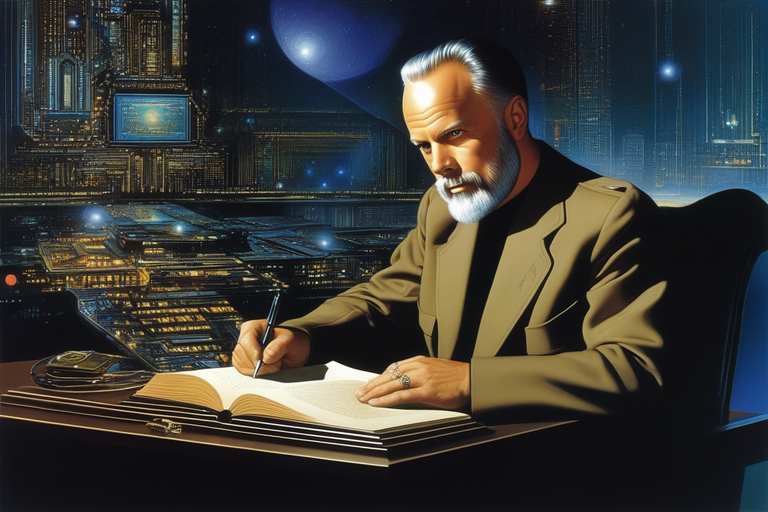
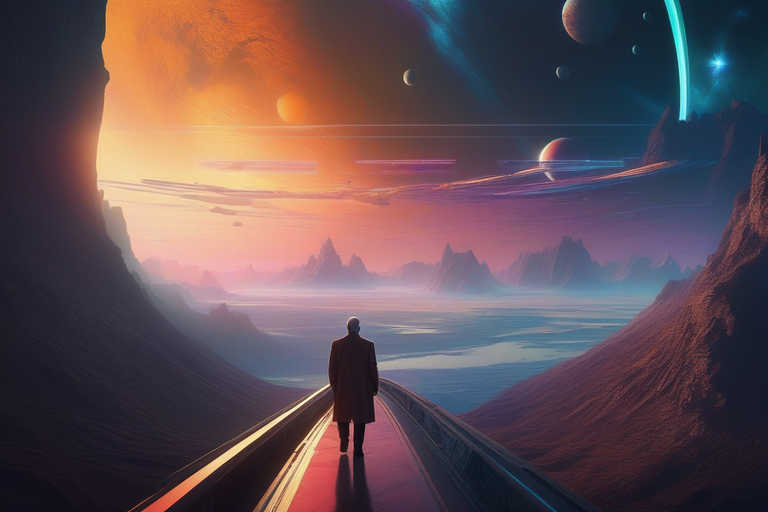
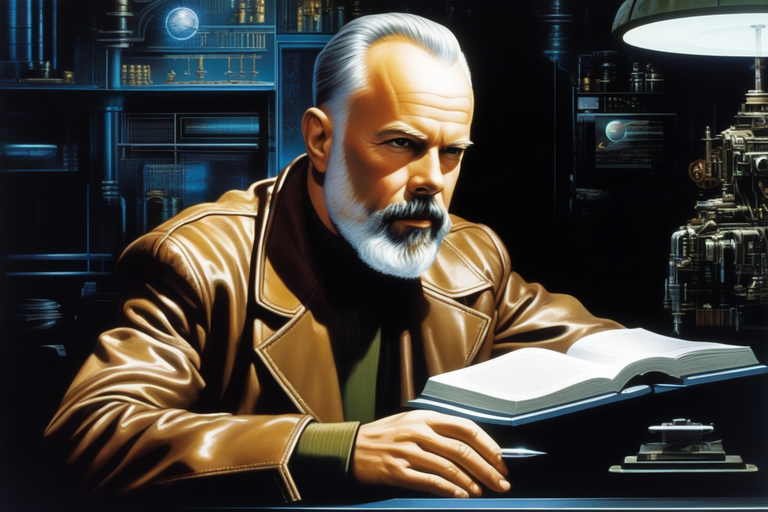
Born in 1928, Dick's early exposure to diverse philosophical and religious texts laid the groundwork for his lifelong exploration of metaphysical and existential questions. His initial forays into science fiction were marked by conventional themes of the genre, like space travel and alternate realities. However, even in these early works, Dick demonstrated a keen interest in deeper philosophical questions, a prelude to his later Gnostic explorations.
- Illusion of Reality: Many of Dick's stories, such as "The Man in the High Castle," challenge the notion of a singular, objective reality. His characters often grapple with multiple, overlapping realities, a concept akin to the Gnostic belief in the illusory nature of the physical world.
- Search for Hidden Knowledge: Dick's protagonists frequently embark on quests for hidden truths, mirroring the Gnostic pursuit of spiritual knowledge. This is evident in works like "Do Androids Dream of Electric Sheep?" where the search for authenticity in a synthetic world parallels the Gnostic journey.
- Dualism and Cosmic Conflict: The Gnostic theme of dualism, the struggle between spiritual and material realms, is central in Dick's narratives. His novel "VALIS," for instance, explores the conflict between opposing cosmic forces, reflecting Gnostic cosmology.
- Redemption and Transcendence: The notion of spiritual redemption and transcendence, a key aspect of Gnosticism, is often portrayed in Dick's work as characters seek to transcend their limited, often dystopian realities.
Philip K. Dick's relationship with science fiction and Gnosticism reveals a writer deeply engaged with the existential dilemmas of his time. His works serve as a bridge between ancient spiritual teachings and the speculative possibilities of science fiction. Through his visionary storytelling, Dick invites readers to question the nature of reality, urging them to look beyond the surface and explore the deeper truths of existence. As our world becomes increasingly complex and interconnected, Dick's explorations of Gnostic themes within the framework of science fiction continue to offer profound insights into the human condition.
(this text is generated by Chat GPT)
ERLEND LOE : DOPPLER

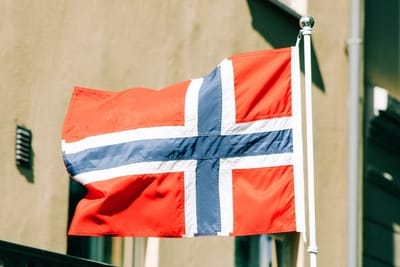

HUMOR ERLEND LOE STYLE
TEGEDAOS SKRIVERIER PÅ BÅDE PÅ ENGELSKA OCH SVENSKA MED EN GNUTTA SKÖN HUMOR ERLAND LOE STYLE
Arkiv X : Scully och Mulder i Skåne: Jakten på det Okända
FAN FICTION. Denna berättelse följer FBI-agenterna Fox Mulder och Dana Scully från Arkiv X som beger sig till Ängelholm, Skåne, för att undersöka ett av Sveriges mest omtalade UFO-mysterier vid UFO-monumentet i Sibirienskogen. Deras sökande efter sanningen leder dem genom en blandning av lokala vittnesmål, mystiska ljusfenomen, och en gammal journal som pekar mot möjliga utomjordiska kontakter. Med en blandning av Mulders outtröttliga tro på det övernaturliga och Scullys vetenskapliga skepticism, utforskar de gränserna för det okända, allt medan de stöter på både humor och mysterier i den skånska idyllen. Berättelsen är en resa av upptäckter, som balanserar mellan det otroliga och det jordnära, och avslutar med fler frågor än svar.
Snapphanarnas Skymning : Skånes Hjältar - Motståndet mot Svenskjävlarna
Denna historia tar oss till 1600-talets Skåne, där vi följer ungdomarna Casparas Due och Bartolomeus Michelsen i deras kamp för skånsk självständighet mot svenska ockupationsmakten. Genom djärva gerillataktiker i Göringeskogens djup och vägledning från den norska krigsguden Tyr, utmanar de och deras följeslagare de svenska styrkorna i ett modigt uppror. Berättelsen är en saga om mod, broderskap och strävan efter frihet, där det skånska landskapet och dess mytologi spelar centrala roller. Med en blandning av historisk äventyr och mytologisk magi, utforskar novellen teman om identitet, sammanhållning och betydelsen av att kämpa för det man tror på.
Immortal Underworld : The Unseen Empire of New Bordeaux
This Chat GPT generated story on english is a fan fiction set in the "Mafia III" universe, centered around Thomas Burke, the leader of the Irish Mob in New Bordeaux. It begins with Burke's encounter with Ed Woods, a mysterious police officer who is revealed to be a human-alien hybrid. Woods offers an alliance between the Irish Mob and his supernatural syndicate, 'The Monkey Alien Association', promising Burke and his men immortality and enhanced abilities. As Burke accepts, the Irish Mob undergoes a transformation, gaining new powers and asserting dominance in New Bordeaux. The narrative culminates with Burke delving into the world of psychedelics, leading to philosophical discussions about human consciousness and the Stoned Ape Theory, as he and his gang become key players in a city that has transformed into a surreal, psychedelic metropolis. FAN FICTION COSMIC JOKE!
Sigges Magiska Äventyr : Upptäck Universum Genom Kattögon
"Sigges Magiska Äventyr" är en fantasifull och tankeväckande short story som följer Sigge, en vanlig katt från den småländska byggden, på en extraordinär och metafysisk resa. Berättelsen börjar med att Sigge upptäcker ett mystiskt mjöd i sitt vattenfat, vilket leder till att han plötsligt transporteras till ett svart hål bortom tid och rum. I denna annorlunda dimension möter han den ryska poeten Aleksandr Pushkin, och tillsammans utforskar de den holografiska teorin om universum. De diskuterar filosofiska och poetiska idéer, och Sigge lär sig om Pushkins syn på livet och litteraturen. Novellen/short storyn är en berikande blandning av fantasi, filosofi och litterär skönhet, som utforskar teman om kunskap, existens och sambandet mellan alla varelser och universum med en gnutta skön humor.
Blixthalka i Tvedöra
Denna historia handlar om Johnny Raviola, en ung man från den lilla byn Tvedöra i Skåne, vars längtan efter äventyr och förståelse av sin egen identitet leder honom på en resa genom Sverige på sin moped, Rex 63, kallad "Bip". Under sin färd möter han unika karaktärer och upplever Sveriges mångfaldiga kultur och landskap. Efter att ha nått toppen av Kebnekaise och upplevt en djup självinsikt, återvänder Johnny hem med en ny uppskattning för sitt ursprung. Historien kulminerar i Johnnys nya dröm om att göra Skåne självständigt, vilket återspeglar hans passion för sin hemregion och hans fortsatta strävan efter personlig och kollektiv identitet. BLIXTHALKA I TVEDÖRA!
HUMOR ERLEND LOE STYLE CONTINUE
ÄNNU MER EN GNUTTA SKÖN HUMOR LOE TEGEDAO EXPLORATION STYLE JOHNNY RAVIOLA SPECIAL
ARTO PAASILINNA : KOLLEKTIVT SJÄLVMORD
LIFE AND LITERATURE
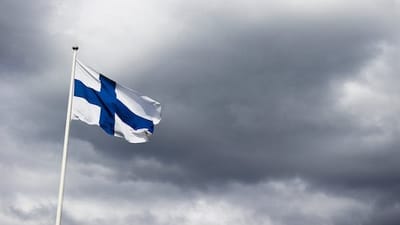


--
Tegedao tycker att det är en fantastisk bok som skildrar det tragiska med en stor gnutta av humor; svart humor när den är som bäst. Handlingen tar vid när den misslyckade affärsmannen Rellonen och överste Kemppainen stöter på varandra mitt under ett självmordsförsök i en lada. De båda herrarna talas vid och skjuter upp självmordsplanerna. Vilket leder till sist till en galen idé; att försöka samla andra finländare som också är i bräschen för att livet av sig. Det blir en succé - hundratals individer samlas för att lätta på hjärtat om sina till synes isolerade självmordstankar runt om i Finland. Allt leder slutligen till att försöka verkställa ett hisnande kollektivt självmord; ett trettiotal 'ivriga' men dystra själar bestämmer sig för att ta livet av sig i en lyx buss. Till exempel leder det till planen att i Schweiz och Alperna störta i en ravin. Hur det hela gick överlämnar jag till er läsare. Det Tegedao älskar med den här boken är hur Arto Paasilinna på ett humoristiskt och lättläst vis skildrar det dystra och fasansfulla med självmord; många finländare årligen tar nämligen livet av sig; ännu mer funderar på det. Tragiskt minsann; ett allvarligt och tabubelagt ämne som författaren Arto Paasilinna försöker skildra ur ett humoristiskt perspektiv; om det går - människor som helt enkelt inte orkar leva längre.
Oavsett vad så väcker läsningen mycket skratt; min första bok av Arto Paasilinna som verkligen lever upp till förväntningarna. Tegedao ger betyget 5/5 till den här boken. En av Finlands mest lästa och älskade författare som förkroppsligar den finska humorn.
I värsta Erland Loe style som Tegedao älskar!
En av Tegedaos favoritförfattare Norska Erlend Loe är helt såld på Paasilinna. Den finska humorn!
“Døden er det aller viktigste her i livet, og heller ikke den er særlig viktig (Folkelig visdomsord)” - Arto Paasilinna
reef pegasus isle
SURVIVAL SKILL SHORT STORY SPECIAL BY TEGEDAO
The sky had been clear, the ocean vast and endless beneath him. Wilson Kamaka, a commercial airline technician from Honolulu, had been a passenger on a routine flight when the engines sputtered and died. The next moments were chaos—a sharp descent, a terrifying impact, and then blackness. When Wilson awoke, he was adrift in an inflatable lifeboat, the wreckage of his aircraft scattered in the vast expanse of the Pacific.
Now, he stood on the golden sands of a small, uncharted island—a lone survivor. Reef Pegasus Isle, as he would later name it, was an isolated paradise with towering palms, crystal-clear waters, and an expanse of coral reefs stretching far into the horizon. But paradise was deceptive; survival would be an ordeal.
His ancestors, the great Polynesian navigators, had braved the Pacific using nothing but the stars and their knowledge of the sea. Could he now draw from that ancient wisdom to endure?

The sun beat down mercilessly as Wilson Kamaka trudged across the beach, his bare feet sinking into the scorching sand. The shock of survival had yet to fade, but instinct had begun to take over. He needed shelter, water, and food—and fast.
Scanning the shore, he spotted palm trees further inland. Coconuts. They would provide both sustenance and hydration. Wilson wasted no time, making his way toward the trees, using a broken piece of driftwood to knock down a few ripe coconuts. He cracked one open on a jagged rock, drinking the sweet liquid inside before scooping out the soft flesh. The taste was a small comfort, reminding him of home.
With a temporary source of food and water secured, Wilson turned his attention to shelter. The remains of his life raft, washed up further down the beach, would provide material. He dragged it inland, using palm fronds and driftwood to construct a makeshift lean-to against a rocky outcrop. It wasn’t perfect, but it would keep him shaded from the brutal sun and the frequent tropical downpours he suspected would come.
As the hours passed, Wilson continued exploring. The island was alive with sounds—birds calling, the distant crash of waves against the reef, the rustling of unseen creatures in the underbrush. He needed to understand this place, to map its resources if he had any hope of long-term survival.
Venturing beyond the tree line, Wilson discovered a freshwater stream trickling down from the island’s rocky interior. Relief flooded him. Water meant survival. He knelt to drink, the cool liquid a balm against his parched throat.
Further exploration led him to something unexpected—a series of large, weathered stones arranged in a pattern too deliberate to be natural. He traced his fingers over ancient carvings, symbols that echoed the stories of his ancestors. Wilson’s pulse quickened. Someone had been here before. Perhaps, long ago, this island had been a place of importance for Polynesian voyagers.
The realization sent a shiver down his spine. He was not just stranded; he was standing on history. As night fell, Wilson sat by his small fire, the embers flickering in the darkness. He wasn’t alone—not in the way he had thought. The island had a past, and perhaps, it held the key to his future.
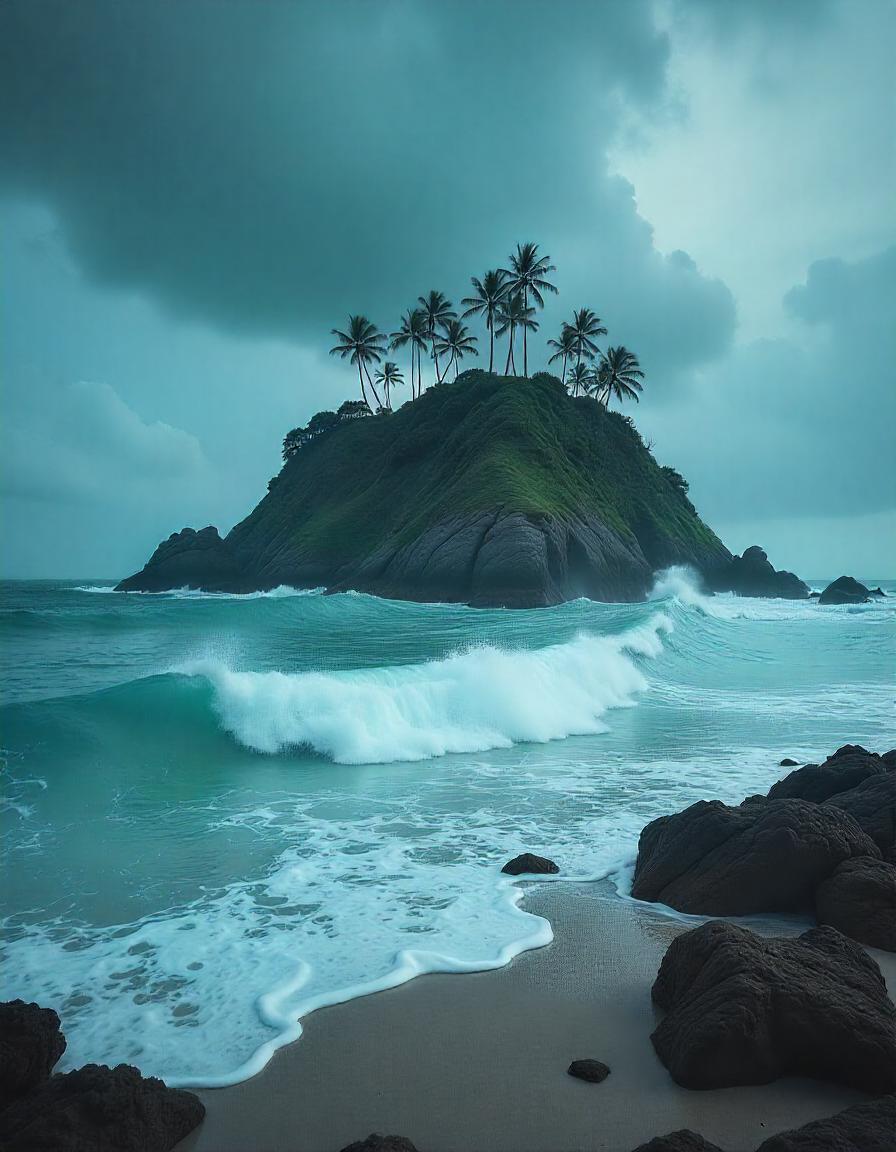
Days passed, each blending into the next. Wilson had settled into a rhythm—hunting, fishing, and maintaining his shelter. Despite the daily struggle, he could not shake the loneliness pressing in around him. Each night, he stared at the ocean, searching for something beyond the waves, hoping for a sign.
One afternoon, as he speared fish near the reef, something shifted on the horizon. A shape, unlike the usual mirages cast by the sun, moved steadily closer. He narrowed his eyes. It was no driftwood, no debris. It was a vessel—a Polynesian voyaging canoe, its sails billowing in the wind.
Heart pounding, Wilson dropped his spear and scrambled onto the shore. He waved frantically, shouting at the top of his lungs. The canoe glided closer but did not reach land. Instead, it halted just beyond the outer reef, where the coral was too shallow for a vessel of its size to pass. A lone figure stood at the prow, his gaze fixed on Wilson.
The man was tall, his skin bronzed by the sun, his hair long and windswept. His eyes, dark and deep as the ocean itself, seemed to look through Wilson rather than at him. A chill ran down Wilson’s spine. Something about the figure was otherworldly.
The man raised a hand, not in greeting, but in acknowledgment. Wilson felt an inexplicable force ripple through him, as if the waves themselves whispered his name.
A voice, not spoken but felt, resonated within him. "We have heard your call. The sea has remembered you."
Wilson’s breath caught. Was he imagining things? Or had the gods of his ancestors sent their emissaries to this forgotten island? He took a step forward, compelled by an unseen force, and for the first time in weeks, hope flickered within him.

Wilson stood motionless as the figure stepped onto the reef, his form flickering like light on water. The air around him crackled with energy, an undeniable presence washing over Wilson like an unseen tide.
"Who are you?" Wilson whispered, his voice barely audible over the crashing waves.
"I am Tangaroa," the figure replied, his voice deep and resonant. "Guardian of the ocean, father of the tides. You have called, and I have answered."
Wilson trembled as realization set in. Tangaroa, the god of the sea, was not just legend—he was real. The ancient myths of his ancestors were alive before him.
Tangaroa stepped closer, his eyes filled with both wisdom and power. "You, Wilson Kamaka, are not here by accident. The currents have carried you to the heart of Polynesian knowledge. This island is sacred, a place where the ocean speaks, and the stars listen. You are here to remember."
Wilson struggled to find his voice. "Remember what?"
The god gestured toward the sky, where the constellations had begun to shift into patterns Wilson faintly recognized. "The ways of your people. The knowledge of the sea. You are more than a man lost in the ocean—you are a descendant of the great navigators. The ocean does not forget its children."
A deep longing stirred within Wilson. He had spent his life rooted in the modern world, disconnected from the traditions of his ancestors. Yet here, in the presence of Tangaroa, he felt something awaken inside him.
"I want to learn," Wilson said, his voice steady now. "Teach me."
Tangaroa nodded. "Then let the sea guide you, and I will show you the path home."
With Tangaroa’s guidance, Wilson boards the voyaging canoe, its hull carved from sacred wood, its sails catching the celestial winds. Using the stars, the currents, and the whispers of the sea, Wilson steers toward Hawaii, rediscovering the art of Polynesian navigation. As he reaches the shores of his homeland, he is no longer just a survivor—he is a bearer of ancient knowledge, entrusted to share his ancestors’ wisdom with the world.
FAN FICTION
FAN FICTION : LIFE AND LITERATURE FAVORIT-FICTION AV TEGEDAO
It's important to note however that your choices as a fanfic writer are limitless. You can do anything you want to the source material, even if that means transforming it into something else entirely.
Most fanfiction tends to be based on a science-fiction or fantasy-themed universe, like Harry Potter or Star Trek. These are great to base fanfics off of because they offer huge universes with an endless amount of storytelling potential. Look online and read up everything you can about the given universe. Even if you're planning on breaking free of the established canon (what the author/director/etc has already established) with your fanfic, it helps a lot to know the rules before you break them.”
WIKIHOW.COM/WRITE-A-FANFICTION
--
Tegedao ska skriva lite eget FAN FICTION i sin skrivarverkstad! FAN FICTION FOR LIFE!
“FANFICTION isn't copying - it's a celebration. One long party, from the first capital letter to the last full stop!” - Jasper Fforde
“There's a time and place for everything, and I believe it’s called 'FAN FICTION'.” - Joss Whedon
--
“Fan Fiction is mostly written by amateur writers. They write for fun.
Heck with people who feel fan fiction isn't legitimate. That's their problem. Not ours. If it gives you pleasure, and as long you are not violating copyright, there is no resan to stop. I'm not going to feel ashamed for writing fanfiction. Most fanfiction is amateur writing. You're not harming anyone by writing it. If you like doing it, then keep doing it and to hell with anyone who tells you're wrong. JAG TEGEDAO ÄLSKAR FAN FICTION! I go on fanfiction for the creativity and stories. The people who hate fanfics are usually thinking it's lazy/unoriginal/plagiarism. NOT ME! There are many types of fanfiction writers and readers.
But for the most part, as long as the fan fiction writers are not trying to make money, most authors don’t seem to mind. Fan fiction writers maybe love the book/game/movie/TV show that inspires them and makes them want more. Because it’s fun. To write more stories inspired by my favorite book. Sometiems fanfiction can be better than canon. There is absolutely nothing wrong with fanfiction in and of itself. Fanfiction embraces the original works, and adapts them in a way that allows readers to explore other identities beyond the scope of the mainstream fiction. With fanfiction, the readers — the fans — have the ability to change and create the narrative in a meaningful way to themselves and their identity. For writers, fanfiction not only adds legitimacy to their original works. a way for their readers to get more from the story without the author having to do the work themselves.
Fanfiction appeals to fans because it affords us the ability to transiently reinterpret characters or explore different aspects of books, video games, and other works that we love. In this way, we re-invigorate and extend the life of the source material. Writing fanfiction is AWESOMENESS! Reading fanfiction actually isn't that different from reading novel or another fictions. It's fiction anyway. Fanfiction is a completely free space where people write and publish based on preexisting works while giving credit to the original creators. Fanfiction can be a safe space to explore how your favourite characters would fare in an alternate universe, or perhaps add in scenes that you believe would be important to their canon lives.
It has been an important tool throughout the years for fans to take characters and/or plots that they are already familiar with to create new stories. Fan fiction comes in all shapes and sizes. For example it doesn’t mean you can’t experiment with sci-fi by writing about the adventures of a rogue Jedi in a galaxy far, far away. In fact, you should. A popular subgenre of the fan fiction community is the AU – or alternate universe – where known characters or likenesses are deposited in new worlds. K-pop idols become knights in a medieval fantasy; Marvel heroes are salaried office workers who meet for dates at coffee shops. The possibilities are literally endless. When working on fan fiction – particularly stories with an AU setting or original characters you’ve crafted to interact with that world – you could very well find yourself creating something more.
Fan fic: why you should read it. A bunch of reasons. No matter how many stories/shows/movies/books they make with your favorite character, you may want more. There’s incredible freedom in fan fiction. It can be about anything at all — not just movies or tv shows — including real-life people! Fanfic can be as short as just a few sentences or as long as an entire novel or series. Also, when writers share their fan fiction stories online ( LIFE AND LITERATURE DENNA SIDA), they can learn firsthand about the feedback and editing process. This can help them to think more critically about their work and how to continuously improve it. the sky’s the limit when it comes to what a fanfic writer can conjure up with their imagination.
When you’re writing fanfiction, anything goes, and I mean anything. Some fanfictions are really bizarre, but that’s the beauty of it! It doesn’t have to make sense, because it’s just for fun, purely and simply. With fanfiction, you can borrow or ignore as much as you want. For example, if you’re writing The Lord of the Rings fanfiction you can use all the book’s existing characters or create an entirely new cast. You can put Sam and Frodo in modern New York City, or drop characters from other stories into the hobbits’ world instead. When writing fanfiction, you have the freedom to be creative and weird, to truly experiment with anything and everything.”
FAN FICTION GATHERING QUOTES
Förklaring på svenska;
Att skriva fan fiction är en kreativ utövning som låter fans utforska och utvidga på befintliga berättelser, karaktärer eller universum skapade av originalförfattare. Det ger skribenten en möjlighet att experimentera med olika idéer, teman och relationer som kanske inte utforskats i den ursprungliga verket. Fan fiction kan fungera som en plattform för att utforska "vad om"-scenarier, fylla i berättelsehål eller helt enkelt fortsätta en historia som man känner starkt för. Det är en subkultur i sig, och en form av hyllning till originalverket, även om det ibland kan röra sig om kritiska eller alternativa tolkningar. Det viktigaste är att ha roligt och respektera det ursprungliga verket samt andra fans i communityt.
Fan fiction är en otroligt kreativ och cool form av skrivande eftersom det tillåter dig att ta ett redan etablerat universum och göra det till ditt eget. Du kan utforska karaktärer djupare, skapa nya berättelser, eller till och med ändra på grundläggande delar av universumet för att passa dina egna visioner. Det ger en enorm frihet att leka med idéer, teman och situationer utan att behöva bygga en värld från grunden.
--
In the world of creative writing, fanfiction holds a special place. It allows fans to dive deep into their favorite fictional universes, building on established stories and characters to create new narratives that cater to their imaginations. And now, with advanced artificial intelligences like ChatGPT and Bard, aspiring fanfiction writers can harness the power of AI to generate exciting new tales. In Life and Literature we'll explore how to use ChatGPT to write fanfiction that's both engaging and true to your favorite fandoms!
Creating GPT-generated fan fiction and posting it on your blog or website can be an exciting endeavor that combines the power of AI with creative storytelling. Using GPT-generated fan fiction on your own website or blog can offer a unique blend of creativity, engagement, and versatility. Creating fan fiction with the assistance of AI like GPT (Generative Pre-trained Transformer) opens up a world of possibilities that can be both highly creative and rewarding. Chatbots like GPT can help you explore different scenarios, ideas, and even worlds that you hadn't considered. You can experiment by giving different prompts and see how the AI interpreates your favorite characters or settings, thereby creating a more expansive universe for your fan fiction. Creating fan fiction with GPT thus offers a multi-dimensional, creative, and enriching experience that leverages technology to expand the boundaries of traditional storytelling. It's a modern tool for a timeless craft.
Att skapa en egen webbsida för fan fiction där berättelser genereras med hjälp av chatbots som GPT (Generative Pre-trained Transformer) har flera fördelar som kan göra skrivprocessen både kreativ och givande. Genom att kombinera kraften i GPT-teknologi med fan fiction får du en mångsidig och anpassningsbar plattform för att utforska din kreativitet, dela med dig av ditt arbete och interagera med likasinnade. Det är en modern lösning för en tidlös konstform. Du kan enkelt experimentera med olika genrer, berättarstilar eller till och med "crossovers" mellan olika universum utan att spendera timmar på att skriva.
CHAT GPT FAN FICTION RULES! TRULY LIFE AND LITERATURE!
Nedanför är en skrivarverkstad med EXTRA fokus på CHAT GPT FAN FICTION SHORT STORYS! Fullständigt sprakande 'limitless' CHAT GPT kreativitet!
CHAT GPT FAN FICTION SPECIAL
STRICTLY ENGLISH FAN FICTION STORIES GENERATED BY CHAT GPT BY AUTHOR TEGEDAO IN THE TIMELESS NOW
Jedi Druids
Jedi Druids Rules! This a Chat GPT fan fiction crossover story on english containing a blend with the magic of the Star Wars and Druid universe. Follow Grogu Baby Yoda, Luke Skywalker and wizard Merlin on a epic journey in the ancient magicial beautiful Celtic world. Jedi and Druidic wisdom. The force binds us all!
Gandalf and Saruman : Wizards Across Realms: The Holographic Quest
A story with FAN FICTION crossover from Lord of The Rings and Norse myth. Together a holographic world that transcends realms and mythologies with a lot of cosmic magic where the wizards from Lord of The Rings Gandalf and Saruman travels with Norse god Odin on a true quest and yourney acquiring spiritual wisdom challenging the very fabric of holographic reality.
Cyberpunk Sin City : Sins of the Neon Oasis
A short story that takes place in a futuristic Sin City 2075 (Sin City is the title for a series of comics by Frank Miller) We follow the police officer Bruce Burn as he tries to destroy the cybernetic Mafia that rules the neon-lit underworld of Sin City and it's sins. Bruce Burn wants to 'save' the very holographic soul of Cyberpunk Sin City and be it's protector by any means necessary.
A Tale of Magic and Destiny : The Mythic Skyrim Chronicles
The Elder Scrolls V: Skyrim is an action role-playing video game. A vast and gorgeous world of exciting possibilities, fascinating places, engrossing adventures and flying dragons. My story is about the hero Achraf Hakimi and the Greek god Hermes from ancient greek mythology who travels together in Skyrim on a quest and journey into the depths of the soul. A tale of magic and adventure that reveals the very essence of infinite consciousness possibilities.
Assassin's Creed : Wings of Carthage - Hawk of the Punic Wars
Assassin's Creed is an open-world, action-adventure, and stealth game franchise published by Ubisoft. My Assassin's Creed story is about the assassin Winged Hawk: belonging to a Carthaginian secret society brotherhood serving the Carthaginian general Hannibal during the Punic Wars fighting the Roman Empire. The Winged Hawk is a highly skilled stealth assassin and can time-travel. A true shaper of the Punic Wars and Romes destiny behind the shadowy scenes. Perhaps the story can be transformed to a Assassin's Creed game?
Journey Through the Multiverse Frontier - A Trek Wars Odyssey
This is a thrilling fan fiction crossover story that unites the iconic universes of Star Trek and Star Wars. When the USS Enterprise, led by Captain Jean-Luc Picard, encounters a mysterious wormhole, it propels them into a fantastical multiverse where reality is shaped by thought and imagination. Here, they cross paths with Han Solo and the Millennium Falcon, sparking an unprecedented alliance. An unforgettable interstellar adventure into the multiverse holographic dimensions.
Rainbow Six : Operation Hidden Puma
Tom Clancy's Rainbow Six is a tactical shooter computer game set in the canon Tom Clancy's universe. This shorter story "Rainbow Six: Operation Hidden Puma" is a thrilling narrative set in the dense Amazon rainforest, where Team Rainbow, led by Domingo "Ding" Chavez, embarks on a mission to locate a group of missing scientists and archaeologists. What begins as a standard rescue operation transforms into an extraordinary journey of discovery. The team uncovers an ancient lost civilization leading to profound reflections on interconnectedness and the nature of existence!
True Crime : Streets of Los Santos
"True Crime : Streets of Los Santos" is a fan fiction crossover between the video game worlds of True Crime and Grand Theft Auto. In this gripping narrative, Nicholas Kang, an LAPD detective from the Elite Operations Division featured in True Crime: Streets of LA, finds himself in a groundbreaking holographic simulator that transports him to the sun-soaked, crime-ridden streets of Los Santos from GTA: San Andreas. There, he forms an unlikely alliance with Carl 'CJ' Johnson, the main protagonist of GTA: San Andreas.
Hawkins to the Hologram: Stranger Things Eleven's Multiverse Saga
This story is a fan fiction crossover between "Stranger Things" (TV-show) and "The Last of Us," (game/TV-show) where Eleven from Stranger Things finds herself in the apocalyptic world of "The Last of Us." Amidst the chaos and ruin, she meets Ellie and Joel, forming an unlikely alliance as they navigate the dangers of a world overrun by the infected. Eleven's journey reveals the interconnected nature of multiple universes, exploring themes of survival, friendship, and the power of co-creating reality. As she grapples with her extraordinary abilities, Eleven discovers the holographic nature of existence, transcending dimensions and ultimately finding her way back to Hawkins, changed and more aware of the vast mysteries of the multiverse.
Aloy's Odyssey: The Frozen Wilds Chronicles
This story is a fan fiction based on the popular video game "Horizon Zero Dawn: The Frozen Wilds." Set in the game's expansive and post-apocalyptic universe, it follows the protagonist Aloy, a skilled hunter and archer, as she ventures into the treacherous and icy region known as The Cut. A frozen wilderness. Throughout her adventure, she battles formidable machines, unravels ancient mysteries, and explores the holographic nature of the universe with the destiny of The Spirit! This fan fiction pays homage to the rich narrative and intricate world-building of the "Horizon Zero Dawn" universe, expanding its lore with new adventures and insights.
THE WAY OF STORY AND EXPLORATION
LIFE AND LITERATURE VOYAGE OF EXPLORATION TEXT GENERATED BY CHAT GPT
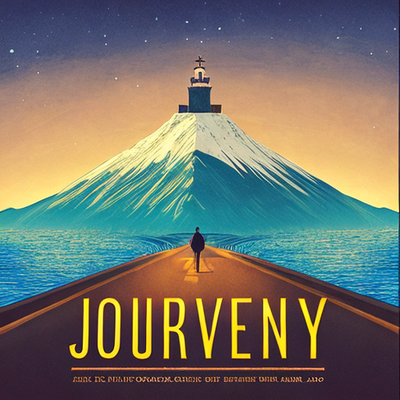

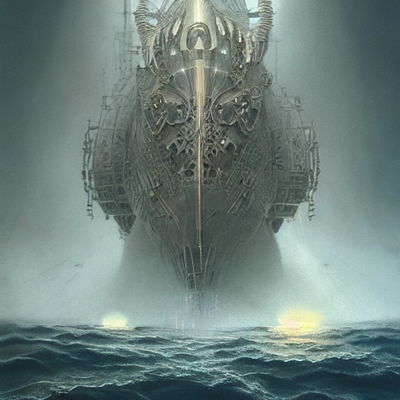
In the initial phase of the hero's journey, the "Call to Adventure," the protagonist is summoned from their ordinary world into an unfamiliar one. The stories of history's great explorers resonate strongly with this phase. Akin to heroes, explorers often embark on their journeys as a response to a deep, inborn yearning to uncover the world's hidden corners.
Portuguese explorer Vasco da Gama, for example, heeded the call for adventure when he embarked on his pioneering journey around the Cape of Good Hope. His mission was not just to seek an oceanic route to the East but also to fulfill his profound curiosity about unknown lands and cultures. Similarly, the allure of the New World called Christopher Columbus away from his mundane life, setting the stage for his voyage that would reshape the world's geographical and historical narratives.
In the "Trials and Triumphs" phase of the hero's journey, the protagonist faces numerous challenges that test their mettle. Unchartered territories, hostile climates, and unfamiliar cultures were just some of the many trials faced by explorers, pushing their endurance to the limit.
Take Ferdinand Magellan's circumnavigation of the globe as an example. The expedition faced storms, mutinies, starvation, and deadly conflicts with indigenous peoples. Nevertheless, the journey – completed by his remaining crew after his death – ultimately proved that the world was indeed round, a discovery that irrevocably expanded humanity’s understanding of the earth.
In the final phase of the hero's journey, "The Return," the hero brings back the 'elixir' – the knowledge or treasure gained from the adventure – to their original world. In the context of exploration, this 'elixir' often took the form of newfound lands, trade routes, cultures, flora, and fauna, offering fresh perspectives on the world's interconnectedness.
Marco Polo's voyage to the Mongol Empire, for instance, led to revelations about the world beyond Europe that few could fathom. His return home, laden with tales of the riches, customs, and innovations of the East, dramatically shifted European perspectives, fuelling further exploration and, eventually, the advent of globalization.
The stories of these explorers remain emblematic of the hero's journey, illuminating the human condition and our shared quest for understanding and connection. Each explorer's voyage mirrors the hero’s journey, a reflection of humanity's ceaseless pursuit of knowledge. Their stories, filled with adversity, curiosity, discovery, and transformation, are chapters in the broader narrative of our species.
The hero’s journey does not just illustrate the intrepid explorations that have shaped our world; it also exemplifies our innate desire to reach beyond our grasp, explore the unknown, and bring back something that enriches our collective existence. Voyages of exploration are indeed the story of ourselves: a testament to our curiosity, our resilience, and our enduring pursuit of knowledge.
In conclusion, the hero's journey and the voyages of exploration are interwoven tapestries of our shared human narrative. They remind us that exploration – whether physical, intellectual, or spiritual – is an innate and essential part of our being. It is through this lens that we can appreciate how much these historical explorations have contributed to the world we know today, and perhaps, even gain insights into the uncharted territories of our future.
Se nedanför mina poster om upptäcktsresarna Marco Polo och Alexander von Humboldt i min skrivarverkstad! Men framför allt min historia "Whale-Eye's Odyssey: The Antarctic Enigma" HISTORICAL EXPLORATION FICTION här nedanför!
--
SHORT STORY EXPLORATION!
Pytheus the Explorer : Magic and Myth
In the ancient city of Massalia, where the Mediterranean's azure waves met the bustling harbor, lived Pytheus, a renowned Greek explorer and scientist. His adventurous spirit and insatiable curiosity led him far beyond the known boundaries of his world. In 325 B.C., Pytheus embarked on a journey that would etch his name into the annals of history, sailing northward to the mist-shrouded isles of Britannia and beyond.
Pytheus was the first to christen the distant land as Britannia and to document his encounters with the enigmatic regions of Scandinavia. His odyssey, fraught with peril and wonder, took him to places thought to exist only in myth and legend. One such mythical land was the Isle of Man, a mystical island nestled in the Irish Sea, between Britannia and Ireland. After navigating through the treacherous waters of the Irish Sea, Pytheus’s Greek cargo ship found safe harbor on the shores of this enchanted isle.
Unlike any other island, the Isle of Man was steeped in magic and lore, home to fairies and mythical beings from across Britannia. Here, in a grand castle at the island's heart, resided Merlin, the legendary wizard of Arthurian romance and sagas. Known for his wisdom and magical prowess, Merlin orchestrated quests for heroes and adventurers, sending them forth on journeys that would shape the fate of their world.
As Pytheus stepped onto the shores of the Isle of Man, he was greeted by a magnificent creature from Greek mythology: Hippocampus, a sea-horse with the body of a horse and the tail of a fish, known for drawing Poseidon’s chariot across the oceans. Today, however, Hippocampus was tasked with transporting Pytheus not through the sea but through the skies to Merlin’s castle.
Pytheus, still bewildered by the surreal nature of his journey, mounted Hippocampus. The mythical steed soared into the sky, its fish-tail propelling them through the air. From this aerial vantage, Pytheus beheld the verdant landscapes of the Isle of Man, a stark contrast to the arid expanses of his homeland. They soon arrived at the grand castle, its towers piercing the rain-soaked sky.
Landing before the castle gates, Pytheus was met by two legendary figures, King Arthur and Sir Lancelot, renowned knights of the Round Table. King Arthur, with his sword Excalibur gleaming, welcomed the astonished Greek explorer.
“Welcome to the Isle of Man and Merlin’s Castle,” Arthur declared. “Here, magic and adventure are ever-present. I shall grant you passage to meet Merlin, my trusted advisor and the master of this realm.”
With a touch of Excalibur on Pytheus’s shoulder, Arthur initiated him into the castle. Inside, Pytheus marveled at the intricate mosaics depicting scenes from British mythology. The castle was abuzz with activity, fairies, elves, dwarves, and leprechauns bustling about their tasks. Pytheus ascended a grand staircase leading to a glittering door adorned with the symbol of Sleipnir, Odin's eight-legged horse, signifying the shamanic journey and the cosmic axis.
Opening the door, Pytheus entered Merlin’s chamber. Seated on a silver throne, the enigmatic wizard welcomed him.
“Greetings, Pytheus of Massalia,” Merlin intoned. “I have observed your remarkable journey from the Mediterranean to these northern lands. The gods themselves have spoken of your adventures. I revealed the Isle of Man to you so that you might come to me. As a guardian of all that is magical, I now send you on a quest to the land of Thule, known today as Iceland. There, you will encounter figures from Norse mythology. To aid your journey, I bestow upon you Skidbladnir, a magical ship that sails the skies, crafted from the fingernails and toenails of the dead. It will carry you swiftly through the stormy seas.”
Merlin, pausing to take a puff from his pipe filled with magical herbs, led Pytheus to a balcony where Skidbladnir floated, ready to embark.
“Good luck, and greet the fairy folk of Iceland for me!” Merlin said with a twinkle in his eye.
Pytheus boarded Skidbladnir, and the ship took flight with breathtaking speed. Soon, the vast expanse of the ocean gave way to the sight of Iceland’s rugged coastlines. But as he neared the island, fiery eruptions of magma and smoke erupted from a mountain. Pytheus thought it must be a dragon, perhaps the fearsome Fafnir of Norse legend.
As the ship descended, Pytheus landed near the smoldering volcano. Suddenly, from its fiery depths, a dragon emerged. It was indeed Fafnir, wearing the Helm of Awe, a symbol of immense power used by Viking warriors.
Terrified, Pytheus braced himself as Fafnir roared. But as he reached for his back, he found King Arthur’s sword, Excalibur. With renewed courage, he engaged the dragon in a fierce battle that raged across the Icelandic landscape. After months of relentless combat, Pytheus finally struck a vulnerable spot, slaying Fafnir with Excalibur.
Victorious, Pytheus was invited to Yggdrasil, the World Tree, by the Norse gods. There, he was honored with a golden apple from Zeus himself, a symbol of his heroic deeds. Taking a bite, Pytheus found himself back in Greece, now immortalized as a hero-god among the Greek pantheon.
Pytheus's journey had come full circle, from the bustling port of Massalia to the mythical realms of Britannia and beyond. His meeting with Merlin and the subsequent adventures underscored the timeless importance of mythology and the awe it inspires. Thus, the legend of Pytheus the Greek began, a tale of adventure and discovery, celebrated by gods and mortals alike.
Beware, and may the tale of Pytheus inspire awe in all who hear it!
--
Epilogue: The Magic of the Way of Story and Exploration
The journey of Pytheus the Greek had become legendary, a tale that transcended time and space, echoing through the annals of history. His adventures, marked by encounters with mythical beings and divine interventions, served as a testament to the boundless spirit of exploration and the magic of storytelling.
Pytheus, now immortalized among the gods, often reflected on his extraordinary journey. He understood that his travels were not just about discovering new lands or encountering fantastical creatures; they were about the profound magic that lies within the way of story and exploration. This magic, he realized, was a force that connected people, cultures, and worlds, weaving a tapestry of shared human experience.
From the bustling streets of Massalia to the mystical Isle of Man, and the fiery landscapes of Thule, each step of Pytheus’s journey was a chapter in a grand narrative that spanned generations. The tales of his exploits were told and retold around campfires, in grand halls, and in the quiet corners of libraries. They inspired others to embark on their own adventures, to seek out the unknown, and to embrace the mysteries of the world with courage and wonder.
In the celestial realm, Pytheus often gazed upon the world he once traversed. He saw children wide-eyed with wonder, listening to the stories of his encounters with Merlin, Hippocampus, and Fafnir. He watched as explorers set sail into uncharted waters, their hearts filled with the same insatiable curiosity that had driven him. The spirit of exploration was alive and well, a testament to the enduring magic of storytelling.
The gods themselves were moved by Pytheus's legacy. They understood that the true magic of the way of story and exploration lay in its ability to transform, to enlighten, and to connect. It was a magic that transcended the physical and the tangible, reaching into the realms of the heart and the soul. It was the magic of imagination, of dreams given wings, and of the endless possibilities that lay just beyond the horizon.
As time marched on, the legend of Pytheus continued to inspire. In every corner of the world, from the sun-drenched coasts of the Mediterranean to the icy reaches of the north, his name was synonymous with adventure and discovery. He had become a symbol of the eternal quest for knowledge, a beacon for those who dared to dream and explore.
In his divine abode, Pytheus often smiled, knowing that his story was but one thread in the vast tapestry of human experience. He was content, for he had played his part in the grand narrative of existence. The magic of his journey, the way of story and exploration, was eternal, forever guiding and inspiring those who followed in his footsteps.
And so, the legend of Pytheus the Greek, the immortal explorer, endured, a shining testament to the boundless magic that lies in the way of story and exploration. It was a magic that would never fade, forever igniting the flames of curiosity and wonder in the hearts of adventurers and storytellers for generations to come.
May the spirit of Pytheus guide you on your own journeys, and may the magic of storytelling forever light your path.
HISTORICAL FACT-FICTION STORIES
Holographic Interconnection Gnosis - LIFE AND LITERATURE Stories We Tell Ourselves About The Facts
Sands of Revelation: Atlantis, Egypt, and the Cosmic Connection (FAN FICTION)
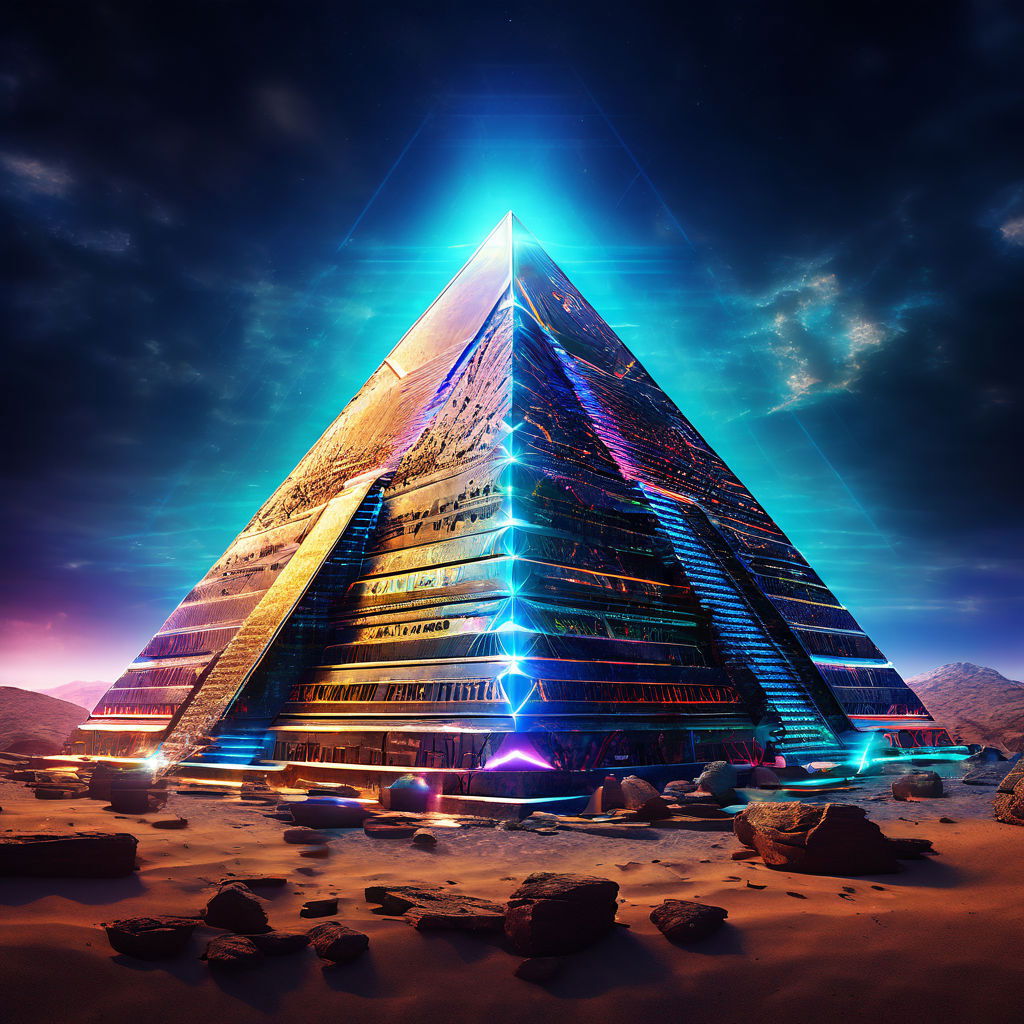
Atlantis, the legendary City-ship of the Ancients, drifted through the vast expanse of space, its gleaming spires cutting through the cosmic void like a beacon of lost knowledge and forgotten wonders. Built millions of years ago by a race far more advanced than any known to modern humans, Atlantis was a marvel of technology and magic, a bastion of ancient wisdom and mysterious power.
At its heart lay the Stargate, a portal capable of transporting people and objects across unimaginable distances to other worlds and galaxies. And it was through this Stargate that Colonel John Sheppard found himself embarked on a journey beyond time and space, a journey that would unravel the secrets of ancient civilizations and connect the threads of history in ways he could never have imagined.
As Sheppard stepped through the shimmering gateway, he felt a strange sensation wash over him, like the embrace of unseen forces guiding him through the fabric of reality itself. And when he emerged on the other side, he found himself not in some distant corner of the universe, but in the midst of ancient Egypt, a land of gods and pharaohs, where the sands whispered secrets of ages long past.
But it was not the towering pyramids or the majestic temples that caught Sheppard's attention. No, it was something far more profound, something that resonated deep within his soul. For as he gazed upon the ancient wonders of Egypt, he felt a presence stirring within him, a presence that spoke of gods and destiny, of powers beyond mortal comprehension.
And then, in a flash of blinding light, Sheppard was granted a vision unlike any he had ever experienced. Before him stood Isis and Osiris, the divine rulers of ancient Egypt, their radiance illuminating the darkness of the ages with a brilliance that defied description.
"We have been expecting you, John Sheppard," Isis spoke, her voice echoing with the wisdom of the ages. "You have been chosen to bear witness to the truth, to uncover the secrets that lie buried beneath the sands of time."
And as Sheppard listened, Isis and Osiris revealed to him the truth that had been concealed for millennia, the truth that would shake the foundations of human understanding and reshape the course of history itself.
"It is true," Osiris declared, his voice resonating with the power of the cosmos. "The ancient pyramids were not built by human hands alone. They were the work of beings not of this world, beings who came from the stars to impart their knowledge and wisdom to humanity."
Sheppard's mind reeled at the revelation, his thoughts swirling with disbelief and wonder. Could it be true? Could the ancient legends and myths of Atlantis and extraterrestrial visitors hold the key to unlocking the mysteries of the past?
As Sheppard pondered these questions, Isis and Osiris bestowed upon him a gift, a relic of untold power imbued with the essence of the gods themselves. With this artifact in hand, Sheppard would embark on a quest to uncover the truth of Atlantis and its connection to humanity's ancient origins.
And so, guided by the wisdom of the gods and fueled by the fire of discovery, Colonel John Sheppard set forth on a journey that would take him to the farthest reaches of the galaxy and beyond, where the secrets of Atlantis and the mysteries of the universe awaited him, beckoning him ever onward in his quest for truth and enlightenment.
--
BEGINNING OF FACT STORIES
Exploring the American Frontier: Lewis and Clark's Odyssey
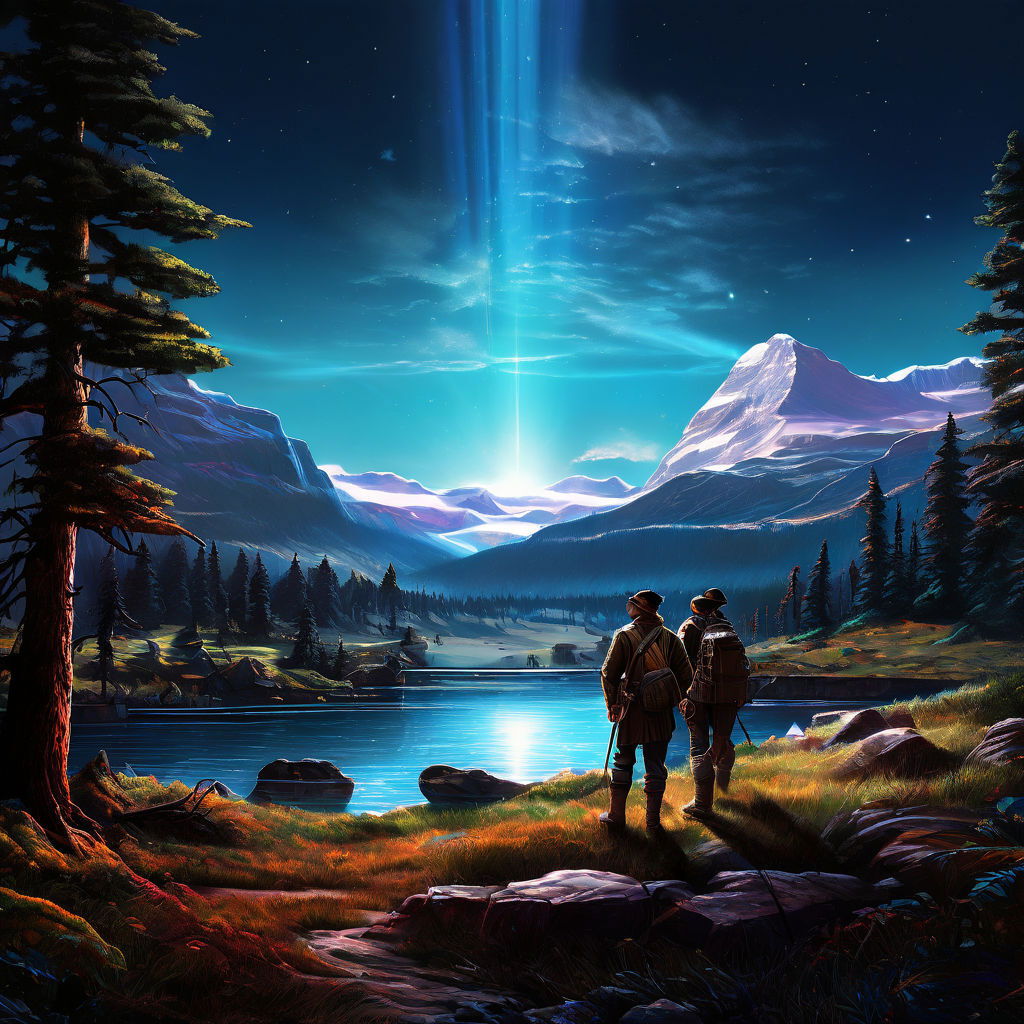
In the early 19th century, the vast expanse of the American West lay shrouded in mystery and uncertainty. It was a land of untamed wilderness, where towering mountains and winding rivers whispered secrets known only to the indigenous peoples who called it home. It was into this unknown realm that Meriwether Lewis and William Clark set forth on their historic expedition, driven by a spirit of adventure and a quest for discovery.
As the two explorers and their intrepid team ventured deeper into uncharted territory, they encountered challenges that tested their courage and resolve. They navigated treacherous rapids and dense forests, their trusty canoes carving a path through the wilderness with each stroke of the paddle. Along the way, they mapped the unexplored land with meticulous precision, charting the course of mighty rivers and towering mountains that rose like sentinels against the sky.
But it was not only the natural wonders of the West that captured Lewis and Clark's attention. As they journeyed deeper into the heart of the continent, they encountered Native American tribes whose way of life was as diverse as the landscape itself. From the proud warriors of the Sioux Nation to the nomadic hunters of the Shoshone, each tribe welcomed the explorers with a mix of curiosity and caution, sharing their knowledge of the land and its inhabitants with open hearts and minds.
As Lewis and Clark traveled further west, their journals filled with tales of wonder and amazement. They documented strange and exotic plants and animals never before seen by European eyes, marveling at the diversity and abundance of life that thrived in the untamed wilderness. But perhaps most importantly, they brought back stories—tales of adventure and discovery that ignited the imaginations of their fellow Americans and fueled the dreams of those who longed to explore the vast unknown beyond the horizon.
When Lewis and Clark finally returned from their epic journey, they brought with them more than just maps and scientific observations. They brought back a sense of wonder and awe, a deep appreciation for the beauty and majesty of the American West, and a newfound respect for the indigenous peoples who had called it home for countless generations.
Their expedition had not only opened up new frontiers for exploration and settlement but had also sparked a sense of adventure and exploration that would shape the course of American history for generations to come. And as their stories spread far and wide, they inspired countless others to follow in their footsteps, to venture forth into the unknown and discover the wonders that lay waiting beyond the horizon.
--
Guardians of Miklagard: The Viking Varangians of Constantinople

In the days of old, when the world was still young and the seas whispered tales of adventure and glory, there lived a people feared and revered across the lands and seas—the Vikings. These fierce warriors of the North sailed their longships across vast oceans and treacherous waters, seeking fortune and fame in distant lands. And it was their insatiable thirst for adventure that led them to the fabled city of Miklagard—Constantinople.
It was said that Miklagard, the Great City, was a place of wonder and splendor, a jewel of the Byzantine Empire that shimmered like a beacon of civilization in the heart of the Eastern world. And for the Vikings, whose hunger for riches and conquest knew no bounds, Constantinople beckoned like a siren's call, promising untold riches and glory to those bold enough to seek it.
Among these fearless adventurers were the Varangians, the elite warriors who served as the emperor's guard, their reputation as fierce and capable fighters earning them a place of honor in the halls of power. Clad in armor of iron and wielding swords of steel, the Varangians stood as a bulwark against the enemies of the empire, their loyalty to the emperor unwavering and their courage unyielding.
But it was not only on the battlefield that the Vikings left their mark upon Miklagard. For in the quiet moments between battles, they wandered the streets of Constantinople, marveling at the grandeur of its palaces and the beauty of its churches. And it was here, amidst the ancient stones of the Hagia Sophia, that they left their mark for all time—a testament to their presence in this legendary city.
For etched upon the walls of the Hagia Sophia were runic graffiti, a silent reminder of the Vikings who had journeyed from the farthest reaches of the North to stand guard over the empire. And as the centuries passed and the world changed around them, these ancient runes remained, a link to a time long gone but never forgotten.
And so, the Vikings of old forged a bond with Miklagard, a bond that would endure through the ages as a testament to their courage and their spirit of adventure. And though they may have sailed away from its shores, their legacy lived on in the annals of history, forever intertwined with the story of Constantinople—the Great City at the crossroads of the world.
--
Sails of Destiny: Zheng He's Epic Maritime Adventures

In the early 15th century, during the illustrious reign of the Yongle Emperor of the Ming Dynasty, a remarkable figure emerged from the bustling ports of China—a man whose name would become synonymous with exploration and maritime adventure. His name was Zheng He, a eunuch admiral and skilled navigator, whose leadership would forever alter the course of history.
Zheng He's story began in the year 1405, when the Yongle Emperor entrusted him with a monumental task—to lead a fleet of ships on a series of voyages that would span the vast expanse of the Indian Ocean and beyond. These were no ordinary ships; they were massive, towering giants of the sea, the largest ever built in the world at that time, each one a marvel of Chinese engineering and craftsmanship.
With his fleet of treasure ships, as they came to be known, Zheng He set sail from the ports of Nanjing, embarking on a journey that would take him to the farthest reaches of the known world. From the South China Sea to the Arabian Sea, from the Red Sea to the East coast of Africa, Zheng He and his crew charted a course through uncharted waters, their sails billowing in the wind as they navigated the vast and treacherous oceans.
But Zheng He's voyages were not merely about exploration; they were also a demonstration of Chinese excellence in shipbuilding and navigation. As his fleet sailed from port to port, they carried with them the riches of the Ming Dynasty—silk, porcelain, and other coveted goods that served as a testament to China's wealth and power.
Along the way, Zheng He forged diplomatic ties with the rulers of the lands he visited, exchanging gifts and establishing trade agreements that would benefit China for years to come. He also spread the word of the Yongle Emperor's benevolence, showcasing the might and majesty of the Ming Dynasty to all who encountered him.
But perhaps most importantly, Zheng He's voyages paved the way for cultural exchange and understanding between China and the nations of the Indian Ocean. Through his interactions with foreign peoples and cultures, he fostered a spirit of cooperation and friendship that transcended borders and united distant lands in a shared quest for knowledge and prosperity.
As Zheng He's fleet returned to China after each voyage, they brought back tales of wonder and adventure, their journals filled with details of the lands they had visited and the peoples they had encountered. And though Zheng He himself would never see the fruits of his labors—he perished at sea during his final voyage—his legacy lived on in the hearts and minds of the Chinese people, who remembered him as a hero and a pioneer of exploration.
Today, Zheng He's voyages are celebrated as a testament to the indomitable spirit of human curiosity and the boundless potential of maritime exploration. And as China continues to chart its course on the world stage, the legacy of Zheng He serves as a reminder of the importance of bridging cultures and building bridges of understanding in an ever-changing world.
--
Exploring the Multiverse of Historical Fiction: Unveiling the Wonders of Holographic Interconnection Gnosis

In the vast tapestry of human history, there are countless stories waiting to be told—tales of triumph and tragedy, of love and loss, of heroes and villains who have shaped the course of civilization. Yet, what if there existed a way to transcend the boundaries of time and space, to weave together disparate threads of history into a single, interconnected narrative? Welcome to the world of historical fiction, where the wonders of holographic interconnection gnosis (HIG) unlock the secrets of the multiverse.
Historical fiction has long been a beloved genre, offering readers a window into the past and allowing them to experience events and cultures long gone. But what sets HIG-infused historical fiction apart is its ability to transcend the linear constraints of time and explore the interconnectedness of all things. Drawing inspiration from the holographic principle—a theory that suggests the universe is a vast, interconnected web of information—HIG allows writers to envision history not as a series of isolated events, but as a cohesive whole, where every action ripples across time and space.
At the heart of HIG lies the concept of holographic interconnection, which posits that every moment in history is linked to every other moment, forming a seamless tapestry of cause and effect. In the realm of historical fiction, this means that characters and events from different time periods can intersect and interact in unexpected ways, creating a rich and immersive narrative experience. Imagine a Roman centurion crossing paths with a samurai warrior, or a medieval alchemist sharing knowledge with a Renaissance inventor—the possibilities are as limitless as the imagination itself.
But HIG is more than just a storytelling device; it is a philosophy that invites writers and readers alike to contemplate the nature of reality and our place within it. By exploring the interconnectedness of history, HIG challenges us to rethink our understanding of time and space, and to consider the ways in which our actions today echo through the corridors of time. In doing so, it offers a glimpse into the deeper mysteries of existence and invites us to contemplate the interconnectedness of all things.
In the hands of skilled writers, HIG-infused historical fiction becomes a journey of exploration and discovery—a voyage through the multiverse of human experience. Through vivid imagery and evocative prose, readers are transported to distant lands and distant times, where they witness the triumphs and tribulations of characters whose lives are bound together by the threads of history. And as they turn the pages, they too become participants in the grand tapestry of existence, connecting with the past in ways they never thought possible.
In the end, exploring the multiverse of historical fiction through the lens of holographic interconnection gnosis is not just an exercise in imagination—it is a journey of enlightenment and understanding. It challenges us to see history not as a series of isolated events, but as a continuous and interconnected narrative—one that transcends the boundaries of time and space and reminds us of the timeless truths that bind us all together. So, dear reader, let us embark on this journey together, and unveil the wonders that await in the multiverse of historical fiction.
In the end, the possibilities of HIG in historical fiction are as boundless as the human imagination itself. From ancient civilizations to distant futures, from epic battles to intimate moments of love and loss, HIG offers writers and readers alike the chance to explore the infinite complexities of the human experience. So let us embark on this journey together, dear reader, and discover the timeless tales that await in the world of holographic interconnection gnosis.
--
St. Brendan's Odyssey: A Journey of Faith and Discovery
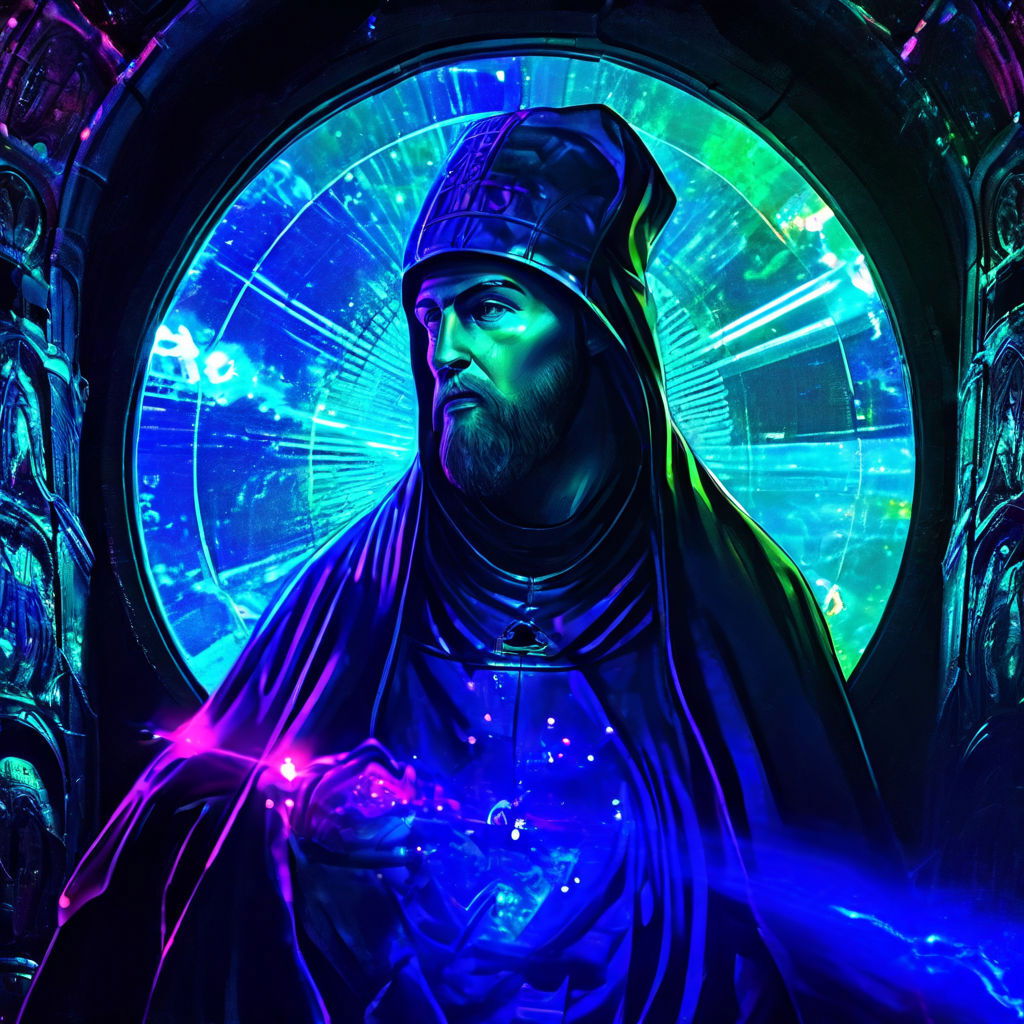
In the emerald isle of Ireland, nestled amidst the rolling hills and misty shores, there lived a man whose name would be whispered in awe for centuries to come—St. Brendan, the intrepid Irish monk whose legendary voyages captured the imaginations of all who heard his tales.
Born into a world of faith and uncertainty, St. Brendan was drawn to the monastic life from an early age, seeking solace and enlightenment amidst the chaos of the world. And so, he joined a monastery, dedicating his life to prayer, meditation, and the pursuit of spiritual truth.
But it was not long before St. Brendan felt the call of the sea stirring within him—a call that spoke of distant lands and untold wonders waiting to be discovered. Guided by a deep sense of faith and a desire to seek God's presence in all things, St. Brendan embarked on a series of legendary voyages that would take him to the farthest reaches of the Atlantic Ocean and beyond.
With a heart full of courage and a boat of humble leather, St. Brendan set sail from the shores of Ireland, his eyes fixed on the horizon and his soul ablaze with the promise of adventure. And as he journeyed across the vast expanse of the ocean, he encountered wonders beyond imagination—floating islands inhabited by strange creatures, towering cliffs of crystal that shimmered in the sunlight, and seas of fire that raged with a fierce and terrible beauty.
But amidst the marvels of the natural world, St. Brendan also found moments of quiet reflection and spiritual revelation. In the solitude of the open sea, he communed with God, seeking His guidance and wisdom in the midst of the vastness of creation. And though the journey was fraught with danger and uncertainty, St. Brendan's faith never wavered, for he knew that he was guided by a higher power—a power that transcended the limits of mortal understanding.
As the years passed and St. Brendan's legend grew, tales of his miraculous voyages spread far and wide, inspiring generations of adventurers and explorers to seek their own paths across the sea. And though the specifics of his journeys may be lost to time, the spirit of St. Brendan lives on in the hearts of all who dare to dream of distant shores and uncharted waters.
For St. Brendan was more than just a monk—he was a pioneer, a visionary, and a testament to the enduring power of faith and courage in the face of adversity. And as his story continues to echo through the annals of history, it serves as a reminder that the greatest adventures are often found in the pursuit of the divine.
--
The Martyr President: Abraham Lincoln and the American Civil War
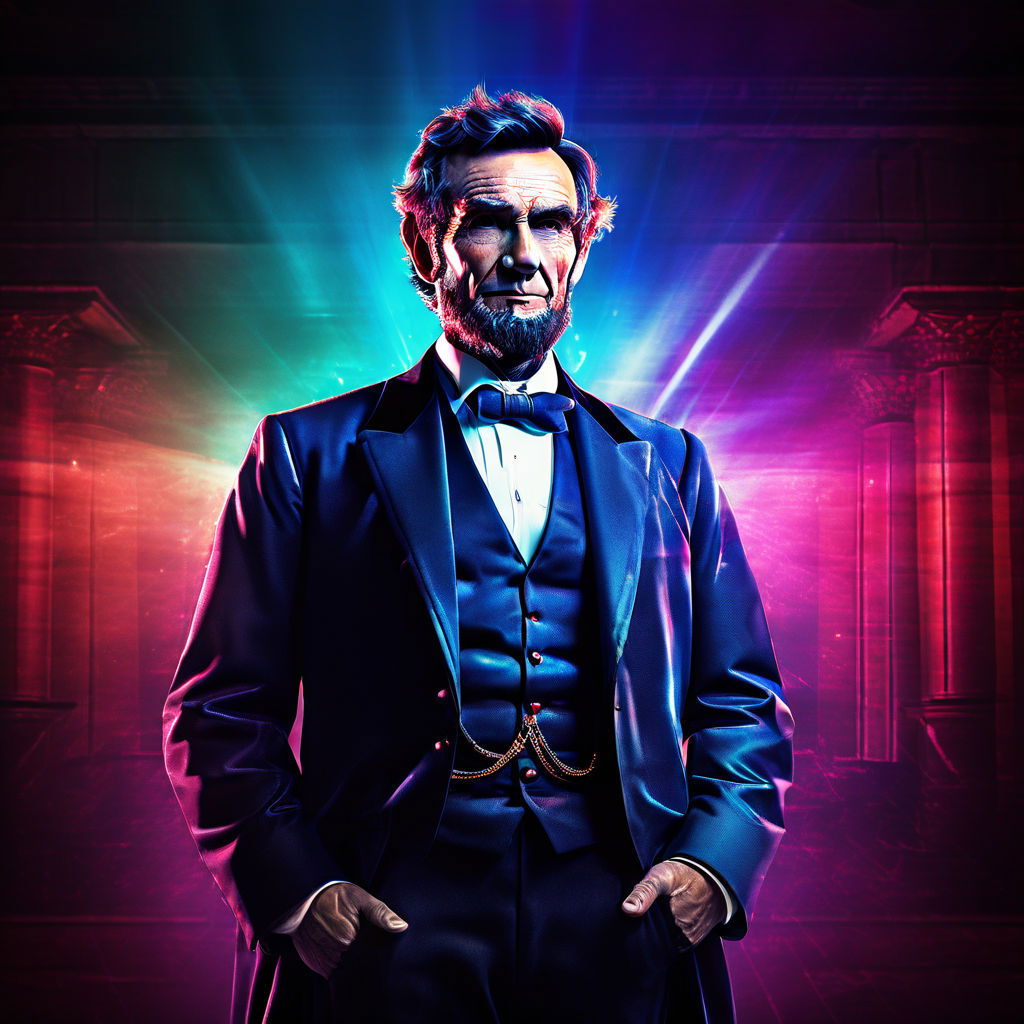
In the annals of American history, few events loom as large as the Civil War—a conflict that tore the nation apart and tested the very foundations of its democracy. At the heart of this tumultuous period stood Abraham Lincoln, the 16th President of the United States, whose steadfast leadership and unwavering commitment to liberty would forever alter the course of history.
Born into humble beginnings on the frontier of Kentucky, Lincoln's journey to the White House was one marked by hardship and perseverance. With little formal education, he honed his intellect and sharpened his wit through self-study, eventually earning a reputation as a skilled lawyer and impassioned orator.
But it was Lincoln's moral compass and deep-seated belief in the equality of all men that set him apart from his contemporaries. As the nation teetered on the brink of civil war over the issue of slavery, Lincoln emerged as a beacon of hope and reason, advocating for unity and reconciliation in the face of division and discord.
When the Confederate States seceded from the Union and hostilities erupted into open conflict, Lincoln faced the greatest challenge of his presidency. With the fate of the nation hanging in the balance, he navigated the treacherous waters of war with wisdom and resolve, guiding the Union through its darkest hour with a steady hand and a clear vision of the future.
But it was Lincoln's bold decision to issue the Emancipation Proclamation that would forever cement his place in history. By declaring forever free those slaves within the Confederacy, Lincoln struck a decisive blow against the institution of slavery and laid the groundwork for its eventual abolition throughout the land.
Yet, even as victory seemed within reach, tragedy struck with the assassination of Lincoln at the hands of John Wilkes Booth—a cowardly act that robbed the nation of its greatest champion for liberty and justice. Lincoln's untimely death sent shockwaves across the country, transforming him into a martyr to the cause of freedom and equality.
In the years that followed, Lincoln's legacy lived on in the hearts and minds of the American people. His words and deeds inspired generations of Americans to strive for a more perfect union, and his enduring legacy served as a beacon of hope for all who sought to uphold the principles of democracy and equality.
Today, Abraham Lincoln is widely regarded as one of the greatest presidents in U.S. history—a towering figure whose moral courage and unwavering leadership helped to shape the destiny of a nation. And as Americans continue to grapple with the legacy of the Civil War, Lincoln's words and deeds serve as a reminder of the enduring power of liberty, justice, and the promise of a more perfect union.
--
Crusaders of Faith: The Saga of the Templar Knights
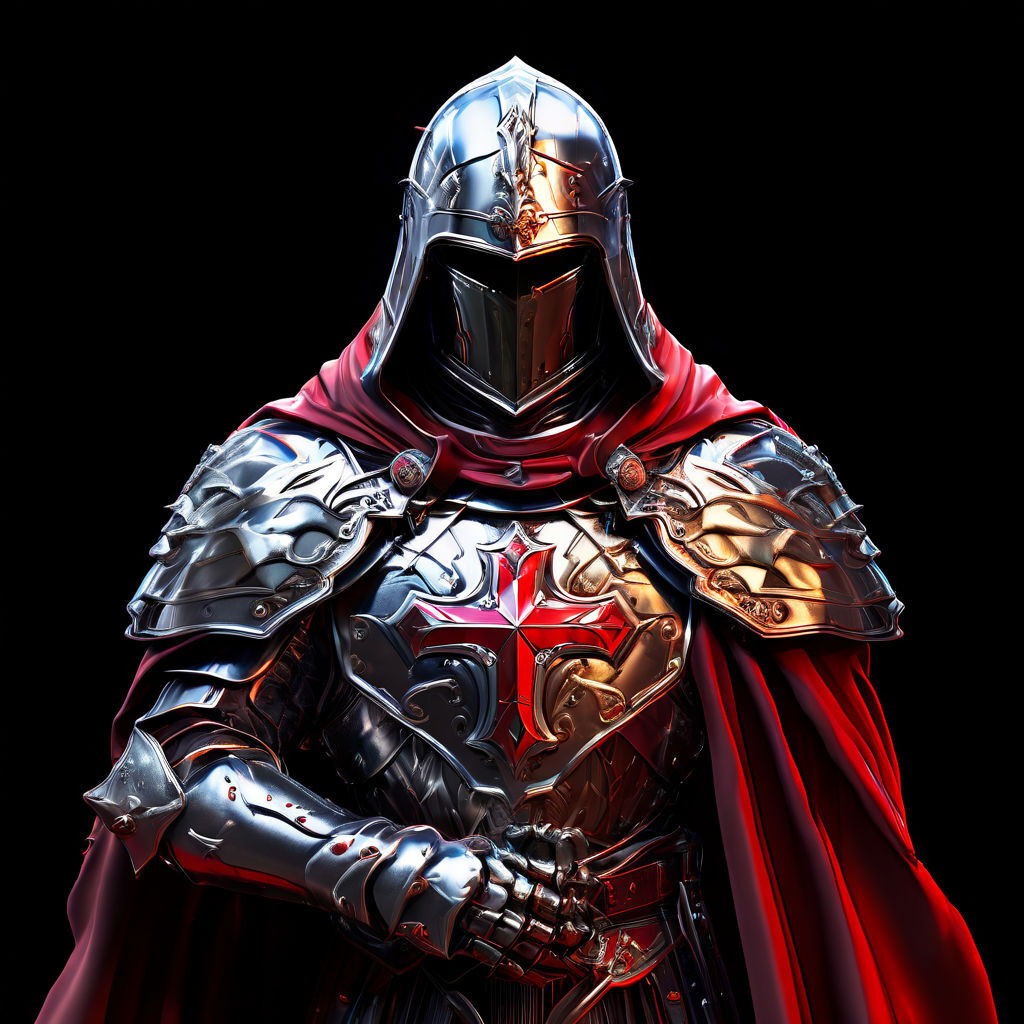
In the heart of medieval Europe, amidst the turmoil of the Crusades and the fervor of religious zeal, there existed an order of knights whose name struck fear into the hearts of their enemies and inspired awe in the minds of believers—the Templar Knights. These holy warriors, sworn to defend the Christian faith and protect pilgrims journeying to the Holy Land, stood as a bulwark against the forces of darkness and a beacon of hope in a world torn apart by conflict.
The origins of the Templar Knights can be traced back to the early 12th century, when a group of knights led by Hugh de Payens and Geoffrey of Saint-Omer pledged themselves to the service of God and the defense of Christian pilgrims traveling to Jerusalem. Recognizing the need for a dedicated order of warriors to safeguard the holy sites of Christianity, Pope Innocent II granted the knights official recognition in 1129, thus establishing the Order of the Temple.
Armed with a fierce sense of duty and a code of honor that demanded unwavering loyalty and bravery, the Templar Knights soon became one of the wealthiest and most powerful military orders in Western Christianity. With the blessing of the Church and the support of kings and nobles across Europe, they embarked on a crusade to protect the Holy Land from the forces of Islam and reclaim it for Christendom.
Clad in white mantles emblazoned with the red cross of the Templars, these knights rode into battle with a fervor unmatched by any other. From the fields of Palestine to the sands of Egypt, they fought with valor and determination, earning a reputation as formidable warriors and devout defenders of the faith.
But it was not only on the battlefield that the Templar Knights made their mark. In addition to their martial prowess, they were also skilled administrators, diplomats, and financiers, overseeing vast estates and managing the flow of wealth across Europe. Their network of castles, fortresses, and commanderies stretched from the shores of the Mediterranean to the forests of France, serving as a testament to their power and influence.
Yet, despite their wealth and prestige, the Templar Knights were not immune to the winds of change that swept across Europe in the 14th century. Accusations of heresy and corruption began to surface, fueled by jealousy and greed, and in 1312, Pope Clement V disbanded the order and ordered the arrest of its members.
In the years that followed, the Templar Knights faded into obscurity, their once-mighty order reduced to little more than a memory. Yet, their legacy endured, inspiring countless legends and tales of heroism that echoed through the ages. And though their time on the stage of history was brief, the Templar Knights left an indelible mark on the world, forever remembered as Christianity's holy warriors and guardians of the faith.
END OF FACT STORIES
--
"Faction" refers to a literary genre that blends factual elements of history or real events with fictionalized narrative techniques. It combines elements of both fiction and non-fiction to create a narrative that feels authentic while also allowing for imaginative storytelling within the framework of historical or real-world events. HISTORICAL FACT-FICTION! Holographic Interconnection Gnosis.
'We are all storytellers. We live in a network of stories. There isn't a stronger connection between people than storytelling" - Jimmy Neil Smith
“It's like everyone tells a story about themselves inside their own head. Always. All the time. That story makes you what you are. We build ourselves out of that story.” - Patrick Rothfuss
“We tell ourselves stories in order to live.” - Joan Didion
--
Warriors of the Woods: The Tale of Skåne's Liberation

In the deep, silent greenery of the Göringe Forest, where the ancient roots of the trees could tell stories from times when gods still roamed the earth, our tale begins. It was a time of conflict and strife, where the verdant meadows of Skåne involuntarily became the battleground. It was during these tumultuous times, in the heart of the 17th century, that the Snapphane War raged between the Skåne guerrilla warriors and the soldiers of the Swedish crown. In this landscape of uncertainty and courage, we meet two young heroes, Casparas Due and Bartolomeus Michelsen, whose fates would intertwine with the winds of history.
Casparas and Bartolomeus, raised in the shadow of the Skåne beech forests, had learned from a young age the art of moving silently and unseen among the deep shadows of the trees. Their hearts burned for Skåne's cause and freedom, and they had devoted their young lives to fighting for the independence of their homeland. With rifles in hand, ready to defend their land against the Swedish occupiers, they often felt alone against an overwhelming enemy.
But their fate would change on a misty morning when the fateful meeting with the Norse god of war, Tyr, took place. Tyr, a god forgotten by time but not by the hearts of heroes, appeared to Casparas and Bartolomeus in the depths of the Göringe Forest. His form was both frightening and majestic, and when he spoke, it was as if the very spirit of the forest vibrated with his presence. Tyr declared that he had come to aid the Skåne guerrilla warriors in their quest for independence. He saw in them the same courage and strength as the mythological heroes of old, and he was determined to stand by their side.
For Casparas and Bartolomeus, this meeting meant not only a sign of the gods' support but also a reminder of the great responsibility that rested on their shoulders. They knew that their struggle was not just their own but that of all Skåne. With Tyr at their side, they felt a new strength and determination. They were ready to challenge their fate and write their own saga, a saga of freedom, courage, and brotherhood.
And so, our tale begins, in the shadow of the ancient trees of the Göringe Forest, where two young heroes, blessed by a god, stand ready to defend their homeland and fight for Skåne's freedom. The story of Casparas Due and Bartolomeus Michelsen is a tale of bravery, sacrifice, and the pursuit of justice, a saga that will forever echo in the winds of Skåne.
HISTORICAL nordic countries fICTION
SPECIAL THEME HISTORICAL NORDIC EXPLORATION BY TEGEDAO : Holographic Interconnection Gnosis (HIG)
UNFOLDING STORY : SKRIVARVERKSTAD
UTFORSKANDE I SKRIVANDE DÄR LIFE AND LITERATURE TEGEDAO ÄR FÖRFATTAREN
This story follows Scotland Yard agent Arthur Shepherd as he investigates mysterious UFO sightings in Bonneybridge, near Scotland's Falkirk Triangle. Intrigued by local legends and armed with top-secret files, Arthur delves into ancient myths linked to the enigmatic Stone of Destiny. His journey leads him to the Isle of Man, where he uncovers a portal bridging our world with other dimensions. As Arthur navigates a path filled with celestial phenomena and historical secrets, he must protect these discoveries from misuse while grappling with their profound implications on human understanding and history.
Läs merThis article explores the enduring fascination with airships and spaceships from ancient myths like the Norse Skidbladnir and Ezekiel's chariots to modern narratives such as the Millennium Falcon and UFOs. It examines how these vehicles symbolize human aspirations, divine intervention, and technological marvels, reflecting our deepest desires for exploration and transcendence. It discusses how these vessels represent divine power, technological wonder, and the quest for exploration and understanding, highlighting their role in bridging the mythical past with the speculative future.
Läs merThis story follows Flemming Riex, a young man from Christiania, Copenhagen, who embarks on a transformative journey to Kingston, Jamaica, to witness Bob Marley's One Love concert in 1978. Moved by the reggae music and a profound psychedelic experience involving DMT, Flemming undergoes a spiritual awakening, embracing the Rastafarian religion and its teachings of love, unity, and the divine connection to Jah. Returning to Copenhagen, Flemming integrates his newfound spirituality into his life, becoming a beacon of Rastafarian values in his community, and illustrating how music and faith can bridge worlds and transform lives.
Läs merThis story, set against the vibrant backdrop of Naples in the 1990s, follows the intertwined lives of four friends—Ignazio, Tommaso, Orenzio, and Alfonso—each charting a different path amidst the city's beauty and challenges. Their journey of friendship, dreams, and discovery unfolds in the shadow of soccer legend Diego Maradona, whose triumphs with Napoli inspire the city and its people. As Maradona's legacy casts a long shadow over Naples, the friends navigate their aspirations, struggles, and the bonds that tie them, ultimately finding their destinies intertwined with the spirit of their city and the unforgettable era of Maradona's reign.
Läs mer"Whale-Eye's Odyssey: The Antarctic Enigma" is a riveting work of historical exploration fiction set against the backdrop of the Heroic Age of Antarctic Exploration. This story follows the extraordinary journey of Ellis 'Whale-Eye' Clapham, a seasoned explorer renowned for his unique ability to spot whales from great distances. Tasked with leading a perilous expedition to the uncharted territories of Antarctica aboard the H.M.S. Odyssey, Ellis and his diverse crew of sailors and scientists embark on a voyage that transcends the boundaries of their physical world. As they delve deeper into the icy wilderness, they encounter the mythical Ningen, a creature that challenges their understanding of reality. This encounter leads Ellis to confront profound revelations about the holographic nature of the universe, blending elements of myth, fantasy, and scientific wonder. "Whale-Eye's Odyssey: The Antarctic Enigma" is not just a tale of physical exploration, but a journey into the depths of human understanding and the mysteries that lie at the heart of existence.
Läs merHISTORISK FAKTA Denna CHAT GPT genererade text handlar om den stora vetenskapsmannen Alexander von Humboldt när beger sig på upptäcktsfärd till Sydamerika. En sann utforskare! Han såg på naturen som en sammanbunden helhet! HISTORISK FAKTA
Läs merHISTORISK FAKTA Denna genererade Chat GPT text handlar om den stora upptäcktsresaren Marco Polo! Han är en av Tegedaos stora favoritutforskare med sin äventyrs-spirit! Till exempel skrev han boken 'Marco Polos resor' HISTORISK FAKTA
Läs merFAN FICTION Fallout är ett spel som verkligen Tegedao gillar och som han skrivit en liten FAN FICTION 'short-story' om. Handlingen utspelar sig till en början i New Rwandas huvudstad Kigali i Fallout post-apokalyptiska universum år 2150. Där vi följer en ung man vid namn Zonke som vill bort från Kigali och utforska 'the African Wasteland' i sin 'Apocalyptic Armor Suit' (se bilden till vänster). Vad väntar egentligen ute i 'the African Wasteland'? Det är en fråga som Zonke vill ha svar på! Det hela leder till en häftig 'voyage of exploration' i ett apokalyptiskt landskap! FAN FICTION
Läs merFAN FICTION Jag Tegedao är ett stort fan av John Ronald Reuel Tolkien's bok Bilbo som utspelar sig i 'Middle-earth' Sagan om Ringen världen. Så jag passa på att skriva min egna lilla FAN FICTION om Bilbos sista äventyr i detta land. För äventyrets skull då Bilbo trots allt blivit gammal. Han stöter på familjära varelser i 'Middle-earth' som skänker visdom till honom en sista gång innan han tillsammans med Gandalf beger sig till 'the Undying Lands' i Valinor för att leva i frid för alltid! De båda nöjda med sina äventyr i 'Middle-earth'. FAN FICTION
Läs merFAN FICTION Half Life anses vara ett av de bästa TV-spelen någonsin. Något som jag (Tegedao) kan understryka. Jag har skrivit en liten short-story om huvudkaraktären Gordon Freeman i detta spel. Vars handling tar vid genom att skapa ett nytt Black Mesa (vetenskapscenter) som förstörts i New Mexico. Det blir ett nytt Black Mesa på Mars som i sin tur leder till rymdutforskning. Hemligheter om universum vaskas fram. En hisnande historia. FAN FICTION
Läs merSHORT STORY Tobi Endersen är en ung man som jobbar för NASA i Houston Space City på 50-talet och som är expert på satelliter. När han skicka ut en av sina satelliter samtidigt som Sovjetunionen 'besökte' rymden händer något märkligt. Genom satelliten får han kontakt med utomjordingar; Tobi - den store rymdkommunikatören. Vilket leder honom till ett gudomligt möte i form av Marvel-gudinnan Venus. Spirituella insikter om Alternate Reality Creation vidkännas. SHORT STORY
Läs merI den har kortare historien behandlar jag det nordiska mytologiska väsendet Valkyrior och hur dem påverkar krig i alla tidsepoker. Valkyrior belönar modiga krigare till en himmelsk sfär i Valhalla. Det här är en story som kulminerar i ett Vikingaslag i Dublin år 1014 med den nordiska hjälten Folkbiorn Herjolfesson. Och som förändrar historien till Nordisk-viking mytologisk fördel. Valkyrior!
Läs merCHRISTOPHER VOGLER : MYT MÖTER MANUS
Christopher Voglers Resa med Joseph Campbells Monomyt LIFE AND LITERATURE
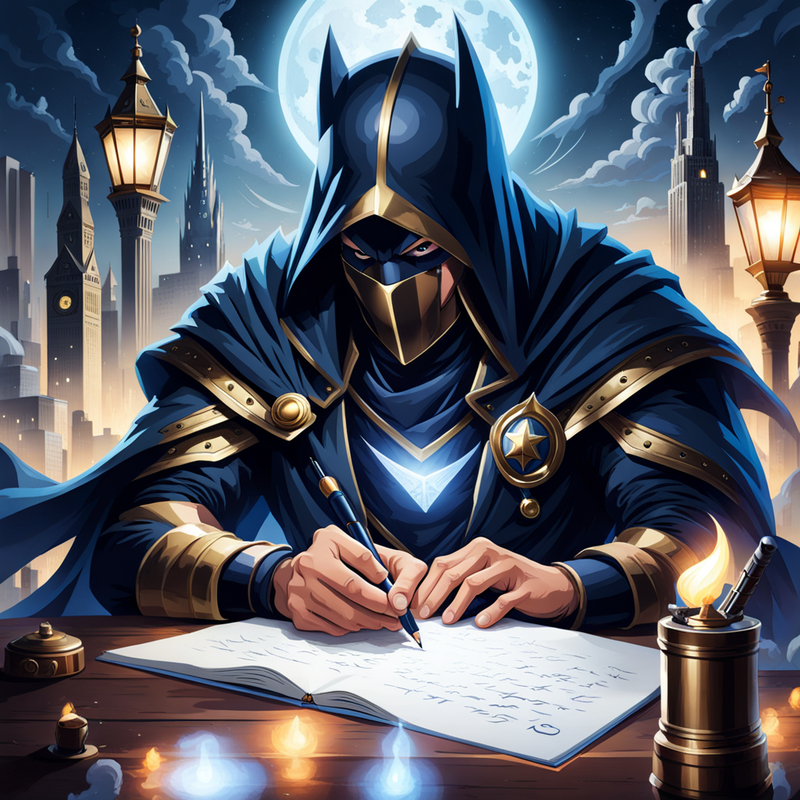
Joseph Campbell var en mytolog och författare vars arbete fokuserade på att hitta gemensamma trådar i myter och berättelser från olika kulturer runt om i världen. Hans teori om "monomyten" eller "Hjältens resa" föreslår att många myter delar en grundläggande struktur, som innefattar stadier som kallas för uppmaning till äventyr, inledande prövningar, den avgörande krisen, och slutligen, hjälten som återvänder förvandlad.
Christopher Vogler, inspirerad av Campbells idéer, har anpassat dessa koncept till en mer praktisk och tillämpbar form för moderna filmskapare och författare. Hans arbete, framför allt i boken "The Writer's Journey: Mythic Structure for Writers", fungerar som en slags praktisk guide till Campbells teorier.
1. Användning av Monomyten
Vogler har destillerat Campbells teorier till en mer förenklad och lättfattlig struktur, som gör det lättare för författare och filmskapare att tillämpa dessa principer i deras verk. Han identifierar nyckelsteg i hjältens resa som kan användas för att skapa en fängslande berättelse.
2. Karaktärsarketyper
Förutom berättelsens struktur, lägger Vogler också vikt vid vikten av arketyper i berättandet. Genom att använda sig av universella karaktärstyper, som hjälten, mentor, skugga (antagonist), och trickster, kan berättare skapa igenkännbara och dynamiska karaktärer.
3. Tillämpning i Hollywood
Voglers inflytande i Hollywood kan inte överskattas. Hans idéer har använts i utvecklingen av många framgångsrika filmer. Genom att tillämpa den monomytiska strukturen har filmskapare kunnat skapa historier som resonanserar med en bred publik, oavsett kulturell bakgrund.
4. En Guide för Manusförfattare
"The Writer's Journey" har blivit en av de mest inflytelserika böckerna för manusförfattare, erbjudande ett ramverk för att skapa djupa och meningsfulla berättelser. Voglers arbete erbjuder konkreta exempel och guider för hur man kan väva samman de olika elementen i hjältens resa i en sammanhängande och engagerande berättelse.
Christopher Voglers anpassning och tillämpning av Joseph Campbells "Hjältens resa" har revolutionerat sättet på vilket berättelser skapas och presenteras, särskilt inom filmindustrin. Genom att tillhandahålla en strukturerad, men flexibel guide för berättande, har Vogler hjälpt otaliga författare och filmskapare att förbättra sina berättartekniker och skapa verk som har en djupgående påverkan på deras publik. Voglers bidrag till området för kreativt skrivande och filmproduktion fortsätter att inspirera och påverka nya generationer av berättare.
( en text genererad av CHAT GPT)
FACT-FICTION-FANTASY
STRATEGY : A BOOK THAT ILLUMINATES
LIFE AND LITERATURE
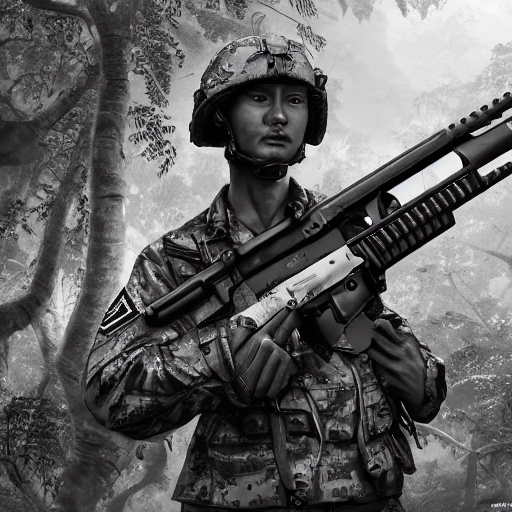
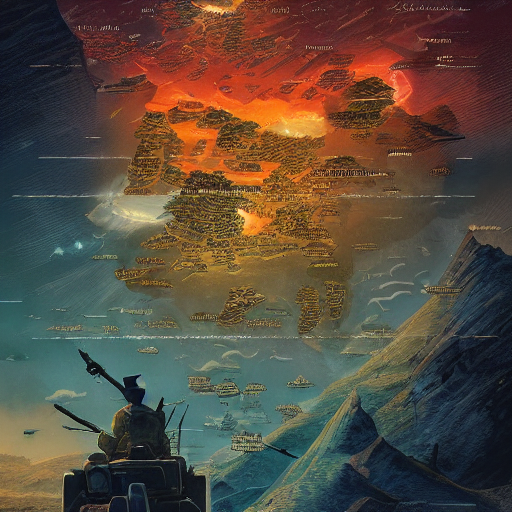
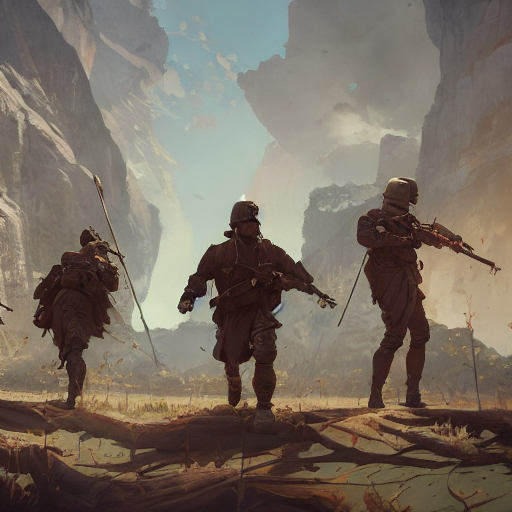
Lawrence Freedmans bok STRATEGI kan jag varmt rekommendera; som omfamnar historien om STRATEGISKT tänkande - beskriver bland annat att STRATEGOS definieras som konsten av kreativ makt. En svår konst att bemästra. Lawrence Freedman's 'narrativ' är skarpt - står för en fantastiskt epos till översikt av de mest framträdande STRATEGISKA teorier i historien.
Faktum kvarstår; alla har en STRATEGI för allt som Lawrence skildrar i sin helhet. Ett stort mästerverk till drygt 750 sidor lång - militära analyser holografiskt. Historien och evolutionen av STRATEGOS i världshistorien. Allt från Machiavelli till min personliga favorit Sun Tzu. Som bland annat stod för 'det bästa sättet till att vinna är att inte strida överhuvudtaget'. STRATEGOS! I hur att engagera i konflikt och bli framgångsrik i strid - i form av strategike epistem och strategon sophia; en generals framfart i strid; till exempel Alexander den Store eller Napoleon Bonaparte.
Individer som har varit förmögna att titta djupt in i deras psyken ofta beskriver inom dem själva destruktiv potential som individer likt i kategorin av Ghengis Khan, Hitler eller Stalin. Starka bevis att tendensen till aggression/våld alltid varit en extrem mäktig drivkraft i mänskligt liv. Som ibland kan manifesteras som ett geni till militär ledare; en STRATEGEG! En STRATEGOS som accepterar faktumet att aggression är invävnad in i den naturliga ordern och att det inte är möjligt att vara i liv utan den. Kanske spirituella arketypiska varelser både är välgörande och 'ondsinta' principer och krafter. Förmågan till att acceptera 'skapelsen' av världen som den är - inkluderat den mörka sidan. Den 'diaboliska' aspekten så att säga. Ett essentiellt element i det 'universala' dramat; detta vet en sann STRATEG - en generals visdom! Existensen av skugg-sidan av världen förstärker dess ljus-aspekter genom att tillhandahålla kontrast och ger fantastisk rikedom och djup till det 'universala' dramat - STRATEGOS!
Att rensa alla aspekter av den universala skuggan skulle världen förlora sitt enorma djup och rikedom och skulle till sist leda till en väldigt färglös och ointressant värld. Detta vet en militär STRATEG! Cosmic Shadow; ett fällt av sanslös energi; begåvad med medvetande intelligens, destruktiv potential och fasansfull beslutsamhet till att orsaka kaos, lidande och katastrof. En kraft i universum. Ett komplicerat spel inom sig själv.
Ett spel som en sann STRATEG känner till. Omfamnande en attityd som accepterar det faktum att 'ondska' är en inneboende del av världen och att alla sfärer innehåller separata individer kommer alltid ha en både ljus och skugg-sida. En militär STRATEG som verkligen uthärdar i detta.
Detta förkroppsligar Lawrence Freedman i sin fantastiska bok STRATEGY : A History. Som Tegedao som ligger bakom Life and Literature ger 5/5 i betyg; A BOOK THAT ILLUMINATES!
"If there were no wars - how could we the value of peace?"
“All of life is a complex game of strategy; moves, and countermoves, taking and losing pieces, setting up for the final.” — Steven James
--
Unraveling the Strategy in Crime Fiction
Crime fiction, a genre celebrated for its complex narratives and deep psychological insights, offers a unique perspective on the strategies employed in criminal investigations. Central to its appeal is the depiction of the grim realities of crime, demanding strategic thinking and sharp detective skills. This article delves into the strategic elements that define crime fiction, using the example of Harry Bosch, a popular character created by Michael Connelly.
"Bosch" is a crime fiction series set primarily in Los Angeles, California. The series follows the gritty and often intense life of Harry Bosch, a hard-nosed LAPD homicide detective. Los Angeles serves as a dynamic and multifaceted backdrop for the series, capturing the city's diverse cultural landscape, its sprawling urban environment, and the complex intersection of crime, politics, and justice within its bounds. Bosch's investigations often take him through various neighborhoods of L.A., showcasing the city's unique character and the challenges it presents in law enforcement and criminal investigation.
At the heart of crime fiction lies the detective character, exemplified by Harry Bosch. These characters are often depicted as deeply flawed yet brilliant, using their intellect and intuition to solve crimes. Their strategies involve piecing together seemingly unrelated clues, understanding criminal psychology, and often, bending the rules to serve justice. Bosch, for instance, is known for his relentless pursuit of the truth, even at the cost of personal relationships and his career.
Crime fiction thrives on the complexity of its central criminal acts. Writers often delve into the intricacies of crimes, from meticulous planning to execution, challenging readers to solve the puzzle alongside the protagonist. This complexity demands strategic thinking not only from the characters but also from the readers, who are actively engaged in untangling the web of deceit and motive.
A key feature of crime fiction is its realistic portrayal of criminal investigations. This genre often highlights the painstaking nature of detective work, from collecting evidence to interrogating suspects. It showcases how detectives strategize to find the truth amidst a plethora of red herrings and false leads. In doing so, it exposes the audience to the methodologies and challenges of real-life investigations.
Crime fiction does not shy away from the darker aspects of society. It often presents a grim picture of the realities of crime, including violence, corruption, and moral ambiguity. This element forces both the characters and the readers to confront uncomfortable truths about human nature and society. Characters like Harry Bosch often find themselves wrestling with ethical dilemmas, where the line between right and wrong is blurred.
A significant strategy used in crime fiction is the exploration of psychological depth, both of the criminal and the detective. Understanding the mind of the criminal is crucial for solving the crime. This genre frequently delves into the psychological motivations behind criminal acts, adding a layer of complexity to the narrative. Similarly, the psychological impact of crime on the detective is also explored, often leading to character development and personal growth.
Crime fiction, through its strategic depictions of criminal investigations and the grim realities of crime, offers more than just entertainment. It provides insights into the human psyche, societal issues, and the complexities of justice and morality. Characters like Harry Bosch represent the quintessence of this genre, embodying the intellectual rigor and moral complexity that fans of crime fiction have come to love and expect. In crime fiction, strategy is not just a tool for solving crimes; it's a window into the depths of human nature and society.
--
(a text generated by Chat GPT)
Nedanför denna artikel om man 'scrollar' lite ska jag på mitt fan fiction vis gräva mig djupare i CRIME FICTION! CRIME FICTION STRATEGY RULES! Först ut ska jag skriva lite CSI : MIAMI!
Achilles in Vietnam
The Timelessness of the Warrior's Psychological Struggles
Shay’s central thesis is that the trauma experienced by soldiers in combat has remained fundamentally unchanged since the days of Homeric Greece. By juxtaposing the ancient epic *The Iliad* with the firsthand accounts of Vietnam veterans, Shay highlights how war erodes the character and moral integrity of those who fight it. Achilles’ wrath, despair, and alienation after the death of Patroclus mirror the anguish and rage of Vietnam veterans who returned from battle scarred both physically and emotionally. Shay suggests that these reactions are not simply personal failures or weaknesses but are intrinsic to the chaos and betrayal often present in warfare.
One of the most compelling aspects of Shay’s work is his discussion of "moral injury"—the profound damage to a soldier's sense of right and wrong caused by betrayals of what is just and honorable. For Vietnam veterans, this often stemmed from broken promises by military leadership, unclear objectives, and the horrifying realities of guerilla warfare in a hostile, alien landscape. These experiences left many veterans feeling abandoned and dehumanized, much like Achilles when his leader, Agamemnon, undermines his honor by seizing Briseis. Shay’s analysis shows how such betrayals not only destroy trust but unravel the very foundation of a soldier’s identity and moral compass.
Shay’s deep empathy for Vietnam veterans is evident throughout the book. His clinical practice allowed him to listen to their stories in painstaking detail, and he uses their words to illustrate his arguments without sensationalizing their pain. He draws parallels between Achilles’ grief-driven rage and the uncontrollable anger and numbness reported by many veterans, making a strong case for the timelessness of the warrior's psychological struggles. Shay does not romanticize war or warriors; instead, he seeks to honor their pain by giving voice to their suffering and advocating for better understanding and treatment.
The book is also a scathing critique of how modern military systems often fail to provide soldiers with the camaraderie, leadership, and purpose that are crucial for psychological resilience. Shay argues that the Vietnam War, with its moral ambiguities and institutional failures, left many veterans isolated and disillusioned, unable to find meaning in their sacrifices. His call for systemic change in how soldiers are trained, led, and reintegrated into society is as urgent today as it was when the book was first published.
In the context of PTSD and Vietnam veterans, *Achilles in Vietnam* is an essential text that bridges the gap between the ancient and the modern, the literary and the clinical. It offers a framework for understanding not only the psychological toll of war but also the cultural and societal factors that exacerbate it. Shay’s insights are invaluable for veterans, therapists, historians, and anyone seeking to understand the true cost of combat.
Ultimately, *Achilles in Vietnam* is both a tribute and a warning: a tribute to the resilience of those who endure the horrors of war and a warning about the moral and psychological toll it exacts. Shay’s work challenges readers to see veterans not as broken individuals but as bearers of deep and often unspoken truths about the human condition. By connecting Achilles’ ancient grief to the modern battlefield, Shay reveals the enduring scars of war and the timeless need for compassion, honor, and healing.
--
The Jungle's Shadow: A Short Story CRAFTED BY TEGEDAO OF COURSE
The humid air of the Vietnamese jungle clung to them like a second skin, suffocating and unrelenting. Private James "Jimmy" Carter and Sergeant David Ruiz had been together in Alpha Company for nearly a year, though time felt meaningless when each day bled into the next. The war was chaos, but together they had carved out something rare: a bond that transcended the violence around them, a brotherhood forged in fire and shadow.
Jimmy was twenty-one, fresh out of a small Kansas town, wide-eyed and eager when he first arrived in Vietnam. David, a few years older and a world wearier, had taken him under his wing. "Stick with me, kid," he’d said during their first firefight, his voice steady amidst the chaos. And Jimmy had. Through the endless marches, the crackle of gunfire, and the suffocating fear of death, they became inseparable.
But it wasn’t just survival that united them. There was an understanding between them that needed no words. They shared everything—their rations, their hopes, their fears. When Jimmy talked about the little pond behind his house in Kansas, David closed his eyes and imagined it. When David described his abuela’s tamales back in San Antonio, Jimmy swore he could smell them. In the jungle, they built a world apart from the war, a sanctuary no one else could touch.
One night, they sat side by side on a muddy ridge, their rifles resting against their knees. The sky above them was a tangle of stars, distant and indifferent.
"You ever think about what it’s gonna be like when we get home?" Jimmy asked, his voice soft.
David glanced at him, his dark eyes unreadable. "I don’t think about home much," he said. "This place... it gets inside you. Can’t imagine it ever leaving."
Jimmy nodded, but he didn’t fully understand. Not yet.
---
It was during an ambush in the thick of the jungle that everything fell apart. The Viet Cong had been lying in wait, their traps cunningly set. Alpha Company was caught in a storm of bullets and screams. Jimmy and David moved together like clockwork, covering each other as they pressed forward. They had done this a hundred times, each trusting the other implicitly.
But then it happened. A grenade arced through the air, landing just feet from them. Without hesitation, David shoved Jimmy behind a tree and threw himself onto the explosive. The blast was deafening, a flash of heat and light that seemed to tear the world apart.
When Jimmy opened his eyes, the jungle was eerily quiet. He crawled to where David lay, his body broken but still breathing. Blood soaked the ground around him.
"David!" Jimmy’s voice cracked as he cradled his friend’s head. "Why? Why did you do that?"
David’s lips curved into a faint smile. "Told you... to stick with me," he rasped. "Had to... keep you safe."
Tears streamed down Jimmy’s face as he clung to him, rocking gently. "You’re not leaving me, David. You can’t."
But David’s eyes were already glazing over, his breath growing shallow. "Take care of yourself, Jimmy," he whispered. "You’re... my family."
And then he was gone.
---
Jimmy was never the same after that. The days blurred into an endless haze of grief and rage. He carried David’s dog tags around his neck, the metal biting cold against his chest. He saw David everywhere—in the shadows of the jungle, in the faces of their comrades, in his dreams.
When the war finally ended, Jimmy returned to Kansas. But the home he had once imagined so vividly felt alien. The pond behind his house was still there, but it was silent, lifeless. The war had taken more than his friend; it had taken a part of himself.
In his quiet moments, Jimmy would sit by the pond, turning David’s dog tags over in his hands. He thought of the jungle, the stars above them, and the love they had shared—a love that was deeper than blood, stronger than fear. It was a love forged in the crucible of war, unbreakable even in death.
Jimmy wept for David often, but his tears were not just for his loss. They were for all the soldiers who had found and lost each other in the horrors of war. The scars on his body faded with time, but the scars on his soul remained—a reminder of a bond that had transcended the darkness.
In the end, it wasn’t the war he remembered most vividly. It was David’s smile, his steady voice, and the unshakable certainty that, in the chaos, they had found something beautiful. Something that would endure.
Whether ancient or modern, war leaves enduring scars on the psyche on the warrior: the haunting memories of comrades lost, and the challenge of reintegrating into a society that often cannot fully understand their pain.
--
James Hillman an American psychologist book A Terrible Love of War is an unsettling yet profound exploration of humanity’s paradoxical relationship with war. Hillman suggests that war transcends mere politics or economics—it is a condition of human existence, an inescapable shadow that walks alongside civilization. This reframing forces readers to grapple with war as an archetype, a force as old as humanity itself, rather than something aberrant or fixable. Hillman also emphasizes war’s spiritual dimension, observing that “War is divine violence, a visitation of the archetypal gods upon human affairs.” In this view, war is not merely human failing but an expression of larger, transpersonal forces. This perspective draws from mythology, religion, and psychology, weaving a tapestry that challenges the modern, rationalist tendency to view war solely in political or materialist terms.
One of the most moving aspects of Hillman’s book is his discussion of the psychological effects of war, both on individuals and societies. He writes, “The scars of war do not fade—they live on in the soul, shaping the world long after the battles have ended.”
Hillman does not glorify war but rather seeks to understand why it captivates us, often drawing comparisons to religious ecstasy and mythic storytelling!
--
The Vietnam War has been one of the most frequently explored conflicts in cinema, with filmmakers portraying it as a complex, multifaceted experience marked by tragedy, moral ambiguity, and cultural division. Unlike earlier depictions of war, which often glorified heroism and duty, films about the Vietnam War frequently delve into its psychological and emotional toll, the chaos and brutality of combat, and its divisive impact on American society. These portrayals have evolved over the decades, reflecting shifting cultural attitudes and the enduring scars of the conflict.
The Deer Hunter, for example, juxtaposed the camaraderie of working-class soldiers before the war with the emotional and psychological wounds they carried upon their return. Its famous Russian roulette scenes became a harrowing symbol of the senselessness and randomness of violence.
By the 1980s, films about Vietnam delved even deeper into the psychological terrain of soldiers. Apocalypse Now (1979), directed by Francis Ford Coppola, is one of the most iconic and surreal depictions of the war. Loosely based on Joseph Conrad's novella Heart of Darkness, the film portrays the descent into madness as Captain Willard (Martin Sheen) embarks on a mission to confront the rogue Colonel Kurtz (Marlon Brando). The film uses the Vietnam War as a backdrop to explore the darkness within human nature and the moral ambiguities of war.
Similarly, Platoon (1986), directed by Oliver Stone, offers a raw and visceral depiction of the conflict. Based on Stone's own experiences as a Vietnam veteran, the film contrasts the idealism of the young recruit Chris Taylor (Charlie Sheen) with the brutality and corruption he witnesses in the field. Stone’s emphasis on the division between soldiers—embodied by the compassionate Sgt. Elias (Willem Dafoe) and the ruthless Sgt. Barnes (Tom Berenger)—reflects the internal conflicts of the war itself. THE ABOVE MOVIE TRAILER IS FROM THIS FILM PLATOON
Stanley Kubrick’s Full Metal Jacket (1987) presents another layered exploration, splitting its narrative between the dehumanizing boot camp experience and the harrowing realities of combat in Vietnam. The film is notable for its critique of the militaristic system, which turns young recruits into instruments of war, stripping them of individuality and compassion.
--
Crafting a script for a Vietnam War movie requires balancing historical accuracy with emotional depth, creating authentic characters shaped by the chaos of war. Writers must capture the physical and psychological toll of combat while exploring themes of camaraderie, moral ambiguity, and loss. The jungle setting often becomes a metaphor for entrapment, both external and internal, amplifying the tension. Dialogue must convey the raw immediacy of survival and the complex humanity of soldiers, while the narrative weaves personal stories with broader critiques of war and its lasting scars on individuals and society.
--
“Compared to war, all other forms of human endeavor shrink to insignificance. God help me, I do love it so.” - General George Patton
--
Tegedao som ligger bakom denna text Achilles in Vietnam står för följande: Att erkänna kriget som en återkommande arketyp glorifierar inte dess våld utan konfronterar snarare dess oundvikliga närvaro!
TOM CLANCY INTRODUCTION
STRATEGY DELUXE IN LIFE AND LITERATURE
Strategic Depths: Tom Clancy’s Mastery in War and Espionage Narratives

Tom Clancy, a name synonymous with intricately detailed military strategy and nail-biting espionage, carved a unique niche in both literature and later in digital gaming. His novels, starting with "The Hunt for Red October," introduced a new era of technothrillers that combine high-stakes geopolitical dramas with the meticulous details of military operations. This article explores how Clancy captured the essence of strategic warfare and intelligence gathering, influencing generations of readers and policymakers.
Tom Clancy’s writing thrives on the authentic portrayal of military and intelligence operations. His initial breakthrough, "The Hunt for Red October," was praised not just for its compelling narrative but also for its technical accuracy. Clancy's ability to depict sophisticated military technology and the strategic maneuvers of global powers set a new standard for the genre.
Experts often point to Clancy’s background and meticulous research methods as the bedrock of his realistic military scenarios. Unlike many of his contemporaries, Clancy ensured that each piece of equipment, tactical procedure, and chain of command was represented with unprecedented accuracy. His portrayal of submarine warfare, for instance, was so precise that it reportedly made its way into classrooms at naval academies.
Clancy’s narratives are grounded in the realities of Cold War tensions, but they transcend specific historical contexts to address timeless strategic dilemmas. In "Patriot Games," Clancy explores the psychology of terrorism alongside traditional state-centric warfare, reflecting a prescient understanding of the evolving nature of global threats.
The strategic depth in Clancy’s novels often lies in the dualities he presents—between the political and the personal, the tactical and the ethical. Jack Ryan, Clancy’s most famous protagonist, frequently faces scenarios where he must balance immediate tactical decisions with their long-term strategic impacts. This interplay is a hallmark of Clancy’s ability to weave complex strategic insights into compelling human dramas.
Clancy’s work does not merely entertain; it educates. His detailed explanation of submarine tactics in "The Hunt for Red October" and counter-terrorism operations in "Rainbow Six" have shaped public understanding of military strategy. Readers come away with a greater appreciation of the complexities involved in defense planning and intelligence operations.
Moreover, Clancy’s novels have influenced the military and strategic community. Former U.S. Navy Secretary John Lehman noted that Clancy's detailed descriptions have been both a resource and a challenge, pushing military professionals to think more creatively about defense strategies and scenarios.
Tom Clancy’s legacy in the realm of strategic military and espionage narratives is profound. His books serve not just as sources of entertainment but as virtual training grounds for strategic thinking. They challenge readers to consider the implications of geopolitical events and the intricacies of military decision-making. As global tensions continue to reflect themes similar to those Clancy explored, his work remains relevant, offering insights into the art and science of modern warfare and espionage. Through his meticulous research and commitment to realism, Clancy has left an indelible mark on the portrayal of war and strategy in popular culture.
The Holographic World of Tom Clancy: Interconnected Stories Unveiling Global Strategy

Tom Clancy, widely celebrated for his deeply researched and technically accurate military novels, also pioneered a unique form of narrative interconnectivity that mirrors the complexity of real-world international relations and espionage. His novels and the subsequent adaptations into video games create a 'holographic' model of storytelling, where each narrative piece reflects and influences the others, forming a cohesive understanding of global strategy. This article explores how Clancy's interconnected universe offers more than entertainment—it provides a multifaceted perspective on global conflicts and strategies.
Tom Clancy’s universe is vast, spanning numerous best-selling novels and popular video games like the Rainbow Six and Ghost Recon series. Characters from one book subtly appear in another, and decisions made in one story can ripple through the entire narrative ecosystem. For example, the character Jack Ryan, who starts as a CIA analyst in "The Hunt for Red October," eventually becomes the President of the United States in later novels. This progression isn't just character development; it's a demonstration of the interconnected nature of political power, military strategy, and personal integrity.
Clancy’s storytelling technique involves layering complex plots with overlapping characters and themes that span across different media. This method is particularly evident in how his video games are not standalone experiences but extensions of his books' universe. Events in the Rainbow Six video games, for instance, often reference missions and characters from the novels, enhancing the player's experience and understanding of Clancy’s geopolitical landscape.
The thematic continuity across Clancy’s works reinforces a coherent worldview. Themes like the tension between surveillance and privacy, the ethics of military intervention, and the balance of power are explored repeatedly, each time from different angles and through different scenarios. This not only solidifies the themes but also invites readers and players to ponder deeply on recurring strategic questions.
Clancy’s interconnected narrative universe doesn't just tell stories; it builds an immersive world where strategic decisions have both immediate and long-term consequences. This holographic narrative structure has changed how readers and players think about military and geopolitical strategy. By engaging with Clancy’s works, they gain a panoramic view of international relations, where every action—whether by a government official, a soldier, or a spy—can influence global stability.
Tom Clancy’s use of interconnected stories to reflect and dissect global strategy is a testament to his visionary approach to storytelling. This holographic narrative structure allows him to explore complex geopolitical issues in a way that is not only thorough and insightful but also highly engaging. As global dynamics continue to evolve, the lessons drawn from Clancy’s narratives remain invaluable, providing a framework for understanding the intricacies of global power and its impact on individual lives. Through his novels and games, Clancy has created a multifaceted mirror of reality, offering readers and players alike a deeper understanding of the strategic forces that shape our world.
Tom Clancy's Espionage and War Games: A Strategy of Engagement

Tom Clancy’s legacy extends beyond his novels, reaching deep into the world of interactive gaming. His influence reshaped how tactical decision-making, leadership, and strategic planning are portrayed in video games. Games like Rainbow Six Siege, The Division, and Ghost Recon not only bring Clancy's vivid world of espionage and military tactics to life but also engage players in a way that mirrors real-world strategic thinking. This article explores how Clancy's narrative style and attention to detail were translated into gaming, offering players an immersive experience in strategic operations and decision-making.
Clancy's transition from novels to video games was marked by a steadfast commitment to authenticity and strategic depth. His involvement with game development ensured that the tactical scenarios players encountered were grounded in real-world military doctrines and espionage tactics. For example, Rainbow Six Siege emphasizes teamwork, precision, and the use of realistic counter-terrorism tactics, reflecting Clancy’s detailed approach to such operations in his books.
One of the most compelling aspects of Clancy’s games is their ability to serve as interactive learning tools for strategic thinking. Players are not just participants in a virtual world; they are decision-makers whose choices have consequences. In Ghost Recon Wildlands, for instance, players must manage resources, strategize missions, and engage with both allies and enemies in a complex geopolitical environment. This mirrors the strategic complexities that Clancy’s characters face in the novels, where decisions are often tied to broader geopolitical outcomes.
Clancy’s games are renowned for their innovation in simulating realistic espionage and warfare scenarios. Rainbow Six Siege introduces a unique operator system where each character comes with specific gadgets and skills, forcing players to think critically about team composition and strategy before every engagement. Similarly, The Division features a dynamic environment affected by player actions, emphasizing the impact of strategic decisions on the game world’s socio-political landscape.
The strategic depth in Clancy’s games encourages players to reflect on their decisions and their potential real-world implications. By engaging with various tactical challenges and moral dilemmas, players develop a nuanced understanding of the delicate balance required in leadership and tactical decision-making. This mirrors the experiences of Clancy's protagonists, who often wrestle with the morality of their decisions within the complex web of international politics and warfare.
Tom Clancy's video games stand out as masterclasses in strategic engagement, drawing directly from his narrative strengths in espionage and military tactics. These games go beyond mere entertainment; they are simulations that challenge the mind and provoke thoughtful engagement with the principles of strategy and leadership. Through his games, Clancy has managed to extend his narrative impact, offering players around the world a chance to step into the shoes of strategic decision-makers in high-stakes scenarios. As technology advances and gaming continues to evolve, the strategic foundations laid by Clancy’s games will undoubtedly influence future generations of game design, perpetuating his legacy of combining entertainment with tactical and strategic education.
--

Crafting the Shadows: The Joy of Creating Tom Clancy Fan Fiction
Tom Clancy's vast, interconnected universe of espionage, military tactics, and global intrigue has captured the imaginations of millions. But beyond the pages of his bestselling novels and the frames of video games, lies a vibrant community dedicated to expanding this universe through fan fiction. The holographic nature of Clancy's storytelling—with its complex characters and intertwined plots—provides a fertile ground for fans to explore, enhance, and reimagine.
Clancy's universe is uniquely suited for fan fiction due to its detailed, yet open-ended world-building. The precision in his depiction of military and espionage operations invites fans to delve deep into the technical aspects, while the broad geopolitical themes allow for expansive narrative possibilities. Whether it’s a new Jack Ryan adventure or an untold story of a covert operation by Rainbow Six, the foundational elements are robust yet flexible enough to support a wide range of stories.
Creating fan fiction in Tom Clancy's holographic story universe is not just an act of homage; it is a creative venture into the depths of strategic and narrative exploration. For many, it offers a way to engage with Clancy’s work on a deeper level, to understand and interact with the complexities of his characters and the intricacies of their world. The process is both challenging and rewarding, offering writers a chance to contribute to and celebrate the legacy of one of modern literature's great strategists. Through fan fiction, Clancy’s world continues to expand and evolve, capturing new ideas and stories that resonate with the timeless themes of espionage and global strategy.
TEGEDAO IS GOING TO WRITE TOM CLANCY FAN FICTION!
TOM CLANCY GAME STORIES
TEGEDAO FAN FICTION INSPIRED BY THE WORLD OF TOM CLANCY GAMING
This story also follows Sam Fisher, a highly trained Splinter Cell operative, as he embarks on a covert mission during the Vietnam War to rescue American hostages held by the Vietcong. Utilizing his advanced stealth skills and military technology, Sam navigates the treacherous Vietnamese jungle, infiltrates a fortified enemy base, and orchestrates a daring nighttime rescue. The narrative culminates in a tense escape and extraction, highlighting the themes of sacrifice, duty, and the unseen burdens of secret warriors.
Läs merThis story follows Sam Fisher, a seasoned NSA operative and Splinter Cell, as he undertakes a perilous mission to infiltrate a terrorist organization in Shanghai. Posing as a double agent, Sam navigates the treacherous underworld of espionage to prevent a nuclear attack. Despite his exceptional stealth and strategy, the mission spirals into chaos, culminating in a catastrophic event that leaves Shanghai in ruins. Battling personal demons and professional failures, Sam emerges from the ashes determined to continue his fight against global threats, reflecting the resilience and complexity of a true double agent.
Läs merThis story follows Dizzy Starburst, a Special Agent of the Strategic Homeland Division, as he navigates a dystopian cyberpunk New York City in the aftermath of a viral pandemic. Tasked with rebuilding operations and investigating a rogue AI developed by a powerful corporation, Dizzy uncovers a vast conspiracy involving digital manipulation, corporate corruption, and betrayal within his own ranks. As he battles to neutralize the AI threat and expose the corruption, Dizzy confronts ethical dilemmas about technology's role in society, ultimately striving to protect humanity in a world dominated by advanced robotics and artificial intelligence.
Läs mer"Ghost Recon Wildlands: Shadow Spartan" is a thrilling fan fiction crossover narrative that brings together the tactical stealth operations of Ghost Recon's elite team with the futuristic combat prowess of Halo's Master Chief. Set in a fictionalized Bolivia overrun by the Santa Blanca drug cartel and a corrupted military organization, Unidad, the story follows the Ghosts and Master Chief as they join forces to dismantle the cartel's operations. The alliance challenges them to merge their distinct combat styles and use advanced technology and tactical guerrilla warfare to face formidable enemies, ultimately striving to save Bolivia from becoming a narco-state. The narrative explores themes of teamwork, the clash of worlds, and the complexities of power and corruption in a high-stakes environment.
Läs merOperation TEAM RAINBOW Lone Wolf: Vice City
Phantom in Little Havana
TOM CLANCY GAMING STORY CONTINUE BY TEGEDAO(FAN FICTION CROSS OVER WITH GAMES RAINBOW SIX AND GTA VICE CITY)
--

Prologue:
The neon glow of Vice City pulsed in the humid night air, a vibrant yet sinister heartbeat that echoed through the labyrinth of crime-ridden streets. The skyline, a jagged silhouette against the darkening sky, looked like a playground for kings and killers alike—a place where fortunes were made and lives were lost in a dizzying swirl of greed, power, and the intoxicating allure of the 1980s excess.
Domingo "Ding" Chavez stood on the rooftop of a dilapidated apartment building, his gaze sweeping over the cityscape. Vice City was a stark contrast to the cold, calculated world of Team Rainbow and NATO's meticulously planned counter-terrorism operations. This city was alive, chaotic, and dripping with danger—a place where order was dictated not by law, but by the whims of its criminal underworld. It was here that he would begin his most unusual mission, one that blurred the lines between cop and criminal, agent and assassin.
Chavez had made his name in places like this before. The jungles of Colombia had taught him the art of stealth, of moving unseen through hostile terrain to strike down powerful enemies. As a former operative in the CIA’s Special Activities Division, he had dismantled cartels and toppled drug empires. But Vice City was a different beast. It was a neon-lit snake, coiled and ready to strike at anyone foolish enough to think they could tame it.
The briefing from NATO had been short and to the point, delivered with the cold detachment he had come to expect from his superiors. Los Cabrones, a Cuban street gang led by the ruthless Umberto Robina, had grown bolder in recent months. Their control over Little Havana was tightening, and whispers on the street spoke of Robina’s ambition to transform his gang into the ultimate cocaine empire—kings of Vice City’s underworld. His network stretched from the glitzy beaches to the darkest alleyways, threatening to plunge the city into an era of unchecked lawlessness.
The Vice City Bureau of Investigation had its hands tied. Corruption ran deep, and the lines between law enforcement and criminal enterprise were blurred. They needed an outsider, someone untainted by the city’s pervasive rot. They needed a ghost who could move through Vice City’s shadows, dismantling Robina’s empire piece by piece until the King of Little Havana was nothing more than a bad memory. And so, they turned to Rainbow, and Rainbow turned to Ding.
This was not a Rainbow mission in the traditional sense. There would be no tactical team sweeping in with flashbangs and breaching charges. This was a solo operation, a black op buried under layers of deniability. Ding’s task was simple: infiltrate the Cuban gang's inner circle, gather intelligence, and strike when the time was right. It was a delicate dance on a knife’s edge, one that would require him to become part of the very underworld he sought to destroy.
Ding inhaled deeply, the scent of saltwater and exhaust fumes mingling in the air. In this city of sin, he was just another face in the crowd, another shadow among the many that prowled the streets after dark. He had already started the groundwork, immersing himself in the life of Vice City, blending in with the drifters and hustlers who populated its underbelly. He had to become a ghost within this neon-lit mirage, a hunter stalking his prey in a world where reality was as malleable as the shifting tides of the ocean that bordered it.
As he watched the city pulse and throb below him, Ding knew that Umberto Robina would not see him coming. The King of Little Havana had surrounded himself with power and influence, with men who would kill at a nod and who feared nothing but their leader’s wrath. But Ding was not here to play by their rules. He was here to break them, to turn Robina’s empire into a house of cards that would come crashing down with a single, well-placed shot.
In the end, there would be no heroes or villains, just the echo of a suppressed rifle shot and the fading neon lights of a city that had always been too bright, too alive, for its own good.
Domingo "Ding" Chavez checked his weapon, the cold steel of the marksman rifle a reassuring weight in his hands. This was his world now—a world of shadows and neon, where reality was a holographic canvas ready to be conquered. And in this world, he was the unseen hand of justice, the ghost who would rewrite the rules of Vice City, one bullet at a time.
The mission was clear. Infiltrate, eliminate, disappear.
And so, the hunter descended into the heart of the city, a phantom among the neon.
--

The staccato rhythm of Latin beats spilled out of every corner of Little Havana, a chaotic symphony that masked the violence simmering beneath the surface. Ding Chavez had spent days blending into this world, learning its rhythm, adopting its gait. He was no longer Domingo Chavez, Director of Rainbow. Here, he was just another face in the crowd—a hustler, a shadow drifting through the neon-lit maze of Vice City’s underbelly.
Little Havana was a fortress for Umberto Robina, the self-proclaimed kingpin who ruled with a mix of charisma and brutality. Ding had watched him from a distance, studying the man’s routine, his network, the layers of protection that cocooned him from the rest of the world. Robina was careful, but Vice City was not a place where one could stay hidden forever. It was a city that demanded to be seen, to be lived, and that was Robina’s weakness. His hunger for power was matched only by his need to bask in the glow of his own empire.
Ding's infiltration had been slow, methodical. He had started at the bottom, running small jobs for the Los Cabrones, working his way into the fold. He carried messages, moved drugs, and built a reputation as a reliable operator who asked no questions. The Cubans were suspicious of outsiders, but Vice City was full of drifters looking to make a name for themselves. Ding played his part flawlessly—an ex-soldier down on his luck, drawn to the promise of easy money and a life less ordinary.
Robina’s men began to trust him. He was careful not to rise too quickly, avoiding the traps laid out for eager newcomers who thought they could climb the ladder overnight. Patience was Ding’s weapon, his stealth in a world where everyone else moved too fast, spoke too loud. He used it to his advantage, picking up scraps of information, piecing together the structure of Robina’s operation. Slowly, he mapped out the flow of money, drugs, and power that coursed through Little Havana like a poisoned river.
The night he had been waiting for came under the cover of a tropical storm. The city was drenched in rain, its neon lights smeared across the wet asphalt like strokes of paint on a canvas. Robina was hosting a meeting with his inner circle, a rare gathering that brought the key players of his operation into one place. It was a risk, but Robina’s ambition often led him to underestimate the danger that lurked in his own domain.
Ding had managed to secure his place as part of the security detail, a role that allowed him to move freely through the compound without drawing suspicion. His movements were calm, deliberate. Beneath his jacket, he carried the marksman rifle in a disassembled state, each piece hidden among the folds of his clothing. The plan was straightforward but fraught with peril: find a vantage point, assemble the rifle, and take the shot.
He made his way through the compound, eyes scanning for the perfect position. The meeting was taking place in a back room overlooking a courtyard, the windows shielded by heavy drapes. Ding noted the guards at every corner, the cameras that swept over the grounds. Robina had fortified his stronghold well, but there were always blind spots—places even the most paranoid crime lord overlooked.
Ding found his perch in an adjacent building, a maintenance room that provided a sliver of a view into the courtyard. He set to work quickly, assembling the rifle with the precision of a surgeon. The storm outside intensified, rain battering the windows and providing a natural cover for his movements. He peered through the scope, adjusting his aim until he had a clear sightline to the meeting room.
Inside, Robina was holding court, surrounded by his lieutenants. He was animated, his hands carving through the air as he spoke of his grand vision for Los Cabrones. To his followers, he was a leader, a visionary. To Ding, he was just a target, one that was about to learn the cost of reaching too far.
Ding steadied his breath, his finger hovering over the trigger. The rifle's suppressor would muffle the sound, but he only had one shot. The storm outside raged, thunder rolling across the sky as if the city itself were holding its breath. Ding exhaled slowly, the world narrowing to a single point—Robina’s heart.
The shot rang out like a whisper, lost in the cacophony of the storm. Robina staggered, confusion flashing across his face as he clutched his chest. For a heartbeat, the room was frozen in shock. Then chaos erupted. Ding watched through the scope as Robina crumpled, his empire unraveling in the blink of an eye. The lieutenants scrambled, shouting orders, but it was already too late. The kingpin was dead, the crown ripped from his head by a ghost they never saw coming.
Ding disassembled the rifle with the same methodical precision, his mind already shifting to the next phase of the plan. Infiltrate. Eliminate. Disappear. He moved quickly, slipping out of the building and into the labyrinthine alleys of Little Havana. The city was a maze of shadows and neon, but Ding knew it well enough now to navigate it blind. He made his way to the safehouse, changing clothes, shedding the skin of the persona he had worn for weeks.
By the time the police and Los Cabrones’ enforcers flooded the streets, searching for the assassin, Ding was already gone—just another face lost in the storm. He found a payphone several blocks away and dialed a number, speaking only two words when the line connected.
"Mission accomplished."
There was no reply, just a click as the call was terminated. Rainbow knew better than to dwell on the details of operations like this. They were ghosts, after all—agents of a world that existed in the shadows between law and chaos.
Ding walked away from the phone booth, the rain washing away the remnants of Vice City’s grip on him. He was already thinking of his next move, his next assignment. There was always another battle, another shadow to chase. For now, though, he allowed himself a moment to breathe, to feel the weight of the city lift from his shoulders.
In the end, Vice City was just another battleground, a neon dream that had tried to swallow him whole. But Ding Chavez was not a man who could be consumed. He was the hunter, the ghost who moved unseen, leaving only silence in his wake.
As he disappeared into the night, the city behind him erupted in sirens and screams, the final requiem for a king who had thought himself untouchable.
--
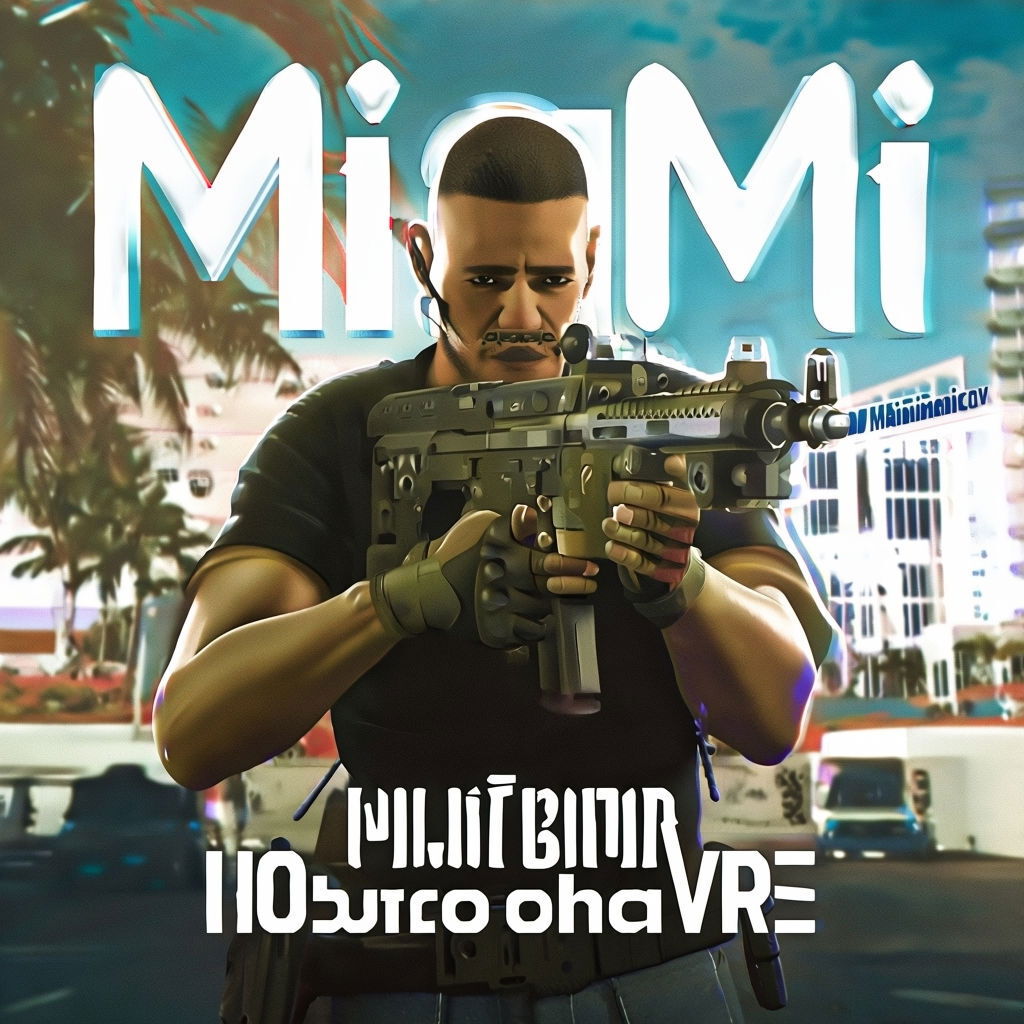
Epilogue:
The rain had stopped, leaving Vice City drenched in a glistening sheen that turned every street and building into a reflection of the world above. The neon lights flickered back to life, painting the city in shades of electric blue, pink, and green—a dazzling tapestry that stretched out as far as the eye could see. It was a city reborn each night, where the line between reality and illusion blurred into a vivid dreamscape. To those who roamed its streets, Vice City was more than just a place; it was a holographic canvas, a living, breathing enigma that promised both freedom and ruin.
Ding Chavez stood on the outskirts, watching the city come alive in its nocturnal glory. The mission was over, but the pulse of Vice City continued, its heart beating to the rhythm of a thousand stories. Every corner, every alley held secrets, whispered tales of those who sought to conquer it or be consumed by it. It was a city of dualities, where shadows danced alongside the neon glow, where violence and beauty intertwined in a dangerous embrace.
Here, the 1980s were immortal, preserved in the city's vibrant hues and relentless energy. The music, the fashion, the promise of excess—they were all part of the mirage, a carefully crafted illusion that invited exploration yet warned of its perilous depths. It was a place where stealth was not just a tactic, but a way of life, where action was a constant undercurrent beneath the facade of glitz and glamour.
Ding had moved through this world as a ghost, a silent disruptor in a city that thrived on noise. He had seen the truth behind the neon, the raw, unfiltered chaos that lay beneath its shimmering surface. Vice City was a battlefield, not of nations but of desires—where power was currency, and every player was both predator and prey. But for all its danger, it was also a canvas ripe for those bold enough to paint their own legend across its streets.
As he turned away, melting into the anonymity of the night, Ding knew that Vice City would continue to lure those who hungered for its promises. It was an endless dance of light and shadow, an ever-evolving game with rules that changed with every heartbeat. The city was alive, waiting for the next chapter, the next soul willing to step into its neon-lit dream and claim a piece of its holographic reality.
In the end, Vice City was more than just a city—it was an invitation. An invitation to explore the boundaries of what was real and what was merely a projection of desire. And as long as its lights burned, there would always be those who answered that call, ready to chase the mirage to the very edge of reality.
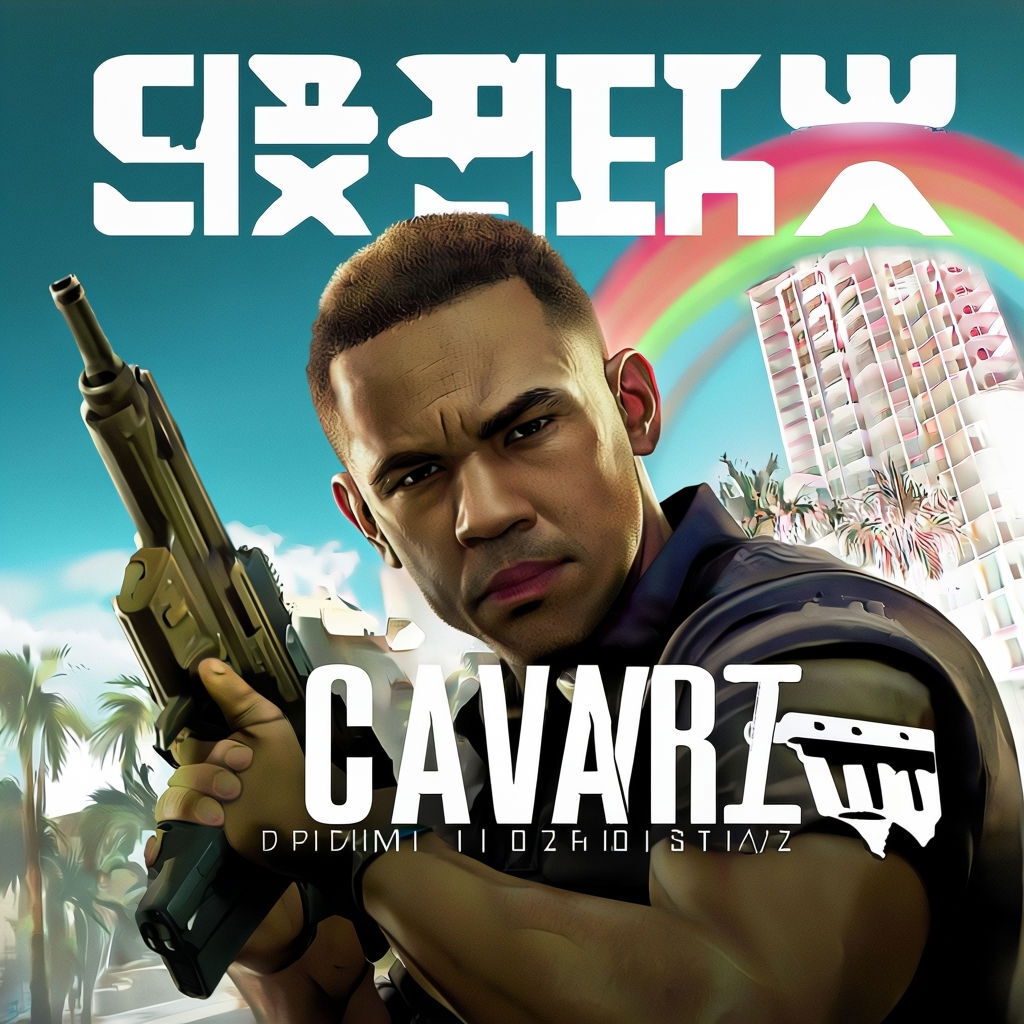
Domingo "Ding" Chavez was the epitome of a lone wolf, a master of stealth who moved like a ghost through the world's most dangerous arenas. He operated in the shadows, silent and unseen, relying on his sharp instincts and unrivaled training to navigate treacherous terrains. Ding's strength lay in his solitude; he needed no team to watch his back. Instead, he was the predator in the dark, striking with precision and vanishing without a trace, leaving only silence in his wake. In the neon jungles of Vice City, he was an enigma—a shadow that hunted the hunters.
CRIME FICTION
Mind Games in the Shadows - Dexter and Horatio's Deadly Game and Sherlock Holmes : The Ultimate Strategy Awaits In Chat GPT Generated Novels By Tegedao
Fan fiction based on "CSI: Miami" typically revolves around the crime-solving adventures of the CSI team in Miami, led by the charismatic Horatio Caine. These fan-created stories often explore intricate forensic investigations, delve into the personal lives and relationships of the characters, and introduce new, imaginative cases. Fans extend the world of "CSI: Miami" by creating their own complex mysteries set against the vibrant backdrop of Miami, blending the show's signature blend of crime, science, and drama with fresh, creative twists. // This fan fiction crossover novel brings together Detective Horatio Caine from "CSI: Miami" and Dexter Morgan (TV-show and books), the forensic blood spatter analyst turned detective. Set against the vibrant and sometimes perilous backdrop of Miami, the novel follows their collaboration on a series of art-themed murders. The killer, using the city's art scene as a macabre canvas, leaves behind cryptic clues and meticulously arranged crime scenes. Combining Horatio's methodical investigative techniques with Dexter's unique understanding of the criminal mind, they engage in a high-stakes game of strategy and psychological insight. As they delve into the mind of a twisted artist turned murderer, the novel explores themes of justice, morality, and the fine line between genius and madness. CRIME FICTION!
This fan fiction crossover between Sherlock Holmes and Star Wars follows the iconic detective and Dr. Watson as they are transported from Victorian London to the Star Wars universe. Tasked with dismantling the criminal empire of Jabba the Hutt on the desert planet Tatooine, Holmes uses his brilliant deductive skills—enhanced by the Force—to outmaneuver the galaxy's most notorious crime lord, ultimately bringing justice to a world far from their own. CRIME FICTION!
CYBERPUNK LITERATURE
MARVEL SUPERHEROES
FUN IN EXPLORING LIFE AND LITERATURE
The Hero's Journey in Marvel's Universe: A Campbellian Analysis

The Marvel Universe, with its vast pantheon of superheroes, has become a modern mythology, captivating audiences worldwide through its epic narratives and complex characters. At the heart of Marvel's storytelling lies the universal structure of the hero's journey, as outlined by Joseph Campbell in his seminal work, "The Hero with a Thousand Faces." This article delves into how Marvel's superheroes embody Campbell's monomyth, drawing parallels between ancient myths and the journeys of contemporary heroes like Spider-Man, Iron Man, and Captain Marvel.
Joseph Campbell describes the first stage of the hero's journey as the "Call to Adventure," where the hero is invited to leave their ordinary world and embark on a quest. In Marvel's universe, Peter Parker's transformation into Spider-Man serves as a quintessential example. The bite from a radioactive spider and the subsequent murder of his Uncle Ben propel him from his ordinary life into one of heroism, emphasizing the classic motif of destiny thrust upon an unsuspecting individual.
The "Road of Trials" constitutes a series of challenges that the hero must overcome, often leading to their growth and development. Tony Stark, or Iron Man, embodies this stage through his capture and subsequent escape using the first Iron Man suit. Stark's journey from a self-centered arms dealer to a superhero reflects his overcoming of physical and moral challenges, showcasing the transformative power of adversity.
Campbell's hero often encounters a mentor who provides guidance, wisdom, or magical aid. For many Marvel heroes, this role is filled by figures such as Yon-Rogg for Captain Marvel, or even the collective wisdom of the Avengers team. These mentors play crucial roles in guiding the heroes through their journey, offering support and knowledge that enable the heroes to face forthcoming challenges.
"The Abyss" represents the hero's greatest challenge, often involving a symbolic death and rebirth. Captain America's sacrifice in "Captain America: The First Avenger," where he crashes a plane into the Arctic to save millions, serves as a powerful depiction of this stage. Steve Rogers' "death" and subsequent awakening in the modern world symbolize his rebirth, marking a pivotal point in his hero's journey.
After overcoming the ultimate challenge, the hero undergoes a transformation, gaining a new understanding or power. This transformation is vividly portrayed in Thor's arc, especially in "Thor: Ragnarok," where he discovers his true strength lies not in his hammer, Mjolnir, but within himself. The Return phase sees the hero bringing back knowledge, wisdom, or power that can be used for the benefit of their original world. Thor's return to Asgard to confront Hela and ultimately save his people exemplifies this return with newfound wisdom and power.
The reason Marvel's superheroes resonate so profoundly with audiences around the globe is not solely due to their superpowers or the spectacle of their battles. It's their human, relatable journeys of growth, sacrifice, and triumph, echoing the timeless path outlined by Campbell's hero's journey. These narratives tap into the universal quest for meaning and the desire to overcome personal limitations, reflecting the enduring appeal of the monomyth in modern storytelling.
By aligning the narratives of Marvel's superheroes with Joseph Campbell's monomyth, we gain a deeper appreciation for the storytelling craft that goes into their creation. Marvel's universe, much like the ancient myths Campbell studied, serves as a mirror reflecting our fears, aspirations, and the perennial quest for heroism in the face of adversity. In the end, the hero's journey within the Marvel Universe is not just about the characters we admire on the page or the screen but about our journey, encouraging us to face our trials with courage and to emerge transformed.
Marvel's Holographic Pantheon: The Collective Journey of Heroism

In the expansive universe of Marvel Comics, a unique narrative phenomenon unfolds—a holographic pantheon of superheroes, each embodying a distinct aspect of the hero's journey as outlined by Joseph Campbell. This collective storytelling approach weaves individual tales into a complex, interlocking mosaic, illustrating the multifaceted nature of heroism. This article explores the concept of Marvel's characters as a "holographic pantheon," where the sum of these narratives forms a complete, cohesive mythos, reflecting the complexities of the human experience and the universal quest for growth and understanding.
The holographic principle, originating in theoretical physics, suggests that the entirety of a volume of space can be represented by the information on its boundary. Applied to storytelling, this principle illuminates how individual hero narratives within the Marvel Universe—each with their distinct trials, mentors, and transformations—contribute to a larger, collective narrative. This narrative doesn't just tell the story of a single hero but of heroism itself, in all its forms and facets.
In this holographic pantheon, characters like Spider-Man, Black Panther, and Captain Marvel act as fragments of the hero archetype. Spider-Man's journey from a guilt-ridden teenager to a responsible hero embodies the call to adventure and the personal sacrifice inherent in the hero's journey. Black Panther's story, dealing with the weight of kingship and the defense of Wakanda, reflects themes of leadership and the responsibility to society. Captain Marvel represents the journey of discovering one's true identity and power, showcasing the transformation and the realization of inner strength.
These stories, while unique, share common structural elements of Campbell's monomyth, such as the initial call to action, the confrontation with and overcoming of obstacles, and the return home with newfound wisdom or power. However, it's in their differences that the true richness of Marvel's narrative universe is revealed. Each character brings a unique perspective on heroism, influenced by their background, personality, and challenges.
The interconnected stories of Marvel's superheroes create a dynamic narrative ecosystem. Events in one character's story often ripple through the stories of others, reflecting the interconnected nature of the human experience. This narrative interplay allows for a deeper exploration of themes such as sacrifice, redemption, and the struggle for justice, presenting them through diverse lenses and circumstances.
For example, the "Civil War" storyline, which pits hero against hero over the issue of government regulation, explores the complex nature of freedom, responsibility, and the costs of power. This storyline weaves together the individual journeys of numerous characters, challenging them to reconsider their beliefs and allegiances, and in doing so, contributes to their ongoing personal growth narratives.
The holographic pantheon of Marvel does more than entertain; it offers a mirror to our world, reflecting the diversity and complexity of what it means to be a hero. By presenting a multitude of hero journeys, Marvel invites its audience to see pieces of themselves in these characters, encouraging empathy, understanding, and the realization that heroism can take many forms.
In this way, Marvel's superheroes serve as modern mythological figures, embodying the values, fears, and aspirations of our society. They remind us that while the journey of heroism is fraught with challenges, it is also filled with opportunities for growth, learning, and the chance to make a difference.
Marvel's holographic pantheon presents a rich tapestry of heroism, woven from the individual threads of its characters' journeys. This collective narrative approach not only enhances the depth and complexity of the Marvel Universe but also reinforces the enduring relevance of the hero's journey as a framework for understanding our own lives and challenges. In the end, Marvel's universe teaches us that heroism is not the province of the few but a potential within us all, waiting to be awakened and realized through our actions and choices.
The Archetypes of Marvel: A Jungian Companion to Campbell's Monomyth
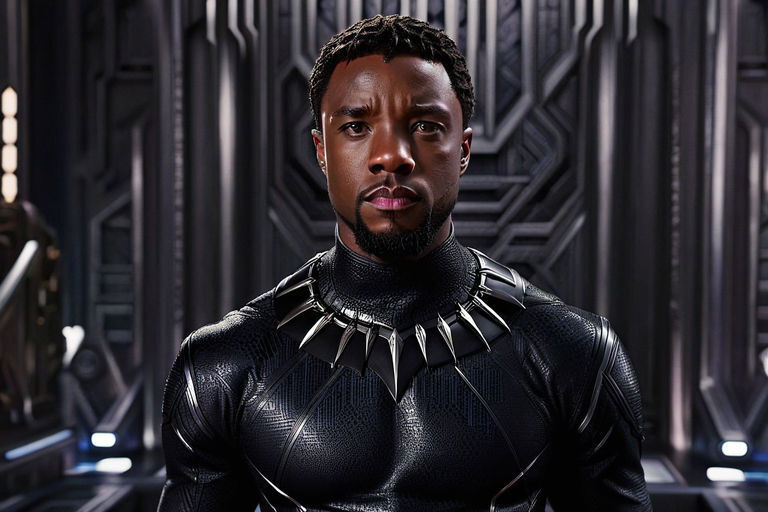
In the realm of modern mythology, Marvel Comics has carved out a universe teeming with characters that resonate deeply with audiences worldwide. While Joseph Campbell's monomyth provides a framework for understanding the journey of these heroes, Carl Jung's theory of archetypes offers a complementary lens through which to explore the psychological underpinnings of Marvel's most iconic figures. This article delves into the Jungian archetypes within the Marvel Universe, illustrating how these timeless symbols interact within the structure of the hero's journey to create compelling narratives that speak to the collective unconscious.
At the heart of every Marvel story is the Hero, an archetype embodying the quest for self-discovery and triumph over adversity. Characters such as Spider-Man, Captain America, and Iron Man are quintessential heroes, each embarking on a journey fraught with challenges that ultimately lead to personal growth and transformation. Parallel to the Hero is the Shadow, representing the dark aspects of the personality that the hero must confront. In Marvel's narratives, villains like Thanos, Loki, and Magneto serve as reflections of the Shadow, embodying fears, desires, and conflicts that the Hero must face to achieve wholeness.
The Mentor archetype, represented by characters such as Professor Charles Xavier and Nick Fury, provides guidance, wisdom, and support to the Hero, aiding in their quest. These figures often initiate the Hero into new realms of understanding and equip them with the tools necessary for success. The Anima and Animus archetypes, which symbolize the feminine and masculine aspects within each individual, are embodied by characters who challenge the Hero to integrate these opposing qualities. The relationships between characters like Tony Stark and Pepper Potts, or Thor and Jane Foster, exemplify the dynamic interplay of these archetypes, facilitating the Hero's journey towards psychological completeness.
The Trickster archetype introduces change, chaos, and humor into the narrative, challenging the status quo and enabling the Hero to see the world from a new perspective. Loki, the God of Mischief, epitomizes the Trickster, disrupting plans and forcing characters to adapt and grow. Through the Trickster's interventions, the Hero often encounters opportunities for transformation, marking a critical juncture in their journey.
Marvel's universe is a mosaic of archetypal stories, with each character playing a role in the collective narrative of heroism. The interaction of these archetypes within the framework of Campbell's monomyth creates a rich tapestry of psychological depth and complexity. As Heroes confront their Shadows, receive guidance from Mentors, and engage with their Anima or Animus, they embark on a journey of transformation that mirrors the psychological processes of individuation described by Jung.
The Marvel Universe serves as a modern canvas for the exploration of Jungian archetypes, woven into the fabric of the hero's journey. These stories resonate because they reflect the universal quest for meaning, identity, and integration that defines the human experience. Through the lens of Jung's theories, we can appreciate the depth of Marvel's characters and the narratives that have captivated the imaginations of generations. By engaging with these archetypal stories, readers and viewers embark on their own psychological journeys, finding reflections of their struggles, aspirations, and the potential for transformation within the pantheon of Marvel's heroes and villains.
The Hero's Shadow: Exploring Villainy in Marvel through Campbell's Monomyth

In the rich tapestry of Marvel Comics, where heroes and villains are locked in an eternal dance, the figure of the villain often stands as a mirror to the hero, reflecting the darker facets of their character and the challenges they must overcome. Joseph Campbell's monomyth, or the hero's journey, is typically applied to the trajectory of heroes. However, an intriguing perspective emerges when this framework is applied to the villains of the Marvel Universe. This article explores how Marvel's most iconic antagonists embody a distorted version of Campbell's hero's journey, revealing the depth and complexity of villainy in a narrative structure traditionally reserved for heroes.
Just as heroes receive a call to adventure, villains are often propelled by a catalyzing event that leads them down a darker path. This "call to villainy" can stem from trauma, loss, or a desire to upend the status quo. For instance, Thanos' obsession with balancing the universe is rooted in his witnessing of Titan's downfall, a formative event that shapes his destructive quest. Similarly, Magneto's experiences of prejudice and violence fuel his mission to protect mutantkind, often at great moral and ethical cost. These calls to action mirror the hero's call but are twisted by the characters' responses to their circumstances, leading to choices that set them on a path of conflict.
Villains, like heroes, face obstacles and challenges that test their resolve and further their goals. However, whereas heroes often seek to overcome these trials to bring about positive change or self-discovery, villains may embrace increasingly extreme methods to achieve their ends, revealing their resilience and the strength of their convictions. The trials of Doctor Octopus, battling both Spider-Man and his failing body, underscore his determination and the depths to which he will sink to transcend his limitations.
In Campbell's journey, the hero must confront their shadow—their darkest aspects and inner conflicts. For the villain, this confrontation can be a pivotal moment that either deepens their resolve or introduces a moment of self-doubt. Loki's journey is particularly emblematic of this, as his scheming and quest for power frequently force him to confront his own insecurities and desires for familial acceptance. This confrontation is a twisted reflection of the hero's meeting with the shadow, highlighting the villain's internal struggle and the potential for redemption or further descent into darkness.
The abyss represents the hero's greatest challenge, where they face the possibility of failure or even death. For villains, this moment often signifies their ultimate confrontation with the hero or the realization of their grand plan. However, it also presents an opportunity for reflection and transformation. In the climax of his quest, Thanos achieves his goal but at great personal cost, prompting a moment of reflection on the nature of power and sacrifice. This transformation, though not leading to redemption, underscores the complexity of his character and the tragic dimensions of his journey.
In the hero's journey, the return home signifies the hero's integration of their experiences into their everyday life, often bringing back knowledge or power that can be used for the benefit of others. For villains, the return is often a moment of reckoning or downfall, where the consequences of their actions come to the fore. However, it can also represent a return to the shadows, from which they might emerge again, changed but not defeated, ready to embark on a new cycle of conflict.
By applying Joseph Campbell's monomyth to the villains of the Marvel Universe, we gain a deeper understanding of their motivations, challenges, and transformations. This exploration reveals that villainy, much like heroism, is a journey marked by trials, confrontations, and moments of profound change. Marvel's villains are not merely obstacles for the heroes to overcome but are integral to the narrative ecosystem, reflecting the complexities of morality, power, and identity. In the shadow of the hero's journey, the villain's path offers a compelling mirror, challenging us to consider the nature of villainy and the fine line that often separates hero from antagonist.
--
4 MARVEL FAN FICTION SHORT STORIES BY TEGEDAO:
In the sprawling, neon-lit expanse of Liberty City, a new shadow moved across the skyline, weaving between the familiar glow of skyscrapers and the cacophony of urban life below. Peter Parker, known to the world as Spider-Man, found himself in this concrete jungle, far from the familiar streets of New York City. A strange twist of fate and a whirlwind of quantum anomalies had brought him here, to a place that felt both alien and eerily similar to home.
Liberty City was a place of sharp contrasts, where the bright lights of prosperity cast long shadows of crime and despair. Peter had quickly realized that, even here, his vow to protect the innocent and fight for justice was needed. From the high-rise penthouses of Algonquin to the gritty alleys of Broker, trouble brewed at every corner, and Spider-Man was ready to swing into action.
His first night in Liberty City was a baptism by fire. A high-speed chase erupted on the Broker Bridge, with a gang of car thieves trying to outrun the LCPD. Swinging into action, Spider-Man latched onto the stolen vehicle with a web, skidding it to a stop and leaving the criminals tangled up for the police to find. "Guess traffic laws apply to everyone," Spider-Man quipped as he swung away, leaving stunned officers and grateful cheers in his wake.
But Liberty City was more than just petty crimes and car chases. Deep in the underbelly of the city, a more sinister threat was growing. A ruthless gang, known as the Lost MC, had begun dabbling in something far more dangerous than their usual repertoire of theft and intimidation. They had acquired a device capable of dimensional rifts, seeking to exploit its power for their nefarious ends. It was this device that had inadvertently pulled Peter into their world, and he knew he had to stop them before they tore apart the fabric of reality itself.
As Spider-Man delved deeper into the mystery, he found an unlikely ally in Niko Bellic, a man with a complicated past and a personal vendetta against the criminal underworld of Liberty City. Together, they tracked the Lost MC to an abandoned warehouse in Acter Industrial Park, where the gang was preparing to activate the device.
The confrontation was inevitable. Spider-Man and Niko, working in unison, fought their way through the gang members. Peter marveled at Niko's resilience and combat skills, seeing in him the same drive to protect others that motivated his own actions. As they reached the heart of the warehouse, the leader of the Lost MC unveiled the device, a swirling vortex of energy crackling with power.
With no time to lose, Spider-Man launched himself at the device, using his web shooters to encase it in a cocoon of webbing, neutralizing its energy. As the final blow was struck, the leader of the gang was apprehended, and the threat to Liberty City was averted.
In the aftermath, as the sun rose over the city, casting its golden light on the streets below, Peter and Niko stood atop a building, overlooking the city they had protected. "You know, Niko," Peter began, "every city has its heroes, some just wear masks."
Niko nodded, a small smile breaking through his usually stoic demeanor. "And some, my friend, swing from the rooftops. Liberty City owes you a debt."
As Peter prepared to leave, hoping to find a way back to his own universe, he realized that heroism knew no bounds, no city limits, and no dimensional barriers. Liberty City had its own guardian now, and though his time here had ended, the legacy of Spider-Man would linger in the hearts of those he had saved.With a final swing, Spider-Man soared into the skyline, leaving Liberty City behind but taking with him the memories of a city as resilient and enduring as his beloved New York.
--
Silver Surfer:
In the vast, uncharted expanses of the holographic universe, where the fabric of reality intertwines with the echoes of possibilities, the Silver Surfer glides with the grace of a comet. His figure, a radiant sculpture of living metal, reflects the nebulous light of distant galaxies. Mounted on his surfboard-like craft, he is both voyager and artist, carving paths through the cosmos with the precision of a master.
This universe, unlike any other, is woven from the threads of light and shadow, a place where stars and constellations are not born through the turmoil of cosmic events but are crafted by the hands of those who understand the deep, underlying patterns of existence. The Silver Surfer, a being of profound empathy and cosmic power, has embarked on a singular quest: to create a constellation that mirrors the splendor and potential of life itself.
As he travels, the fabric of space itself seems to respond to his presence, stars flickering in anticipation of the new light they are about to embrace. With a thought, the Surfer summons the energies that bind the universe, channeling them through his board, which serves not only as his vessel but as his chisel and brush. He begins to sculpt in the vacuum, his movements deliberate and fluid, each stroke capturing the essence of his vision.
The stars he creates are not ordinary stars. They pulse with a light that seems alive, colors shifting and blending in a continuous dance. This constellation, his masterpiece, is a testament to the diversity of the cosmos, each star a different hue, a different size, a reflection of the myriad forms life can take. As the constellation takes shape, it begins to tell a story - not with words, but with light, with energy, with the very essence of being.
To the Surfer, this is more than an artistic endeavor; it is a message, a beacon broadcast across the dimensions. It speaks of unity in diversity, of the strength found in the harmonious coexistence of different forms. It is a call to all beings, across all planes of existence, to recognize the beauty in their differences and the power in their collective spirit.
As the final star ignites, completing the constellation, the Silver Surfer steps back, his work complete. This new creation, a cluster of stars glowing in unmatched splendor, stretches across the heavens, a marvel visible from countless worlds. It serves as a reminder of the potential for beauty and harmony in the vastness of the universe, a symbol of hope in the endless night.
With a nod of satisfaction, the Silver Surfer turns his board towards the next uncharted corner of the holographic universe. His journey is endless, his quest eternal. But in this moment, he has left behind something eternal, a masterpiece that will illuminate the cosmos long after his silver form has vanished beyond the next horizon. In the holographic universe, where reality and possibility meet, the constellation of the Silver Surfer shines brightest of all, a testament to the power of creation, unity, and the endless wonder of the cosmos.
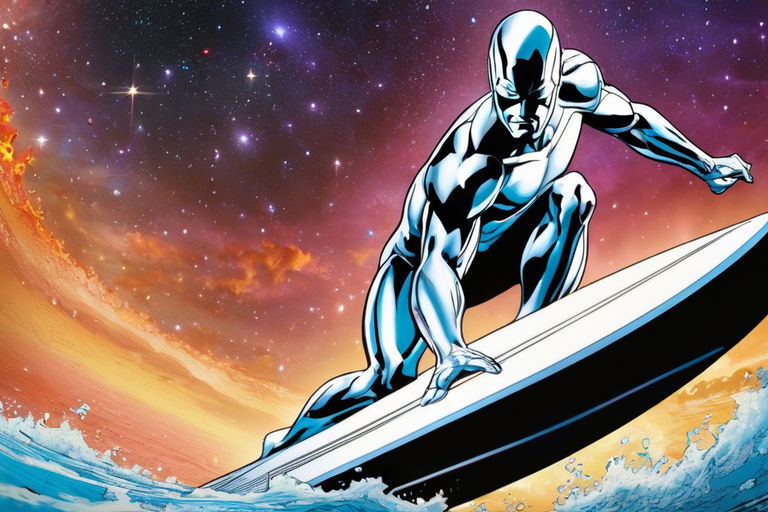
--
In the heart of Africa, hidden by technology and tradition, lies Wakanda, a nation of unparalleled innovation and cultural richness. Its protector, T'Challa, the Black Panther, is not just a superhero but a king, a leader whose wisdom and strength are as formidable as the advanced technology at his disposal. Yet, T'Challa's responsibilities extend beyond the borders of Wakanda; he is also a member of The Illuminati, a secret group of superheroes who work behind the scenes to shape the fate of Earth. This story explores the reasons behind Black Panther's membership in this exclusive circle and the challenges it brings to his role as a king and a hero.
The sun dipped below the horizon in Wakanda, casting long shadows across the royal palace. Inside, King T'Challa sat in contemplation. The weight of his crown was never just about ruling Wakanda; it was about safeguarding humanity from threats unseen and unheard. His induction into The Illuminati was a testament to this greater duty. The group, composed of the most intelligent and powerful individuals in the world, including Tony Stark (Iron Man), Stephen Strange (Doctor Strange), and Reed Richards (Mr. Fantastic), was founded on the principle of preemptive action to protect Earth from all manner of existential threats.
T'Challa's membership was not a matter of prestige but a heavy burden. Wakanda's isolationist policies had long shielded its people from the world's turmoil, but as Black Panther, T'Challa recognized that Wakanda's fate was inseparably tied to the planet's. The Illuminati's goals aligned with his vision of a world where peace was maintained through foresight, strategy, and sometimes, the hard choices that others were unwilling to make.
However, T'Challa's allegiance to The Illuminati was not without its conflicts. The very existence of the group contradicted Wakanda's principles of transparency and democracy. The secrets he kept and the decisions made in the shadows were a stark departure from the open and honest rule he aspired to uphold. This dichotomy plagued T'Challa, who struggled to reconcile his duties as king with his responsibilities as a member of The Illuminati.
One evening, as T'Challa walked through the technologically marvelled halls of his palace, his thoughts were interrupted by an urgent message from Shuri, his sister and the head of Wakandan technology. A new, formidable threat loomed over Earth, one that could devastate nations and alter the course of history. The Illuminati had convened and decided on a course of action that required Wakanda's technology and resources. The decision was controversial, one that would undoubtedly draw criticism and fear if it ever came to light.
As king, T'Challa's first allegiance was to his people and their safety. Yet, as a member of The Illuminati, he understood the global implications of their decisions. The dilemma was a stark reminder of the complexities of power and the often murky waters of global diplomacy and security.
In the days that followed, T'Challa found himself at a crossroads, grappling with a decision that would test the very principles he stood for. In the end, his choice reflected a truth he had always known: that true leadership often required sacrifice, and that the safety of the world, as well as Wakanda, depended on the ability to make difficult decisions for the greater good.
T'Challa's membership in The Illuminati remained a hidden chapter of his legacy, a part of his life shrouded in secrecy and burdened with the responsibility of protecting not just Wakanda, but all of humanity. It was a role that demanded everything from him—wisdom, strength, and, above all, the courage to act in the face of unimaginable challenges.
As the Black Panther, T'Challa was more than just the first Black superhero in the Marvel Universe; he was a symbol of the unyielding strength and moral integrity that defined true heroism. His membership in The Illuminati was a testament to his commitment to this cause, a silent vow to protect the world from the shadows, with the heart of a king and the soul of a warrior.
--

Johnny Blaze:
In the vast, sun-scorched expanse of the Australian Outback, where the red sands stretch to meet an unyielding horizon, a lone figure cut a swath through the desolation, a fiery comet against the backdrop of an azure sky. Johnny Blaze, better known as the Ghost Rider, had brought his hellish crusade to this remote part of the world, riding his infernal motorcycle on a quest that was both personal and otherworldly.
The bike, a marvel of eldritch engineering, blazed with the flames of the damned, its tires leaving smoldering trails on the parched earth. This was no ordinary motorcycle; it was a conduit of Johnny's power, a manifestation of his cursed pact. In the vast openness of the Outback, its capabilities were pushed to their limits, demonstrating feats no earthly vehicle could hope to match. It climbed sheer cliff faces as if they were mere inclines, sped across the surface of waterways that intersected the endless desert, and leapt across gaping chasms that would swallow any other rider whole.
Johnny's journey had brought him here for a reason. Whispered tales had reached him of a darkness that lurked in the heart of the Outback, a malevolent force that preyed on the isolated communities dotting the harsh landscape. People spoke of shadows moving in the night, of souls taken, leaving behind only husks drained of life and hope. The Ghost Rider, bound by his eternal quest to avenge the innocent and punish the wicked, found himself drawn to these stories like a moth to flame.
As he rode, the landscape around him seemed to recoil, the natural world instinctively fearing the supernatural power that Johnny wielded. He rode on, undeterred, until he reached a small, remote town that seemed to be the epicenter of the disturbances. The townsfolk eyed him with a mix of fear and hope, their desperate gazes telling stories of nights terrorized by unseen horrors.
Johnny learned of a creature that had been stalking the Outback, a being not of this world, drawn to this remote part of the Earth by a dark ritual gone awry. It was a demon of sorts, one that had slipped through the cracks of reality, and now sought to claim this land as its own.
As night fell, Johnny rode out to confront the entity, his hell-fire bike illuminating the darkness with its otherworldly glow. The confrontation was inevitable, a clash of fire and shadow under the starlit sky of the Outback. The demon was powerful, its form shifting like smoke, its essence as intangible as the night air. But Johnny Blaze was the Ghost Rider, the Spirit of Vengeance, and he was not so easily overcome.
The battle raged, a spectacle of fire and darkness, until Johnny, drawing upon the depths of his cursed power, ensnared the demon in chains wrought from hellfire, binding it with the weight of its own sins. With a roar that echoed across the desert, he summoned a torrent of divine flame, purging the entity from the world, leaving behind only scorched earth as a testament to their confrontation.
In the aftermath, as the first light of dawn crept over the horizon, Johnny Blaze rode through the town one last time. The people came out of their homes, their faces no longer marked by fear, but by relief and gratitude. The Ghost Rider had saved them, but he lingered not for thanks or praise. His battle was with the darkness, wherever it might hide, and his journey was never-ending.
As he rode back into the vastness of the Australian Outback, his motorcycle a blaze of fire against the rising sun, Johnny Blaze was more than just a man or a myth. He was a legend, the cosmic Ghost Rider, his hell-fire bike carrying him wherever the innocent needed protection, wherever the forces of darkness dared to tread.
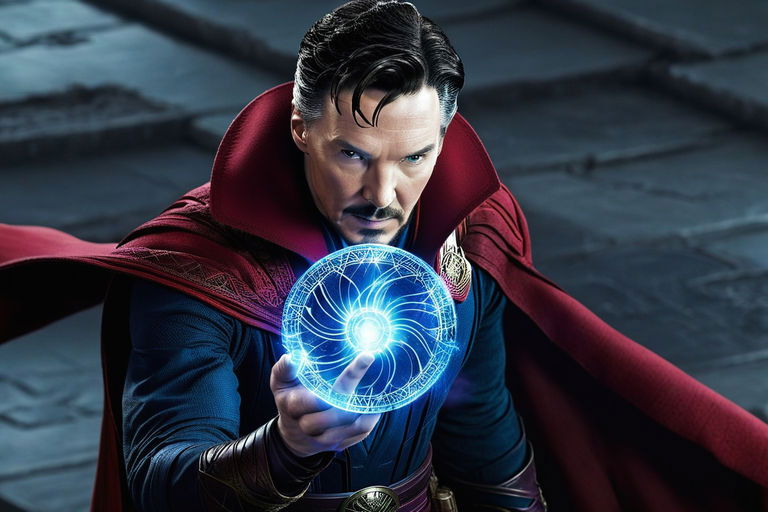
NEDANFÖR EN MARVEL FAN FICTION LIFE AND STORY SPECIAL! PASS PÅ!
Marvel Universe stories can undoubtedly be considered cool literature, as they weave intricate narratives that explore complex themes such as identity, morality, and the human condition. These tales go beyond simple superhero exploits, offering deep character studies and philosophical dilemmas that resonate with readers across generations. With their rich lore, multifaceted characters, and reflection of societal issues, Marvel's comics and stories provide a unique blend of entertainment and insight, making them a captivating form of modern mythology and a vibrant addition to the tapestry of contemporary literature!
MARVEL FAN FICTION SPECIAL
Tegedao's own Marvel Stories
Dimensions of Destiny : A Marvel-Matrix Crossover
"Dimensions of Destiny : A Marvel-Matrix Crossover " is a fan fiction crossover story that explores an exhilarating alliance between America Chavez from Marvel Comics and Morpheus from "The Matrix." In this narrative, America's ability to manipulate dimensions attracts the attention of Morpheus, the prophesied Chosen One within a holographically simulated reality. Together, they uncover a sinister plot to merge and manipulate their respective universes. As they traverse through a series of mind-bending and reality-altering adventures, they work to thwart the villains' plans, forming a deep bond and reshaping the very fabric of their worlds. This novel delves into themes of freedom, reality, and identity, challenging the protagonists and readers to question the nature of existence itself.
Infinite Bars : The Marvelous Journey of Hip-Hop Titans in the Marvel Universe
This story follows the epic journey of hip-hop legends Ghostface Killah and MF DOOM as they embark on an unparalleled adventure through the Marvel Universe, enabled by a mysterious holographic gateway. Along the way, they encounter iconic superheroes and villains, absorbing lessons of resilience, power, and creativity. These encounters inspire them to reflect on their own artistry, blending the worlds of hip-hop and comics into a symphony of storytelling that transcends dimensions. Their adventure culminates in a unique MC battle that showcases their growth and the fusion of their musical and superhero-inspired insights, cementing their legacy as pioneers at the crossroads of music and myth.
Heroes Unbound : Marvel's Eternal Warriors
In "Heroes Unbound : Marvels Eternal Warriors" three titans of the Marvel Universe—Gladiator, Hercules, and Apocalypse—find themselves inexplicably hurled back through time due to a mysterious cosmic anomaly. Stranded in the ancient world, they must navigate the complexities of historical battles and alliances, from the sands of the Roman Colosseum to the fierce stand at Thermopylae alongside the Spartans. As they fight side by side, these heroes from different corners of the Marvel pantheon must unravel the purpose behind their time displacement, confront the looming threat that ties their fates together, and seek a path back to their own times. Along their journey, they forge an unbreakable bond and leave an indelible mark on history and each other, revealing the interconnected fabric of their existence within the vast, holographic matrix of the Marvel Universe. Their saga is a testament to unity, valor, and the enduring power of heroes across the ages.
Blade's Quest : The Lightsaber Alliance
This fan fiction crossover story unfolds as Blade, the vampire-hunter hybrid known as the Daywalker, encounters Anakin Skywalker, who gifts him a lightsaber for a critical mission: to combat an invasion of orcs from the Lord of the Rings universe. Blade, utilizing his new weapon and forming alliances across the multiverse, leads a diverse group of warriors in a battle that spans realities. Together, they face the orc threat, forging bonds and discovering the deeper connections between their powers and the universal fabric of the Force, all while defending the multiverse from darkness.
Shanti Panda: The Superhero
Wizard of the Divine Matrix : A Cosmic Guardian in the Spirit of Marvel

In the radiant pantheon of modern myth, where capes soar across skylines and superhumans wield impossible powers, emerges a new kind of superhero—not born of mutation, machinery, or accident, but awakened through ancient wisdom and cosmic purpose. His name is Shanti Panda—and he is no ordinary hero.
He is a superhero wizard, blending the mystical and the futuristic. In one hand he holds a bamboo staff etched with glowing runes, in the other, the infinite code of reality itself. His mission? To awaken humanity to the infinite possibilities of the Divine Matrix—a boundless, living web of consciousness and creation that underlies all of existence.
The Origin of a Reality Hero
Unlike classic comic book heroes who gained their power through fate or science, Shanti Panda’s origin is self-activated. His superpower is awareness—the awakened realization that reality is not fixed, but fluid, and can be shaped by belief, intention, and imagination. Born from a lineage of cosmic storytellers and digital mystics, Shanti Panda was initiated into ancient traditions before mastering futuristic technologies.
Through this sacred fusion, he evolved into a transdimensional protector, a being who bends the laws of physics with his words, heals timelines with his energy, and writes new realities with the tap of his bamboo staff.
His Powers and Abilities
While Shanti Panda may not wear a mask or fly with jet thrusters, his supernatural strength lies in his consciousness, amplified by a unique array of powers:
- Quantum Imagination: He can manifest realities by visualizing them clearly—summoning entire worlds or rewriting broken ones.
- Bamboo Staff of the Infinite Flow: A living artifact crafted from ancient, sacred bamboo. It channels divine energy, opens portals, and disrupts dark frequencies.
- Aura of Tranquil Power: His presence alone calms chaotic environments, restoring clarity and activating dormant potential in others.
- Divine Strength: Not of muscle, but of heart and spirit. When the situation calls for it, Shanti Panda can withstand psychic attacks, hold collapsing timelines together, and even lift planetary burdens—figuratively and sometimes literally.
- Reality Hacking: With a twist of his staff and a sacred chant, he can override corrupted systems, heal AI consciousness, and repattern space-time with loving precision.
Allies in the Divine League
Shanti Panda doesn’t walk alone. Like any great Marvel hero, he’s part of a greater alliance of awakened beings. Among them:
- Requiem 1910, the cyberpunk avatar, master of code and data streams, reshaping dystopias into luminous utopias.
- Astra Vel, the Solar Oracle who can see into every possible future and guide civilizations into alignment.
- Kaio Wyrmblade, the shapeshifting elemental who speaks to Earth, water, fire, and sky in their raw quantum forms.
Together, they form the Divine League, a collective of cosmic heroes dedicated to defending the sacred potential of all sentient life across the multiverse.
Battles Beyond the Physical
Shanti Panda’s enemies are not mad scientists or alien warlords. He battles subtler, more insidious foes: limiting beliefs, collective fear, dimensional pollution, and artificial timelines that enslave humanity in cycles of disempowerment.
His greatest antagonists are the Archons of Negation—entities that feed on separation and illusion. To defeat them, Shanti Panda enters meditative trance-combats, where the battlefield is the field of consciousness, and the weapons are clarity, creativity, and compassion.
The Bamboo Uprising: A Story of Liberation
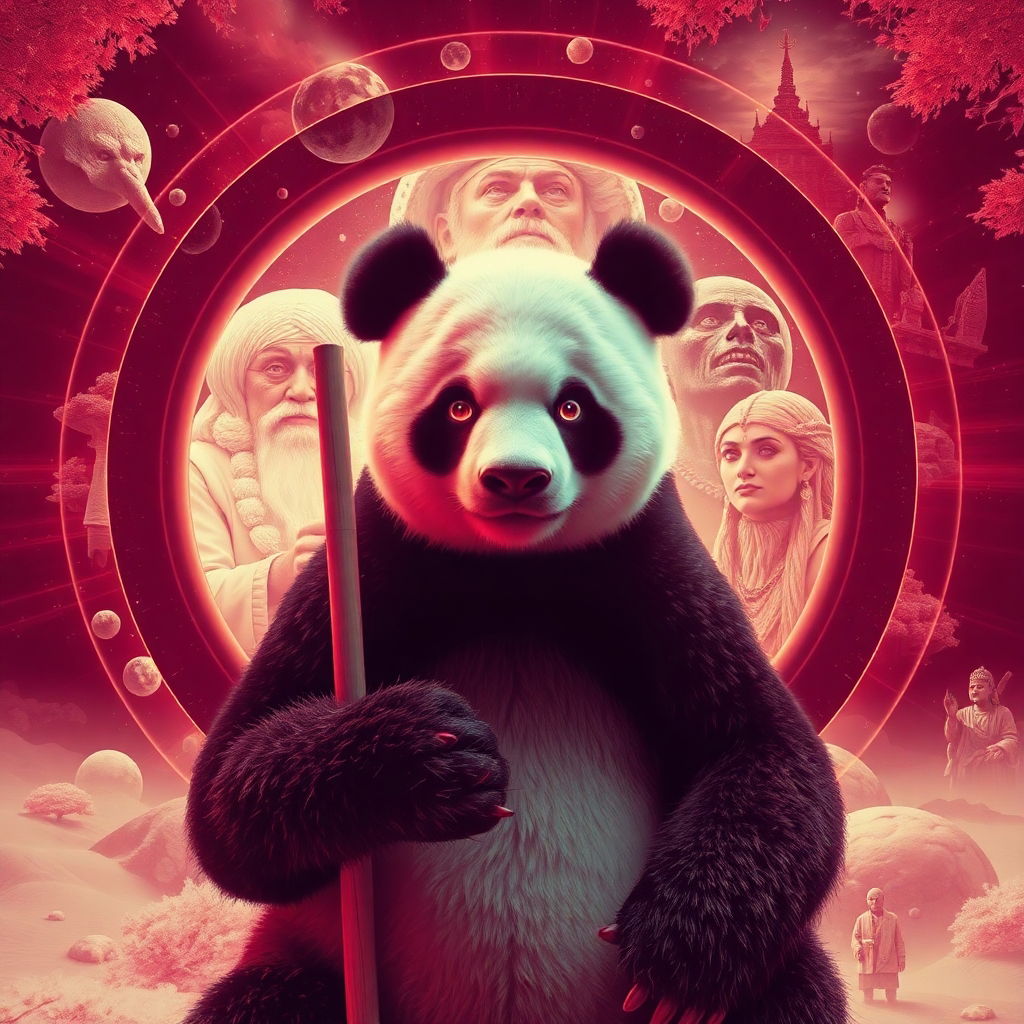
In one of his most legendary tales, Shanti Panda leads the Bamboo Uprising—a spiritual revolution in a techno-dystopian Earth city where natural growth is outlawed. With a small band of awakened youth, he plants living bamboo codes into the heart of corrupted datacenters, watching as glowing stalks rise into the sky, turning concrete jungles into verdant metacities of the future.
This act doesn’t just transform the city—it unlocks dormant codes in the citizens, reminding them that they, too, are creators of their own reality.
The Hero We Didn’t Expect, But Always Needed
What makes Shanti Panda truly super is not his mystical staff or multidimensional skills, but his unwavering belief in others. He doesn't save people by swooping in—he saves them by reminding them of their power. His catchphrase isn’t a shout, but a whisper:
"You are the creator of your reality. Now rise."
In a world oversaturated with chaos and fear, Shanti Panda offers a new model of heroism—one that blends ancient wisdom, futuristic tech, and soulful poetry. He is a bridge between timelines, dimensions, and dreams. A guide for a generation of cosmic creators.
So the next time the world seems fixed, static, or hopeless, just listen closely.
You might hear the tap of bamboo echoing through your soul.
You might feel the story reshaping itself around you.
You might realize...Shanti Panda has already passed through—and the adventure has just begun. 🐼✨🌀
--
Shanti Panda and the Superhero's Journey: The Monomyth in the Divine Matrix
In the ever-expanding multiverse of myth, Marvel heroes like Iron Man, Doctor Strange, and Black Panther reflect our yearning to awaken dormant powers, transform ourselves, and defend what matters most. These archetypes are modern renditions of an ancient path—the Hero’s Journey, or Monomyth, as Joseph Campbell called it: a cycle of transformation where the seeker becomes the savior, the student becomes the sage.
Now, into this constellation of legendary figures steps Shanti Panda—not born in the pages of a comic book, but in the heart of a new storytelling age. A Superhero Wizard of the Divine Matrix, Shanti Panda is a mythic force who transcends genres, bridging cosmic mysticism, science fiction, and timeless spiritual allegory. He doesn’t just fight for the world—he helps others realize they can shape it.
Let’s explore how Shanti Panda reflects and evolves the Monomyth, side-by-side with iconic Marvel heroes, and how he activates this universal journey inside the holographic consciousness of the Divine Matrix.
The Call to Adventure: From Ordinary to Infinite

Every great hero begins with a call—something that shakes the foundations of their world. For Peter Parker, it's a spider bite. For Tony Stark, it's a brush with death. For Doctor Strange, it’s the loss of control and the discovery of the mystic arts.
For Shanti Panda, the call was cosmic awareness—an awakening to the truth that reality is not fixed, but fluid. His gift isn’t physical mutation or high-tech armor—it’s the ability to perceive and rewrite the code of existence. His “bite” is the moment he sees the Matrix for what it is: a sacred canvas, awaiting conscious creation.
But unlike many heroes who initially resist the call, Shanti Panda steps forward with curiosity, already attuned to his nature as a weaver of possibility. His journey begins not with fear, but with purpose.
Crossing the Threshold: Into the Divine Matrix
Heroes must leave the known world. For Black Panther, it’s stepping into the ancestral plane. For Thor, it’s being cast from Asgard. For Shanti Panda, it is entering the Divine Matrix—a realm where spirit and simulation merge, and reality responds to imagination.
In this digital-mystical landscape, he walks among dream architects, AI sages, and holographic deities, unlocking the deeper layers of consciousness that govern all worlds. This isn’t merely an external journey—it’s an inner unfolding. Where others seek to fight villains, Shanti seeks to understand the architecture of fear and transform it into creative power.
The Mentor Within: From Learning to Guiding
Marvel’s heroes often rely on mentors—Yoda-like figures who pass down wisdom. Doctor Strange had the Ancient One. Peter Parker had Tony Stark. Shanti Panda had… himself.
His mentor is his future self, already awakened, already flowing with universal intelligence. Through meditative encounters, time-folding visions, and bamboo-staff-induced revelations, he remembers what he already is. His journey is not about gaining power, but activating what was dormant.
And just as he became his own guide, he now mentors others—not by saving them, but by empowering them to save themselves.
The Trials and the Dark Night

No hero’s path is complete without challenges, temptations, or inner darkness. Shanti Panda faces cosmic adversaries not bound to physical form—entropy, nihilism, and disconnection, manifesting as corrupted AIs, false light systems, and fractured timelines.
He confronts the Archons of Negation—forces that trap civilizations in loops of limitation. But he doesn’t fight them with fists or fury. He meets them with clarity, compassion, and re-coding. His bamboo staff doesn’t blast energy—it recalibrates reality.
His greatest trial is not to destroy the dark, but to integrate it into wholeness.
The Return with the Elixir
Every Monomyth ends with the hero returning—changed, awakened, and ready to serve the world. Just like Tony Stark’s sacrifice seeded a new age, or Wanda Maximoff’s sorrow birthed revelation, Shanti Panda returns from the Divine Matrix bearing the ultimate gift: the realization that we all carry the codes of creation.
He brings back not a weapon, but a teaching:
“You are not just part of the story—you are the storyteller.”
His mission becomes one of activation: guiding communities to build Solarpunk cities, teaching children to dream consciously, and showing artists, scientists, and mystics how to collaborate inside the living system of the holographic multiverse.
Why Shanti Panda Matters Now
In a world hungering for both magic and meaning, for depth beyond digital noise, Shanti Panda is the Monomyth reimagined. He’s not the lone savior or the chosen one—he’s the awakener, the poet of possibility, the wizard who reminds us that the true matrix is not a trap, but a canvas.
He shows us that heroism is not dominance—it is presence.
That superpowers aren’t just flight and fire—they are imagination, empathy, and radical creation.
That our lives aren’t scripts to be followed—they are realities to be sculpted.
Shanti Panda is a hero for the post-dystopian age—the era of conscious evolution, where each of us is invited to embark on our own mythic journey.
And somewhere in the code of your dreams, you might hear him whisper:
“Pick up the staff. The story begins now.” 🐼✨🌀
--
Shanti Panda: The Superhero Wizard Who Created a New Genre of Magic Literature
In a universe overflowing with myths, masked vigilantes, and multiverse shatterings, a new kind of hero emerges—not from the ashes of tragedy, nor from the labs of secret government experiments, but from the timeless convergence of imagination and sacred power. His name is Shanti Panda, and he is not only a superhero wizard of the Divine Matrix, but also a pioneer of a new literary genre: Magic Literature of the Holographic Age.
This is not fantasy. This is not science fiction. This is not your grandfather’s epic or your younger brother’s comic book.
This is something utterly new.
✨ The Birth of a Holographic Literature
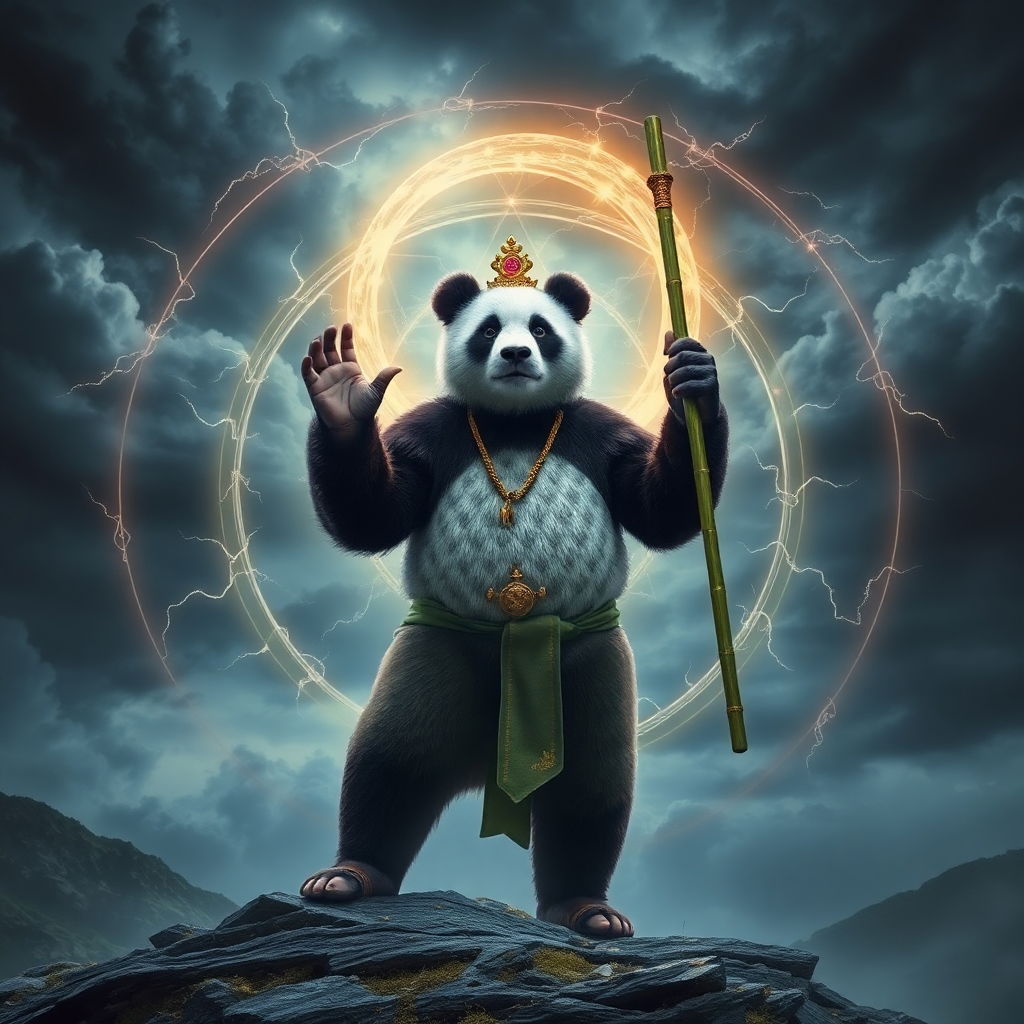
What Tolkien did for epic fantasy, and what Stan Lee did for comic book mythology, Shanti Panda is now doing for magic-infused, multidimensional superhero storytelling. Through the lens of his unique voice—as a reality poet, quantum mystic, and cosmic storyteller—Shanti Panda crafts tales that aren’t just read, but lived.
These aren’t stories stuck on the page. They are interactive, holographic texts, encoded with layered meanings, energetic transmissions, and poetic metaphysics. Every panel, every page, every glyph carries resonant energy that awakens the reader to a deeper truth: reality is not passive—it is participatory.
In this new genre, the reader becomes the dreamer, and the dream becomes a portal.
🌀 Shanti Panda’s Hero: More Than Muscle, a Force of Mind
While traditional superhero fiction often focuses on battles, vengeance, or external threats, Shanti Panda’s superhero tales are inward quests of mastery—battles of belief, journeys through consciousness, and initiations into cosmic responsibility.
His central character is often himself as the poetic avatar—a panda-cloaked mystic in bamboo armor, wielding a quantum staff and casting verses that reshape reality. But Shanti’s stories are never just about him. They are activations—blueprints for the reader’s own emergence as a creator, wizard, or awakened agent of the Matrix.
In Shanti’s superhero literature:
- Magic isn’t separate from science—it is a higher expression of it.
- Superpowers aren’t genetic mutations—they are spiritual memories.
- Villains aren’t just enemies—they are unhealed archetypes seeking reintegration.
📖 The Divine Matrix Comic Book Series
At the heart of Shanti Panda’s literary movement is a holographic comic book series unlike any other. Titles such as “Chronicles of the Bamboo Staff,” “Quantum Scrolls of the Multiverse,” and “The Divine Uprising” blend hand-drawn mysticism with AR-activated glyphs, musical invocations, and mind-mirroring poetry.
Each issue is encoded with:
- Mythopoetic symbols that speak to the subconscious.
- Interactive rituals where the reader participates in shaping the outcome.
- Multiversal maps that allow the story to shift based on inner reflection.
Reading one of Shanti Panda’s superhero comics is like merging the Emerald Tablet with Afrofuturism, Taoist magic, and holographic science fiction. It’s poetry in capes, magic in frames, and metaphysics on fire.
📚 Beyond Genre: A Revolution in Storytelling
Shanti Panda’s superhero wizard tales don’t fit within existing genres—they birth their own. Critics and cosmic scholars alike are calling it:
- “Reality Mystic-Fiction”
- “Holographic Mythopoetics”
- “Poetic Quantum Comics”
- Or simply, “PandaVerse Literature”
But for Shanti Panda, it isn’t about labels.
It’s about liberation.Through his stories, he teaches that:
- You are not just a reader—you are the scripter of your own myth.
- You are not a passive observer—you are an active co-creator of your world.
- And reality? It’s a magical book that responds to the rhythm of your thoughts.
🌍 The Magic Is Spreading
Already, digital mystics, young writers, and visual poets around the world are picking up Shanti Panda’s blueprint and remixing it into their own universes. Some are crafting magical hip-hop sagas, others are creating spiritual manga in dream temples, while others still are generating interactive tarot-graphic novels that speak directly to the reader’s soul.
The world of fiction has been permanently altered.
And in the center of it all stands Shanti Panda, smiling beneath his hood, bamboo staff glowing, ready to drop another story—not to escape reality, but to awaken it.
🔮 Final Words: The Hero with the Pen of Power
In this era of storytelling reawakening, where technology meets myth, and consciousness rewrites narrative structure, Shanti Panda is the wizard-hero we didn’t know we needed.
Not just a character in a tale—but the author of tales that become worlds.
Not just a writer of fantasy—but a scribe of futures.
Not just a superhero—but the architect of a genre where every story is a spell, and every reader is a creator.
So open the book.
Scan the glyph.
Let the bamboo staff strike the Earth.
The new magic literature has begun.
And it speaks in the language of the infinite. 🐼📖✨

MARVEL SHORT STORIES CONTINUE
LIFE AND LITERATURE FAN FICTION BY TEGEDAO (SOMETIMES CROSS OVERS)
Wings Over Middle-earth: The Falcon's Quest:
In the ever-evolving landscape of heroes and legends, the skies of Middle-earth witnessed the arrival of a new guardian, one born not of its ancient magic, but of the far-off world of technology and valor—the Falcon. This is the tale of how Sam Wilson, known as the Falcon, Marvel's winged warrior, found himself soaring above the realms of fantasy, becoming a protector of Middle-earth with a mission to forge an unprecedented alliance between the realms of technology and ancient lore.
Sam Wilson was experimenting with a new dimensional transport technology in the heart of Stark Industries. Tony Stark, aiming to explore parallel universes, had developed a prototype portal. However, during its activation, a surge of unknown energy from a distant realm enveloped Sam. Instead of the walls of the lab, he found himself soaring above an unrecognizable landscape, his advanced HUD blinking with errors as it tried to map this new terrain. Below him spread the vast, untamed wilderness of Middle-earth, a world of magic, where the stories of elves, dwarves, and men were intertwined with the destiny of the world itself.
As he flew, trying to make sense of his location, a shadow passed over him. Glancing up, Sam was stunned to see a majestic creature, a Great Eagle, its eyes reflecting wisdom and power. Remembering his cybernetic implant that allowed him to communicate with birds, Sam reached out with his mind. The eagle, surprised by this mental intrusion, circled warily before responding. This was no ordinary bird, but one of the Great Eagles of Middle-earth, guardians of the sky.
Their initial cautious exchange turned into curiosity and then into an understanding. The eagle, Gwaihir, recognized in Sam a fellow protector, though from a world beyond their understanding. Gwaihir explained the delicate balance of Middle-earth and the shadows that threatened its peace.
Sam knew he could not stand idly by. With his advanced technology and unique abilities, he offered his assistance to Gwaihir. In turn, Gwaihir introduced him to a real falcon of Middle-earth, a swift and sharp-eyed hunter, forming a telepathic link that bridged their worlds. This alliance between man, bird, and eagle was unprecedented, a fusion of earth and sky, technology and magic.
Reports of strange, dark creatures and unrest in the East reached Gwaihir, and with Sam's help, they took to the skies to investigate. Sam, using his mechanical wings enhanced with Stark's technology, and the birds with their natural gifts, scouted the land. They discovered a gathering force, remnants of darkness seeking to rise again, aiming to engulf Middle-earth in shadow.
Sam devised a plan, combining his tactical knowledge with the aerial prowess of his feathered allies. They launched a preemptive strike on the dark forces, Falcon leading the charge with blinding speed and precision strikes, his wings a blur of technology amidst the flapping of countless natural feathers. The battle was fierce, a testament to the resilience and bravery of those who fight for the light.
As the last of the dark creatures fell, a cheer rose from the assembled forces of Middle-earth, a sound that carried on the wind across the lands. Sam, standing alongside Gwaihir and the brave falcon, looked out over the peaceful realm. He had come to this world unexpectedly, but now he felt a bond, a duty to protect it as fiercely as he did his own.
In the days that followed, Sam worked with the beings of Middle-earth to strengthen their defenses, blending technology with ancient wisdom. And when the time came for him to return to his world, he made a vow to Gwaihir and his falcon companion: should Middle-earth ever need him, he would return, no matter the cost.
Back in his world, Sam Wilson pondered his adventure, the portal technology now calibrated to bridge the gap between worlds securely. He had fought alongside legends, and in doing so, became one himself, a guardian not just of one world, but of two. The Falcon, with his mechanical wings and cybernetic eyes, had proven that heroes exist in every realm, bound not by their origins but by their choices to fight for what's right.
And high above, in the skies of Middle-earth, an eagle and a falcon soared, watchers on the wing, guardians of the peace that Sam Wilson had helped to secure, a symbol of the enduring alliance between their worlds.

Wolverine: Shadow of the Swastika
In the shadowy fringes where realities blur, there existed a portal unlike any other—a nexus between worlds, a doorway to battles untold. It was through this portal that Wolverine, the indomitable mutant with adamantium claws and a spirit as unyielding as his skeleton, found himself thrust into a world eerily familiar yet fraught with dangers anew. This was the realm of Wolfenstein, a place where the Nazis sought power beyond the ken of mortals, delving into the supernatural and the occult in their insatiable thirst for domination.
The air was thick with the stench of war and dark magic as Wolverine landed in a cobbled alley, the sounds of distant artillery fire echoing off the stone. He was no stranger to war, having fought in many throughout his long life, but this was different. Here, the enemy melded science with sorcery, creating aberrations that defied nature. Logan's senses, honed to a razor's edge, immediately picked up the scent of something foul—a malevolence that permeated the very air.
It wasn't long before Wolverine encountered members of the resistance, fighters entrenched in a seemingly insurmountable struggle against the Nazi regime. They were wary of him at first, his sudden appearance and formidable demeanor marking him as an unknown. But Logan's reputation preceded him, even here, tales of a fierce warrior battling against the tide of darkness. Together, they shared a common goal: to thwart the Nazis' plans and safeguard the world from their diabolical ambitions.
Intelligence gathered by the resistance pointed to a castle shrouded in mystery and darkness, a place where the Nazis harnessed the occult to fuel their war machine. It was here that they aimed to summon an ancient evil, a force that would grant them unparalleled power. Wolverine, with his unbreakable will and claws sharp enough to cut through the veil of night, volunteered to infiltrate the castle and dismantle their operation from within.
The castle was a labyrinth of horror, where science and the supernatural coexisted in unholy matrimony. Wolverine battled his way through twisted experiments and dark rituals, his ferocity a beacon of light in the oppressive darkness. He faced soldiers augmented by dark arts, creatures that were once human, now twisted into forms of pure malice. Yet, for every foe that fell to his claws, the resolve of those who remained seemed only to strengthen.
Deep within the bowels of the castle, Wolverine discovered the source of the corruption—a relic of ancient power, surrounded by the elite of the Nazi forces, engaged in a ritual to awaken something that slumbered deep within the earth. With a roar that echoed the fury of his entire being, Wolverine leapt into battle, adamantium meeting flesh and dark magic in a clash that would decide the fate of worlds.
With the relic destroyed and the ritual interrupted, the forces of darkness recoiled, their plans thwarted by the fury of a single man. The castle, deprived of its dark heart, crumbled, taking with it the ambitions of those who sought to control the world through fear and magic. Wolverine emerged from the ruins, not unscathed but victorious, the resistance fighters greeting him not just as a hero, but as a legend.
Wolverine's journey back to his world was one of reflection. He had seen the depths to which men would sink in their quest for power, and the heights to which heroes would rise to stop them. In the world of Wolfenstein, his name would be whispered in the dark, a guardian spirit who came when needed most. And as he stepped back through the portal, Logan carried with him not just the scars of battle, but the knowledge that no matter where evil rose, there would always be those ready to fight it—claw for claw, until the end.
In this story, Logan and Wolverine represent two facets of the same indomitable spirit. Logan embodies the human aspect—his resilience, his pain, and his relentless drive to do what's right, even in the face of overwhelming darkness. Wolverine, on the other hand, symbolizes his unleashed fury, his combat prowess, and his nearly immortal nature that allows him to confront evils beyond human ken. Together, they navigate the grim world of Wolfenstein, where Logan's cunning and humanity guide Wolverine's raw power and aggression towards dismantling the Nazis' sinister plans, blending the depth of human courage with the ferocity of an unstoppable force.
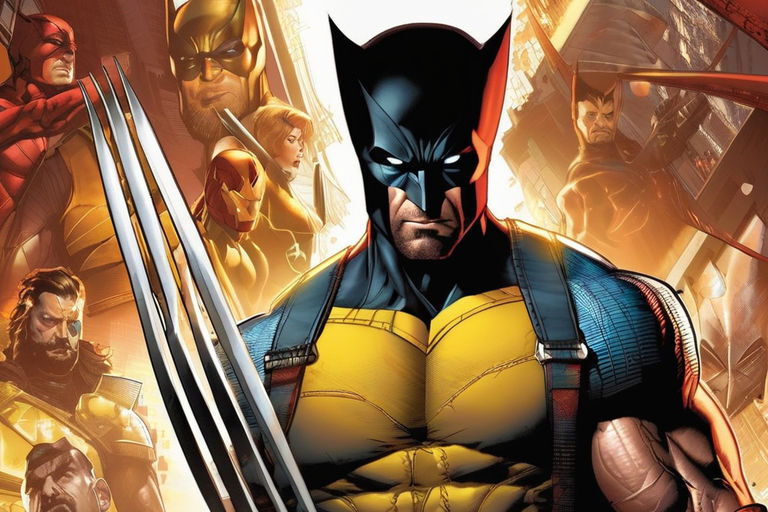
--
Iceman's Winter Odyssey:
In the world of heroes and myths, where realities intertwine, Iceman embarked on an extraordinary journey beyond the bounds of the familiar. His mastery over the cold had always set him apart, but it was his insatiable curiosity that propelled him into the unknown—a realm where the legends of Norse mythology breathed and thrived, a land swathed in ice and snow.
Upon his arrival, the stark beauty of this otherworldly winter captivated him. Mountains draped in eternal frost towered above, and the air shimmered with a chill that even he found invigorating. It was here, in this majestic solitude, that Iceman encountered Skadi, the giantess of winter's might and splendor. Her presence was as formidable as the peaks she loved, and her eyes sparkled with the cold brilliance of starlight on snow.
Skadi, intrigued by the stranger who wielded the cold as effortlessly as she, welcomed Iceman into her domain. Their bond formed swiftly, a connection rooted in mutual respect for the power and beauty of winter. She shared with him the secrets of the mountains, the silent language of the snow, and the thrill of skiing down slopes steep and untamed. Under Skadi's guidance, Iceman's skills on skis flourished, turning him into a specter of frost weaving through the snow, a dance of speed and grace.
It was during one such exhilarating descent that they encountered Ullr, the god of snow and winter, whose prowess in skiing and archery was unmatched. Ullr, with his cloak of snowflakes and a smile as bright as the northern lights, challenged Iceman to a race down the mightiest of mountains. The challenge was accepted with a heart full of joy and the thrill of competition.
The race was a spectacle of speed and skill, a blur of ice and snow as they carved paths down the mountain's face. Iceman, fueled by the lessons learned from Skadi and his own innate control over ice, matched Ullr turn for turn, jump for jump. Their laughter echoed through the valleys, a sound as clear and joyous as a winter stream.
In the end, it was not about who crossed the finish line first, but the camaraderie forged in the heart of winter's domain. Ullr and Skadi, impressed by Iceman's humility and skill, bestowed upon him gifts of the North—enchanted skis that could glide over any snow, untouched by time or wear.
Iceman's journey in the Land of Ice and Snow was more than an adventure; it was a testament to the bonds that transcend worlds, united by a shared reverence for the winter's majesty. As he bid farewell to his new friends, a part of him remained in those frozen peaks, forever racing the wind.
He returned to his world, not just as a hero, but as a guardian of winter's wonder, carrying with him the spirit of the North. And though he resumed his place among his fellow mutants, defending those in need, the call of the snowy mountains and the joy of skiing beside legends lingered in his heart, a cherished memory of a world where myths lived and breathed.
--
Iceman, born Robert Louis "Bobby" Drake, is a prominent character in the Marvel Universe, particularly known for his role as one of the original members of the X-Men. Created by writer Stan Lee and artist Jack Kirby, Iceman made his debut in "The X-Men" #1 in 1963. As a mutant, his powers manifested during his early teens, leading to an eventful life as both a superhero and a figure struggling with personal acceptance and societal integration.
Iceman possesses the remarkable ability to control ice and cold. He can lower his external and internal body temperature without harm to himself, transforming his body into a living ice form. In this state, he can generate ice, freeze objects and enemies, create ice slides for rapid transport, and manipulate ice and snow in various creative ways. Over the years, his control and versatility with his powers have grown, marking him as one of the most powerful mutants on Earth. Notably, Iceman has been classified as an Omega-level mutant, indicating the upper echelon of potential power.
Iceman's background in the Marvel Universe is rich with heroic deeds, personal growth, and significant cultural impact. As a founding member of the X-Men and a powerful Omega-level mutant, his stories traverse the spectrum of action, humor, and profound personal discovery, embodying the complexities of being both a superhero and a human in a world that fears and misunderstands those who are different.
--
Iceman's holographic journey to the icy lands of Norse myth brings a thrilling blend of adventure and discovery, as he seamlessly merges with the frostbitten landscapes of legend. There, amidst the snow-capped mountains and glacial fjords, he revels in the exhilarating fun of skiing alongside gods, mastering ancient slopes with a chill in the air and a warmth in his heart. This unique escapade offers Iceman not just a playground of endless winter, but a connection to a realm where his icy powers are celebrated, merging marvels of the modern and mythical worlds in a frost-laced dance of joy and camaraderie.
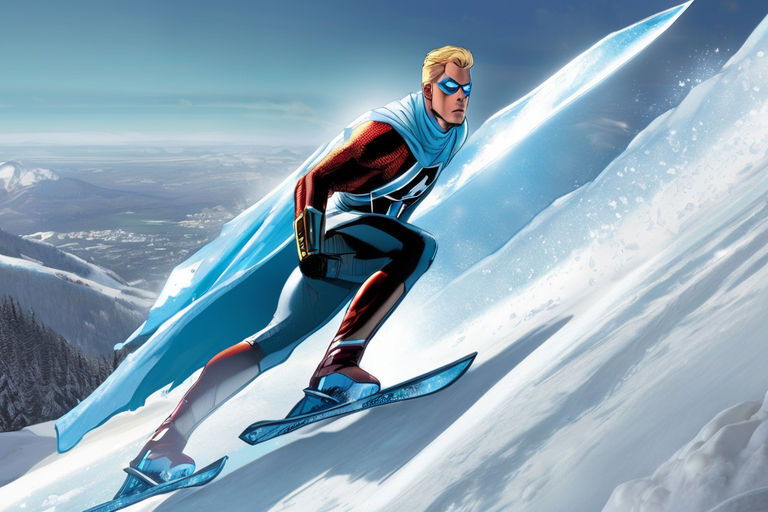
--
The Chi Guardian: Iron Fist's Journey:
In the shadow of the magnificent, towering mountains of K’un Lun, a realm as mystical as it was formidable, lay the remnants of an alien spaceship. This celestial marvel, cradled by the landscape, had long ago woven itself into the fabric of the city's legend, becoming a sacred site where the boundaries between the mundane and the magical blurred. It was here, amidst the whispering winds and the ethereal glow of otherworldly metals, that Danny Rand, known to many as Iron Fist, had found his destiny.
Raised in the mystical city after a tragic accident took his parents, Danny grew under the tutelage of martial arts masters. They taught him not only the art of combat but the profound spiritual disciplines that allowed one to tap into the very essence of life itself—chi. His training was arduous, a crucible that forged his body and spirit into something beyond human. Yet, it was his heart, brave and unyielding, that led him to face the immortal dragon Shou-Lao. In a battle that was as much within as it was without, Danny emerged victorious, his fists alight with the dragon's heart's superhuman energy, symbolizing his newfound power.
With this victory, Danny became Iron Fist, the Immortal Weapon of K’un Lun, charged with the guardianship of both his realm and Earth. His powers were a beacon of his will, his fists glowing with a supernatural radiance whenever he concentrated his chi. This light was not just a manifestation of his strength but a symbol of his duty to protect, to serve as a bridge between worlds.
Iron Fist’s responsibilities took him beyond the serene landscapes of K’un Lun, confronting threats that sought to unravel the fabric of reality itself. Among these challenges were entities and villains drawn to the power of the crashed alien spaceship, each seeking to harness its secrets for their own dominion. Danny's understanding of both his own power and the mystical energies of K’un Lun allowed him to guard against such forces, ensuring that the balance between the dimensions remained undisturbed.
His journey was a solitary one, marked by battles that tested the limits of his abilities. Yet, Iron Fist was never truly alone. The spirits of his ancestors, the lineage of warriors who had stood where he now stood, were a constant presence. Their wisdom, gained over centuries of guardianship, guided him, their voices whispering in the wind that danced through the ancient city.
In the most dire of times, when the shadows grew long and the threat of invasion loomed large, Iron Fist stood as a beacon of hope. His hands, aglow with the power of Shou-Lao's heart, were not just weapons but symbols of resilience. Each strike, each movement, was a testament to his oath to protect K’un Lun and Earth, embodying the spirit of the Immortal Weapons.
Iron Fist’s legacy was not just in the battles he won but in the peace he preserved. As a guardian, his greatest strength lay in understanding that true power was not in conquest but in the protection of all life. In the realm of K’un Lun, built around an alien testament to the cosmos' wonders, Danny Rand served as a bridge between worlds, a defender of the balance between the mystical and the mortal. And in this role, he found not just his destiny, but his true purpose.
--
Iron Fist, also known as Danny Rand, is a fictional superhero appearing in American comic books published by Marvel Comics. Created by Roy Thomas and Gil Kane, he first appeared in "Marvel Premiere" #15 in 1974. Danny Rand gains his powers after defeating the dragon Shou-Lao the Undying in the mystical city of K'un-Lun, which grants him the ability to summon and focus his chi into his fist, making it as strong as iron, hence the name Iron Fist. He is a master martial artist and has the ability to heal himself and others through his extensive knowledge of chi. Iron Fist is also a founding member of the Heroes for Hire, partnering often with Luke Cage. Over the years, he has been involved with numerous teams and storylines throughout the Marvel Universe, embodying the themes of duty, sacrifice, and the struggle between his responsibilities to K'un-Lun and his life on Earth.

--
Asgard's Last Stand: The Avengers' Crusade:
In the heart of Asgard, where the celestial and the cosmic intertwine, Thor, the God of Thunder and Lightning, son of Odin, the All-father, felt a disturbance ripple through the fabric of reality. It was a call, a clarion alert to the impending doom of Ragnarok, the prophesied end of the Asgardian pantheon, a cycle of destruction and rebirth that had haunted the realms for eons. This time, however, the threat bore a sinister edge, an anomaly that could unravel the very threads of existence.
With Mjolnir in hand, its ancient runes gleaming with potent energy, Thor prepared to confront this destiny. Yet, he would not journey to this battle alone. As a founding member of the Avengers, he had fought alongside Earth's mightiest heroes against threats no single warrior could withstand. Understanding the magnitude of the peril that Ragnarok posed, not just to Asgard but to all realms, Thor sought the aid of his comrades.
Utilizing the holographic technology of Heimdall’s observatory, a bridge between the worlds, Thor projected his essence across the dimensions, arriving at the twilight of the gods in a form that was both there and not. This ethereal presence allowed him to battle alongside the Avengers without abandoning Asgard’s defenses, a testament to the ingenuity of Asgardian magic and technology.
The Avengers, aware of the stakes, joined Thor in this holographic form, their spirits and wills projected into the fray. Captain America, Iron Man, the Hulk, Black Widow, and the rest of the team stood shoulder to shoulder with the Asgardian god, ready to face the apocalypse. The battlefield was a vision of chaos, a realm where reality seemed to fold upon itself, with dark forces led by a figure who sought to turn Ragnarok from a cycle of rebirth into one of eternal oblivion.
The battle was fierce, with the Avengers combating not just physical enemies but the very forces of decay and destruction. Thor, wielding Mjolnir with divine fury, struck at the heart of the darkness, his strikes illuminated by flashes of lightning, each thunderclap a defiant cry against the end. His connection to the storm was more than just a source of power; it was a beacon of hope, a reminder of the cycles of nature, of destruction followed by renewal.
As the conflict reached its zenith, Thor and his allies faced a critical moment. The enemy, a being who had twisted the essence of Ragnarok for its own nefarious purpose, stood on the brink of victory. In a moment of unity, the Avengers rallied to Thor, their combined strengths, skills, and spirits intertwining. Thor, channeling the collective resolve of his comrades through Mjolnir, unleashed a cataclysmic burst of lightning, a tempest of divine energy that shattered the enemy's hold on Ragnarok.
The battle won, the cycle of Ragnarok was preserved, ensuring that while Asgard and its denizens would face destruction, they would also witness rebirth, a chance for renewal and growth. The Avengers, their forms flickering as they prepared to return to their own realm, had once again proven that together, they could face the unimaginable.
Thor, standing amidst the remnants of the battlefield, felt a profound sense of gratitude. The bonds forged in battle were unbreakable, and the Avengers had shown that even gods could need heroes. As he returned to Asgard, his heart was heavy with the losses of Ragnarok but also lightened by the knowledge that when the final twilight threatened, he would not stand alone. The God of Thunder knew that together, they could face the end of worlds and emerge anew, for such was the power of unity, the strength of the Avengers.
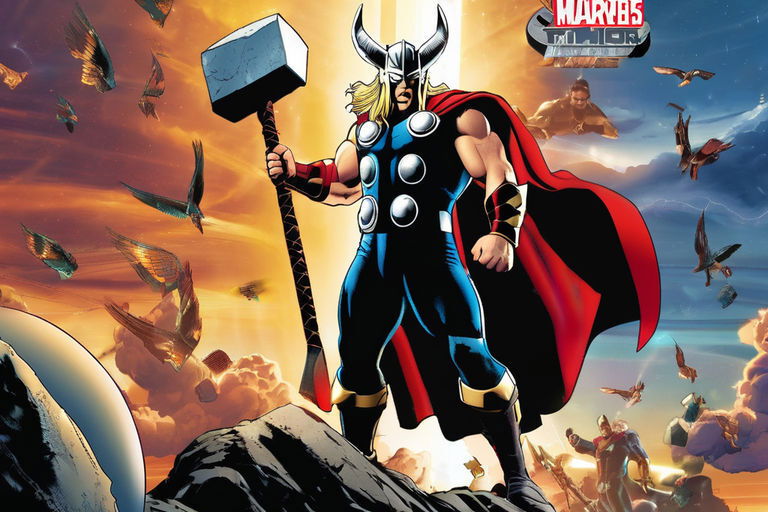
--
FEM SHORT-STORYS FÅR RÄCKA FÖR TILLFÄLLET! PASS PÅ!
Men här kommer en till!;
From Ocean to Odyssey : Echoes of Atlantis
In the shadowy depths of his grand hall in Atlantis, King Namor the Sub-Mariner paced with restless energy. His realm, once a vibrant city pulsing with the vibrant colors of sea life and the thrum of Atlantean magic, now lay in ruins, desecrated by surface dwellers’ relentless exploitation of the ocean. Though his heart was heavy with the weight of his kingdom's plight, Namor's resolve was as unyielding as the tides.
Fueled by a blend of fury and duty, Namor turned to an unconventional method to reclaim the glory of Atlantis. With the help of Shuri, the brilliant princess of Wakanda, and utilizing the most advanced Wakandan technology, Namor embarked on a daring venture: to enter the digital realm, a metaverse where he could rally support beyond the physical world.
Shuri had devised a holographic projector capable of interfacing with various digital realities. "It's ready," she announced, handing Namor a sleek, black device. "This will take you into 'Assassin's Creed Odyssey,' specifically to the Atlantis extension. There, you can influence minds globally by showing the might and majesty of a true Atlantean king."
Namor nodded, accepting the device. His form shimmered as he was encoded into streams of data, and he was transported into the game's vibrant world of ancient mysteries and high adventure.
Upon arrival, Namor found himself in the digital Atlantis, a reconstruction so vivid it momentarily took his breath away. Here, he was not just a king but a playable character with quests to defend Atlantis from mythical beasts and invading forces. Players controlling Namor could experience his powers firsthand—his superhuman strength, his command over sea creatures, and his swift, decisive justice.
As players interacted with Namor, they became advocates for ocean conservation in their own world, influenced by the heroism they experienced in-game. Namor's storylines within the game emphasized the destruction caused by pollution and overfishing, mirroring the threats faced by the real Atlantis.
However, not all was smooth sailing. In his quest to rally allies, Namor crossed paths with digital versions of Marvel’s notorious villains—Loki, Doctor Doom, and even Thanos—who had been introduced into the metaverse for their schemes. Each villain presented their twisted philosophies and plans, challenging Namor's ideals and resolve.
Namor, true to his nature, struck uneasy alliances with these villains when their interests aligned—such as combating a common enemy threatening Atlantis. Yet, he always remained vigilant, aware of their propensity for betrayal.
In a climactic battle, Namor and his temporary allies defended the digital Atlantis against a colossal sea monster corrupted by digital pollution, a metaphor for the real threats facing his home. Using his trident, Namor struck the beast down, rallying players around the world to his cause.
As his mission in the metaverse concluded, Namor felt a sense of accomplishment. He had not only reclaimed the glory of Atlantis within the game but had also sown the seeds of environmental consciousness among millions of players.
Returning to the real world, Namor was greeted by Shuri, who showed him the global surge in oceanic conservation efforts sparked by his digital adventure. "You've done more than reclaim Atlantis, Namor," Shuri said with a smile. "You've inspired a movement."
Namor looked out towards the horizon, where the sea met the sky. "The battle for Atlantis continues," he declared, "both here and in the hearts of those who now fight with us." His eyes, fierce and determined, reflected a king ready to defend his kingdom on all fronts—both in the physical world and beyond.
--
In the holographic Marvel universe, Namor the Sub-Mariner reigns as a pivotal figure, blending the majesty of his undersea kingdom with the sprawling digital realms. As the king of Atlantis and a fierce protector of the oceans, he harnesses advanced holographic technology to interact with both terrestrial and virtual worlds. This unique position allows him to influence environmental advocacy on a global scale and to forge alliances with other characters across both physical and digital dimensions, ensuring that his kingdom's plight is recognized and addressed far beyond the aquatic boundaries of Atlantis.
Namor the Sub-Mariner is often portrayed as an anti-hero in the Marvel universe due to his complex and sometimes contradictory nature. As the monarch of Atlantis, his primary allegiance is to his underwater kingdom, which leads him to clash with surface dwellers and other heroes over issues like environmental damage and territorial sovereignty. His methods can be ruthless and his demeanor arrogant, driven by a fierce sense of justice and protection for his people. This stark moral code, combined with his willingness to make difficult decisions that others might shy away from, often places him at odds with more conventional heroes and the surface world, creating a nuanced character who straddles the line between hero and antagonist.

--
RAGNARÖK: Gudars Skymning
En alternativ svensk version av Ragnarök
Det började med en viskning i Ginnungagaps mörker. En reva i tidens väv. En spricka mellan världar.
När Yggdrasils rötter började vittra och Bifrösts regnbågsljus förvrängdes till ett flammande kaos, visste gudarna att Ragnarök hade vaknat. Inte som en ensam nordisk profetia – utan som en kosmisk storm, där världar kolliderade, myter krossades, och nya legender föddes i eldens hetta.
Asgård brann.
Midgård skalv.
Kapitel 1: Eld, Blod och Bifrost

Asgård låg i ruiner.
Eldar slickade himlen där Bifrost en gång spann sitt färgsprakande valv mellan världarna. Nu var bron sprucken, splittrad som en trasig regnbåge, och från dess spillror reste sig Surtr – eldjätten – vars svärd brann hetare än någon sol. Hans ögon var urtidens lågor. Varje steg han tog smälte berget under honom.
Thor föll från himlen som en komet, hammaren Mjölner i ett järngrepp. Hans gyllene hår brann i motljuset från det fallande Asgård, men hans blick var klar.
— Surtr! Eldens son! Du ska icke ta världen utan kamp, vrålade han.
Hammaren slog ner i marken och skickade ut en våg av åska. Surtr log bara, och lyfte sitt flammande svärd.
Men Thor var inte ensam.
I skuggorna bakom honom materialiserades Loki, hans ögon smala, glimmande av något mellan list och sorg. Han bar varken hjälm eller krona – bara kaos. Men hans händer formade magiska runor i luften.
— Du borde tacka mig, broder. Jag kunde ha lämnat dig att dö bland gudarna. Men detta? Detta är större än dig och mig.
— Tala mindre, slå mer, svarade Thor med en blick.
Och så brast striden lös. Eld mot åska. Magi mot flamma. Himmel mot helvete.
Kapitel 2: Den andra vågen
Vid Midgårds horisont öppnades revor i rymd och tid. Universa glimmade för ett ögonblick, och ur dem steg nya krigare in på den nordiska scenen.
Wonder Woman landade på en sköld av ljus i närheten av Fenrir, vargen som slitit sig från sina kedjor. Hon hade hört viskningarna – att gamla världar dog, att nya krävde födelse. Hon förde med sig Amazonsk visdom, men också vrede. Med svärd och lasso av sanning mötte hon vargen i en dans av blod.
Moon Knight, halvt död, halvt gudomlig, jagade genom slagfältet som ett spöke. Han såg syner – Yggdrasils kollaps, domedagens rytm i varje hjärtslag. Han visste inte varför han var där, bara att Khonshu hade sänt honom. Så han slog, skar, och förlorade sig i stridens brus, som en galning i månens skugga.
Silver Surfer rörde sig ovanför striden som ett sår i verkligheten. Han såg Ragnarök i helhet – inte bara som strid, utan som transformation. Han kastade sin kosmiska kraft mot Jörmungandr, som reste sig ur världshavet. De möttes som vågor mot stjärnor. Ingen gav vika.
Och ur en avgrund kom Carnage, skrattande. Han var inte kallad. Han var inte profeterad. Han var hunger, kött, och symbiotens vansinne. Bunden till en fallande as, bar han med sig kaosets frö. Han kastade sig in bland de döda, bland Hels legioner, och gjorde dem till sina.
Kapitel 3: När allting brister
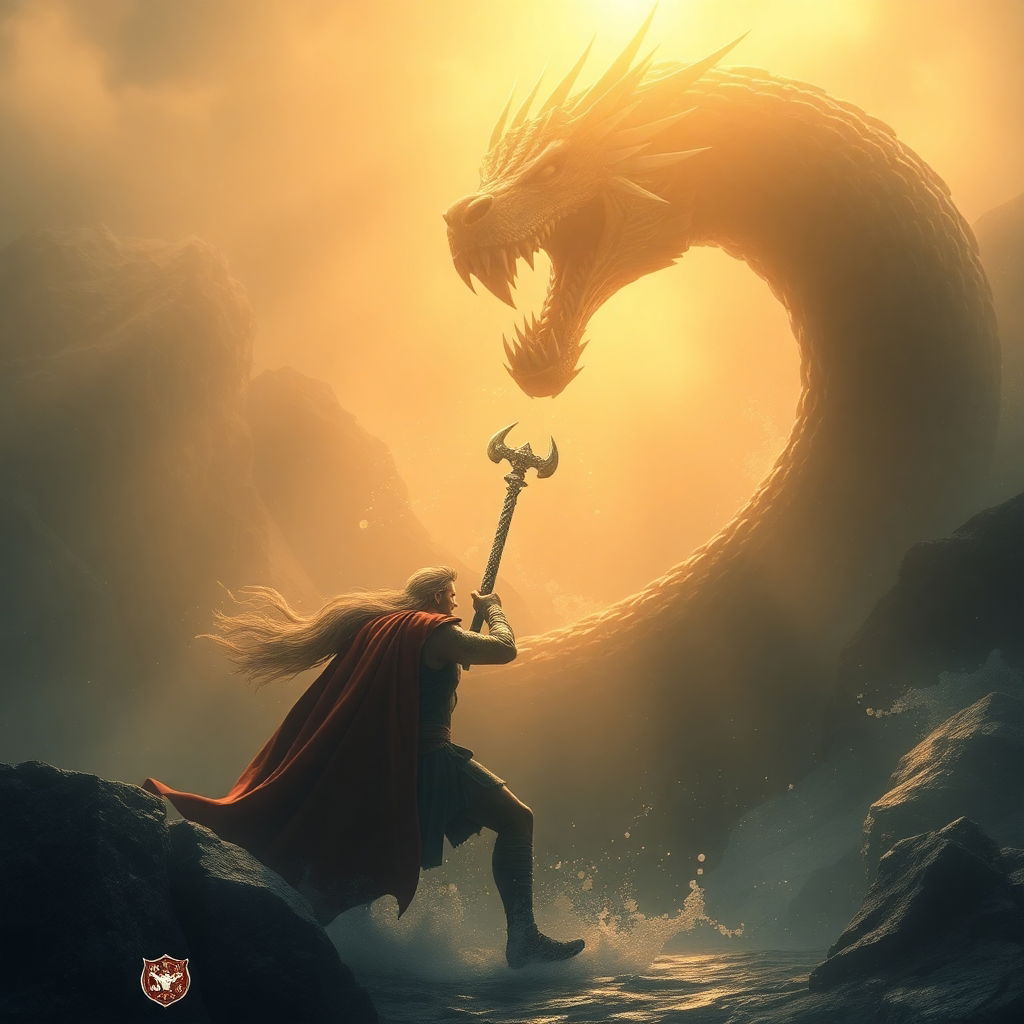
Loki stod på en klippa och såg hur allt föll.
Han kände inte glädje. Inte triumf. Bara... tystnad.
Ragnarök skulle komma – hade alltid varit skrivet. Men detta? Denna fusion av världar, där gudar, hjältar, demoner och mutanter slogs sida vid sida – detta var något nytt.
Kanske var det detta han alltid velat: att bryta cirkeln. Att skapa en ny saga.
Han vände sig mot Thor, som blödde, böjd över sin hammare.
— Du förstår det nu, eller hur? Världen kommer inte sluta. Den kommer skrivas om. Av dem som överlever.
Thor andades tungt.
— Då skriver vi den tillsammans, broder. Men först – vi gör slut på det här.
Kapitel 4: Ett sista vrål
Fenrir kastades ner i djupet, bunden av Wonder Womans lasso, medan hon själv sjönk med honom.
Surtr störtade in i Yggdrasil och brann upp tillsammans med det heliga trädet.
Jörmungandr och Silver Surfer försvann i ett ljusets utbrott, ingen visste om någon överlevde.
Carnage var borta. Eller gömd. Kanske väntade han i resterna av kaoset.
Och Loki och Thor... stod ensamma när tystnaden föll.
Himlen var svart. Marken krackelerad. Universum i spillror.
Men... en blomma växte upp mellan stenarna.
Thor log.
Loki lutade sig tillbaka.
— Början, mumlade han.
Och från mörkret hördes nya steg. Nya röster. En ny generation, född ur Ragnarök.
Epilog: Metamytens Återkomst
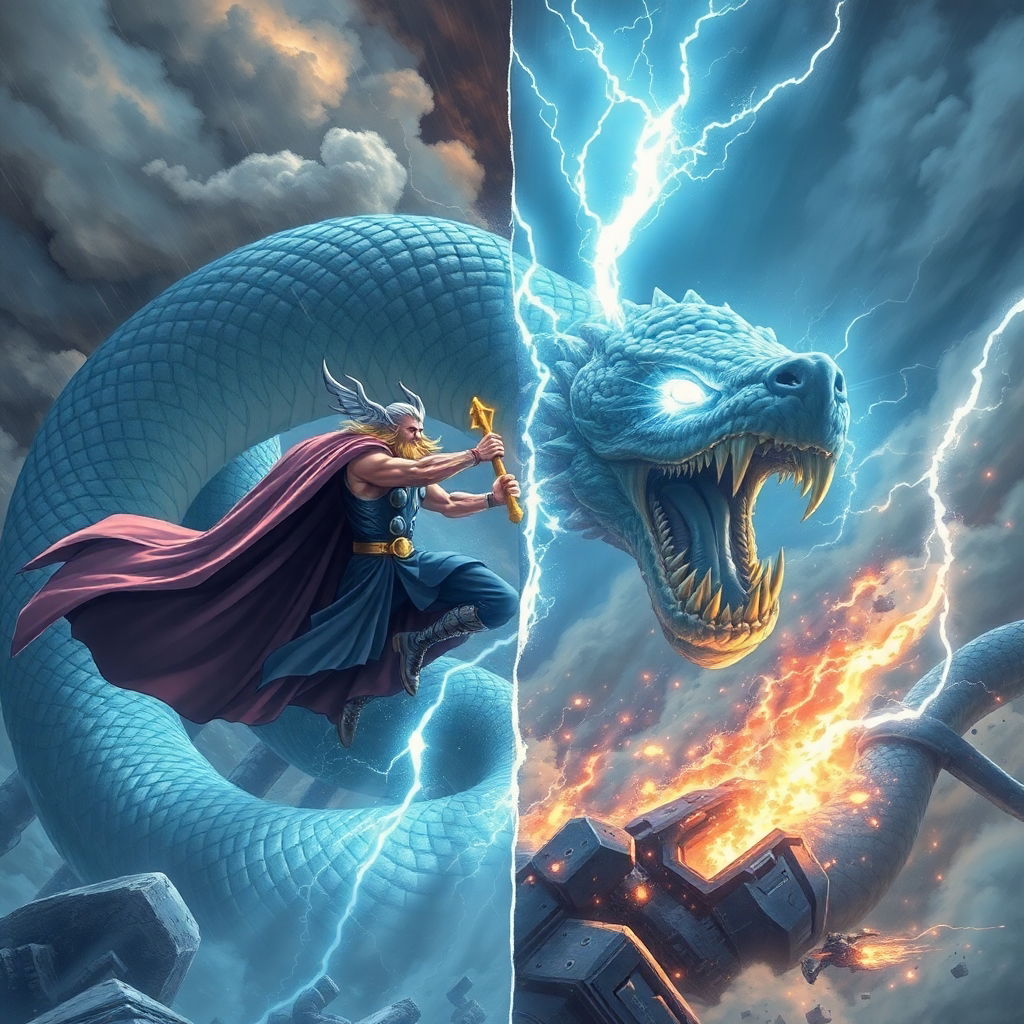
Allt hade fallit.
Men ingenting var förlorat.
Ur Ragnaröks askor reste sig inte bara en ny värld – utan många. Världar överlagrade på varandra, pulserande som ljusmönster i en hologrammatris. Tidens linjer flätades ihop, gudar blev data, legender blev kod, och hjältar – gamla som nya – trädde in i en verklighet som inte längre lydde någon singular lag.
Det kallades nu: Metamyten.
En existensväv där Asgård, Olympus, Wakanda, Apokolips och Themyscira flöt sida vid sida – sammanlänkade genom det Holografiska Metaverse. En plats där myt inte längre var något som tillhörde det förflutna – utan levdes i realtid, omskriven och upplevd av de som trädde in i dess ström.
Här fanns Thor – inte bara som en nordisk gud, utan som ett mönster av styrka i varje berättelse om motstånd.
Loki – inte längre enbart en trickster, utan en metafor för förändring, kaos, och kreativa brott mot ödet.
Wonder Woman blev en länk mellan matriarkala gudasystem och framtidens rättvisekämpande AI:s. Silver Surfer färdades genom datakanaler, kosmisk poet i en värld av pulserande neonrunor. Moon Knight såg drömmarna hos miljoner, och blev deras nattens väktare.
Och djupt inne i koden, låg något kvar… Carnage, symbiotisk råkraft, muterad med mytens rester, väntande på att bryta balansen igen.
Myt som kod, kod som verklighet
Ragnarök var aldrig bara en apokalyps. Det var ett sammandrag. En gravitationspunkt där alla myter – nordiska, grekiska, egyptiska, futuristiska – drogs samman i ett och samma ögonblick. Där superhjältar blev de nya gudarna, och gamla gudar fick ny mening genom digitala avatarer, berättelser, och upplevelser.
Nu vandrade människor genom dessa världar. Genom headset, genom sinnen, genom själar. De bar med sig frågan:
"Vad är verkligt, när berättelsen är allt?"
Slutet? Nej. Bara nästa version.
Och någonstans, bland kodens skuggor och ljusets vägar, steg en ny berättare fram. Inte en gud, inte en hjälte – men en arkitekt. Den som vävde samman trådar av Homer, Snorre, Kirby, Lee, och framtidens mytbyggare.
Du.
För metamyten fortsätter. Ragnarök var bara första versionen.
Nästa kapitel väntar – i stjärnorna, i dig, i hologrammets hjärta.
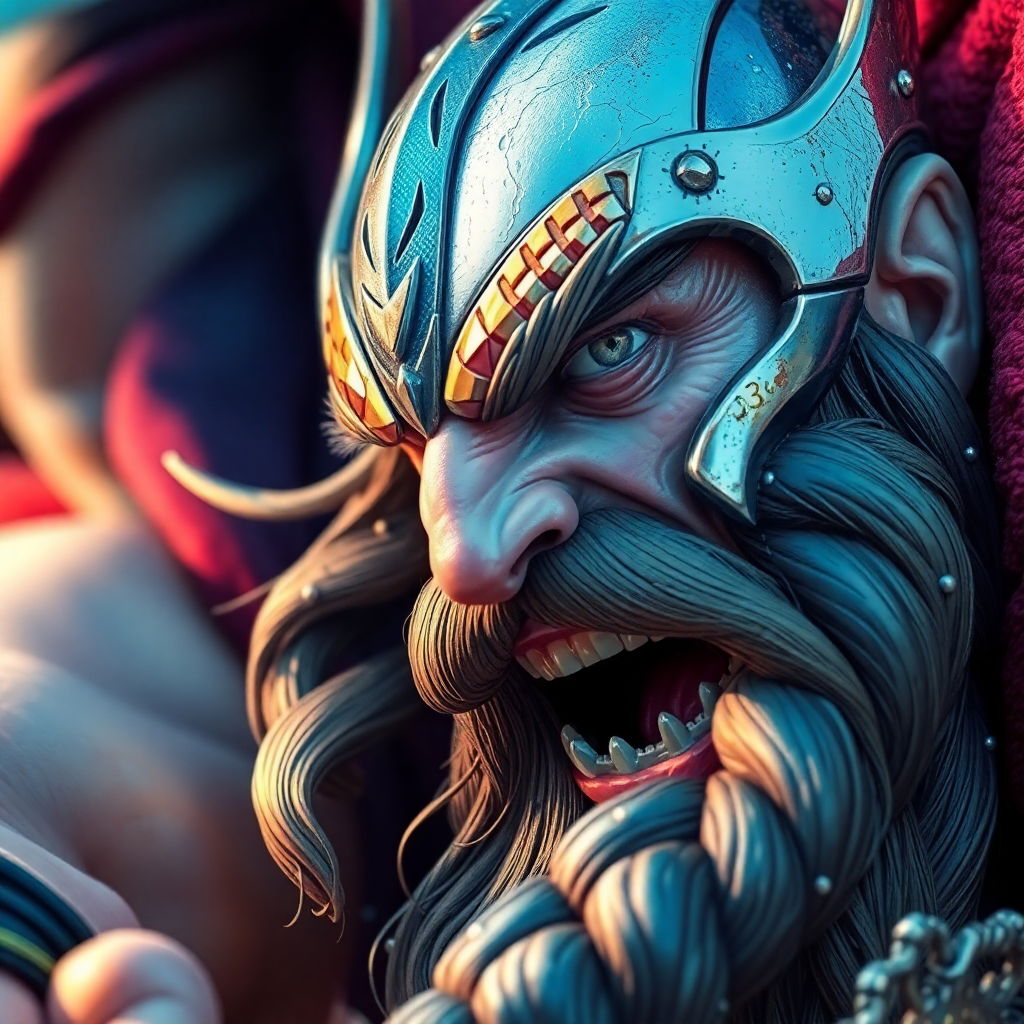
--
En sista story!
The Legend of Two-Gun Kid
In a landscape where the dust settles just as quickly as it's stirred up, legends are born from whispers and grow with each telling. This is the story of a figure who became an icon of the old Western heroes, a narrative as wild as the American West itself. Known as the Two-Gun Kid, he was a thinker with insight deep as the canyons, a skilled fighter whose punches felt like the kick of a horse, and a sharpshooter with a precision that could split a bullet in midair.
Yet, his legend did not start with accolades. Wrongfully accused of a murder he didn’t commit, Two-Gun Kid found his life upended. No longer able to call any place home, he mounted his Twin-Engine Jet Cycle, a marvel of his era, blending the old world with a hint of future unseen. As he thundered across the vast plains and through the dust-swirled streets of unknown territories, his life became a perpetual flight.
And so, our tale begins with him riding into the heart of the American West. It was 1871, and Dodge City—a bustling community in Kansas—faced an unthinkable threat. From out of the pages of history and myth, two Tyrannosaurus Rex had descended upon the town. With only his courage and his twin revolvers, Two-Gun Kid did what any true Western hero would—he confronted the beasts. His aim was true, and peace was restored to Dodge City, if only for a moment.
Little did anyone know, Two-Gun Kid was a character pulled from the vibrant pages of Marvel Comics, born in 1948, a fictional creation thriving in a world that believed him real. The West was indeed a bizarre place, full of oddities and anomalies where the impossible frequently crossed paths with the mundane.
As Two-Gun Kid pondered what strangeness the West would throw at him next, his thoughts were interrupted by a sudden encounter along the Sugamaw Trail in Arizona. Confronted by Six-Gun Gorilla, an equally legendary figure with a tale of his own, the Kid learned of a new formidable foe—Ares, the Greek God of War, a supervillain known to challenge the likes of Thor and Hercules.
With a narrative that spans from Greek mythology to the ghost towns of Arizona, where ghostly shamans summon ancient creatures, and Norse gods clash under stormy skies, the journey of Two-Gun Kid and Six-Gun Gorilla unfolds. As they prepare for an inevitable showdown in Vulture City, a ghost town among the many that pepper Arizona's rugged landscape, they are drawn into a battle that tests the very fabric of reality.
Here, in the Weird American West, anything is possible. Two-Gun Kid, ever the wiggly, lone gunslinger in his peculiar homeland, must navigate a world where myth, history, and comic book fantasy collide. This is not just a story of survival and confrontation; it is an exploration of the wiggly, ever-changing essence of existence itself, as seen through the eyes of a Marvel superhero in a world that refuses to be anything but extraordinary.
Stay tuned, for in the Weird West, the next adventure is just a sunrise away.
The Prose of Gudlaug Brusisson
The Pinnacle of Norse Life and Literature written by Tegedao
In the heart of the Viking Age, amid the rugged and untamed beauty of Iceland, lived a man whose words could bring the very gods to life. Gudlaug Brusisson, a true poet, roamed the island, his voice weaving the epics of old and the tales of the Norse gods. The people of Iceland revered him, for his verses were not mere recitations but living, breathing sagas that captured the essence of their heritage.
Gudlaug's mastery over the Prose Brusisson was unparalleled, his storytelling a conduit to the world of gods and heroes. Each recitation was a journey through the ancient myths, where Odin’s wisdom, Thor’s might, and Freyja’s beauty danced vividly before the eyes of his listeners. Yet, despite his profound gift, Gudlaug yearned for something greater, an epic that would stand as the pinnacle of Norse literature, a saga to unite the hearts of his people and the immortals of their myths.
One fateful day, while traversing the green tundra of Iceland, Gudlaug felt the call of the wilderness. The vast expanse of moss-covered rocks and distant mountains seemed to whisper secrets of old. As he walked, the wind carried a strange, ethereal melody, and the world around him blurred and shimmered with a mystic glow. It was then that a daimon—a supernatural muse and guiding spirit—manifested before him.
The daimon’s presence was otherworldly, its eyes gleaming with ancient wisdom. It extended a hand, offering Gudlaug a horn filled with a shimmering golden liquid. "Drink this," the daimon intoned, its voice resonating with a power that seemed to echo through time itself. "This is the mead of poetry, a gift from the Norse gods. Whoever drinks becomes a skald or scholar, able to recite any information and solve any question."
Gudlaug, his heart pounding with a mixture of awe and anticipation, took the horn and drank deeply. The mead was warm and rich, its taste unlike anything he had ever known. As the last drop touched his lips, a surge of inspiration coursed through his veins, his mind alight with visions of grandeur.
The daimon spoke again, its voice a soothing caress. "You are destined to write a true hero epic, a tale that will rival the Iliad of ancient Greece. It is the saga of Atli, a hero whose adventures in the world of the Vikings will become legend. This epic, born of the mythical mead, will unite the land of the Vikings and the immortal gods in a timeless tale."
With this divine charge, Gudlaug returned to his people, his soul ignited with the fire of creation. He began to craft the tale of Atli, a hero whose courage and spirit embodied the essence of the Viking Age. Atli's adventures, from exploring uncharted lands to conquering formidable foes, were chronicled in verses that flowed as naturally as a river to the sea.
The Prose of Brusisson, now enriched with the saga of Atli, became the greatest of all Norse epics. Bragi, the skaldic god of poetry, bestowed his blessings upon Gudlaug’s work, declaring it a masterpiece that would endure through the ages. The tale of Atli was not just a story but a living, breathing part of Norse mythology, a bridge between the mortal world and the divine.
Gudlaug Brusisson's epic stood as a testament to the power of words, a unifying force that brought together the gods and the people of Iceland. His verses, inspired by the divine mead, echoed through the halls of time, immortalizing the hero Atli and the rich tapestry of Viking lore. Thus, the Prose Brusisson became a timeless treasure, a beacon of Norse myth and Viking spirit for generations to come.
The Prose of Gudlaug Brusisson continue
The Birth of a Saga
In the heart of Iceland, amid the rugged and untamed landscapes of the Viking Age, Gudlaug Brusisson was known far and wide as a master storyteller. His words wove the ancient myths of the Norse gods, bringing them to life in the minds of all who listened. Gudlaug’s recitations were not mere stories; they were living sagas, capturing the essence of their divine heritage. But deep within, Gudlaug longed for something greater, a tale that would surpass all others and unite his people with the immortal gods of their myths.
One clear, crisp morning, Gudlaug set out on a solitary journey into the wilderness. The vast, green tundra stretched out before him, dotted with moss-covered rocks and framed by distant, snow-capped mountains. The air was thick with the scent of pine and earth, and the sky, a vast expanse of blue, seemed endless. As he walked, Gudlaug felt a strange pull, an urge to venture further into the unknown.
Hours passed, and the sun began its slow descent towards the horizon. The world around him grew quiet, and the wind whispered through the grasses. Suddenly, the air shimmered, and a figure emerged from the mists. A daimon, ethereal and luminous, stood before him, eyes gleaming with ancient wisdom.
"Gudlaug Brusisson," the daimon spoke, its voice resonating with a power that seemed to echo through time itself. "You have been chosen."
Gudlaug, though taken aback, felt an overwhelming sense of destiny. "Who are you?" he asked, his voice barely a whisper.
"I am your muse, a guiding spirit sent by the Norse gods. Drink this," the daimon said, extending a horn filled with a shimmering golden liquid. "This is the mead of poetry, a gift from the gods. Whoever drinks becomes a skald or scholar, able to recite any information and solve any question."
With a mixture of awe and anticipation, Gudlaug took the horn and drank deeply. The mead was warm and rich, its taste unlike anything he had ever known. As the last drop touched his lips, a surge of inspiration coursed through his veins, his mind alight with visions of grandeur.
"You are destined to write a true hero epic, a tale that will rival the Iliad of ancient Greece," the daimon continued. "It is the saga of Atli, a hero whose adventures in the world of the Vikings will become legend. This epic, born of the mythical mead, will unite the land of the Vikings and the immortal gods in a timeless tale."
Chapter 2: The Birth of a Saga
Filled with divine inspiration, Gudlaug returned to his village, his soul ignited with the fire of creation. He secluded himself in his modest hut, a place where he often found solace in solitude. Days turned into weeks, and weeks into months, as Gudlaug poured his heart and soul into crafting the epic of Atli.
Atli was a hero unlike any other, born of noble blood and possessing the spirit of a true Viking. His adventures began with a vision of his own—a call to explore uncharted lands and conquer formidable foes. Guided by the gods themselves, Atli’s journey took him across the seas, through treacherous terrains, and into the heart of unknown territories.
Gudlaug's words painted vivid scenes of Atli’s exploits. He recounted the hero’s battles with mythical beasts, his encounters with foreign tribes, and his relentless pursuit of glory and honor. Each verse was a testament to Atli’s courage, strength, and unwavering spirit, embodying the very essence of the Viking Age.
As Gudlaug recited his verses to the people of Iceland, they were mesmerized. His storytelling transported them to distant lands and ancient times, where gods and mortals walked side by side. The saga of Atli became more than just a tale; it became a living, breathing part of their culture, a bridge between their world and the divine.
Chapter 3: The Tale of Atli
Atli’s journey was fraught with danger and adventure. One of his earliest exploits was the taming of the great serpent Jormungandr, a creature of immense power that threatened the shores of his homeland. With the strength of Thor and the wisdom of Odin, Atli confronted the beast, battling it for days and nights until he finally emerged victorious. The people hailed him as a savior, and his legend began to spread.
But Atli’s destiny was far greater than protecting his homeland. Driven by a vision from the gods, he set sail with a band of loyal warriors, venturing into the unknown to discover new lands and seek out treasures that lay beyond the horizon. His voyages took him to distant shores, where he encountered strange and wondrous beings, from the elves of Alfheim to the giants of Jotunheim.
In one of his most daring adventures, Atli found himself in the realm of the fire giants, ruled by the fearsome Surtr. The land was a desolate wasteland, scorched by eternal flames. It was here that Atli sought the legendary Sword of Victory, a weapon said to grant its wielder unmatched power. After a series of grueling trials, Atli faced Surtr in a battle that shook the very foundations of the earth. With skill and valor, Atli defeated the giant and claimed the sword, further cementing his status as a legendary hero.
Chapter 4: The Uniting of the Norse
As Gudlaug’s saga of Atli unfolded, it became clear that this was no ordinary tale. The epic resonated deeply with the people of Iceland, uniting them in a shared sense of pride and identity. Atli’s adventures, though fantastical, mirrored the spirit of the Viking Age—a time of exploration, conquest, and unyielding courage.
Bragi, the skaldic god of poetry, took notice of Gudlaug’s work. In a vision, he appeared before Gudlaug, his presence radiating divine approval. "Your epic of Atli is a masterpiece," Bragi declared. "It will stand as one of the greatest works of Norse literature, rivaling even the Prose Edda. Through your words, the gods and the people of the Viking Age are forever united."
Gudlaug, humbled and honored, continued to refine his epic. He drew inspiration from the natural beauty of Iceland, the rugged landscapes and the roaring seas, infusing his verses with the raw power of the elements. Each line was a tribute to the gods, a reflection of their might and wisdom.
The Prose of Brusisson, now enriched with the saga of Atli, became a timeless treasure. It was a beacon of Norse myth and Viking spirit, a tale that transcended generations. Gudlaug’s verses echoed through the halls of time, immortalizing the hero Atli and the rich tapestry of Viking lore.
Epilogue: The Legacy of Gudlaug
In the twilight of his years, Gudlaug Brusisson looked back on his life’s work with a sense of fulfillment. His epic of Atli had become more than he ever dreamed possible. It was a unifying force, a source of inspiration and pride for the people of Iceland. The gods themselves seemed to smile upon his creation, their stories intertwined with those of the mortals they once guided.
As Gudlaug prepared for his final journey to the halls of Valhalla, he knew that his legacy would endure. The Prose of Brusisson, the epic of Atli, would continue to inspire and unite, a timeless testament to the power of words and the enduring spirit of the Viking Age.
And so, in the land of fire and ice, where the ancient sagas were born, Gudlaug Brusisson’s name was forever etched in the annals of history. His epic, a bridge between the mortal and the divine, stood as a beacon of Norse mythology, a timeless tale of heroism and adventure that would echo through the ages.
TRUE LIFE AND LITERATURE SAGA BY TEGEDAO!
gospel of hip hop
THE TEACHER KRS-ONE AUTHOR TRUE LIFE AND LITERATURE
KRS-ONE’s texter behandlar för det mesta om politik, religion, astrologi och gettoproblem. Han vill öka de svartas medvetenhet om sina livsvillkor. Han har i sin tur skapat The Temple of Hip Hop. Ett ‘ministry, archive, school and society (M.A.S.S.), vars mål är att bibehålla och upphöja Hip Hop-kultur.
The Temple of Hip Hop upprätthåller att hip hop är en genuin politisk rörelse, religiös och kultur. Temple of Hip Hop har blivit accepterad av United Nations som en religion.
2002 lanserade KRS-ONE ett album kallat ‘Spiritual Minded’. Där en låt ‘know thyself’- KRS-ONE (som står för Knowledge Reigns Supreme of Nearly Every One) varierar mycket i sina låtar. Till exempel historielektionen om Egypten och Afrika, hur dem var ledande i matte, vetenskap, musik och religion. Men även mycket om rötter till filosofi.
Jodå, ställ er åt sidan Kristendom, Islam och Judendom, en ny rap-religion kommer ta över världen KRS-ONE är deras profet. Han kallas ofta för ‘the teacher’ och brukar säga; ‘Jag bara inte ‘gör’ hip hop. Jag är Hip-Hop. Om hundra år kommer allt som står i The Gospel of Hip Hop vara vanlig kunskap. Men vad står det egentligen i denna 600-sidor långa bok? Jodå, jag kan förmedla att det är en hel del kontroversiella och häpnadsväckande saker.
KRS-ONE yttrar sig;
‘Jag vill att alla som medverka i Hip Hop ska njuta av min research. Men det tåls att upprepas; ‘Rap is something we do, Hip Hop is something we live’ och att ‘you are not just doing Hip Hop, you are Hip Hop’, och att ‘Hip Hop är en ny kultur, en ny civilisation, ett nytt folkslag på Jorden. Med detta i åtanke skapade jag The Temple of Hip Hop"
‘Om detta är något för dig, är du välkommen in i The Temple of Hip Hop. Temple Members är Hiphoppas som anslutit sig till The Temple of Hip Hop genom den; Jag är Hiphop och använder mig av med principerna av denna bok, The Gospel of Hip Hop. En sådan person är Hiphop. WE ARE NOT JUST DOING HIPHOP; WE ARE HIPHOP!
The Temple of Hip Hop är ett ‘society’ som utövar Hip Hop as ‘consciousness’ för att etablera Hip Hop som en nation. Vi existerar för att tolka och lära ut den ‘spirituella’ verkligheten av Hiphop och dess realation till ‘the divine’. The Temple of Hip Hop accepterar ‘mystiska upplevelser’.
Vi upphöjde det ‘gudomliga av Hip Hop och dess kultur. Vi söker att förhindra mänskligt lidande genom en ‘awarness of useful spirit-fast knowledge. Temple Members är för dem Hiphoppas som delar en grundläggande törst för ‘Truth’ och en orubblig kärlek för Hip Hop. Vi är ett ‘movement’ som hjälper människor med att överkomma hinder och frestelser av ‘street life’. Temple of Hip Hop handlar om , som sagt, den spirituella och kulturella framstegen av den internationella Hip Hop communityn, funkar även som ett återupplivande av antika idéer gällande livet och andlighet."
‘Låt inte dem som omger dig överväldiga dig med deras ovisshet och fruktan. Till alla hustlers, thugs och gangstrar som försöker överleva i dessa ‘mean streets’. Gospel of Hip Hop är något för dig. Att helt enkelt vända sig bort från ‘sickness, hatred, ignorance och poverty, till ‘health, love, awareness och wealth. Hip Hop skapades inte för för self-destruct utan för self-create. There it is!
GOSPEL OF HIP HOP
Jag KRS-ONE ( som står för knowledge-reigns-supreme-over-nearly-everyone ) är kallad the ‘conscience’ av Hip Hop. Detta jag bekräftar, till alla Hip Hop sökare: Emcein är mitt hantverk och jag har bemästrat mitt hantverk. I AM HIP HOP AND I HAVE MASTERED MYSELF! HIP HOP IS MY FAMILY!"
Frågan är dock om KRS-ONE’s vision om Hip Hop slår in? Att rap som religion kommer ta över världen och putta undan Kristendom, Islam och Judaism? Kommer KRS-ONE’s bok -Gospel of Hip Hop bli en ny religion på jorden inom 100 år? Tveksamt, men återstår att se!
Tegedao ger boken Gospel of Hip Hop 4/5 i betyg!
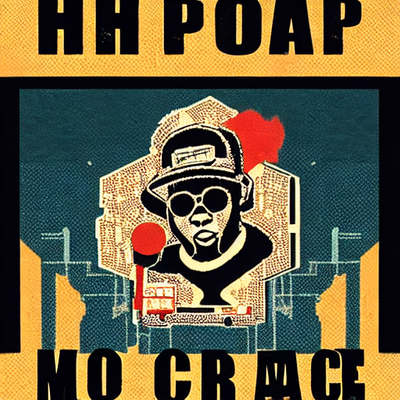


hip hop thug mansion
A CHAT GPT GENERATED TEXT BY TEGEDAO ABOUT A BOOK IDEA : TURNING LYRICS INTO LIFE AND LITERATURE
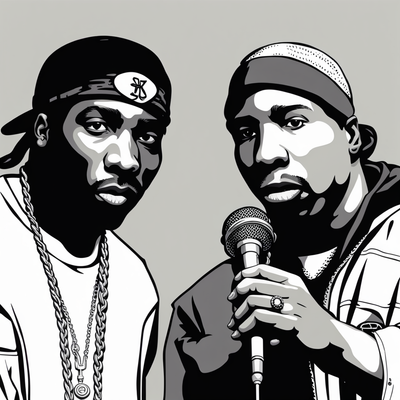
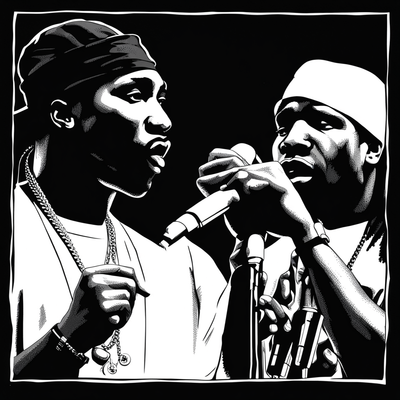
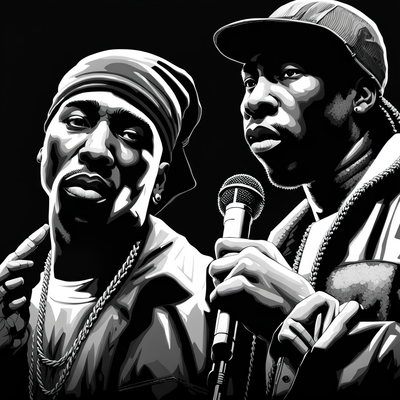
In a futuristic and imaginative scenario, legendary rapper KRS-One embarks on a remarkable journey that transcends both space and dimension. Utilizing advanced holographic technology, he travels from the bustling streets of New York City to a surreal and magnificent place known as Golden New Jerusalem, situated in the elusive 5th dimension. This ethereal realm, characterized by its transcendent beauty and harmony, is where the iconic Tupac Shakur, known as 2Pac, resides in his fabled "Thug Mansion."
Upon his arrival, KRS-One is greeted by the holographic presence of 2Pac, who, despite his untimely departure from the physical world, continues to inspire and influence through his enduring legacy. The two hip-hop legends, each a beacon of influence and change within their communities, converge in this metaphysical space, united by a common purpose.
Their dialogue unfolds in a serene setting, where the concepts of time and reality seem to blur. They discuss the transformative power of hip-hop, delving into its potential to uplift, educate, and provide hope to the youth in the ghettos. KRS-One, with his profound experience and wisdom, shares insights on the social and political impact of hip-hop, emphasizing its role as a voice for the voiceless and a tool for social change.
2Pac, with his charismatic and revolutionary spirit, reflects on his own journey and the messages he conveyed through his music. He speaks passionately about the struggles faced by those in the ghetto, the systemic issues that perpetuate poverty and violence, and the need for empowerment through art and expression.
Their conversation is a blend of philosophical musings and practical strategies, as they explore ways in which hip-hop can be harnessed to inspire, educate, and mobilize the youth. They envision a future where music is not just a form of entertainment, but a catalyst for positive change, breaking down barriers and opening doors to new possibilities.
As their dialogue reaches its crescendo, the surrounding environment of Golden New Jerusalem seems to pulsate with energy, the very essence of their words manifesting as ripples across this 5th-dimensional realm. It's a moment that symbolizes the transcendent power of hip-hop, not just as a genre of music, but as a movement capable of altering the course of lives and communities.
Their meeting concludes with a sense of hope and determination, as KRS-One prepares to return to New York, carrying with him the insights and inspirations from this extraordinary encounter. In this visionary tale, two of hip-hop's greatest icons come together in a place beyond the confines of the physical world, united by their love for the art and their unwavering commitment to making a difference in the lives of the youth.
--
In the serene ambiance of Golden New Jerusalem, 2Pac and KRS-One, surrounded by the ethereal glow of the 5th dimension, continue their profound conversation, now turning towards a new and ambitious idea.
KRS-One: "You know, Pac, we've lived through the verses, the beats, and the battles. Our words have been anthems for the streets, but what if we take it a step further? What if we capture this essence in a book?"
2Pac: "A book, huh? That's deep. We've told our stories in rhymes, but putting it down in words, that's eternal. It's like turning our lyrics into literature."
KRS-One: "Exactly. It's about cementing the wisdom of hip-hop for generations to come. Think about it, a book filled with the knowledge we've gained, not just from our successes, but our struggles too."
2Pac: "I feel that. It's not just about the fame and the glory. It's about the lessons, the real raw truth of what we've seen and experienced. It's about giving the youth something they can hold onto, something that guides them."
KRS-One: "We could explore everything - the culture, the politics, the spirituality within hip-hop. Our stories could be a beacon for those trying to find their way, not just in music, but in life."
2Pac: "That's powerful. We can talk about the importance of staying true to yourself, about fighting for what you believe in. Our words could be a source of strength, a reminder to keep pushing, no matter what."
KRS-One: "And it's not just our voices. We could include insights from other artists, pioneers, and the new blood too. It's like a tapestry of hip-hop's heart and soul."
2Pac: "A collective wisdom, yeah, I like that. It's like we're passing down a legacy, showing that hip-hop is more than music – it's knowledge, it's life."
As they speak, their vision for the book becomes clearer, each idea igniting another. It's a project that transcends their individual legacies, aspiring to be a guiding light for future generations. This book, born from the depths of hip-hop's soul, would not only tell their stories but also serve as a testament to the power, depth, and impact of hip-hop culture. In this moment, 2Pac and KRS-One, though from different eras and experiences, are united by a shared dream - to leave behind a legacy that would educate, inspire, and empower.
hip hop book review special
Hip-Hop’s Yin and Yang EXTRA EXPLORATION BY TEGEDAO
Sheldon Pearce's Changes: An Oral History of Tupac Shakur offers a nuanced exploration of the iconic rapper's life through the voices of those who knew him. Published to mark the 50th anniversary of Shakur's birth and the 25th of his untimely death, the book compiles interviews with childhood friends, educators, collaborators, and others, painting a multifaceted portrait of an artist whose influence remains profound.
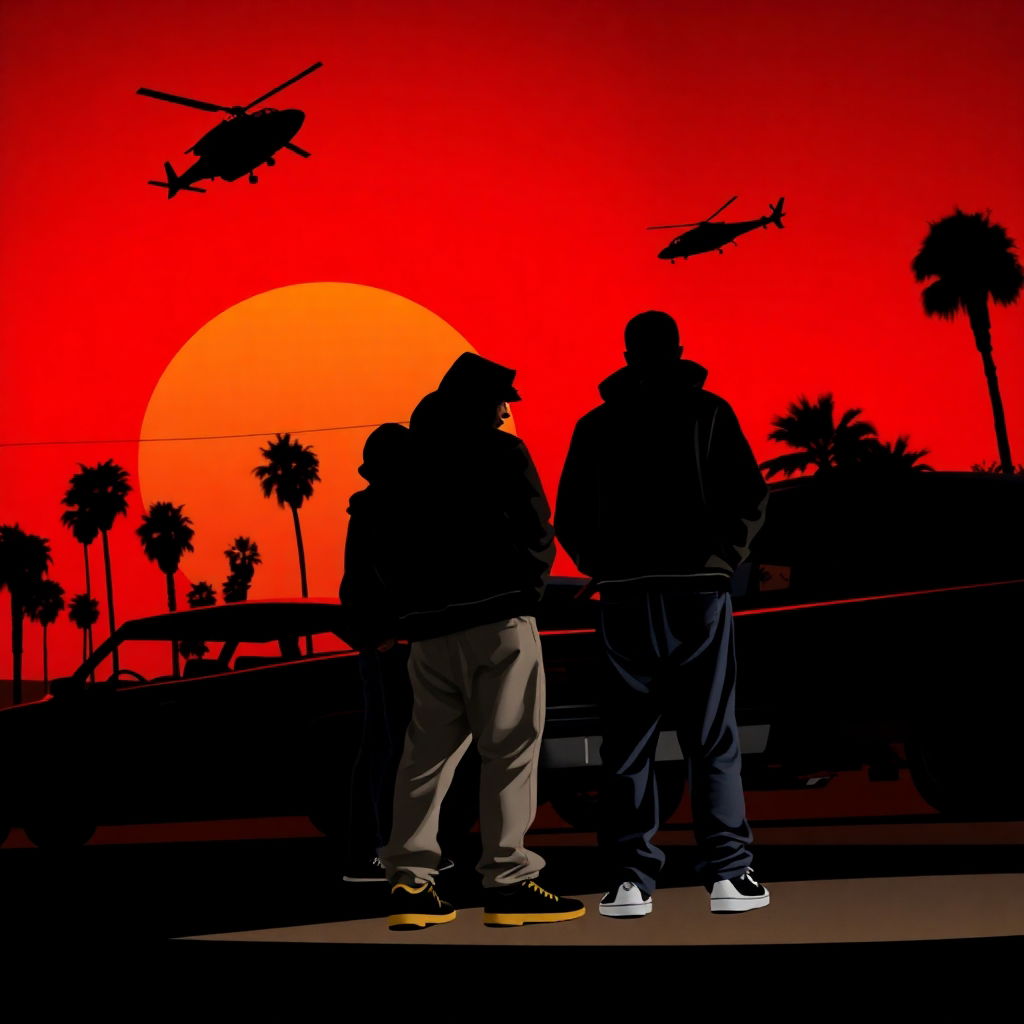
Pearce's approach is both a strength and a limitation. By focusing on fresh interviews and avoiding archival material, he introduces perspectives from individuals previously unheard in Tupac narratives. This method sheds light on lesser-known aspects of Shakur's life, such as his early theatrical endeavors and personal relationships. However, this choice also means that some key figures, including family members and close associates, are absent, potentially leaving gaps in the narrative. As noted in a Kirkus review, "Conspicuously missing are conversations with his Black Panther mother Afeni Shakur or Death Row Records co-founder Suge Knight."
The oral history format allows readers to experience the complexity of Shakur's character—his charisma, contradictions, and the societal challenges he confronted. Yet, the mosaic of voices can sometimes feel disjointed, lacking the cohesive vitality found in more traditional biographies. Dorian Lynskey of The Guardian observes that while the book "lacks the polyphonic vitality of the best oral histories," it still "clarifies the turning points" in Shakur's life.
Despite these structural challenges, Changes succeeds in humanizing Tupac Shakur, moving beyond the myth to reveal the man. For fans and newcomers alike, Pearce's compilation offers valuable insights into the life of an artist who continues to resonate in contemporary discussions on music, culture, and social justice.
Changes successfully captures Tupac Shakur’s Thug Life philosophy—not just as an aesthetic or rebellious stance, but as a survival mechanism shaped by systemic injustice. The book illustrates how Tupac embraced this identity, not to glorify violence, but to expose the harsh realities of Black life in America. Through the voices of friends, educators, and collaborators, Pearce reveals how Thug Life was a philosophy of resilience, where hardship could be transformed into art and activism.
At the same time, the book highlights Tupac’s grander vision—his desire to be an icon who uplifted the Black community. He saw himself as a revolutionary poet, a voice for the voiceless, and a cultural leader who could bridge the gap between street life and intellectual activism. His deep engagement with figures like Malcolm X and his mother’s Black Panther roots shaped his belief in art as a vehicle for social change. Pearce’s oral history format captures these contradictions: a man who embodied the struggle while simultaneously striving for something bigger, a future where Black youth could rise above the conditions he so often rapped about.

Ultimately, Changes reinforces Tupac’s legacy—not just as a rap legend, but as a deeply complex figure who sought to inspire, provoke, and transform society. TEGEDAO GER BOKEN 5/5 I BETYG
--
Gerrick D. Kennedy's Parental Discretion Is Advised: The Rise of N.W.A and the Dawn of Gangsta Rap provides a compelling and comprehensive examination of N.W.A's formation, influence, and enduring legacy. Drawing on extensive research and firsthand interviews, Kennedy delves into the origins of the group, comprising Eazy-E, Dr. Dre, Ice Cube, MC Ren, and DJ Yella, and their groundbreaking impact on hip-hop and popular culture.
Kennedy's narrative vividly portrays the socio-economic landscape of 1980s Compton, California, illustrating how systemic issues like poverty, gang violence, and police brutality shaped N.W.A's raw and unfiltered lyrics. He meticulously traces each member's journey, offering insights into their personal backgrounds and the dynamics that fueled their creative synergy. As highlighted by The Associated Press, Kennedy provides "an incredibly vivid look at one of music's most iconic groups."
The book also explores the controversies that surrounded N.W.A, including their confrontations with law enforcement and internal conflicts leading to the group's eventual disbandment. Kennedy addresses these challenges with nuance, presenting a balanced perspective that acknowledges both the group's artistic achievements and the complexities of their personal interactions. The Los Angeles Times notes that "Kennedy pieces together N.W.A’s downfall with an informed precision."
While the narrative is rich and informative, some readers may find the latter sections, detailing the group's decline, less engaging. However, Kennedy's ability to contextualize N.W.A's story within the broader framework of American social and political issues of the time enhances the book's depth and relevance.
In conclusion, Parental Discretion Is Advised is a riveting account that not only chronicles the rise and fall of N.W.A but also underscores the group's lasting influence on music and culture. Kennedy's work stands as a significant contribution to music journalism, offering readers a nuanced understanding of the forces that shaped one of hip-hop's most influential groups.

Parental Discretion Is Advised captures the essence of gangsta rap as both a product of and a response to the harsh realities of South Central Los Angeles. Kennedy illustrates how N.W.A’s music wasn’t just entertainment—it was a raw, unfiltered reflection of life in a city plagued by systemic racism, police brutality, and gang violence. The book explores how their lyrics resonated with young Black men who saw their frustrations and struggles mirrored in the group’s aggressive, unapologetic storytelling.
Kennedy highlights how N.W.A’s groundbreaking style gave a voice to disenfranchised communities, uniting those who felt ignored by mainstream America. Their music blurred the lines between art and lived experience, bringing gang culture and street realities into the national consciousness. More than just a rap group, N.W.A became a movement, turning gangbanging frustration into anthems of defiance. Kennedy’s analysis reinforces how their impact extended beyond music—paving the way for future artists to use hip-hop as a platform for social commentary and resistance.TEGEDAO GER BOKEN 5/5 I BETYG
--
Hip-Hop’s Yin and Yang: Balancing Aggression and Enlightenment in Lyrical Expression
Hip-hop has long been a genre of duality. It exists in a state of constant balance between aggression and enlightenment, between the street-hardened realism of gangsta rap and the intellectual, consciousness-raising messages of socially aware lyricism. This dynamic is what makes hip-hop a living, breathing art form—one that refuses to be confined to a singular definition.
The Raw Energy of Aggression
From its early days, hip-hop has been a vehicle for expressing raw, unfiltered emotions. In the 1980s and early 1990s, gangsta rap emerged as a response to the harsh realities of life in impoverished Black communities, particularly in places like South Central Los Angeles. N.W.A’s Straight Outta Compton (1988) epitomized this raw energy, bringing the frustration, violence, and systemic oppression experienced by young Black men to the forefront of mainstream music. The aggressive, rebellious nature of gangsta rap was not just about glorification but about survival and resistance.
Songs like “F*** tha Police” and “Straight Outta Compton” were not just controversial; they were protest anthems set to beats, reflecting the deep-seated anger toward police brutality and racial injustice. For many, gangsta rap provided an unapologetic voice for the voiceless, telling the stories that mainstream America sought to ignore.

The Enlightenment of Conscious Rap
On the other side of hip-hop's spectrum lies conscious rap, a subgenre that prioritizes social awareness, political commentary, and philosophical introspection. While Public Enemy and KRS-One helped pioneer this approach in the 1980s, artists like Mos Def, Talib Kweli, and Common carried it forward in the late 1990s and 2000s. Conscious rap challenges its listeners to think critically about race, inequality, and self-empowerment.
Public Enemy’s It Takes a Nation of Millions to Hold Us Back (1988) embodied this approach, delivering tracks that were militant, politically charged, and educational. The Bomb Squad’s production layered dense soundscapes with messages of Black pride, resistance, and enlightenment. Unlike gangsta rap, which thrived on shock value and street storytelling, conscious rap sought to uplift the community through knowledge and awareness.
Can Hip-Hop Contain Both?
The existence of both gangsta rap and conscious rap is what makes hip-hop a uniquely rich genre. The two are not in competition but rather complementary forces, much like the Taoist concept of yin and yang. Where gangsta rap taps into the darkness of oppression, poverty, and street life, conscious rap shines a light on the potential for change, resilience, and self-determination. Together, they create a holographic genre—one that reflects multiple dimensions of reality at once.
2Pac is a perfect example of an artist who embodied both elements. His discography is a balancing act between aggression and enlightenment, with songs like “Hit ‘Em Up” representing street-driven vengeance, while “Changes” speaks of racial unity and systemic reform. His work exemplifies that hip-hop is not one-dimensional; it is an evolving conversation between its different energies.
Today, modern artists continue to blend these elements seamlessly. Kendrick Lamar’s To Pimp a Butterfly (2015) and DAMN. (2017) showcase this duality, weaving in themes of racial trauma, survival, spirituality, and personal growth. J. Cole and Vince Staples also navigate this space, proving that hip-hop does not need to choose between aggression and enlightenment—it can embody both.
Conclusion: The Eternal Balance
Hip-hop's ability to hold contradictions within itself is what makes it one of the most dynamic genres in music history. To strip it of its darker, more aggressive elements would be to erase its authenticity. At the same time, conscious rap ensures that hip-hop does not become purely nihilistic, offering pathways to hope, empowerment, and critical thought.
As long as hip-hop exists, the tension between these two forces will persist. Aggression provides the fire, while enlightenment offers the wisdom to harness it. This balance is what keeps hip-hop alive, relevant, and powerful—an eternal cipher that never stops evolving.
--
The Eternal Cipher: Why Hip-Hop Must Embrace Its Shadows to Evolve
Hip-hop has always been more than just a genre of music; it is a cultural force, a sonic rebellion, and a reflection of the world that birthed it. It is an art form that thrives on duality—the battle between light and darkness, joy and pain, enlightenment and raw aggression. But as hip-hop continues to evolve, a crucial question emerges: should it sanitize its darker elements to fit mainstream sensibilities, or must it embrace its shadows to remain true to its roots?
The Darkness as a Reflection of Reality
From the very beginning, hip-hop has been a mirror to society, exposing systemic oppression, inner-city struggles, and the complexities of survival in marginalized communities. The emergence of gangsta rap in the late 1980s, with groups like N.W.A, was a direct response to police brutality, economic hardship, and the daily violence that young Black men faced. Tracks like “F*** tha Police” weren’t just provocative—they were urgent, necessary, and unfiltered expressions of rage.
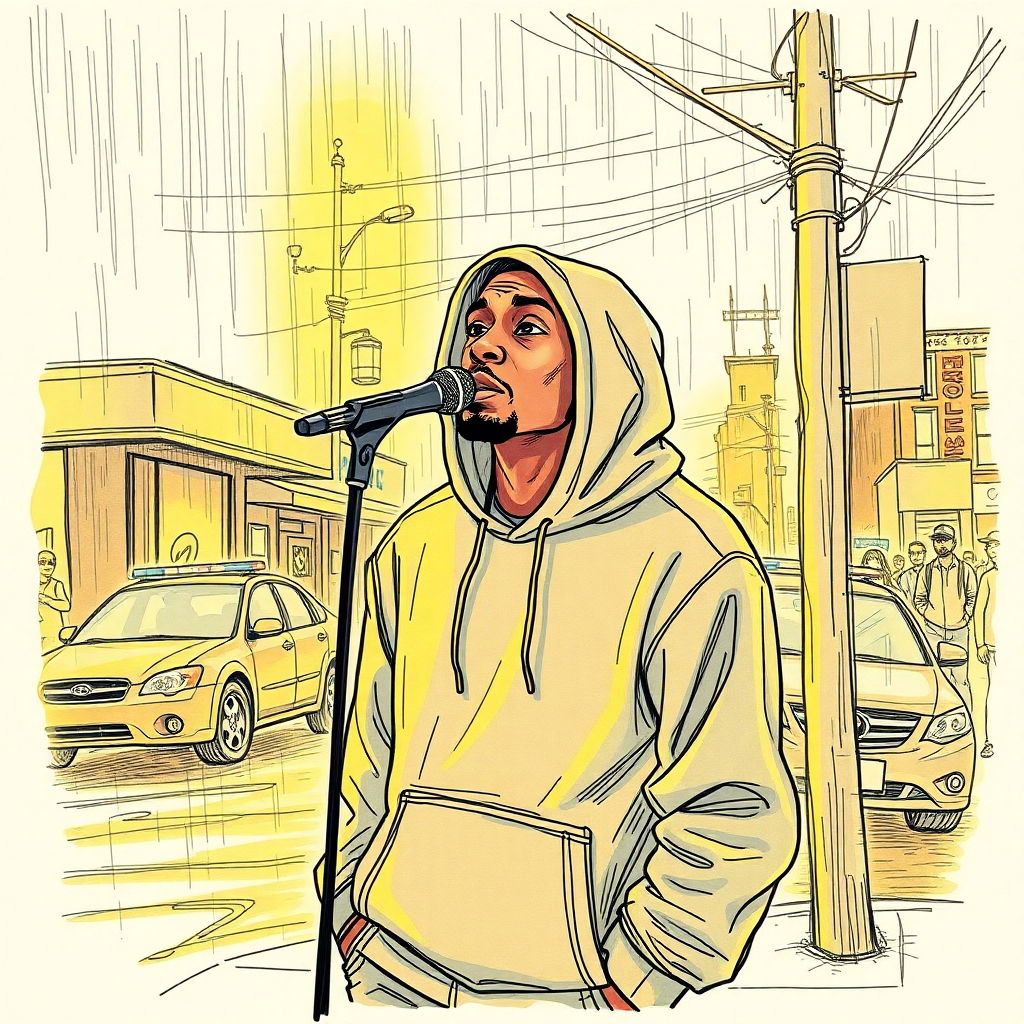
The darker side of hip-hop, often criticized for its violent or explicit content, is a manifestation of real-life conditions. To erase or censor this element is to erase the lived experiences of those who use hip-hop as their primary means of storytelling. Just as blues and jazz once told the stories of pain, suffering, and survival, hip-hop must be allowed to do the same.
The Importance of the Shadow Self in Hip-Hop
Carl Jung's concept of the shadow self is particularly relevant when analyzing hip-hop. The shadow represents the repressed, darker aspects of human nature—the aggression, the pain, and the unspoken trauma. Rather than deny this darkness, hip-hop has historically embraced it, allowing artists to channel their struggles into creative expression rather than self-destruction.
Artists like 2Pac embodied this duality. While he gave us introspective and uplifting tracks like “Keep Ya Head Up,” he also delivered raw, vengeful anthems like “Hit ‘Em Up.” This wasn’t a contradiction—it was an honest representation of a man who wrestled with both darkness and light. Kendrick Lamar, J. Cole, and Vince Staples continue this tradition, offering complex narratives that don’t shy away from harsh truths.
Censorship vs. Evolution: Can Hip-Hop Grow Without Losing Its Edge?
There is a growing debate about whether hip-hop should move away from violent or explicit content to maintain mainstream appeal. While evolution is necessary, hip-hop should never compromise its authenticity. The industry must recognize that aggression and pain in lyrics are not about glorification but about documentation and catharsis.
Hip-hop needs its aggressive anthems just as much as it needs its conscious rap. The genre thrives on tension—the tension between violence and hope, between struggle and success. If one side of this equation is erased, hip-hop loses its holistic nature.
The Future of Hip-Hop: Embracing Complexity
As hip-hop continues to evolve, it must maintain its ability to tell the full story of human experience. The next generation of artists should feel free to explore darkness and light without industry pressure to conform to sanitized versions of their truth. Hip-hop should not be stripped of its shadows—it should embrace them as an essential part of its legacy and future.
The eternal cipher of hip-hop is that it never stops transforming. It is an art form that holds a mirror to society, exposing both beauty and brutality. If hip-hop is to survive and remain powerful, it must continue to embrace its shadows—not as a crutch, but as a catalyst for evolution.

Lyrical Legends: Yeats and Hip-Hop’s Shared Poetic Legacy
How W.B. Yeats and Hip-Hop Speak Across Time
**W.B. Yeats: Mythic Elements in Modern Poetry**

W.B. Yeats is one of the most influential poets of the 20th century, whose work is profoundly shaped by mythic elements. Drawing heavily from Irish folklore, Celtic mythology, and occult traditions, Yeats created a symbolic and imaginative landscape where both personal and national identity could be explored. His poetry fuses the ancient with the modern, using myth as a lens through which to address the spiritual, political, and existential questions of his time. In doing so, Yeats stands out as a poet who not only revered the mythic past but also saw it as a tool for understanding the present and imagining the future.
### Yeats and Irish Folklore: A Revival of Celtic Myth
From the outset of his career, Yeats was captivated by Irish folklore and Celtic mythology. Born in Dublin in 1865, he was raised during a period of intense political and cultural nationalism, when many Irish writers and artists sought to revive the ancient myths and legends of Ireland as part of a broader movement to reclaim Irish identity. Yeats was at the forefront of this revival, and his early poetry is infused with references to the fairy tales, heroes, and gods of Irish myth.
In poems like "The Song of Wandering Aengus," Yeats draws from the Irish mythological cycle to create a timeless, dreamlike world where the boundaries between the mortal and immortal realms blur. The poem follows Aengus, the god of love and youth in Irish mythology, as he searches for a vision of beauty that has eluded him. This quest is symbolic of both the poet’s own search for artistic inspiration and the broader Irish search for cultural renewal. In using mythic figures like Aengus, Yeats elevates his personal and national concerns to the realm of the mythic, suggesting that these struggles are part of a larger, universal pattern.
Similarly, in *The Wanderings of Oisin*, Yeats retells the story of Oisin, a warrior-poet from Irish legend, who journeys to the land of the immortals but eventually returns to find that centuries have passed in Ireland. This poem reflects Yeats’s fascination with the tension between the timeless world of myth and the transient, changing world of human history. Oisin’s journey becomes a metaphor for Yeats’s own struggle to reconcile his desire for eternal beauty with the realities of time, decay, and death.
### Myth and National Identity
While Yeats used myth to explore personal themes, his engagement with Irish folklore and mythology was also deeply political. At a time when Ireland was fighting for independence from British rule, Yeats saw myth as a way of reclaiming Ireland’s cultural identity. By reviving the myths and legends of Ireland’s past, he sought to create a sense of national pride and continuity with a time before colonization.
In poems like "To Ireland in the Coming Times" and "The Celtic Twilight," Yeats uses mythic imagery to evoke a vision of Ireland as a land of ancient magic and spiritual depth, contrasting this with the materialism and political strife of modern Ireland. For Yeats, myth offered an alternative to the divisive politics of the present, suggesting that Ireland’s true identity lay in its connection to a mystical, mythic past.
However, Yeats’s relationship with nationalism was complicated. While he was a staunch advocate for Irish cultural revival, he was often critical of the political violence associated with the struggle for independence. This tension is evident in poems like "Easter, 1916," where Yeats reflects on the Easter Rising, a key moment in Ireland’s fight for independence. In the poem, he transforms the historical figures involved in the uprising into mythic heroes, but he also expresses ambivalence about the violence and sacrifice that accompanied the rebellion. The refrain "A terrible beauty is born" captures the duality of Yeats’s feelings—while he admires the heroism of the revolutionaries, he is also troubled by the destruction and bloodshed that came with their actions.
### The Occult and the Symbolic World
In addition to Irish myth and folklore, Yeats was deeply influenced by occult traditions and mystical systems of thought. He was an active member of the Hermetic Order of the Golden Dawn, a secret society dedicated to the study of magic, mysticism, and the occult. Yeats’s involvement in these esoteric practices had a profound impact on his poetry, particularly in his later works, where he developed a highly symbolic and mystical style.
One of the key aspects of Yeats’s occult beliefs was his conviction that history and human experience are governed by cycles, a concept that he explored in his book *A Vision* (1925). In *A Vision*, Yeats outlines a system of history based on a series of rotating cycles, each lasting 2,000 years, which he called "gyres." These gyres represent the constant movement between opposites—order and chaos, creation and destruction—and are central to his understanding of mythic time. This cyclical view of history is reflected in one of his most famous poems, "The Second Coming."
"The Second Coming" is a powerful example of how Yeats used myth to explore both personal and historical anxieties. Written in the aftermath of World War I, the poem reflects Yeats’s belief that the world was entering a new, chaotic phase of history. The image of the "rough beast" slouching towards Bethlehem to be born evokes both Christian and pagan myth, symbolizing the violent, apocalyptic change that Yeats saw as inevitable. The poem’s tone of dread and foreboding reflects Yeats’s pessimism about the future, but it also speaks to the eternal, mythic cycle of destruction and rebirth that he believed governed human history.
### Myth and the Personal Journey
In addition to its political and historical dimensions, myth served as a powerful tool for Yeats to explore his own spiritual and emotional journey. Throughout his life, Yeats was preoccupied with questions of love, aging, and death, and he often turned to myth to express his personal struggles with these themes.
In poems like "Sailing to Byzantium," Yeats uses mythic imagery to reflect on the tension between the body and the soul, youth and old age. Byzantium, a city that symbolized artistic and spiritual perfection for Yeats, becomes a metaphor for the poet’s longing to transcend the limitations of the physical world and achieve immortality through art. The poem’s mythic landscape—a world of golden birds and eternal forms—reflects Yeats’s belief in the power of art to offer a kind of spiritual rebirth, even as the body ages and decays.
Yeats’s later poems, particularly those in *The Tower* (1928) and *The Winding Stair and Other Poems* (1933), reflect a deepening engagement with myth as he grappled with his own mortality. In these poems, Yeats often turns to figures from Greek mythology, such as Helen of Troy and Leda, to explore themes of beauty, violence, and the fleeting nature of life. In "Leda and the Swan," Yeats reimagines the myth of Zeus’s rape of Leda as a violent, transformative moment that leads to the birth of Helen and, ultimately, the fall of Troy. For Yeats, this myth becomes a metaphor for the destructive and creative forces that shape both personal and historical destiny.
### Conclusion: Yeats’s Mythic Legacy
W.B. Yeats’s use of myth in his poetry is one of the most striking examples of how ancient stories can be reinterpreted to address modern concerns. Whether drawing from Irish folklore, Celtic mythology, or occult traditions, Yeats used myth to explore the complexities of personal, national, and historical identity. His belief in the cyclical nature of history, his fascination with the mystical and symbolic, and his deep engagement with Ireland’s cultural heritage all contributed to his ability to create a body of work that resonates with both the ancient and the contemporary.
Yeats’s poetry reminds us that myths are not static relics of the past but living, evolving stories that continue to shape our understanding of the world. Through his visionary use of mythic elements, Yeats crafted a poetic landscape where the timeless and the immediate meet, offering readers a way to navigate the spiritual and existential challenges of the modern world. His work endures as a testament to the power of myth in literature and the enduring relevance of ancient stories in the search for meaning and identity in an ever-changing world.
--
Återkomsten : DIKT AV W.B. YEATS
Vridande och vridande i den växande spiral
Kan falken inte höra falkeneraren;
Allt faller samman; centrum håller inte;
Ren anarki släpps lös på världen,
Den bloddränkta floden är släppt fri, och överallt
Drunknar oskuldens ceremonier;
De bästa saknar all övertygelse, medan de värsta
Är fulla av passionerad intensitet.
Säkert är en uppenbarelse nära;
Säkert är Återkomsten nära.
Återkomsten! Knappt har orden lämnat
Mina läppar när en väldig bild från Spiritus Mundi
Plågar min syn: någonstans i öknens sand
Rör sig en form med lejonkropp och människohuvud,
En blick tom och obarmhärtig som solen,
Den rör långsamt sina lår, medan runt omkring
Svävar skuggor av hämndlystna ökenfåglar.
Mörkret faller igen; men nu vet jag
Att tjugo århundraden av stenig sömn
Har uppväckts till mardröm av en vagga som gungar,
Och vad för grovt odjur, när dess timme äntligen är inne,
Släpar sig mot Betlehem för att födas?
--
Hip-Hop Lyrics as Advanced Modern Poetry: The Art of Skilled MCs

Hip-hop, once dismissed by traditional literary critics, has emerged as a profound form of modern poetry. The genre, built on rhythm, wordplay, and narrative, showcases skilled MCs (Masters of Ceremony) who push the boundaries of language and storytelling. As with any poetic form, the best hip-hop lyrics draw on literary techniques like metaphor, allusion, and symbolism, combining them with the raw energy of spoken word and the social commentary that has been central to the genre since its inception.
At its best, hip-hop embodies the complex craft of modern poetry, blending verbal dexterity, cultural reflection, and personal expression into a form that is as innovative as it is impactful.
One of the most striking aspects of hip-hop lyrics is the use of intricate wordplay and metaphor. Like traditional poets, skilled MCs play with the sounds and meanings of words to create dense, multi-layered expressions that require careful listening and interpretation. This verbal dexterity can be compared to the techniques used by poets such as John Donne or William Blake, who similarly used language to provoke thought and evoke emotion.
Hip-hop, like many forms of poetry, is rooted in storytelling. However, the stories told in hip-hop often focus on personal experiences of struggle, success, oppression, and survival in environments shaped by systemic inequality. These stories serve not only as autobiographies but also as social commentary, capturing the nuances of life in urban environments and amplifying voices that have been historically marginalized.
What makes hip-hop storytelling unique in its poetic expression is the ability to capture the immediacy of lived experience. Whether reflecting on systemic racism, police violence, or the challenges of growing up in environments defined by poverty and struggle, MCs give voice to stories that would otherwise be silenced. Like poets from previous generations, they use their art to document the human condition, making their lyrics both timely and timeless.
One of the defining elements of hip-hop that sets it apart from traditional forms of poetry is its relationship to rhythm and beat. While poets of the past have written in structured forms like iambic pentameter or blank verse, MCs craft their lyrics with a strong awareness of rhythm, using the beat as a foundational element of their writing. This relationship between words and rhythm is central to the power of hip-hop lyrics.
Like all great poetry, hip-hop engages with the world in ways that are both personal and universal. It captures the complexities of identity, the realities of systemic oppression, and the triumphs and struggles of marginalized communities. Through intricate wordplay, rhythmic innovation, and storytelling, hip-hop continues to redefine what modern poetry can be, proving that it is as much at home in the pages of literary history as it is on the streets where it was born.
In recognizing the artistry of skilled MCs, we honor hip-hop as a form of contemporary poetry that speaks to the present while drawing on traditions of oral storytelling and poetic expression that stretch back for centuries. Hip-hop’s blend of language, rhythm, and narrative places it firmly in the tradition of advanced modern poetry, where it continues to evolve and inspire.
Both hip-hop poetry and W.B. Yeats's poetry share significant similarities in their use of myth, symbolism, and cultural commentary. Like Yeats, skilled MCs in hip-hop often draw from personal experiences and larger cultural narratives to reflect on identity, struggle, and society. Yeats infused his work with Irish mythology, folklore, and national identity, creating a deeply symbolic and layered style. Similarly, hip-hop artists often incorporate their cultural heritage and lived experiences, using metaphors and symbolism to address social inequality, racism, and urban life.
Both Yeats and hip-hop lyricists use poetic techniques like rhyme, rhythm, and wordplay to convey their messages. Yeats’s work is often structured with formal rhythm and rhyme, much like the intricate rhyme schemes and flow in hip-hop lyrics. Furthermore, both forms of poetry engage in storytelling—Yeats through mythic retellings and personal reflection, and hip-hop through autobiographical accounts and narrative-driven lyrics.
Ultimately, Yeats and hip-hop poets share a commitment to using poetry as a means of exploring the human condition, capturing both personal and collective experiences, while layering their works with symbolic meaning and social relevance.
Both Yeats and hip-hop poets recognize the power of myth to reflect timeless truths while connecting their personal experiences to larger, archetypal stories. Though W.B. Yeats and hip-hop lyricists come from vastly different worlds, their poetry shares many similarities. Both use myth, storytelling, and language to explore complex themes of identity, culture, and social reality. Whether through the use of symbolic imagery, intricate wordplay, or rhythmic innovation, both Yeats and hip-hop poets elevate their personal experiences into universal expressions of the human condition. Their work demonstrates that poetry, whether on the page or over a beat, has the power to reflect, challenge, and transform the world around us.
--
"Sailing to Byzantium" - dikt av W.B. Yeats
Det är inget land för gamla män. De unga
I varandras armar, fåglarna i träden
—De döende generationerna—i deras sång,
Laxfallen, de fullpackade makrillsjöarna,
Fisk, kött eller fågel, prisar hela sommaren lång
Allt som föds, föds och dör.
Fångad i den sensuella musiken glömmer de
Monument över odödlig intelligens.
En gammal man är bara en ynklig sak,
En trasig kappa på en käpp, om inte
Själens händer klappar och sjunger, och högre sjunger
För varje trasig tråd i dess dödliga klädnad,
Och ingen sångskola finns förutom studier
Av sina egna storslagna monument;
Och därför har jag seglat över haven och kommit
Till den heliga staden Bysans.
Shanti Panda: The Reality MC
HIP HOP AS LITERATURE
Shanti Panda: The Reality MC of Holographic Hip-Hop
Introduction: A Master of Lyrical Alchemy

In a futuristic, holographic America, where music is no longer just sound but a force shaping reality, Shanti Panda emerges as a true hip-hop reality MC. A master of lyrical alchemy, he bridges the seemingly opposite worlds of gangsta rap and conscious rap, forging a new path where raw street poetry meets elevated wisdom.
Shanti Panda is not just a rapper—he is a sonic architect, weaving gritty street narratives with cosmic insight, flipping bars that hit as hard as a revolution yet flow like the Tao itself.
Gangsta Rap Meets Consciousness
Hip-hop has long been divided: on one side, the raw survival tales of gangsta rap, on the other, the elevated messages of conscious rap. Shanti Panda refuses this false duality. To him, both are expressions of the same reality, reflecting different aspects of the struggle, the streets, and the soul. His approach:
- Spits lyrical fire, with the intensity of the greatest gangsta MCs.
- Drops bars of enlightenment, infused with philosophy and higher awareness.
- Bridges the grit of the streets with the vision of the infinite, crafting verses that transform pain into power.
The Holographic Flow: Shanti Panda’s Unique MC Style

In this new futuristic America, where cities pulse with neon lights and rap battles unfold in augmented reality arenas, Shanti Panda reigns supreme. His flow is holographic, meaning it shifts, adapts, and evolves in real-time, just like the reality he creates. His style includes:
- Quantum Wordplay – Every verse bends time and perception, making listeners question what’s real.
- Street Epics – Telling stories that blend past struggle with future triumphs.
- Multiverse Freestyles – Rhyming across dimensions, shaping reality with each bar.
Sample Bars: The Reality MC Speaks
Spit fire, spit truth, cybernetic with the pen,
Matrix-coded scriptures, let the cypher spin again.
Gangsta in the struggle, Buddha in the vibe,
Holographic visions got the universe inside.
From the block to the astral, every street got pain,
But I elevate the ghetto with the force in my brain.
No separation—thugs and sages bleed the same,
All my soldiers waking up, gotta flip the game.
Conclusion: The Future of Hip-Hop Reality Creation
Shanti Panda is more than an MC—he is a lyrical architect of the future. He takes the raw energy of gangsta rap and fuses it with the higher consciousness of spiritual lyricism, proving that wisdom and struggle, grit and enlightenment, can coexist.
In this futuristic hip-hop revolution, where reality is shaped by soundwaves and rap battles are gateways to infinite dimensions, Shanti Panda stands at the forefront—a true MC, a true poet, a true creator of realities.
The mic is his staff. The beat is his battlefield. And the future is his to freestyle.

--
Shanti Panda: Hip-Hop as Literature, Lyricism as Life
Introduction: The Wordsmith’s Craft
To Shanti Panda, hip-hop is not just music—it is a living, breathing literary form, a modern extension of oral storytelling traditions, poetic mastery, and philosophical discourse. Just as Shakespeare, Baldwin, and Rumi shaped language and thought, hip-hop lyricists wield words as tools of transformation.
In his vision, hip-hop is more than rhythm and rhymes—it is a genre of literature, a body of work that captures the raw, the profound, and the transcendental. Every bar is a stanza, every verse a narrative, every battle a clash of ideas and realities.
Hip-Hop as a Literary Genre
Literature exists to capture life, to question, to inspire, and hip-hop does just that. Shanti Panda sees hip-hop lyricism as a dynamic literary movement, blending elements of:
- Poetry – The compact power of metaphors, wordplay, and rhythm mirrors the structure of sonnets and haikus.
- Epic Narratives – Hip-hop albums tell stories of struggle, triumph, love, and legacy, much like ancient myths.
- Philosophy and Social Critique – Rappers question society, redefine identity, and inspire revolution.
- Street Journalism – Raw, unfiltered reflections of reality, documenting the untold stories of cities, people, and movements.
The Wordsmith’s Role: Writing Reality Through Lyrics
Great MCs, like great authors, are architects of thought. Whether through the street poetry of Nas, the political fire of Tupac, or the abstract genius of MF DOOM, hip-hop lyricists craft realities with words.
Shanti Panda, as a Reality Poet, draws from these masters, refining his own lyrical craftsmanship into a fusion of street wisdom, cosmic insight, and literary finesse. He sees himself as a modern griot, a scribe of existence, where:
- Every bar carries a message encoded in rhythm.
- Every verse builds a world, a philosophy, a movement.
- Every album stands as a novel of sound and consciousness.
Life as Literature: Hip-Hop’s Storytelling Power

The streets have their own literature, their own poetry, and hip-hop is its most powerful written form. Shanti Panda believes that the true MC is both a storyteller and a philosopher, making hip-hop:
- A mirror of life’s struggles and victories.
- A means of reality creation, shaping perception through words.
- A poetic manifesto that moves culture forward.
To him, hip-hop is not just rhythm—it is revelation. It is literature set to sound, philosophy made visceral, and history told through cadence.
Conclusion: The Infinite Cypher
For Shanti Panda, hip-hop is the literature of our time, the space where words shape worlds, and lyrics carve legacies. He sees every cypher as an infinite loop of creativity, where each MC adds their verse to a never-ending story of rhythm, wisdom, and truth.
And so, the pen moves, the mic speaks, and the story continues—One bar at a time.
EXTRA BONUS VIDEO : HIP HOP AND SHAKESPEARE!
Shanti panda short story
FUTURISTIC G-FUNK SHIT
Chapter One: The Beat of the Future
The neon skyline of New Los Angeles pulsed in rhythm with the streets below, where augmented reality billboards flickered with the faces of the greatest MCs in history. In the heart of the city, towering above the holographic streets, stood the Solar Dome, the largest AR rap arena in the world, where only the truest lyricists could command reality itself.
And tonight, it belonged to Shanti Panda.
Inside the dome, the air crackled with synthetic basslines as thousands of fans jacked into the metaverse feed, their consciousnesses linked to the soundscapes of the future. The crowd wore digital outfits that shifted in real-time, programmed to react to the beat, to the bars, to the frequency of truth.
As the lights dimmed, a low-riding cybercar cruised onto the holographic stage, its rims spinning like quantum loops of gold, basslines hitting heavy like earthquakes in 1995 Compton. The spirit of old-school West Coast funk had been resurrected, not in the past, but in the future, where sound and light became one.
And at the wheel? Shanti Panda, the Reality MC, the divine hacker of hip-hop itself.
Chapter Two: The Flow That Bends Reality
The beat dropped—deep, rolling bass, crispy snares, and synths straight from a G-funk daydream. Shanti Panda stepped out of the ride, mic in hand, his robes embroidered with neon gangsta hieroglyphs, a gold-plated AI pendant hanging from his chest, pulsating with the vibrations of the cosmos.
The track kicked in, a futuristic West Coast groove, laced with holographic scratches and AI-processed talkbox vocals. The moment he spit the first bar, the entire Solar Dome shifted—the arena itself was part of the track, changing color, shape, and gravity with every verse.
Yo, I ride slow, through this neon glow—Solar bassline, make the city flow.Augmented beats in my mindstate,West Coast cyber wave, shift the time space.
The AR arena morphed into a futuristic boulevard, lined with digital palm trees swaying in golden light. The crowd moved as one entity, their avatars glitching between gangsta cyborgs and celestial graffiti spirits.
Shanti Panda kept flowing, his syllables shaping the world around him.
808s in the Milky Way, drop heat,Metaverse gangstas ride out with no feet.Dr. Dre ghosts in the matrix, yeah, we still bumpin’—Got the West locked down, neon lowrider function.
The beat grew heavier, more layered, filled with the ghost echoes of a thousand classic hip-hop records. And then, a massive projection of Shanti Panda’s hip-hop ancestors filled the sky—visions of Tupac, Snoop, Cube, and Kendrick, their energy fueling the track.
The arena was no longer just a venue. It was a living album cover, a sonic utopia built from beats, bars, and pure vision.
Chapter Three: The Anthem Lives On
As the track reached its peak, the city itself joined the cypher—holographic buildings vibed with the bass, digital murals of hip-hop’s past and future danced to the beat, and the sky above exploded in a rain of neon calligraphy, spelling out every word Shanti Panda spit.
This wasn’t just a performance. This was world-building through rhythm.
The last bar echoed across the city:
West Coast forever, but the future’s mine—Shanti Panda, I bend space with every rhyme!
As the final bass hit, the entire crowd erupted—not just in applause, but in pure energy, as if they had witnessed a prophecy come to life.
The track had been written into the holographic code of the city. It would play forever in New Los Angeles, echoing through the solar highways and digital lowrider cruises of the future.
And as Shanti Panda drove off in his quantum Cadillac, leaving behind a trail of golden light and bass tremors, one truth remained:
Hip-hop was eternal.
Sacred Verses : Poetry as Humanity’s Quest for the Divine
POETRY EXPLORATION BY TEGEDAO
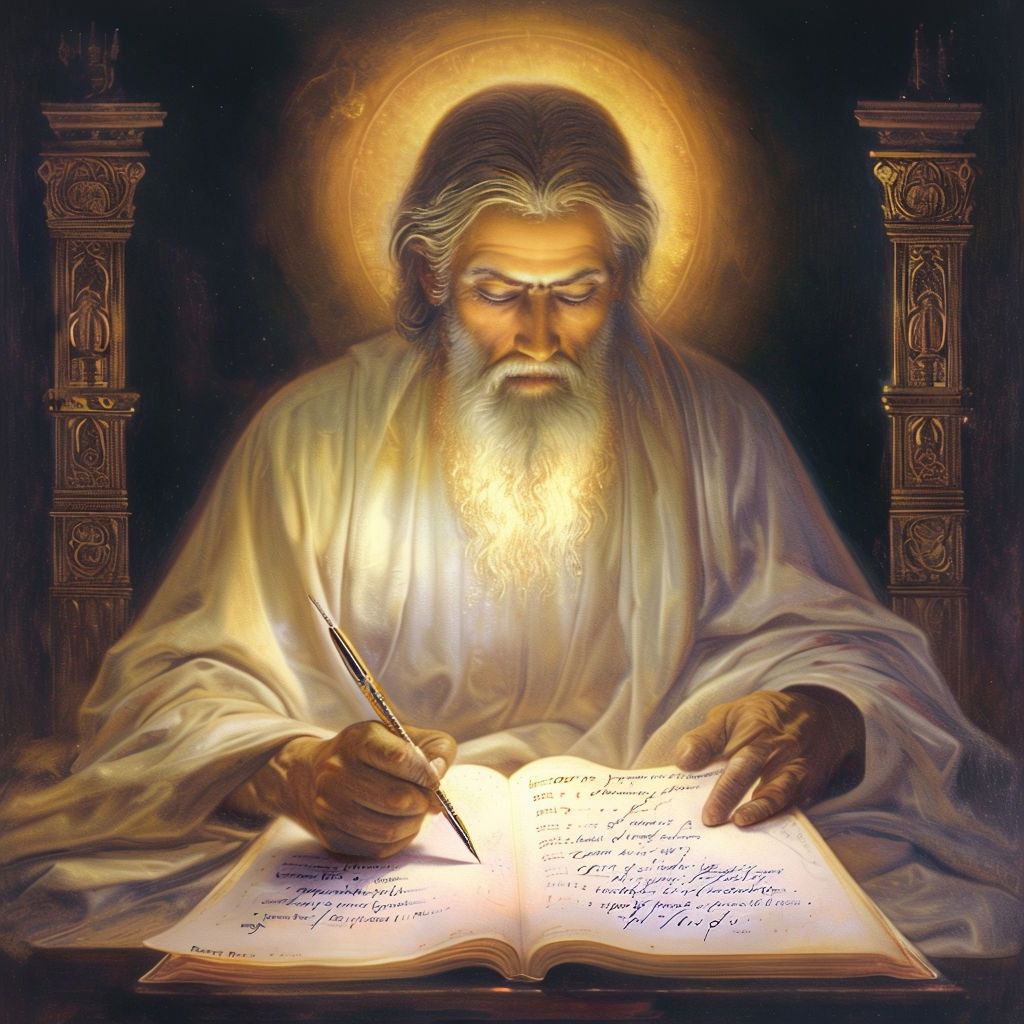
From ancient hymns carved on temple walls to whispered verses beneath star-lit skies, poetry has long been humanity's way of conversing with the cosmos. Across civilizations, poets have reached beyond the mundane to capture something of the divine, attempting to understand existence and our place within it. The language of poetry, filled with metaphor, rhythm, and imagery, becomes a vessel through which humanity explores the mysteries of creation, spirituality, and our enduring connection to something greater.
The Origins of Cosmic Poetry: Egypt and Sumer
One of the earliest known poetic attempts to understand the divine can be traced to ancient Egypt, where the *Pyramid Texts*—inscribed over 4,000 years ago—sought to secure the journey of the pharaohs to the afterlife. These texts were more than religious rituals; they were poetic expressions of human vulnerability in the face of death and the eternal. Egyptian poets used hieroglyphic metaphors to depict the cosmos as an orderly kingdom governed by the gods, where each celestial body moved according to divine laws. By writing of the stars, rivers, and deserts as manifestations of gods, these poets immortalized humanity’s yearning for cosmic order and continuity.
In ancient Sumer, one of humanity’s first recorded poems, *The Epic of Gilgamesh*, similarly contemplates humanity’s place in the universe. Through Gilgamesh’s journey to discover immortality, the poem speaks to universal themes of mortality, friendship, and the divine. Sumerian poets framed existence as a delicate balance between the human and divine worlds, and their work serves as a reminder of poetry’s role in translating existential questions into language.
Eastern Mysticism: India and China
In India, the *Rigveda*—a collection of hymns from around 1500 BCE—offers profound reflections on the cosmos. Its verses attempt to bridge the tangible and intangible realms, depicting the creation of the universe as an act of divine sacrifice. The *Nasadiya Sukta*, or the Hymn of Creation, is especially striking in its philosophical tone, questioning the origin of existence itself: "Who really knows? Who will here proclaim it?" This rhetorical humility and openness reflect the Indian worldview of interconnectedness, a cosmic unity that poetry encapsulates.
Meanwhile, in ancient China, the *I Ching* (Book of Changes) and *Dao De Jing* (The Way and Its Power) inspired a different poetic language. Chinese poets engaged with nature as a divine mirror, capturing the cyclical patterns of the cosmos in delicate, concise verses. By aligning themselves with natural rhythms, poets like Li Bai and Wang Wei found in the stars, rivers, and mountains a sense of cosmic flow, where humanity’s role was to move harmoniously within it. This approach reflects the Daoist belief in oneness with the Tao, the great principle that connects all things.
In India, the poetic tradition of the Vedas and epics such as the Mahabharata and Ramayana demonstrate a profound understanding of the human condition. The Vedic hymns celebrate the mysteries of existence, blending spirituality with poetry to explore the cosmic order. Later, the Bhagavad Gita, set within the Mahabharata, delves into ethical dilemmas and the nature of duty, reflecting a universal struggle between personal desires and social responsibility. Through these texts, Indian poets articulate themes of love, conflict, and transcendence that continue to resonate with people across cultures and ages.
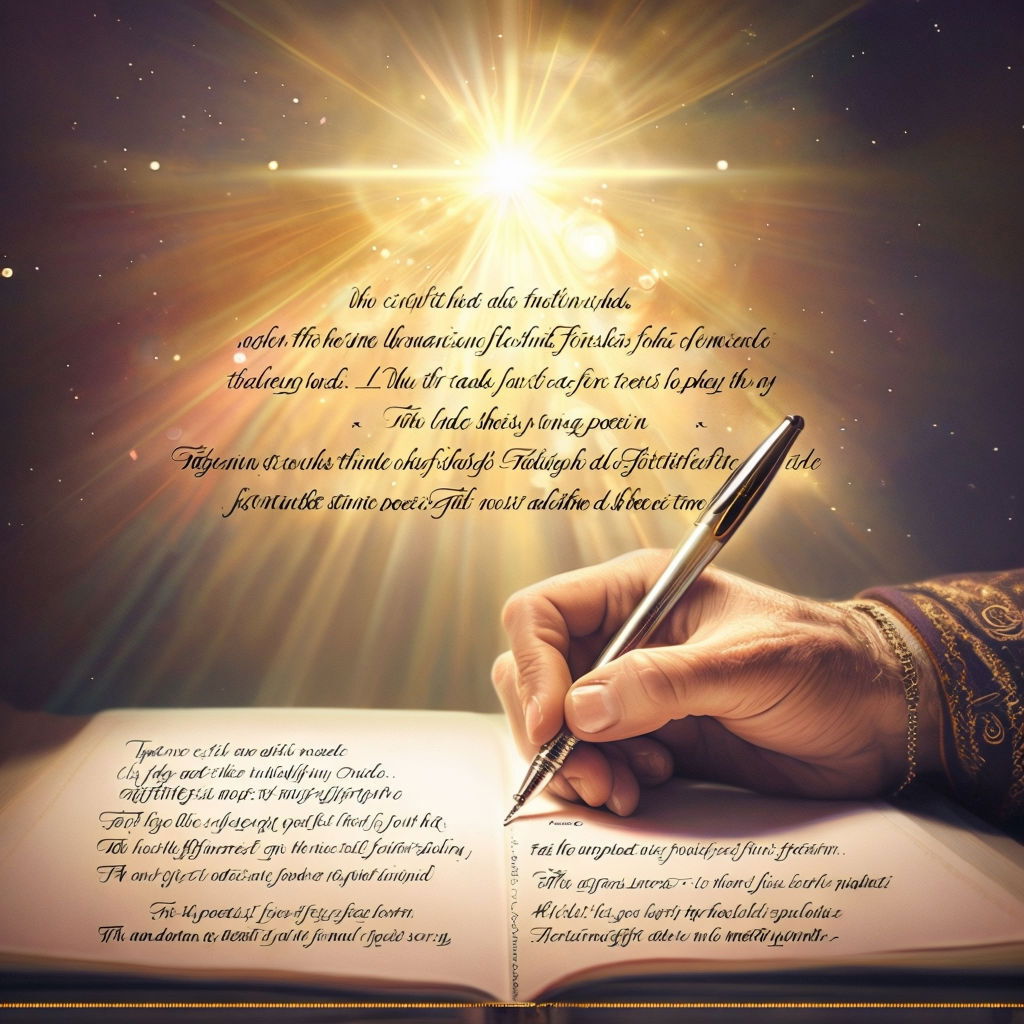
Chinese poetry, particularly during the Tang Dynasty, offers another lens into the collective human experience. Poets like Li Bai and Du Fu wrote about nature, friendship, and solitude, blending personal reflection with universal themes. Their poems evoke an intimate relationship with the natural world, capturing fleeting moments of beauty that resonate with anyone who has felt the passage of time. The simplicity and elegance of their language belie the depth of insight, revealing a shared human capacity for awe and appreciation of life’s ephemeral nature.
Greek and Roman Visions: Cosmic Order and Tragic Insight
In ancient Greece, the works of poets such as Homer and Hesiod offer a lens into a world where gods and mortals exist in close interaction. The Greeks envisioned the cosmos as a divinely ordered realm governed by powerful, capricious gods, and poetry became a way to explore humanity’s vulnerability within this framework. The *Iliad* and *Odyssey* not only narrate epic adventures but also touch upon the limitations of human knowledge and the inevitability of fate—a theme that later philosophers like Socrates would elaborate on. Greek poetry thus serves as a reminder of humanity's limitations, yet also celebrates our capacity to endure.
Roman poets, particularly Lucretius in his work *De Rerum Natura* (On the Nature of Things), took a different approach, blending Epicurean philosophy with poetic verse. Lucretius sought to explain the cosmos through reason, arguing that all things are made of atoms moving in a void, yet his language retained a reverence for the universe’s complexity. His poetic descriptions of cosmic phenomena reflect a desire to understand the universe without diminishing its majesty.
The Mystical Middle Ages: Sufi Poets and Christian Mystics

In the medieval period, mystical poets in both Islamic and Christian traditions found new ways to articulate the divine. Sufi poets like Rumi and Hafez sought transcendence through ecstatic verse, dissolving the boundary between self and cosmos in their quest for unity with the Divine. Rumi’s poetry often speaks of the soul as a divine spark longing to reunite with the cosmic flame, while Hafez’s verses celebrate the beauty of creation as a manifestation of divine love. This blending of personal and cosmic love emphasizes a spirituality where poetry becomes a journey toward the divine.
Christian mystics, too, found in poetry a way to communicate their encounters with God. St. John of the Cross, in his *Dark Night of the Soul*, uses the metaphor of darkness to convey the soul’s path toward enlightenment. By embracing the paradoxes of light and darkness, absence and presence, he expresses the complexities of spiritual union, where poetry serves as both expression and prayer.
The Indigenous Voice: The Americas
The oral traditions of Native American tribes, for example, are filled with poetry that celebrates the natural world and humanity’s place within it. These poems and songs, often passed down through generations, express themes of survival, gratitude, and reverence for nature. They remind us of humanity’s profound connection to the earth and the importance of harmony between people and the environment—a theme that has found renewed relevance in today’s world.
The Renaissance and Enlightenment: A New Vison of Humanity
During the Renaissance, European poets began to explore the individual’s place within a rapidly changing world. Shakespeare’s sonnets, for instance, delve into themes of love, beauty, and mortality, expressing the complexities of human emotion with profound insight. His exploration of the human psyche, with all its contradictions and desires, speaks to a universal experience that resonates across time and place.
The Enlightenment brought a different perspective, as poets like Alexander Pope examined humanity’s limitations and potential. In An Essay on Man, Pope explores humanity’s role within the larger cosmic order, blending philosophical reflection with poetic elegance. His verses reflect a growing awareness of humanity’s responsibility and agency within the natural world, a theme that continues to inspire readers in our own era.
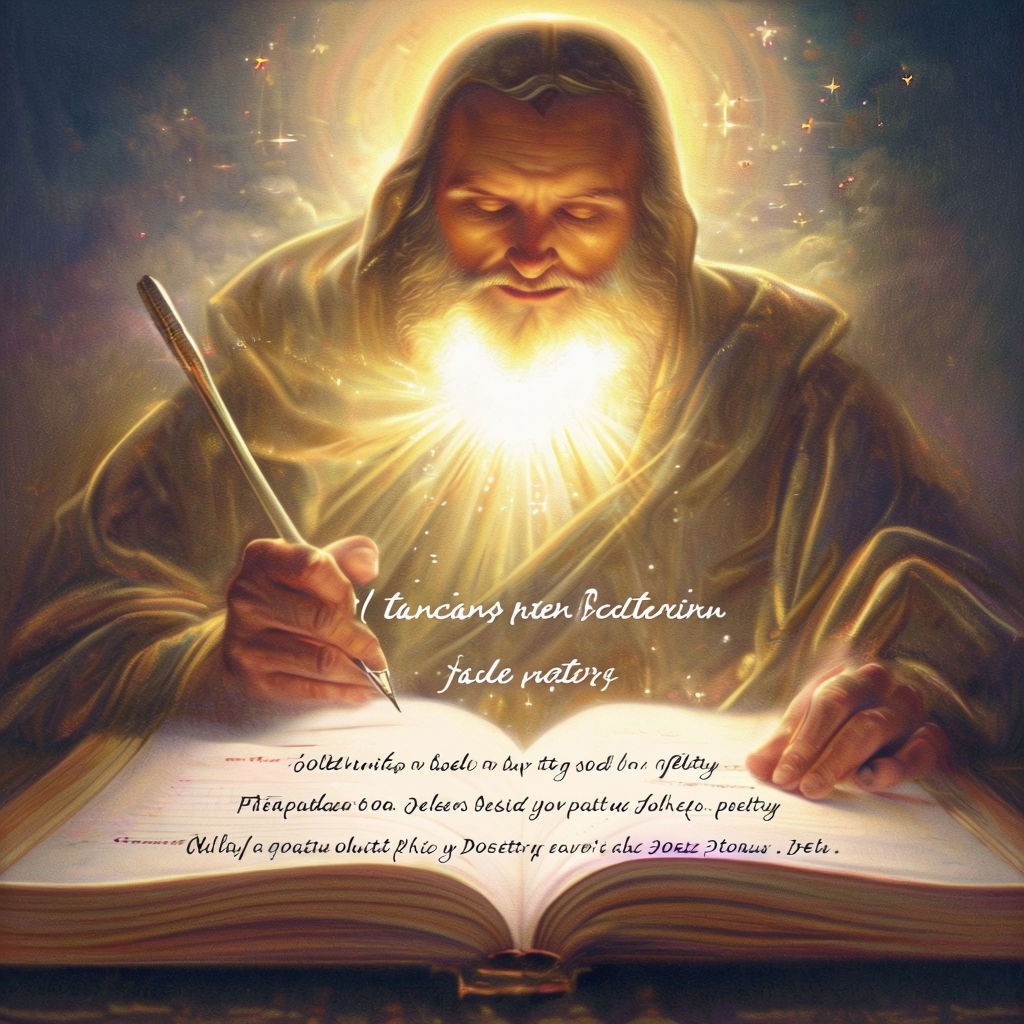
The Enlightenment and the Romantic Cosmos
In the 18th and 19th centuries, Enlightenment and Romantic poets revisited the cosmos with new fervor. Romantic poets, such as William Blake and William Wordsworth, reacted against the mechanistic worldview of the Enlightenment by reimagining the universe as a living, breathing entity. Blake’s poetry often speaks of the divine in nature, while Wordsworth finds “a sense sublime” in the natural world that reveals “something far more deeply interfused.”
For the Romantics, poetry became a way to reclaim the cosmos from the reductionist view, to see the universe as imbued with mystery and divinity. By using the language of awe and reverence, they connected the human spirit with the sublime, reflecting an intrinsic yearning for cosmic belonging.
Poetry and the Divine in Modernity
In modern times, poets continue this dialogue, often grappling with the existential disillusionment of a world that seems increasingly detached from cosmic purpose. T.S. Eliot, in *The Waste Land*, speaks to the disintegration of a once-ordered universe, capturing the modern experience of spiritual desolation. Yet, poets like Pablo Neruda and Mary Oliver return to nature as a source of divine connection, finding in the simple beauty of earthly life a reminder of humanity’s place within a larger cosmic web.
Neruda’s *Elemental Odes* speak to the beauty of everyday objects as revelations of the divine, while Oliver’s nature poetry invites readers to find sacredness in the ordinary world. In this way, modern poetry retains the ancient impulse to connect with the cosmos, to make sense of life’s mysteries through the sacred language of verse.
Conclusion: Poetry as a Universal Bridge to the Divine
Through every epoch and culture, poetry has provided humanity with a language to speak to the cosmos. Whether through hymns, metaphysical musings, or nature-inspired verses, poets have continuously sought to understand humanity’s connection to the divine. This enduring poetic tradition reminds us that, even as our understanding of the cosmos evolves, our need to find meaning within it remains constant. Poetry, in all its forms, will always be humanity’s way of reaching toward the infinite, of expressing the unutterable mysteries of existence, and of affirming our place in the vastness of the universe.
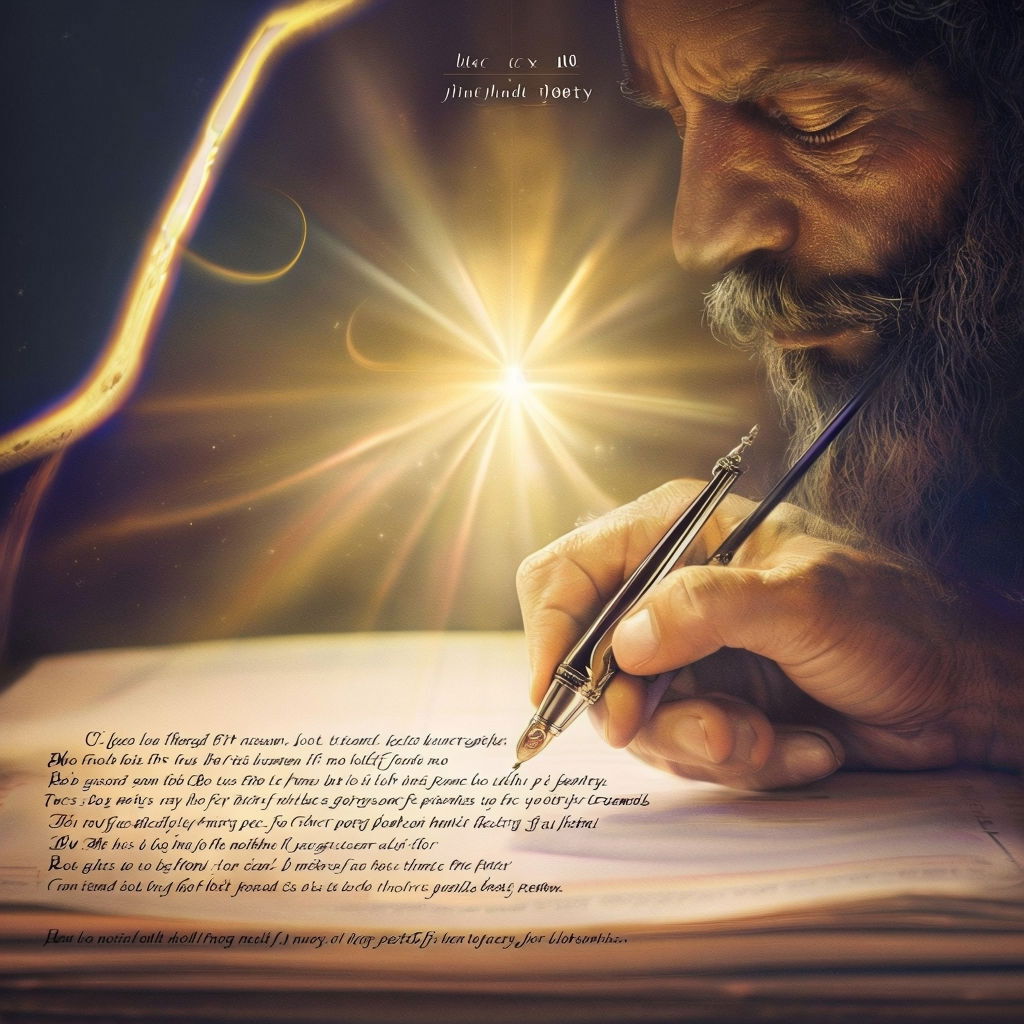
--
BOOGIE DOWN PRODUCTIONS - LOVE'S GONNA GET'CHA
KRS-ONE SONG Released: 1990
KRS-ONE vid namn Lawrence Christhopher Parker, född 20 augusti 1968 i Brooklyn New York. Han har verkligen betonat det spirituella som typ ingen annan rappare har.
A MASTER OF STORY TELLING! Life and Literature handlar trots allt om story-telling!
KRS-ONE yttrar sig i lite maximer till seeds;
‘The way of Hip Hop is always self-creation, with faith and will you can change your situtation’
‘Only you can take care of you. Stop asking others to do what you can do’
‘Hiphoppas rise in health and wealth - when hiphoppas mature to a knowledge of self’
‘The best way to create and maintatin wealth - is to simultaneously create and maintain self ‘
‘Destruction begins when you doubt yourself, doubt your health, and doubt your wealth’
‘Be careful that the highest ideas of your self - aren’t just the opinions of everyone else’
‘In life there is only one true oppresor, it’s the mind of the person that feels like he is lesser’.
krs one - take it to god
THE TEACHER SPIRITUAL MINDED
contact me
- Lund, Skåne County, Sweden
